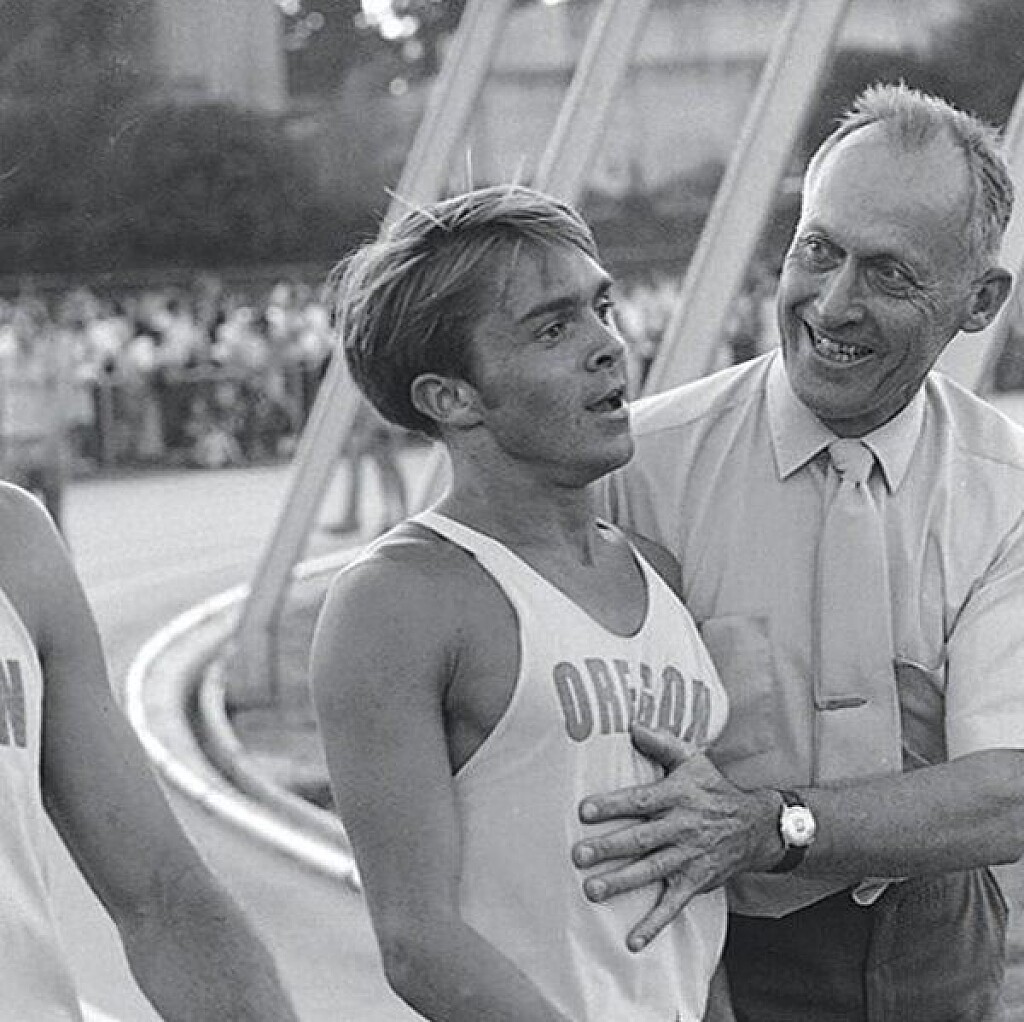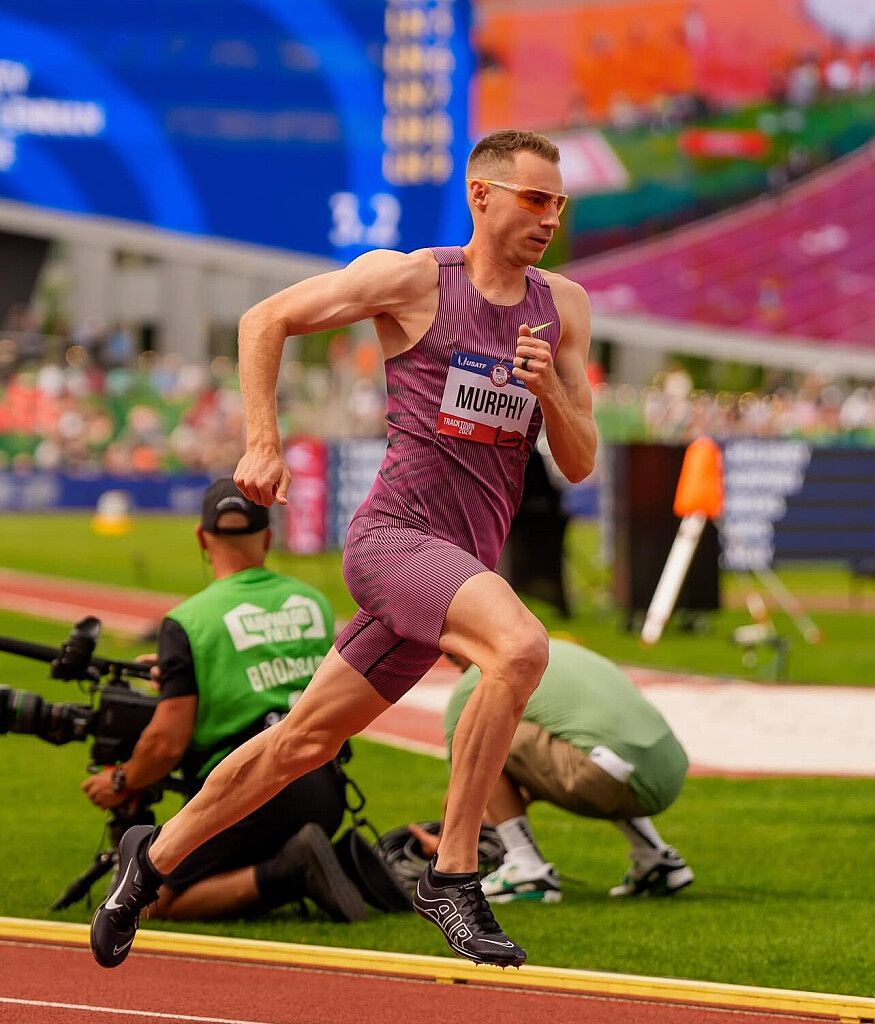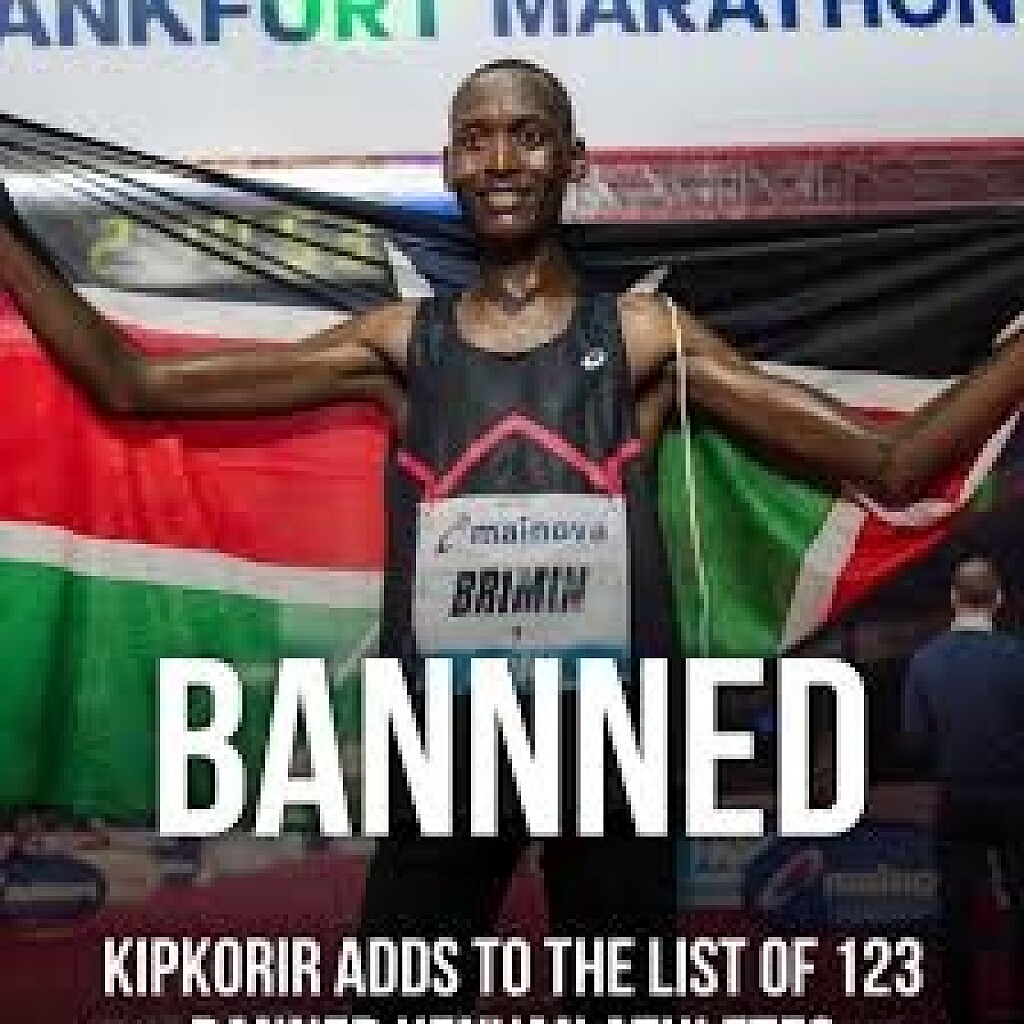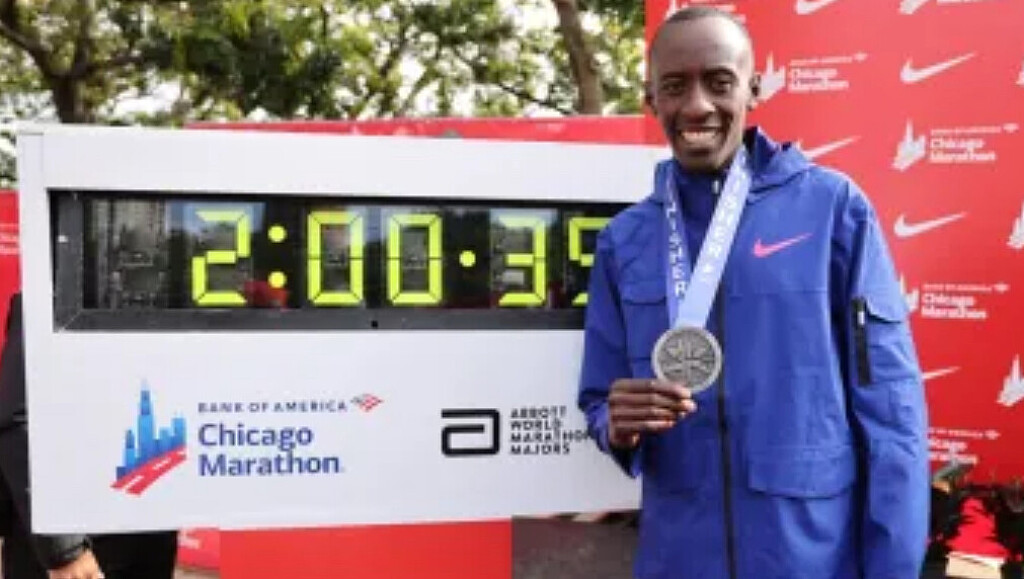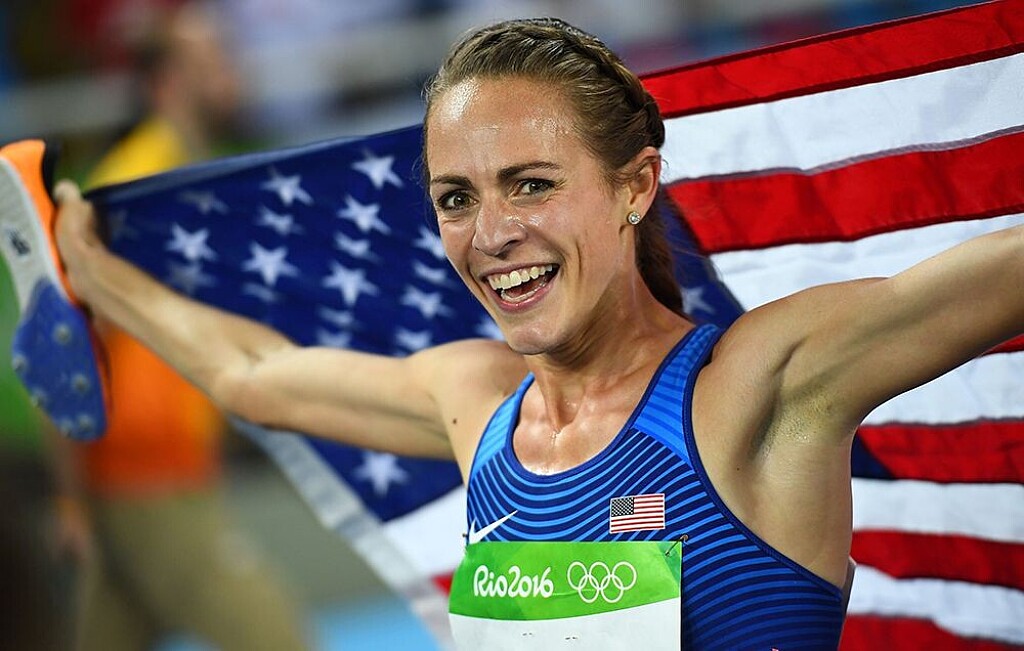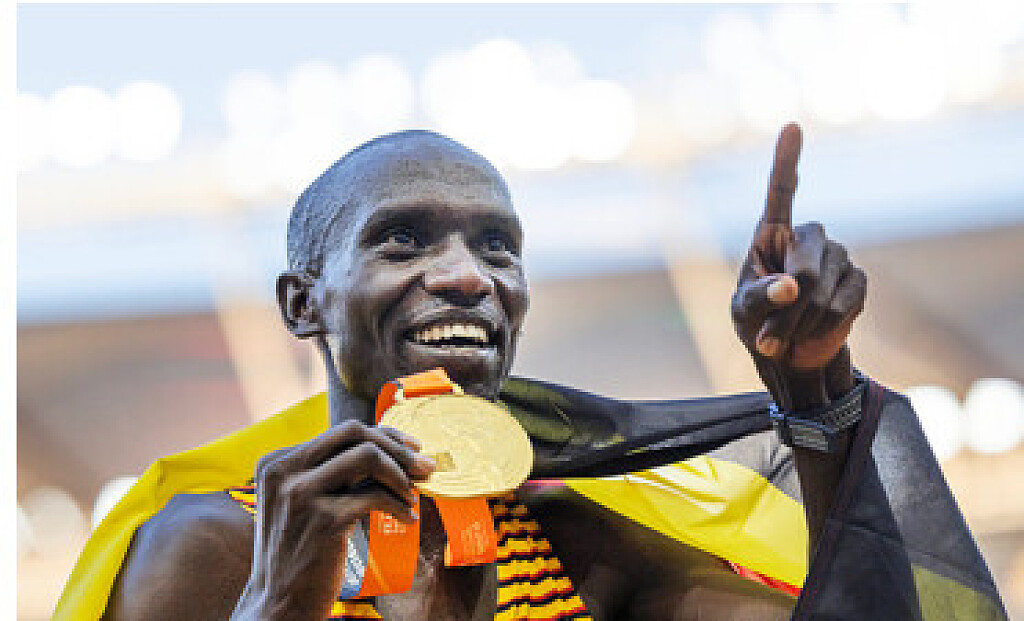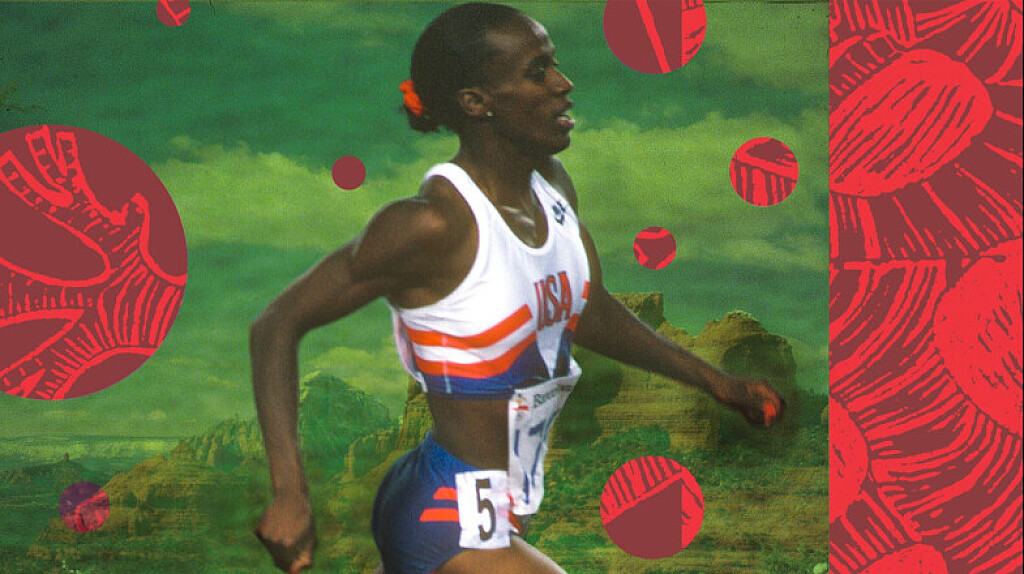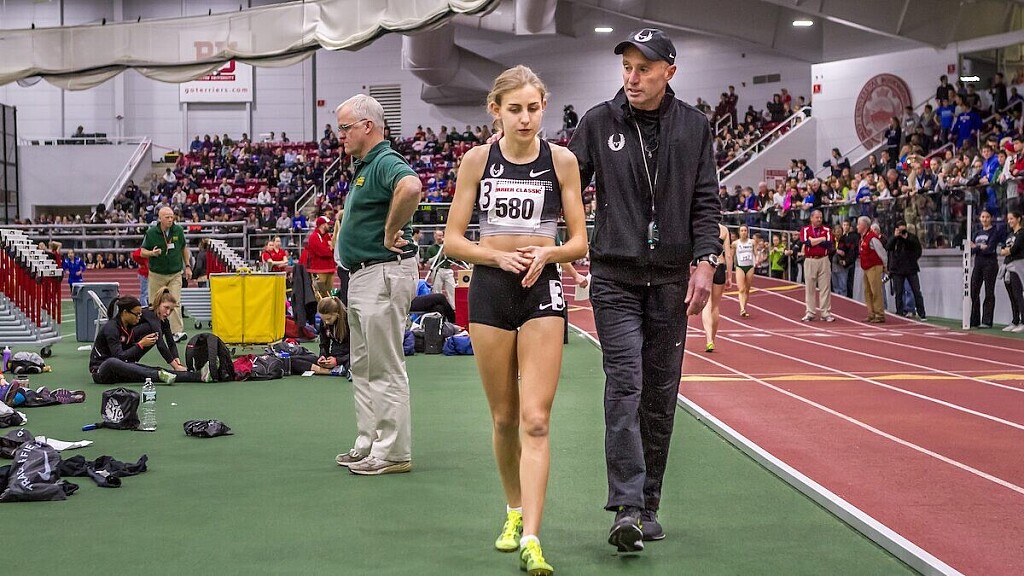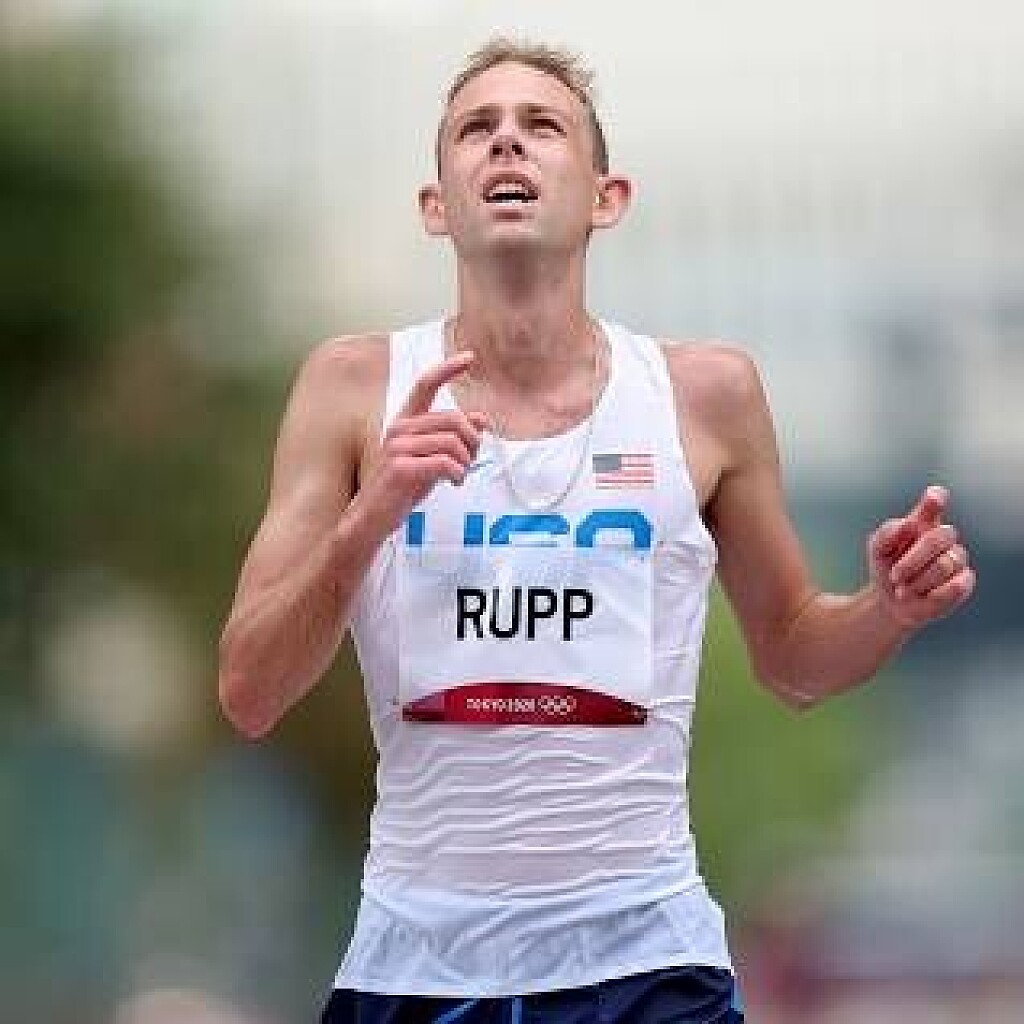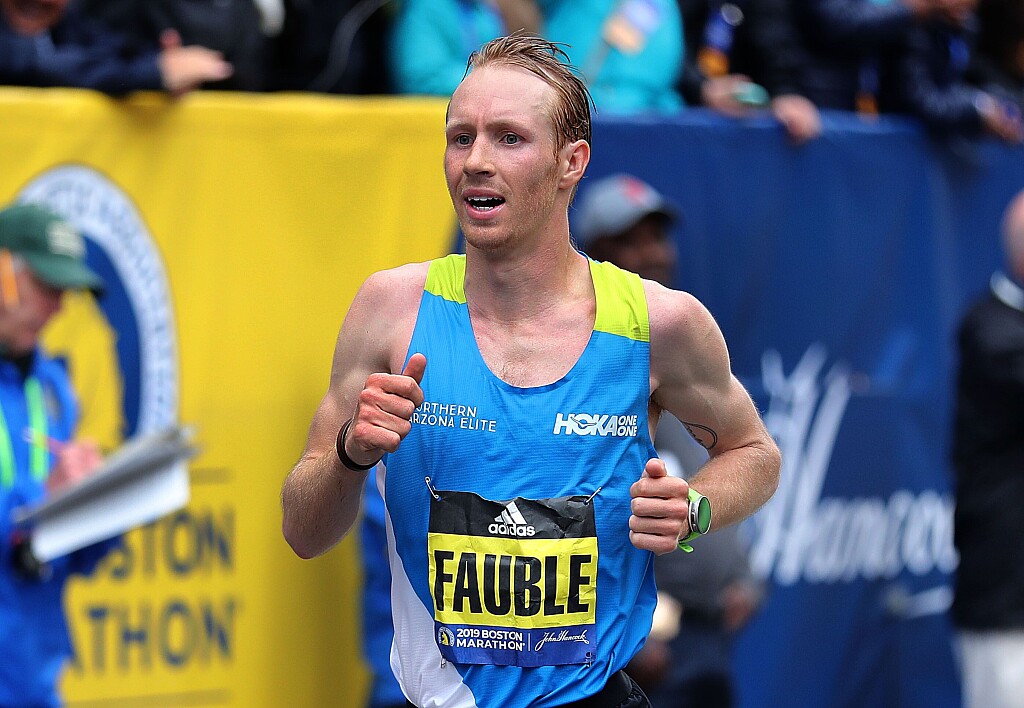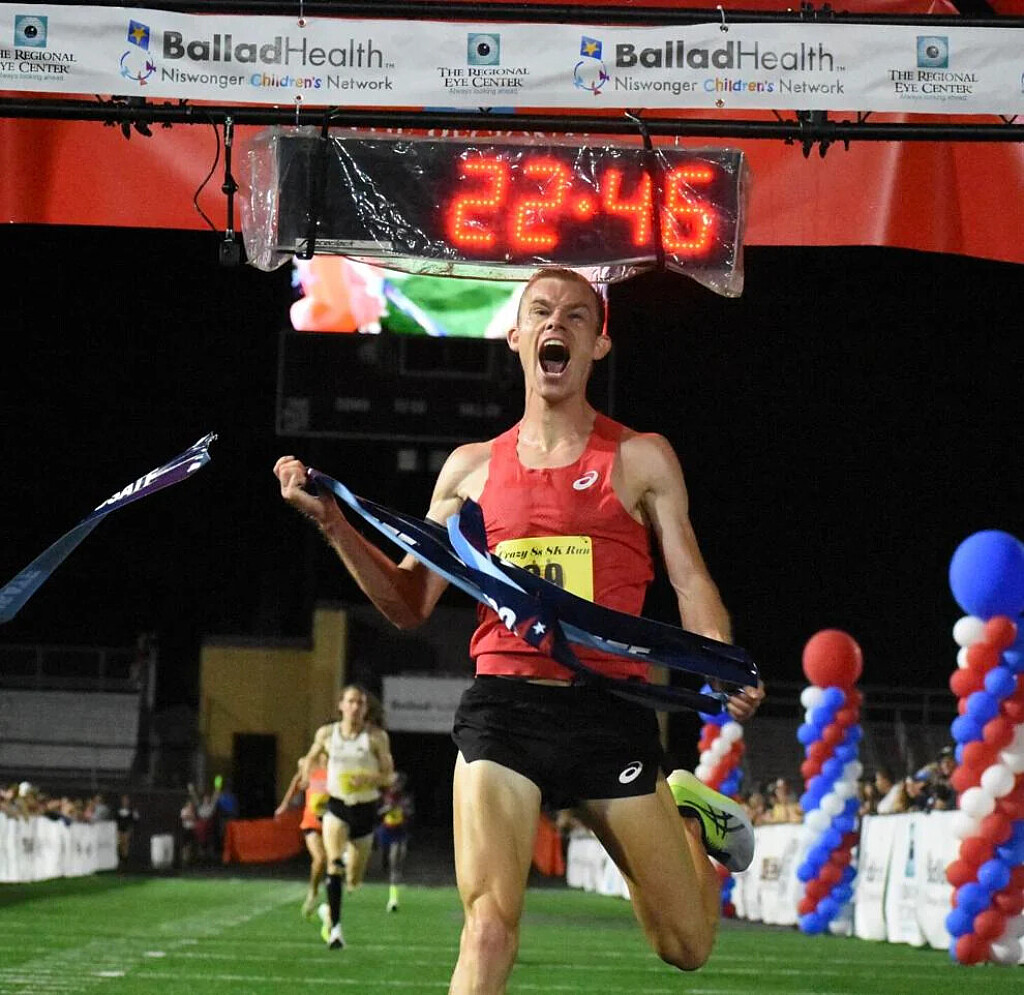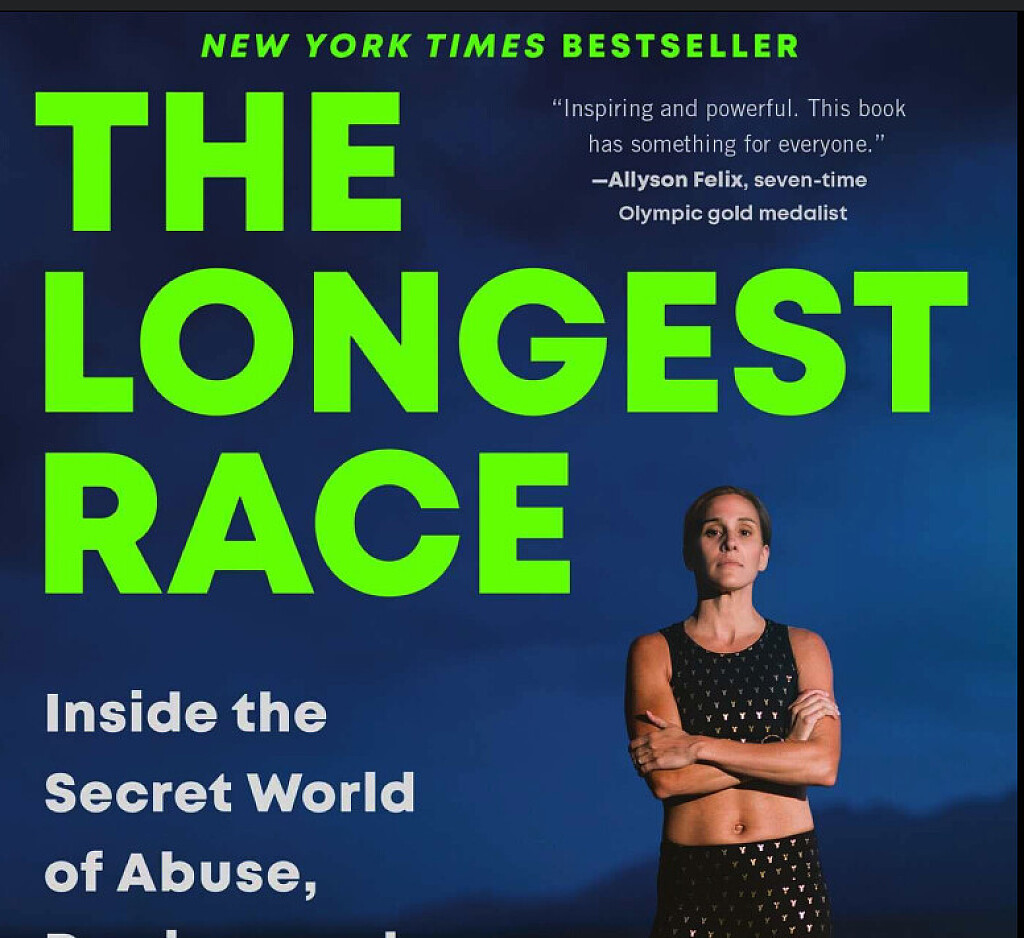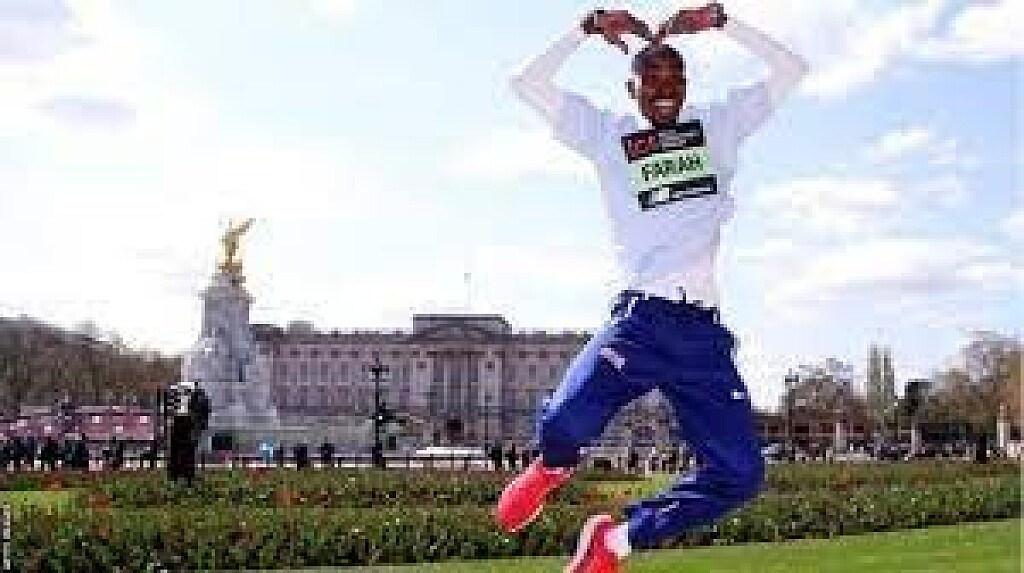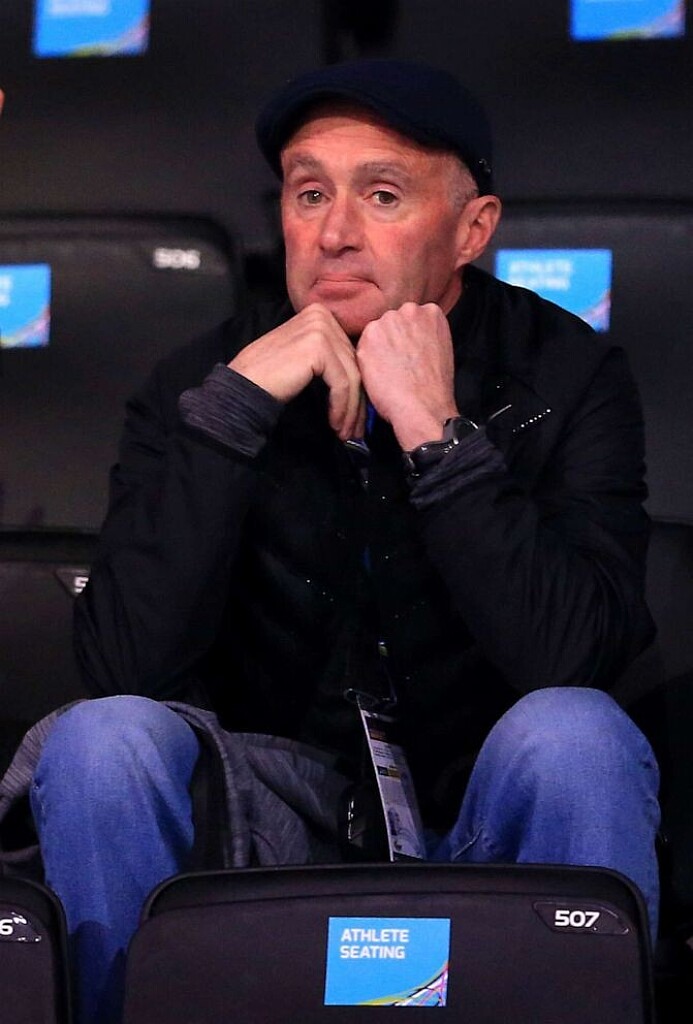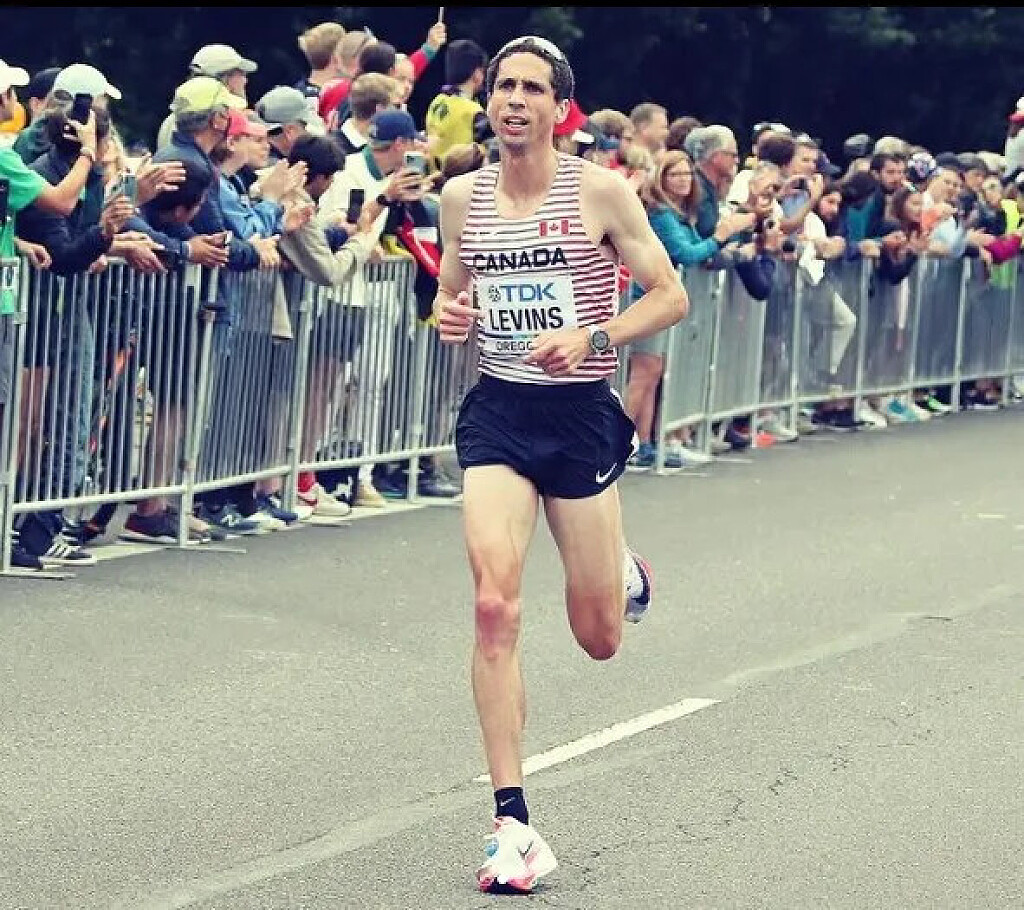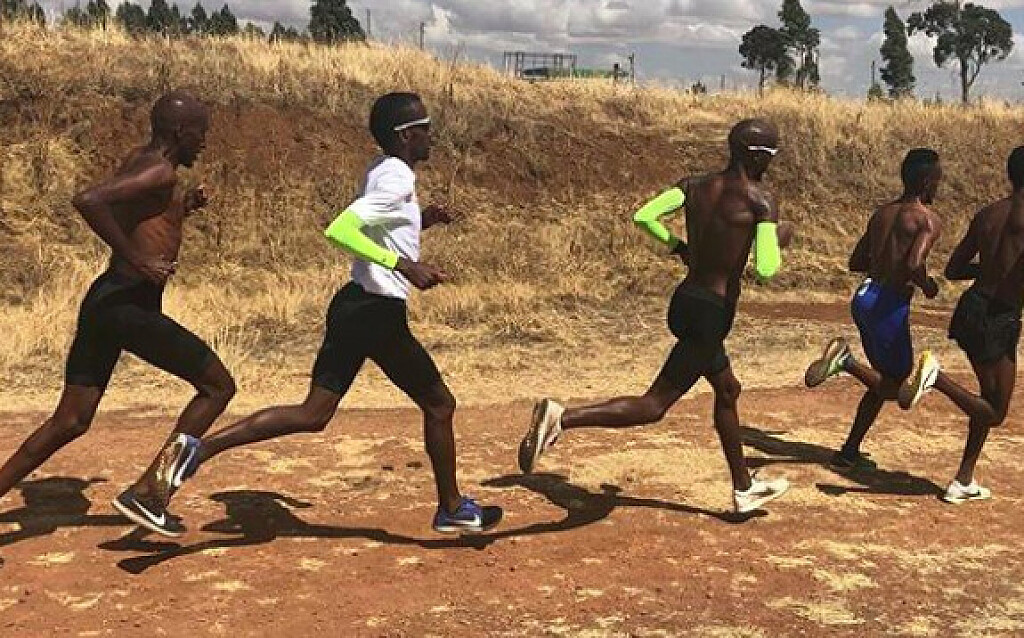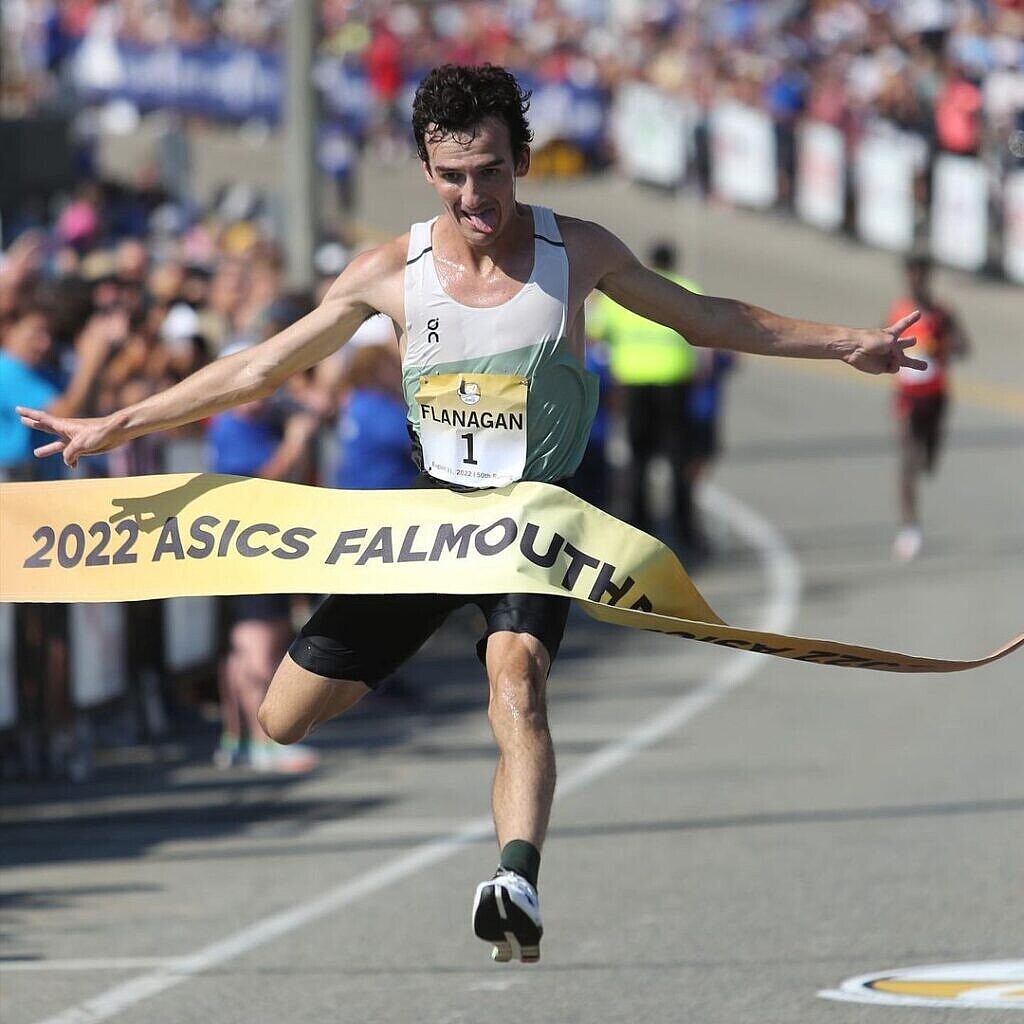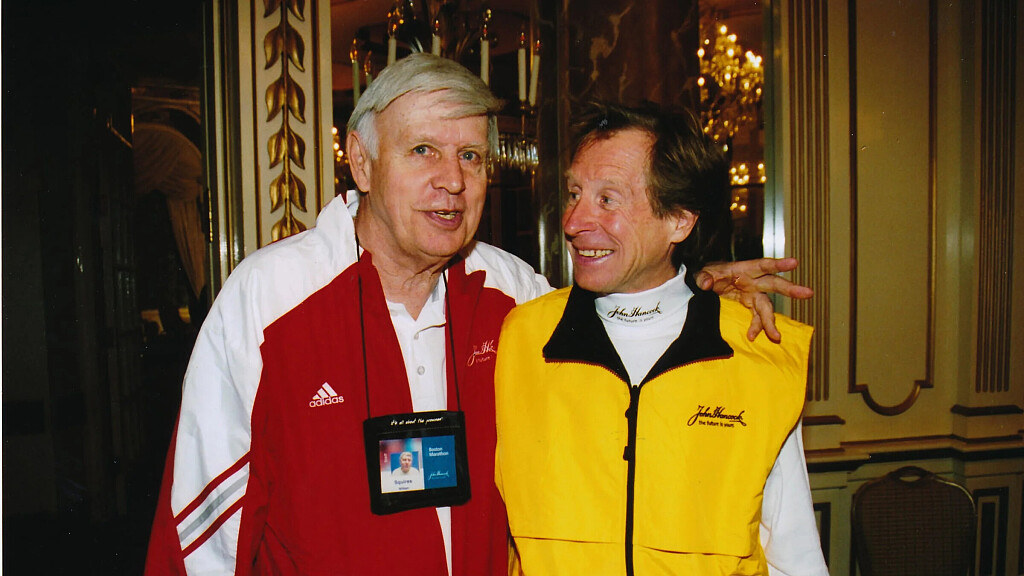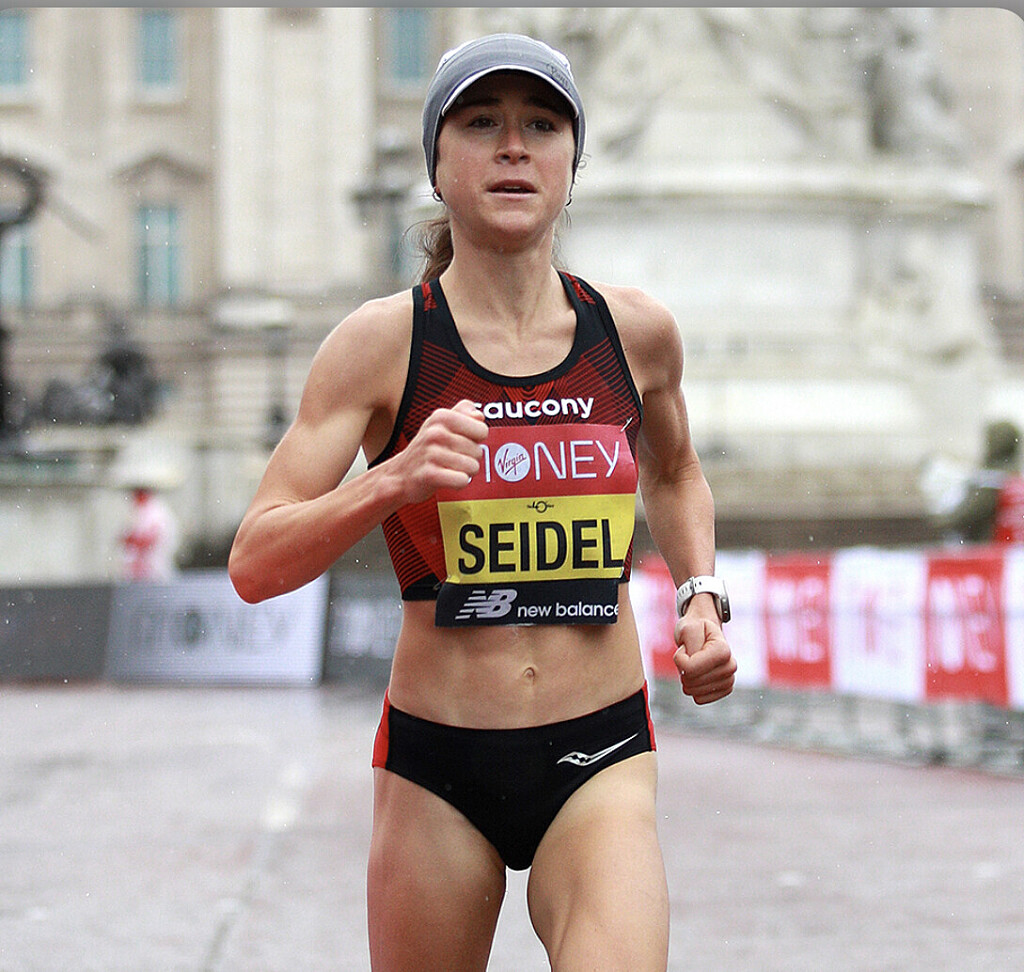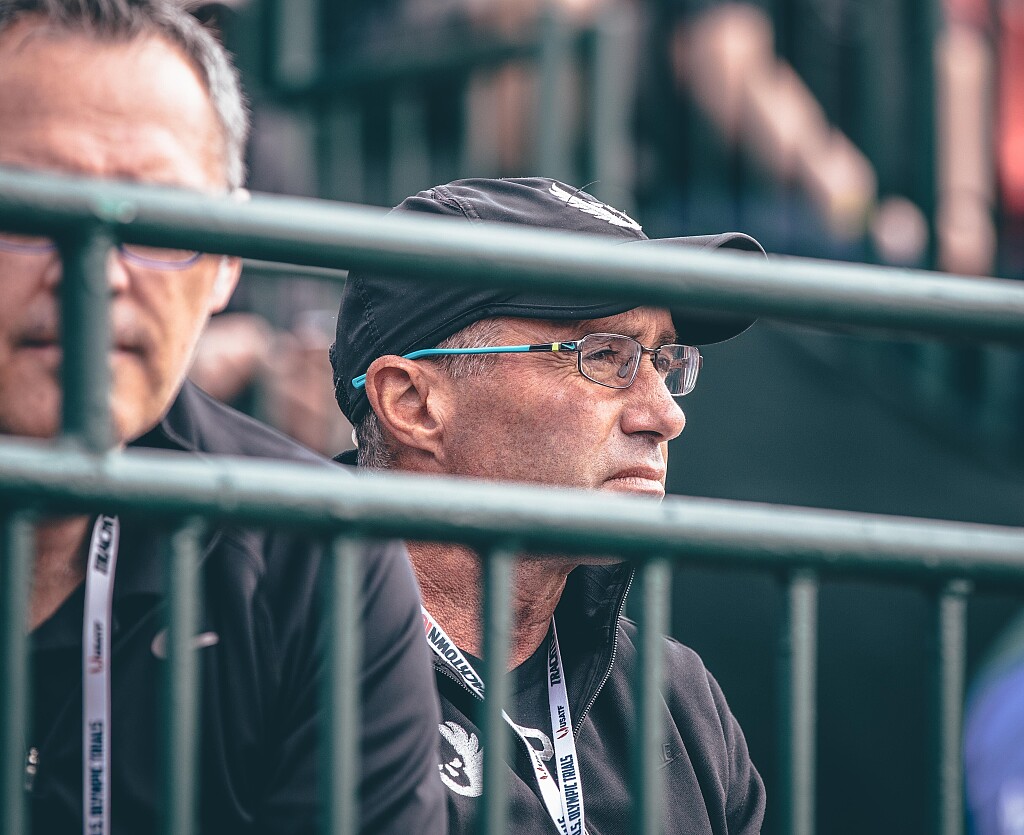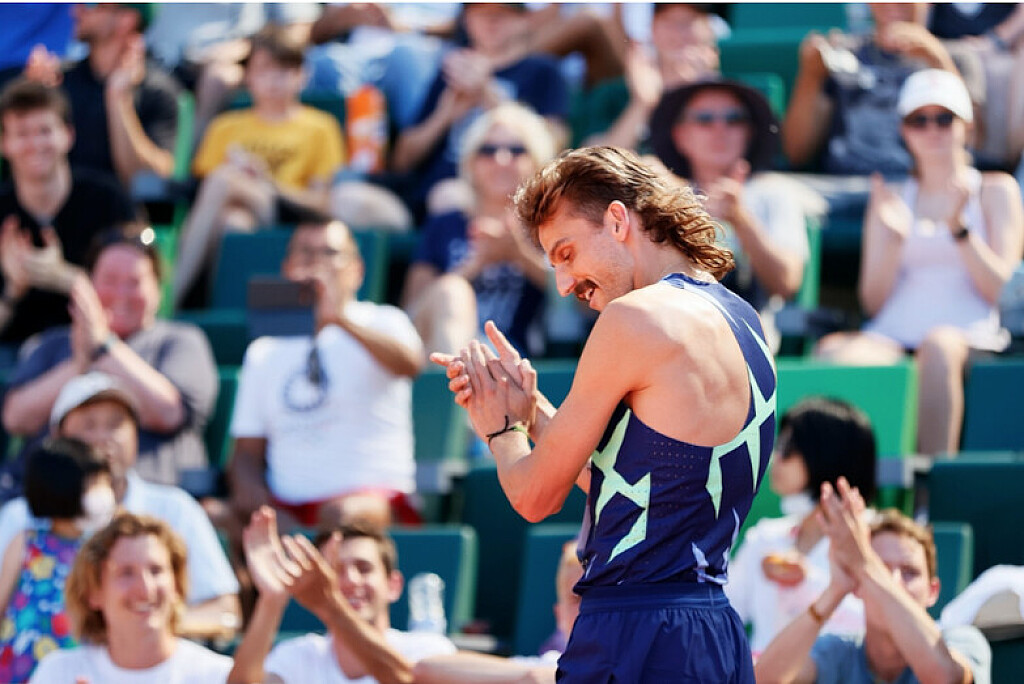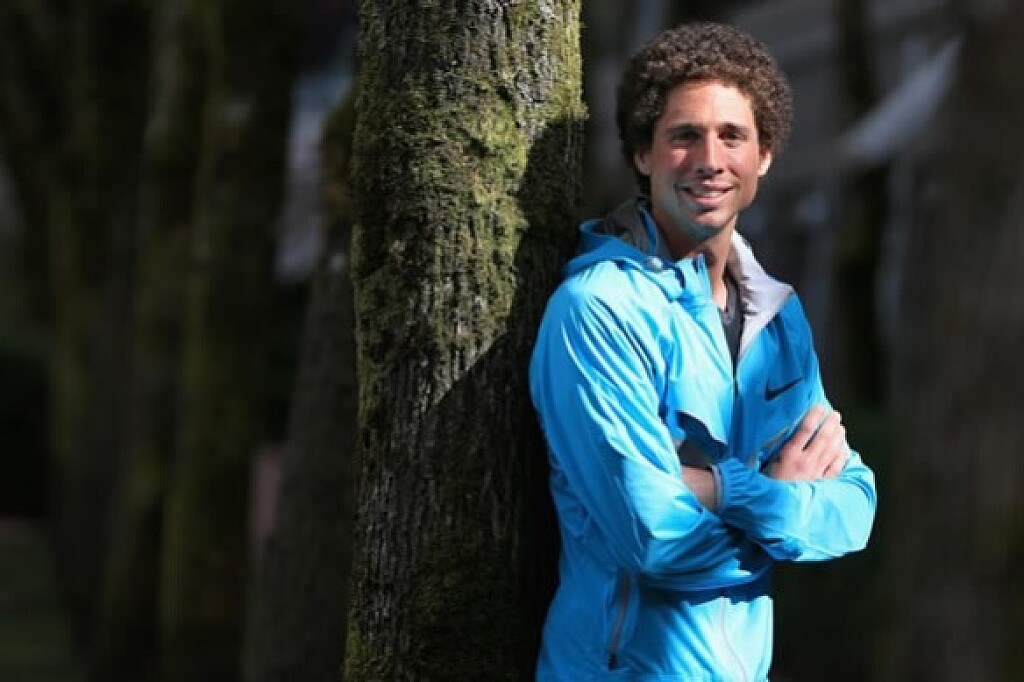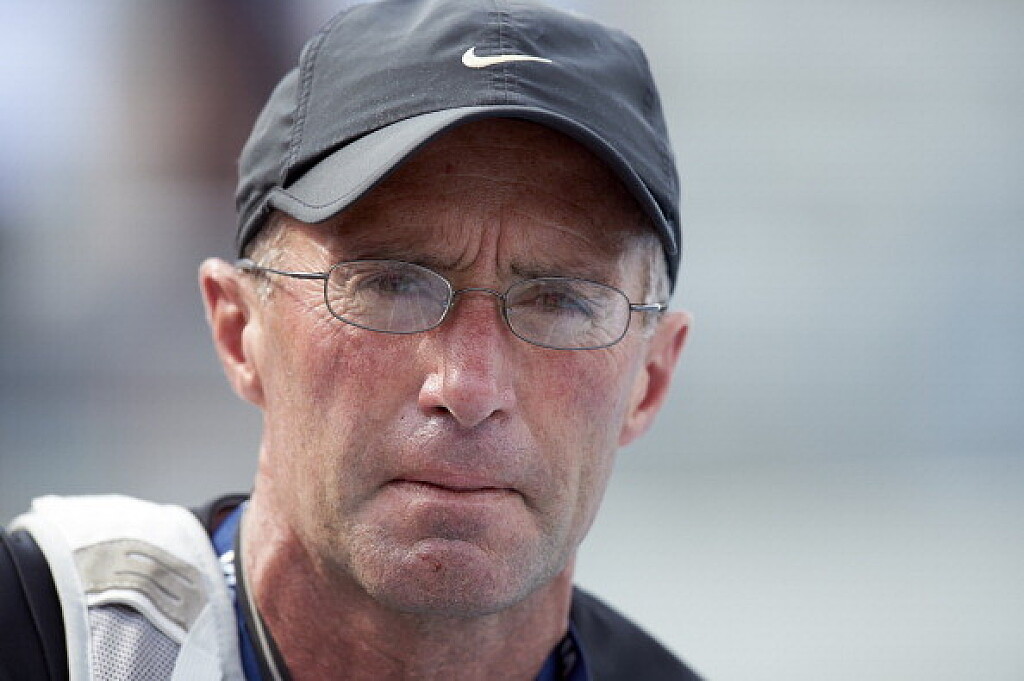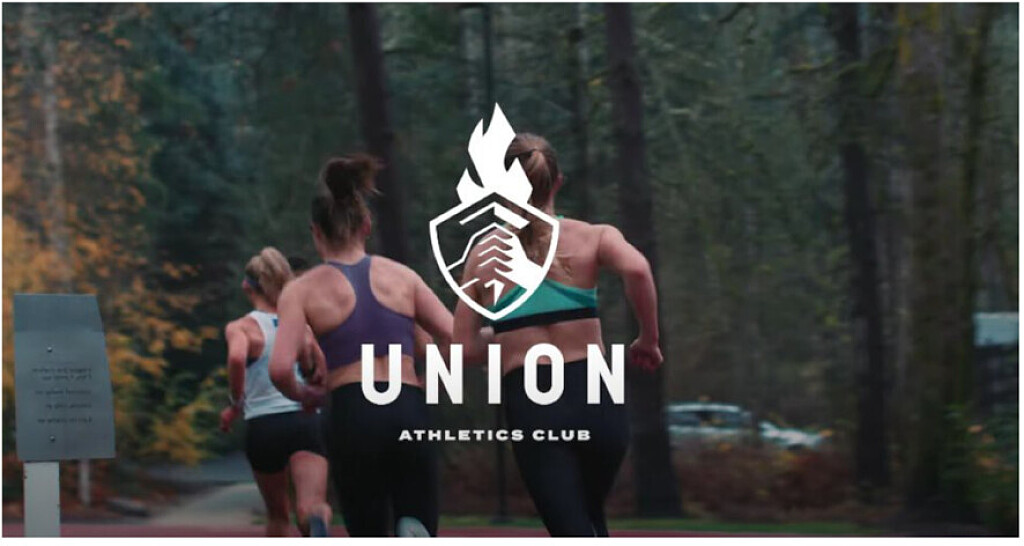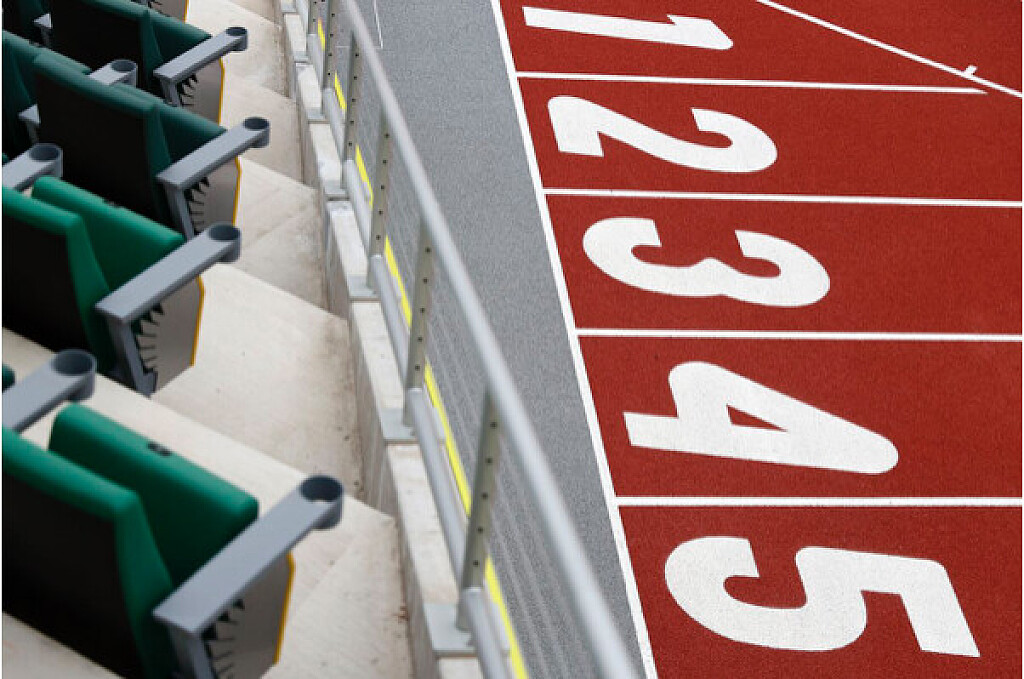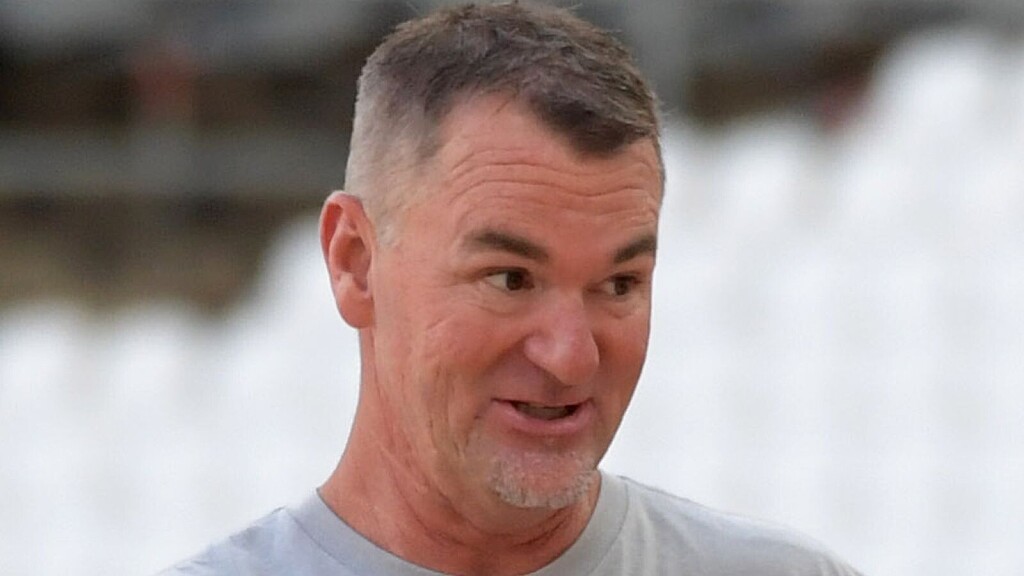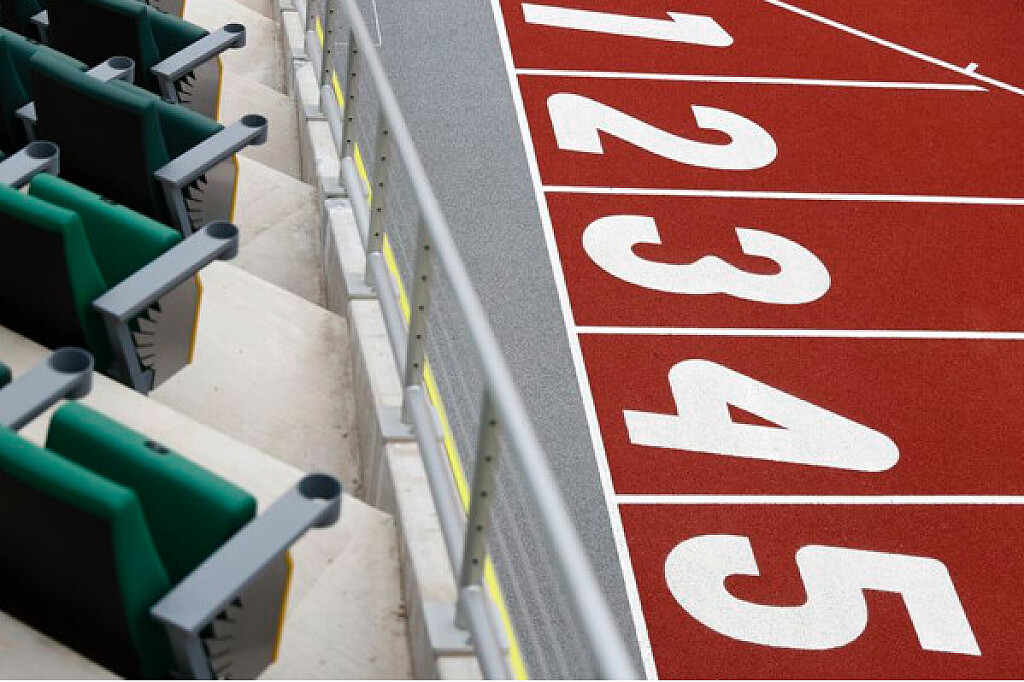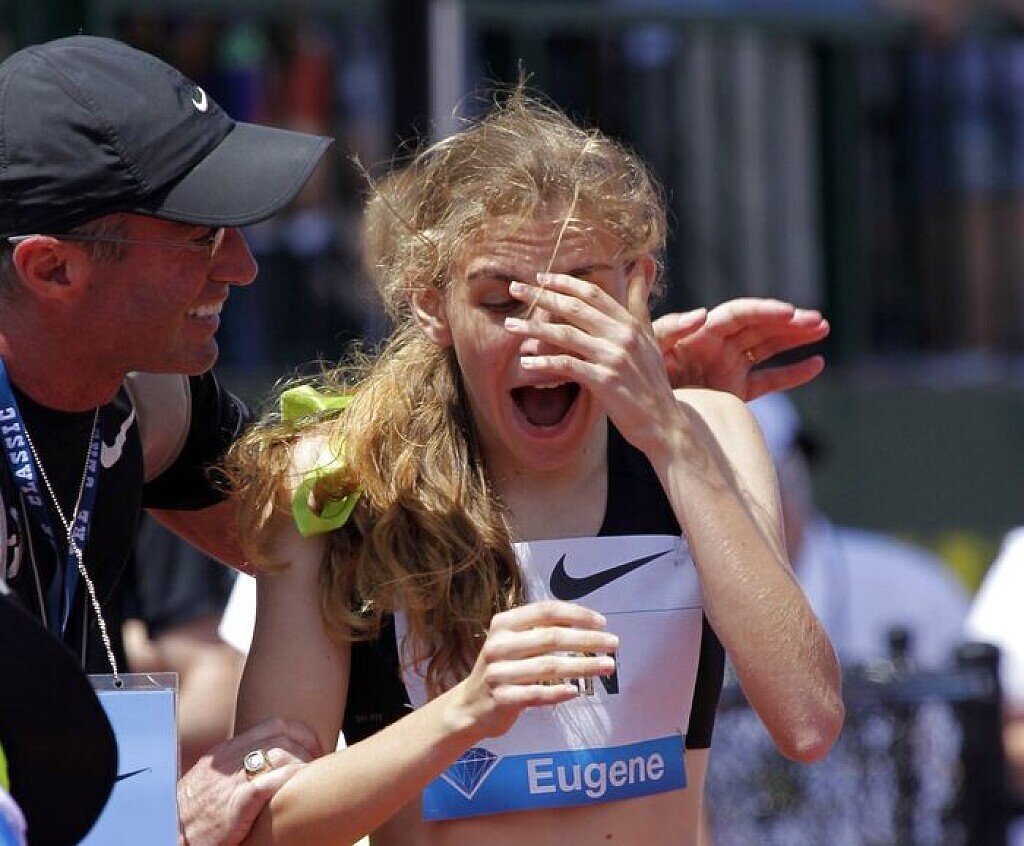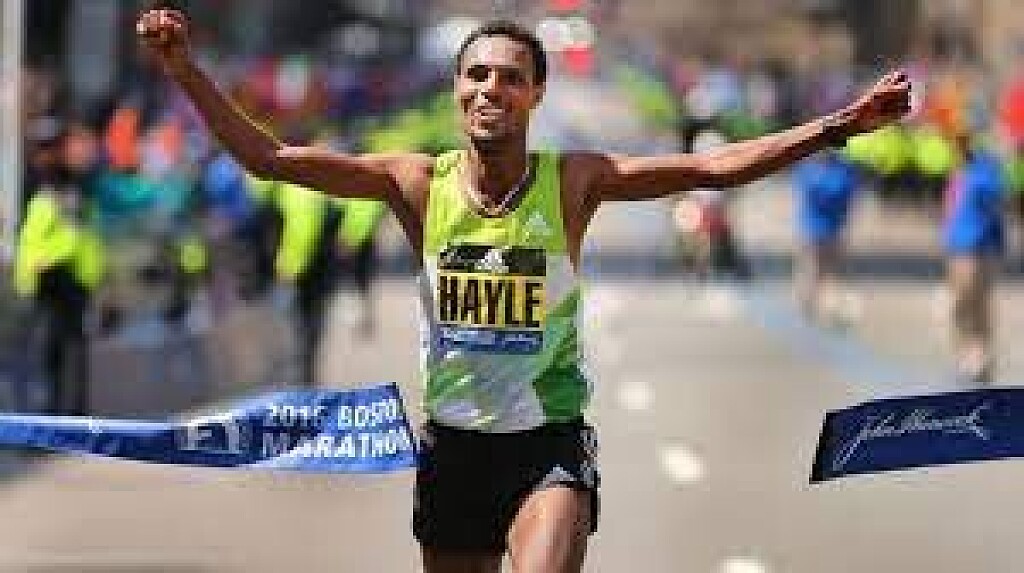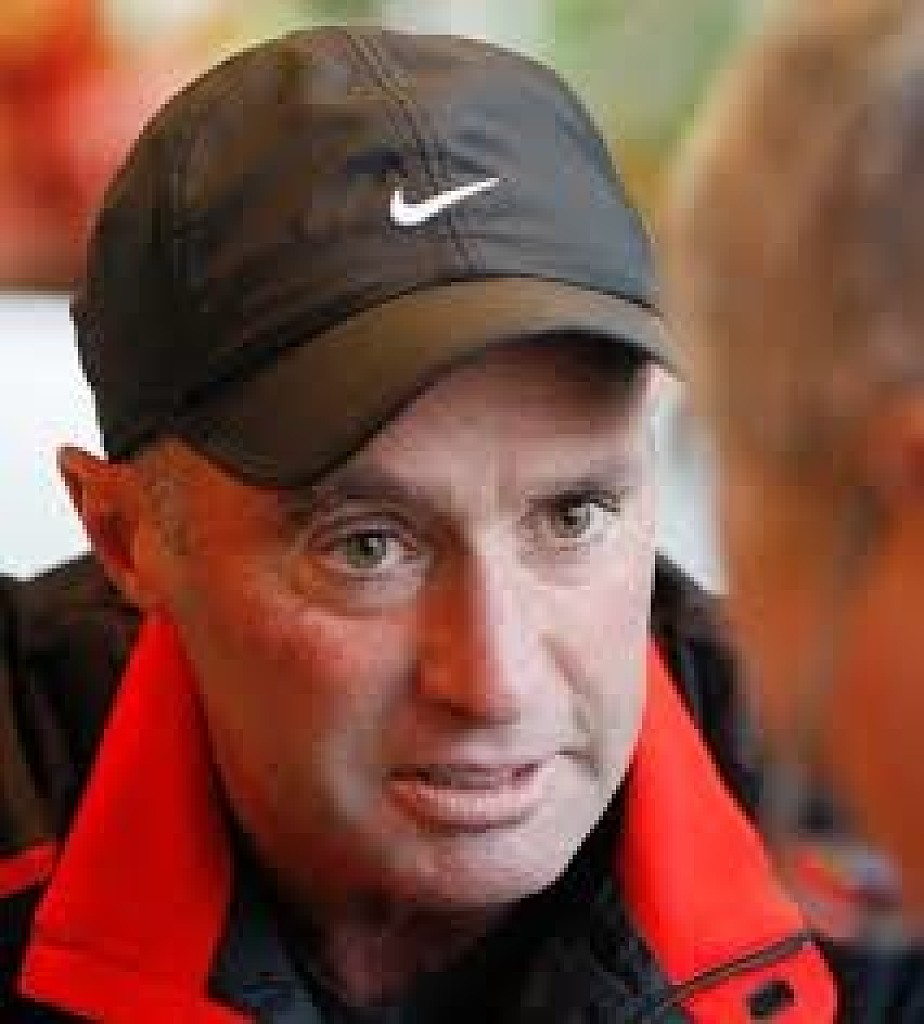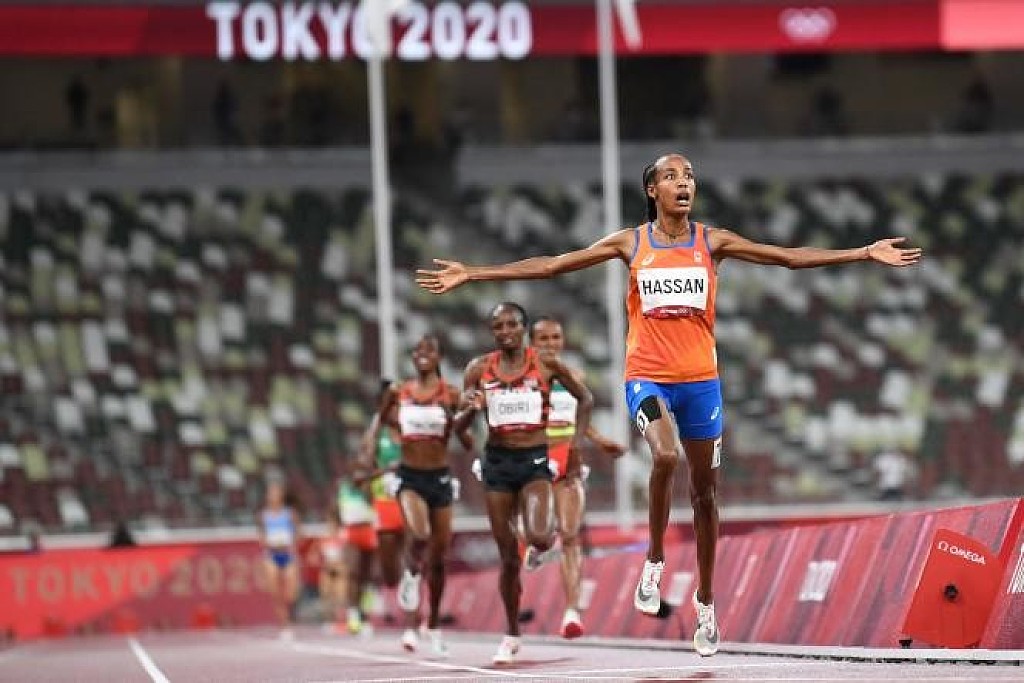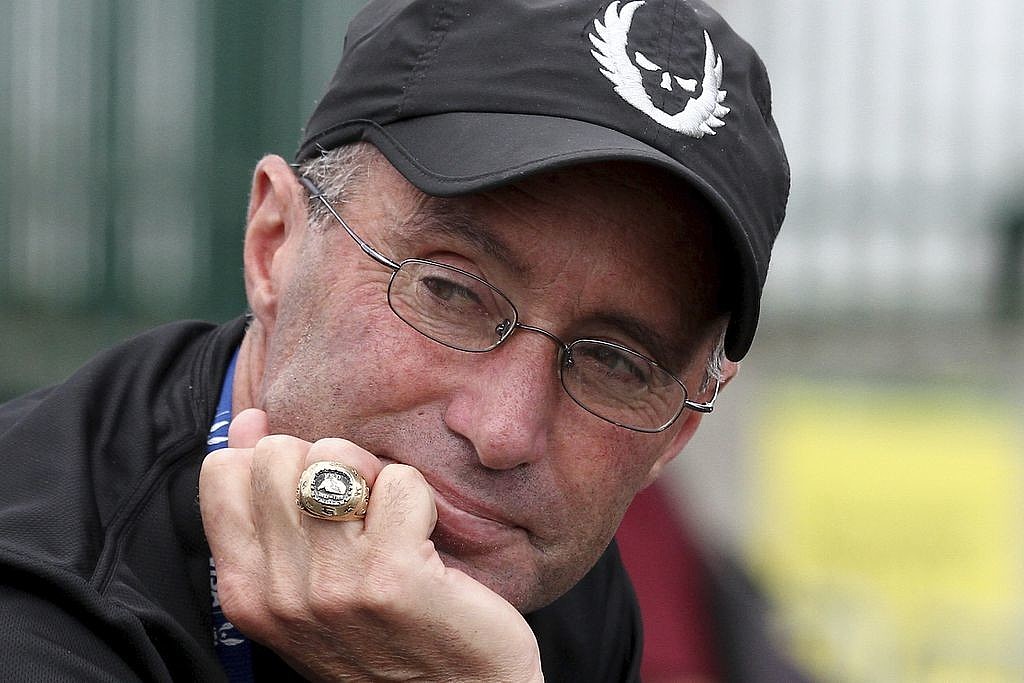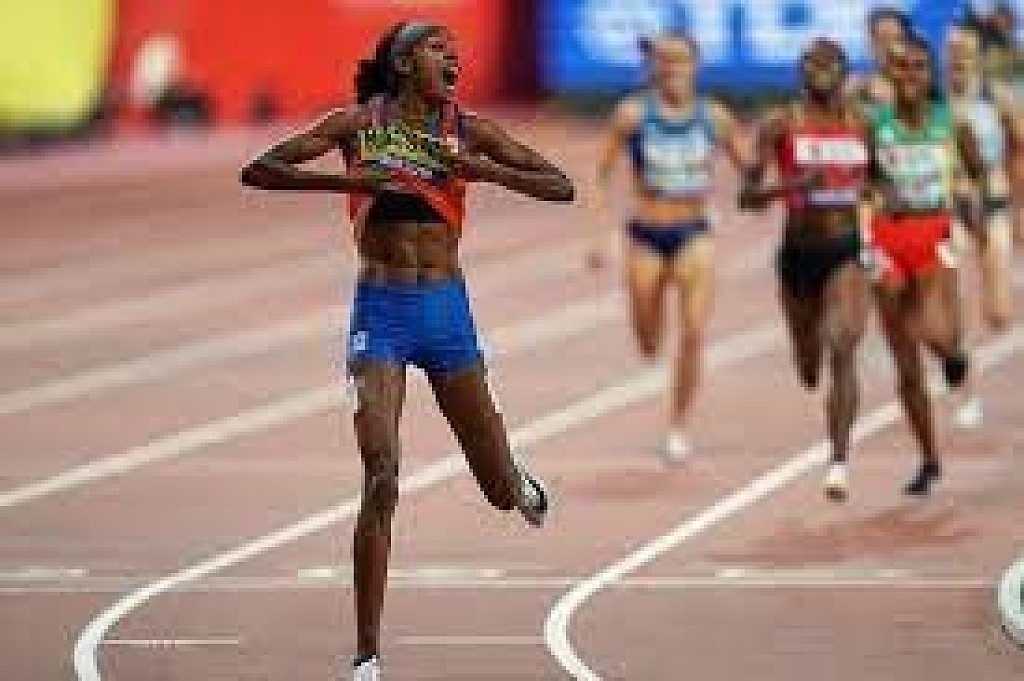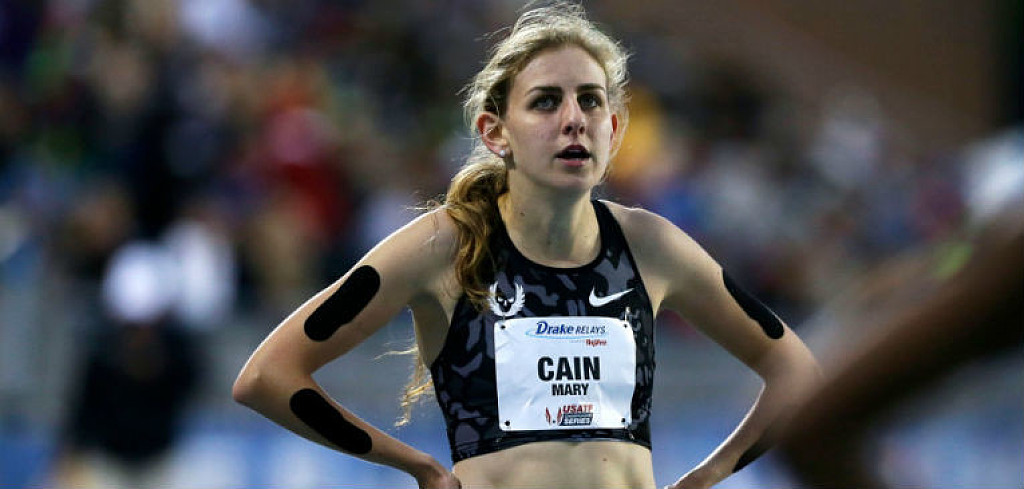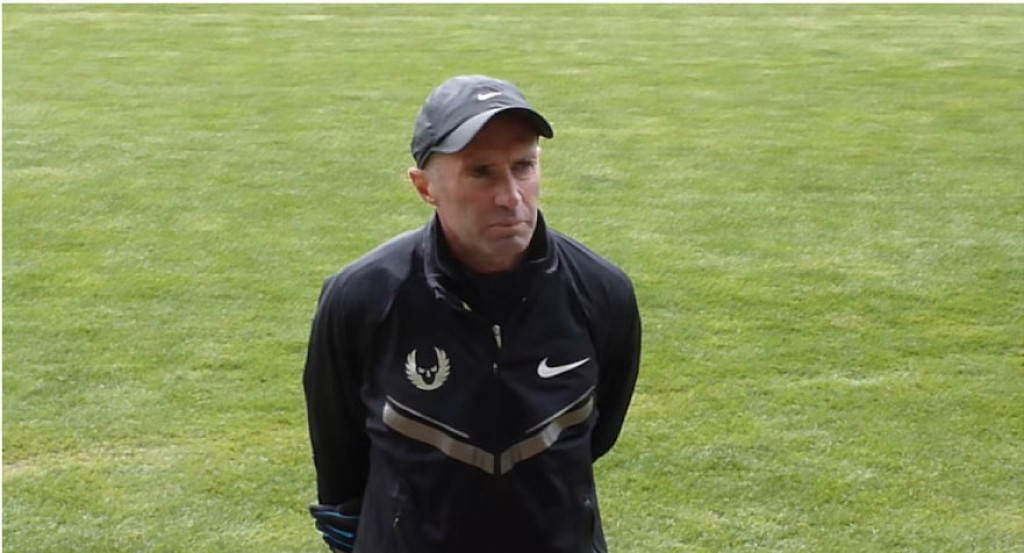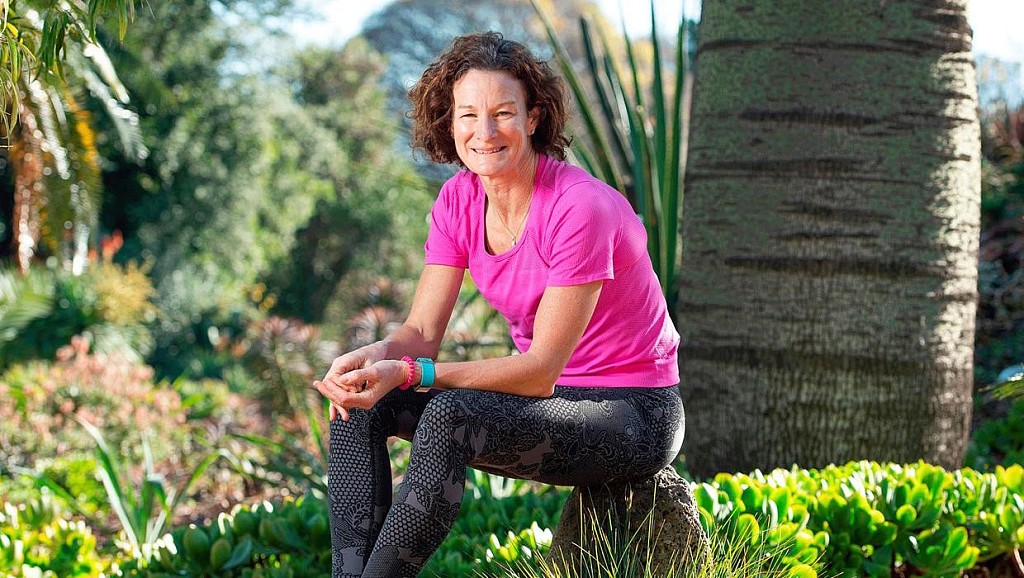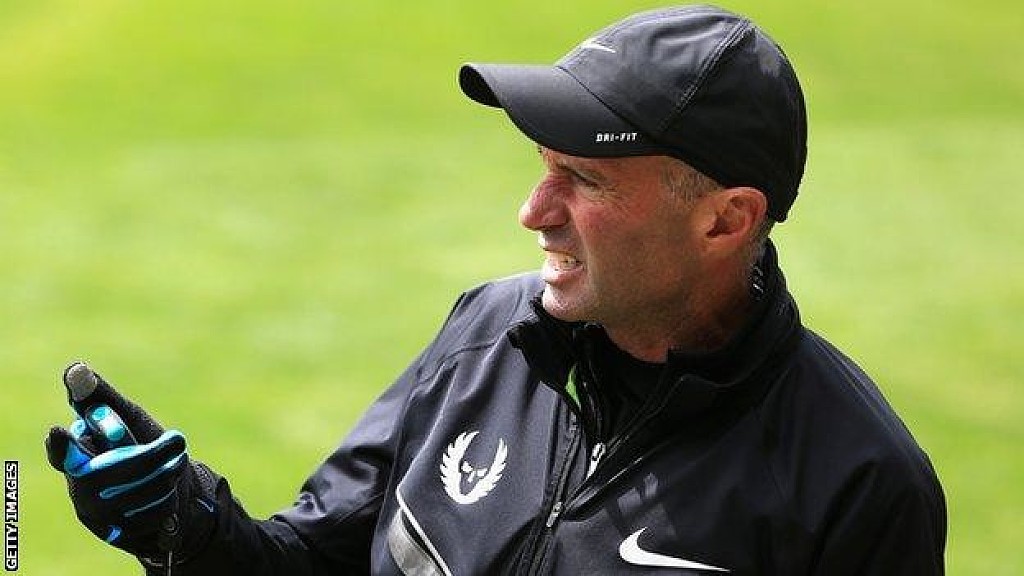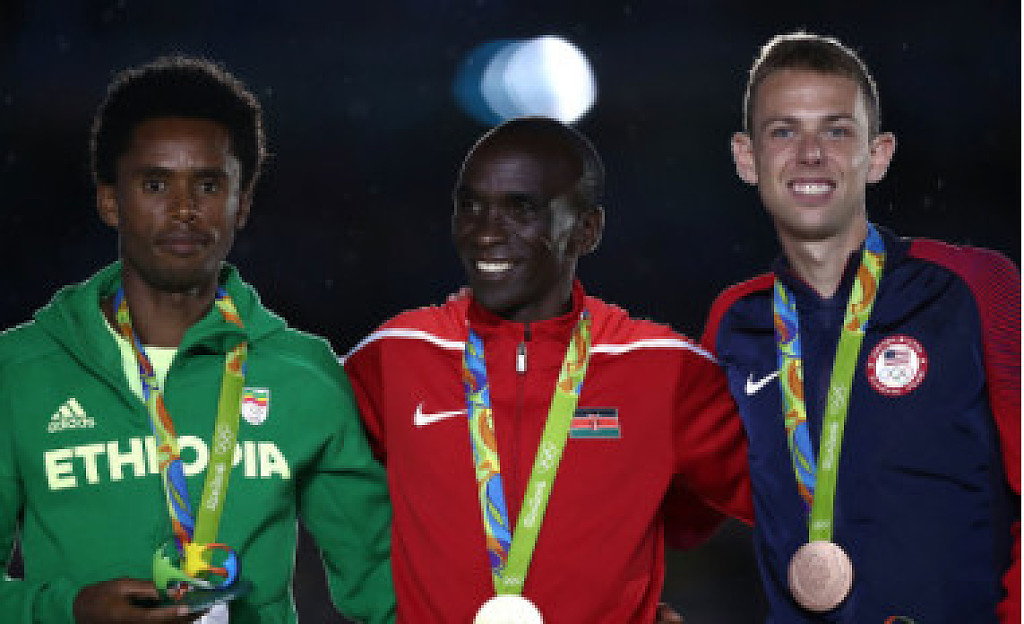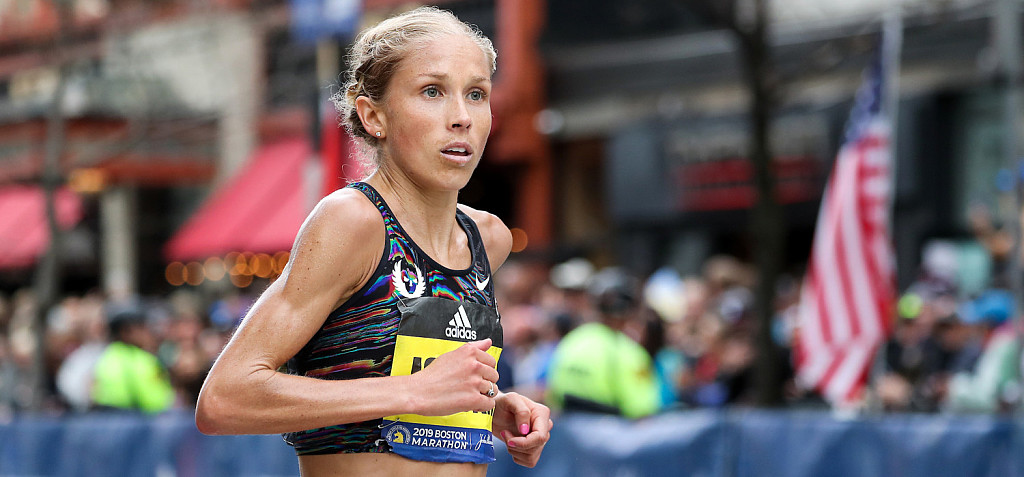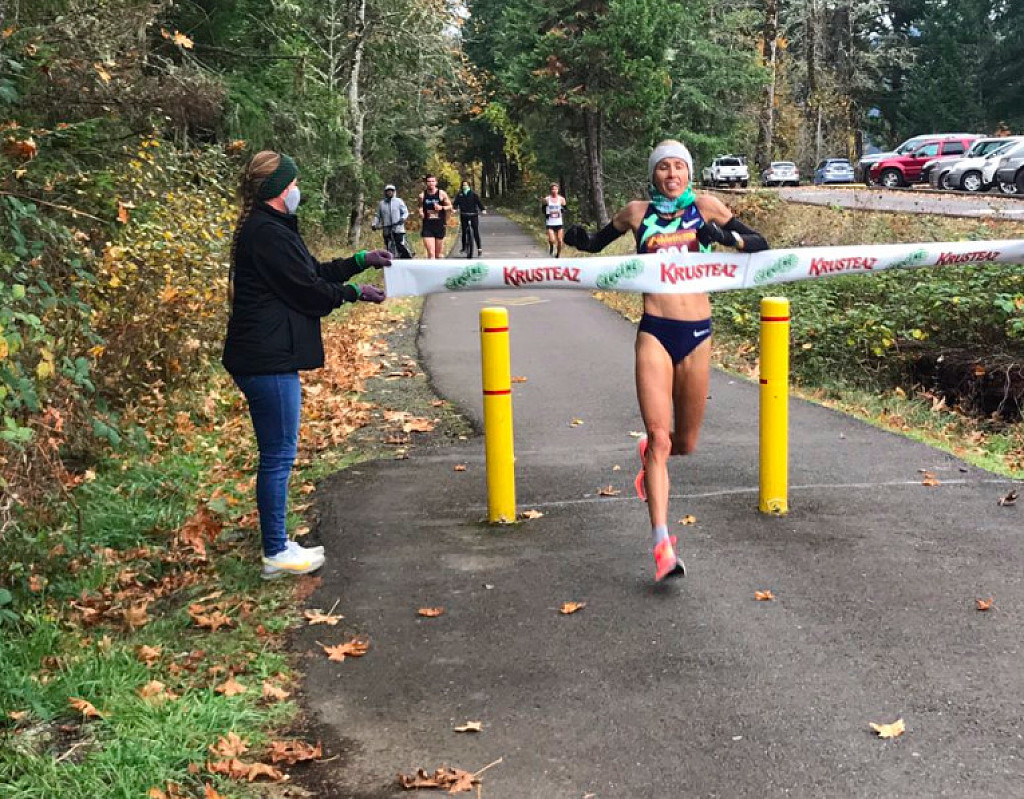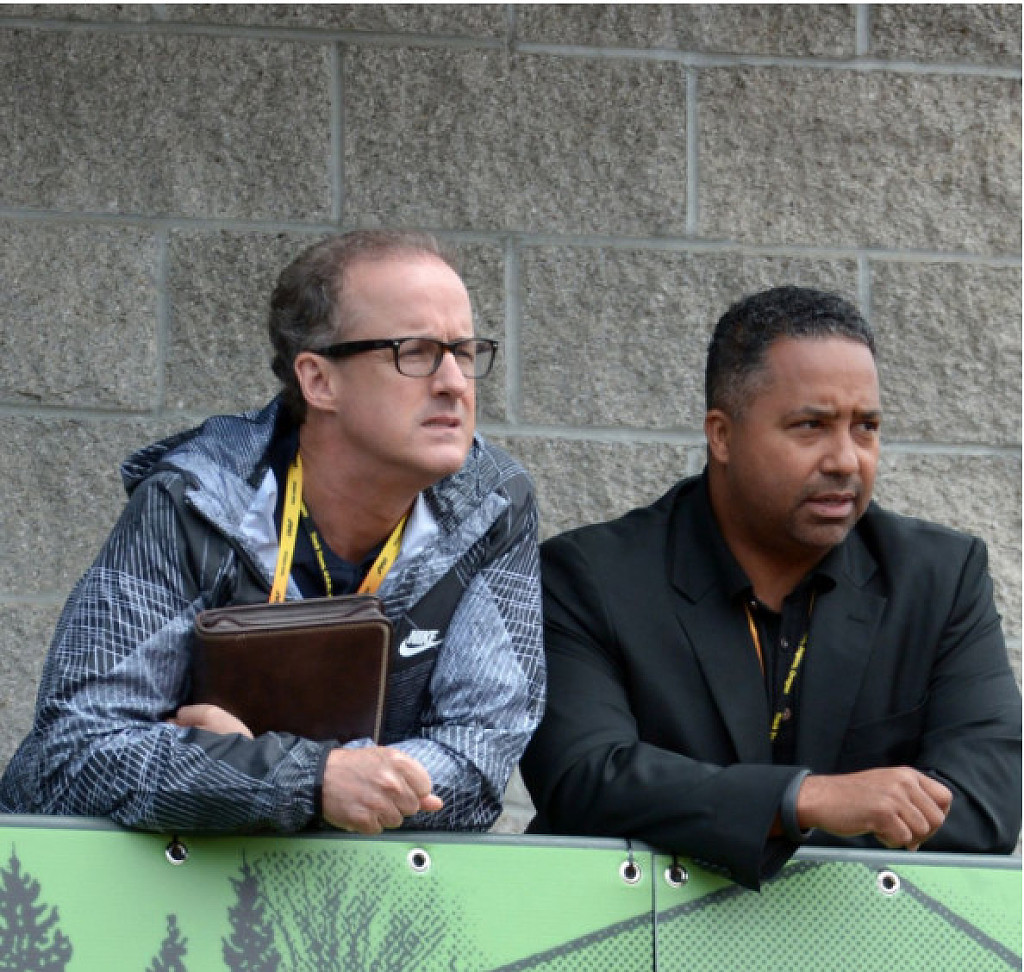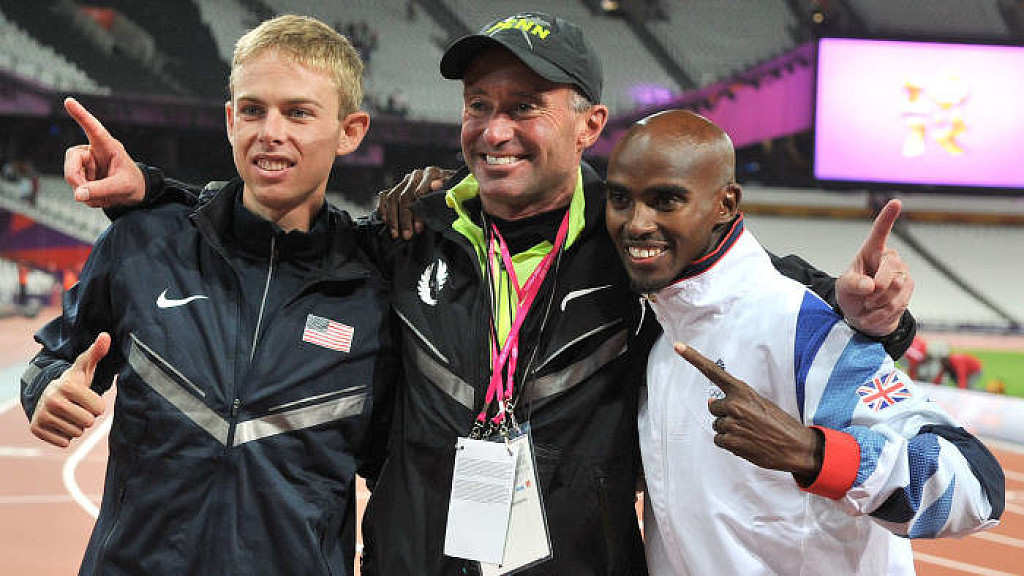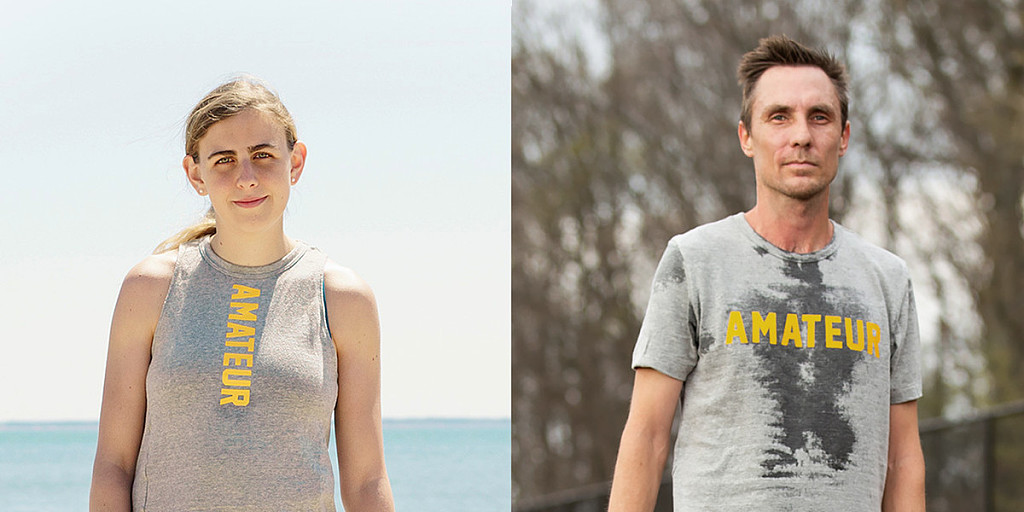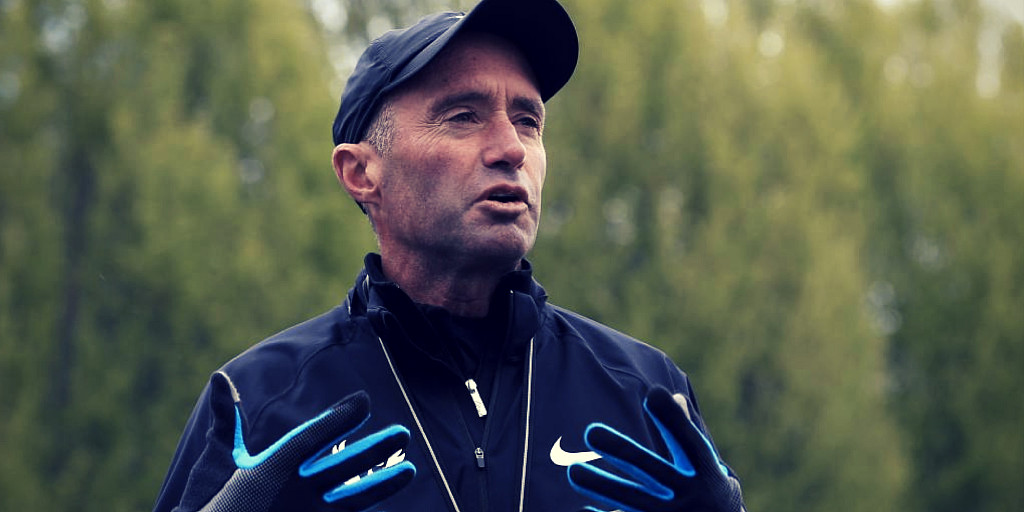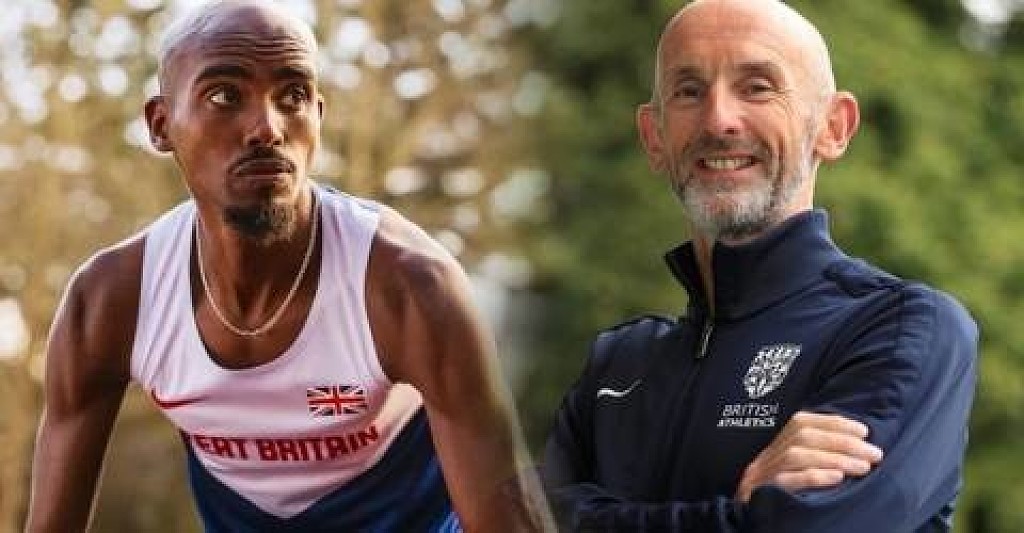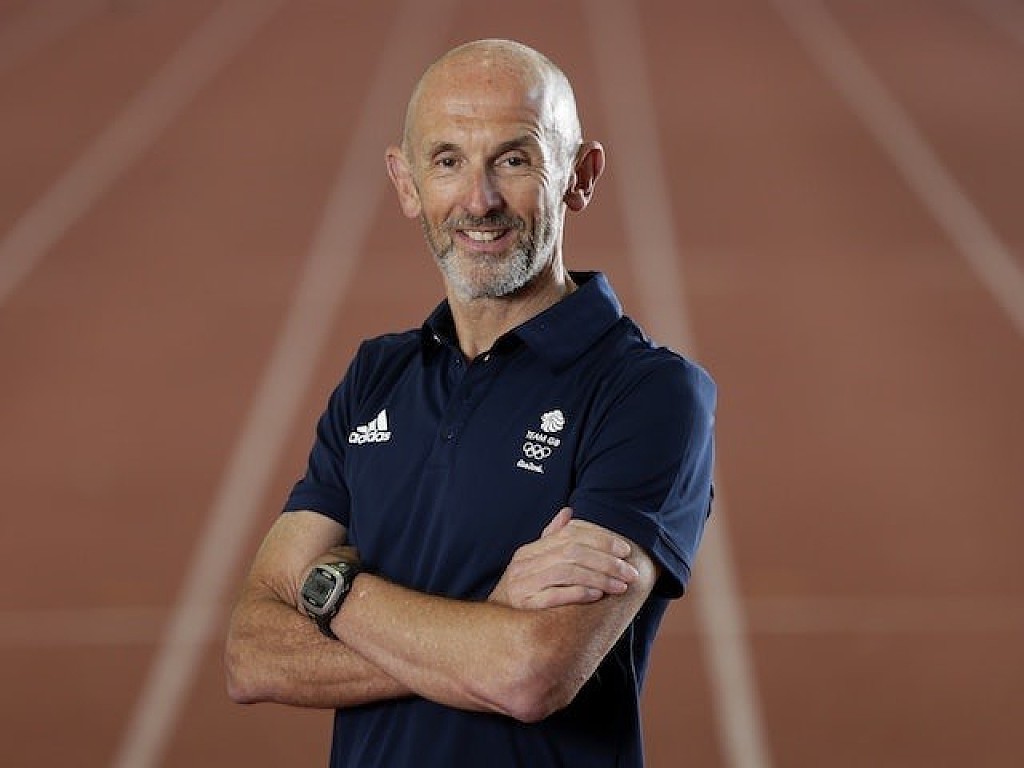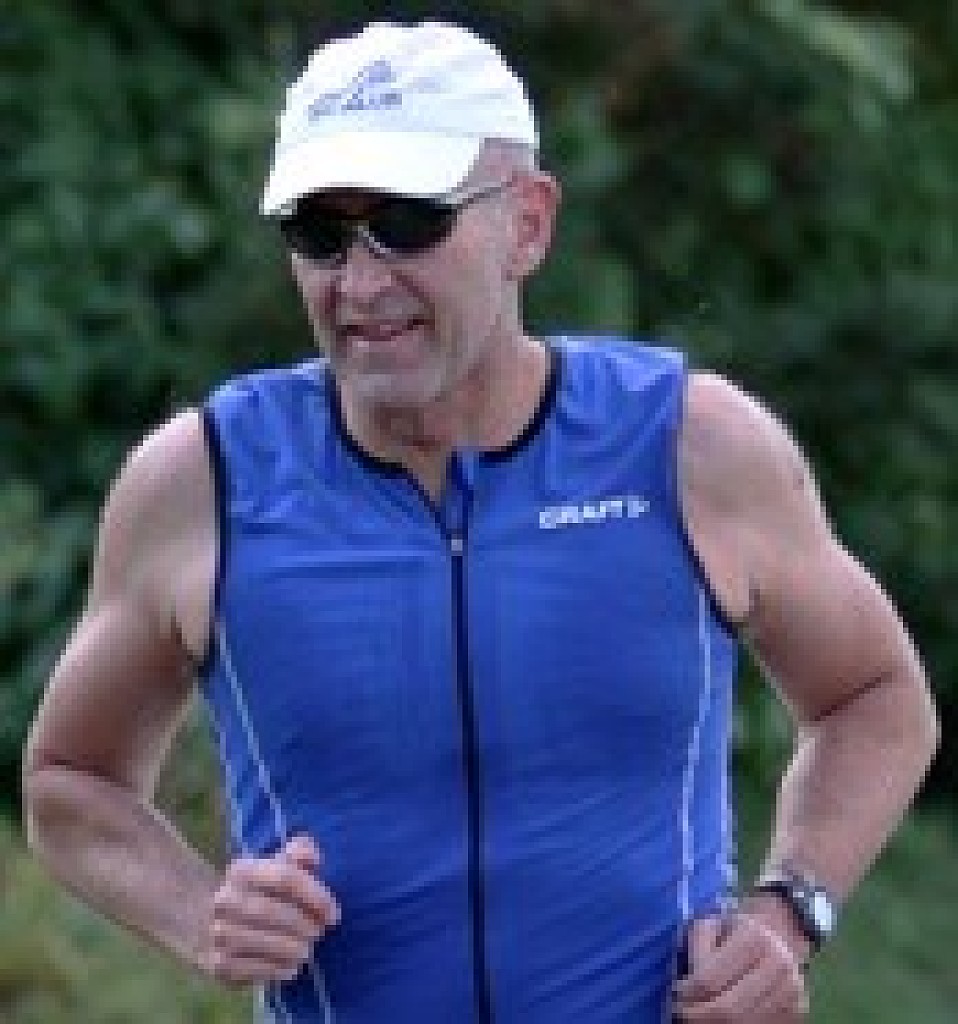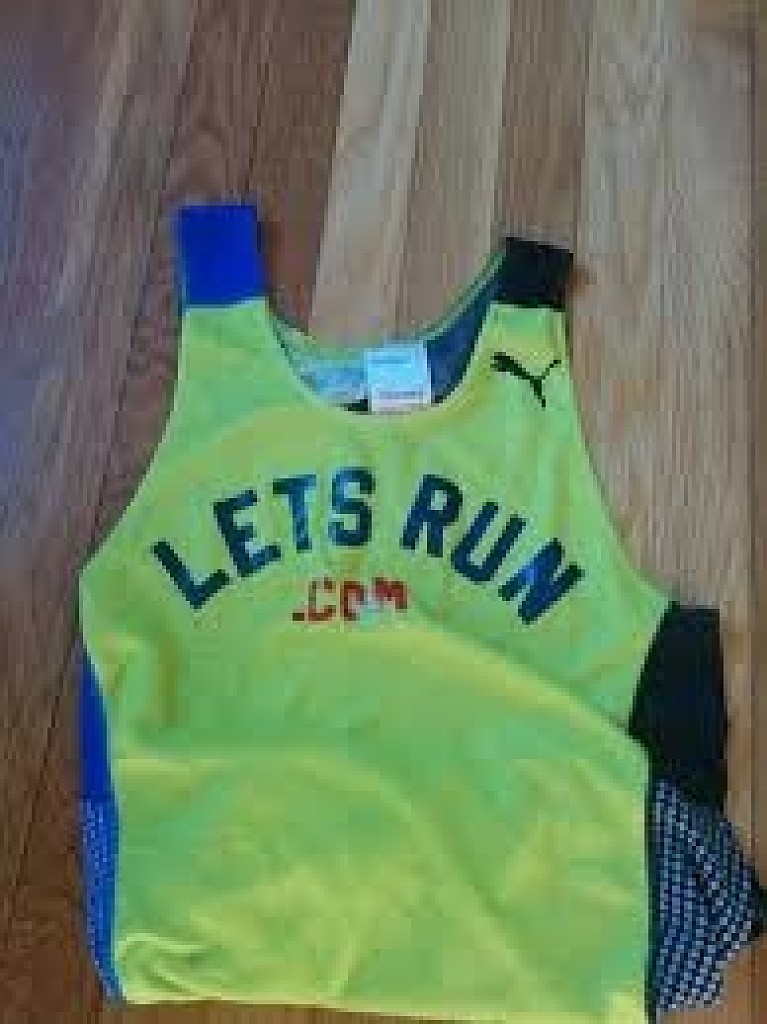Running News Daily
Running News Daily is edited by Bob Anderson. Send your news items to bob@mybestruns.com Advertising opportunities available. Train the Kenyan Way at KATA Kenya and Portugal owned and operated by Bob Anderson. Be sure to catch our movie A Long Run the movie KATA Running Camps and KATA Potato Farms - 31 now open in Kenya! https://kata.ke/
Index to Daily Posts · Sign Up For Updates · Run The World Feed
Articles tagged #Alberto Salazar
Today's Running News
Bill Dellinger, Olympic Medalist and Legendary Coach, Passes Away at 91
The world of distance running is mourning the loss of one of its greats. Bill Dellinger, a three-time Olympian, Olympic bronze medalist, and one of the most influential coaches in U.S. track history, has passed away at the age of 91 on June 26.
Dellinger’s name is etched into the legacy of American distance running, both for his competitive fire and his ability to mentor champions. A fierce competitor on the track and a quiet architect of greatness on the sidelines, Dellinger leaves behind a legacy that stretches across generations.
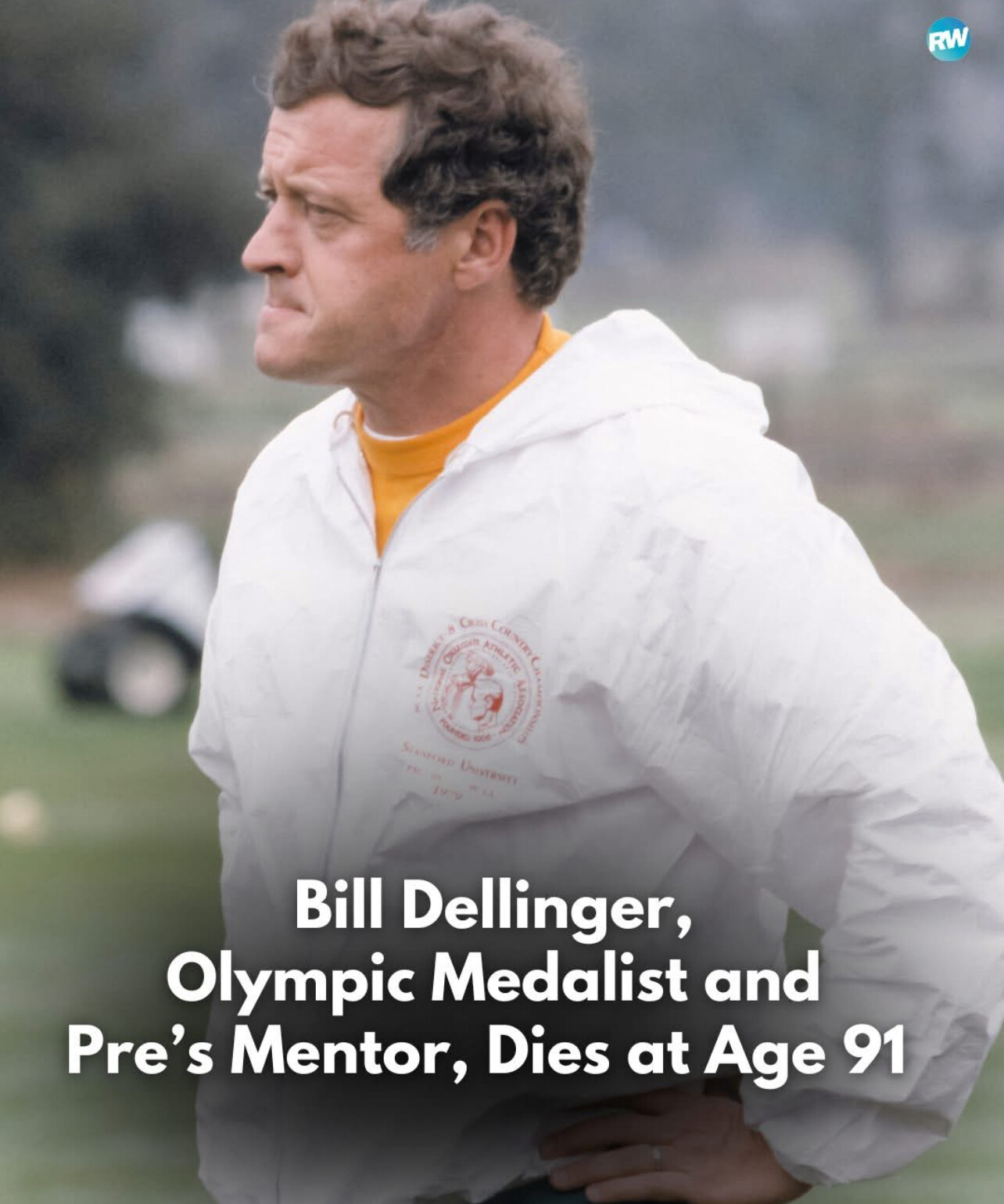
Born on March 23, 1934, in Grants Pass, Oregon, Dellinger rose to national prominence while competing for the University of Oregon under coach Bill Bowerman. He represented the United States in three Olympic Games—Melbourne 1956, Rome 1960, and Tokyo 1964—earning a bronze medal in the 5000 meters in his final Olympic appearance.
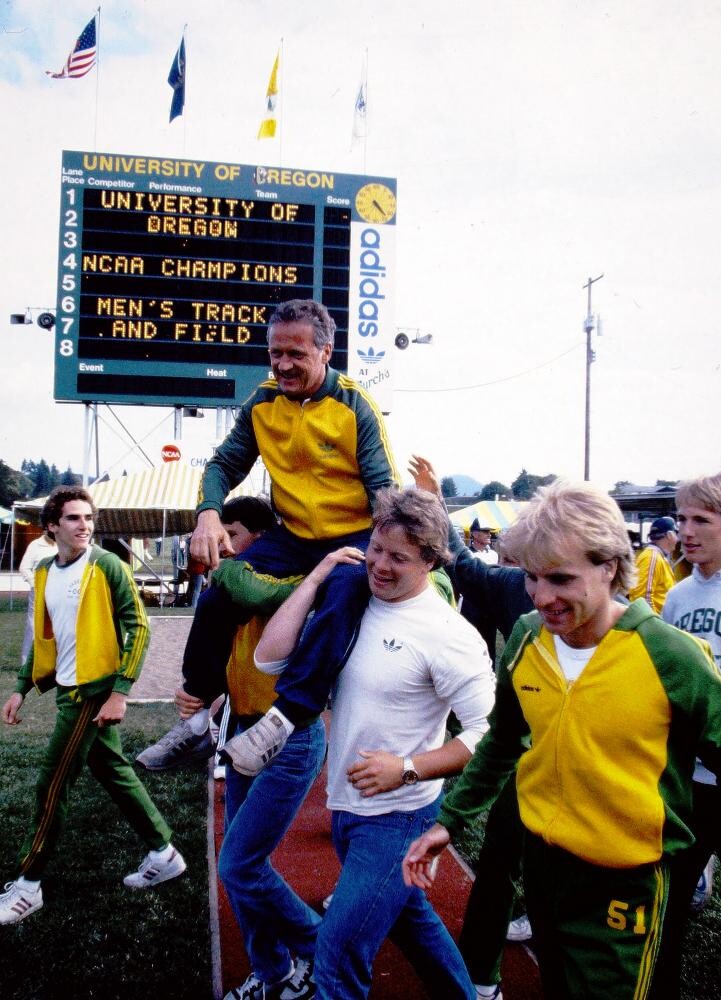
But Dellinger’s second act may have been even more impactful.
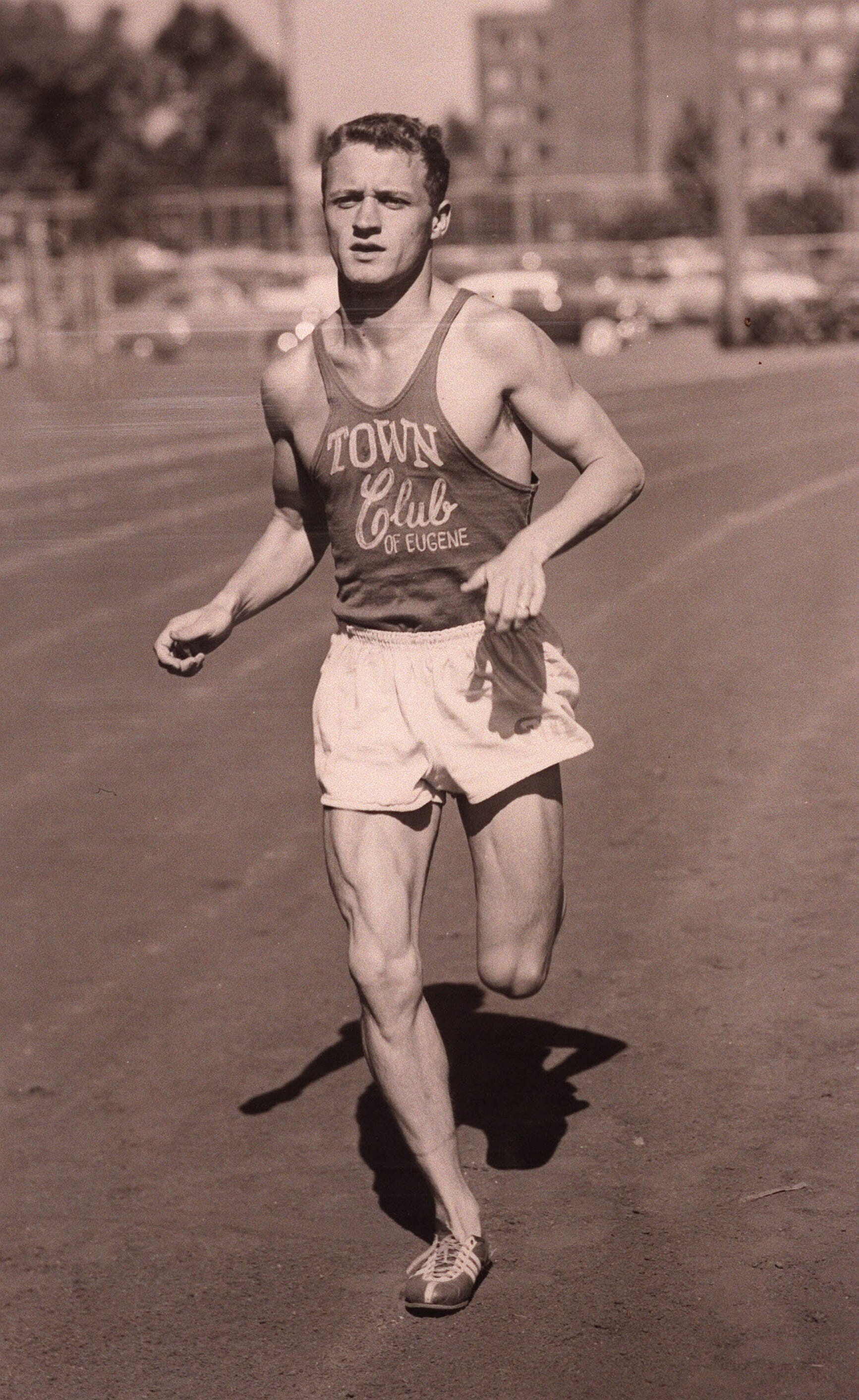
In 1973, he succeeded Bowerman as head coach at Oregon and immediately found himself guiding the nation’s most electric young runner—Steve Prefontaine. Their relationship transcended typical coach-athlete dynamics. Dellinger was more than a tactician; he was a stabilizing force for a fiercely independent and intense young star.
“Dellinger wasn’t just a coach. He was an architect of belief,” Prefontaine once said. “He knew when to push and when to trust.”
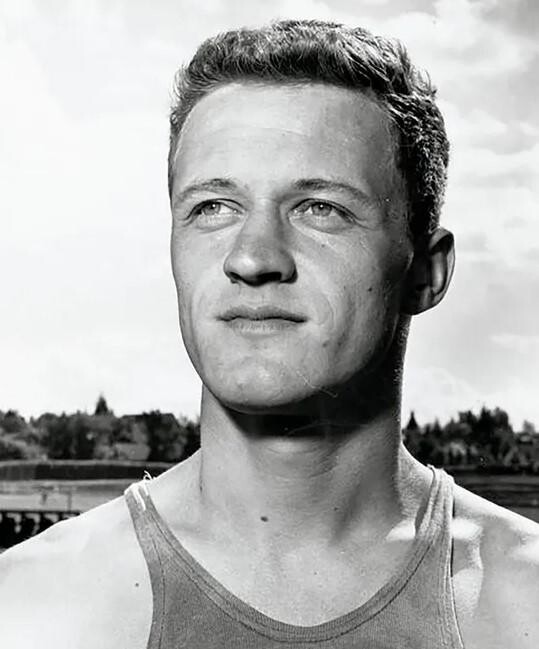
Dellinger coached at Oregon until 1998, mentoring athletes like Alberto Salazar, Matt Centrowitz Sr., Rudy Chapa, and many others who carried the Oregon tradition to global stages. He helped solidify Oregon’s reputation as the mecca of American distance running.
He was known for blending scientific training methods with an intuitive understanding of athlete development. His workouts were tough, his expectations high, but his support unwavering.
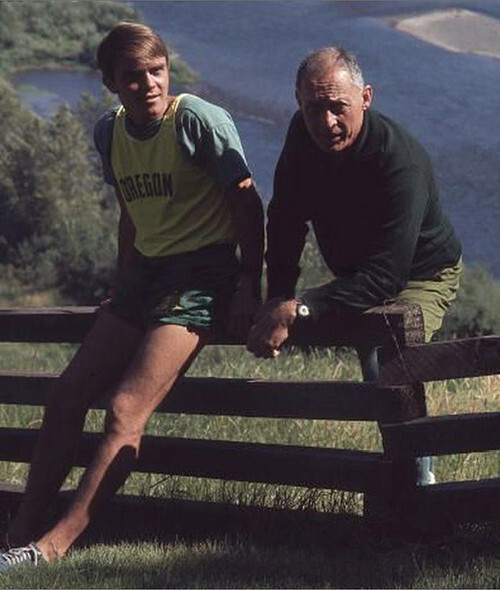
A Lifetime of Influence
Dellinger’s contributions to the sport extended well beyond the track. He co-authored training guides, helped shape early Nike culture, and lent his name to the prestigious Dellinger Invitational, one of the top collegiate cross-country meets in the country.
“Bill’s influence on distance running—first as a world-class athlete and then as a masterful coach—was profound,” said Bob Anderson, lifelong runner and founder of Runner’s World and My Best Runs.
“I hadn’t seen Bill in years, but his presence still echoes in the sport today. He inspired a generation and helped build the foundation of what American distance running has become. He may be gone, but he’ll never be forgotten.”
A Final Lap
Dellinger’s passing marks the end of an era, but his life’s work will continue on every time an Oregon singlet toes the line, every time a young coach references his methods, and every time a runner believes they can dig a little deeper.
He didn’t just coach champions—he helped shape the soul of American distance running.
Rest in peace, Coach Dellinger.
by Boris Baron
Login to leave a comment
Clayton Murphy Shocks Fans with Early Retirement After Stellar Olympic Career
Olympic bronze medalist Clayton Murphy stunned the track and field world by announcing his retirement at just 30 years old on May 7, 2025. Known for his gritty racing style and breakthrough performances, Murphy exits the sport with a legacy that inspired a generation of American middle-distance runners.
A Decade at the Top
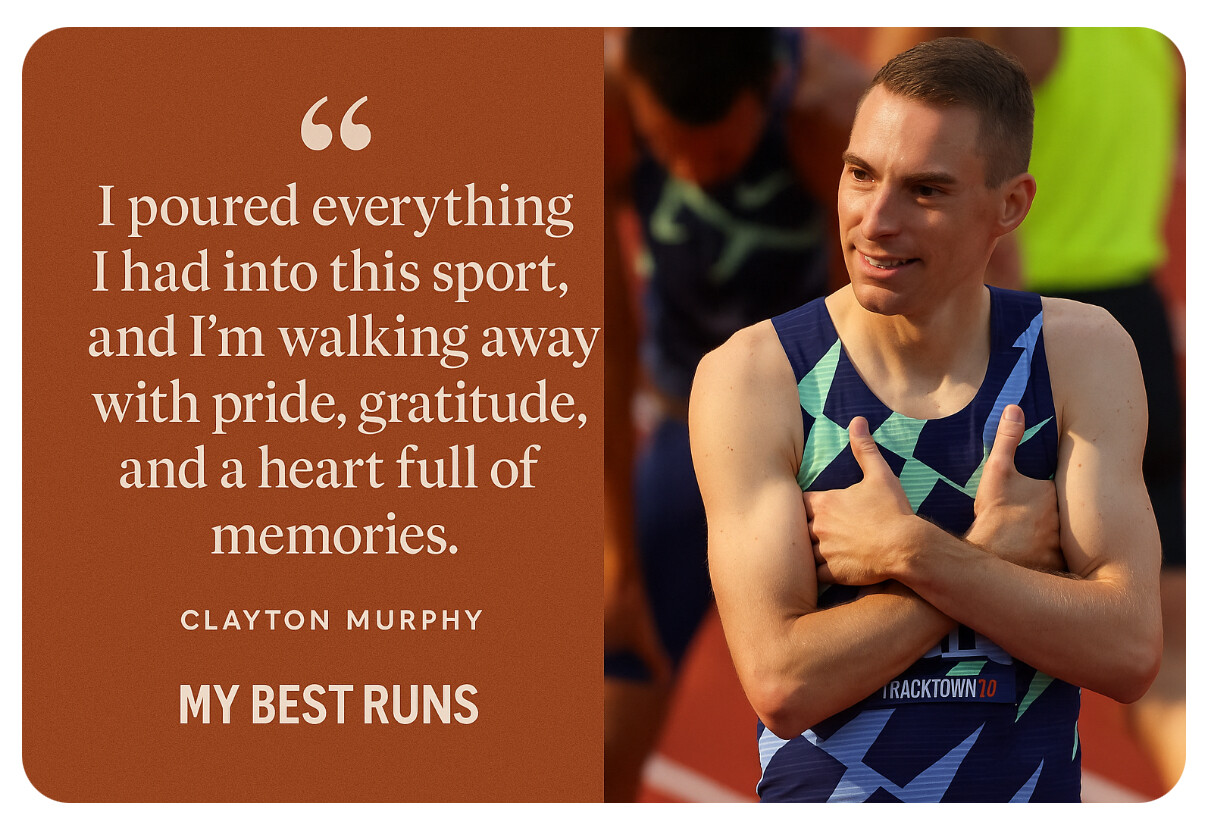
Murphy’s journey began in New Madison, Ohio, and quickly accelerated during his collegiate years at the University of Akron, where he captured the 2016 NCAA 1500m title. Just months later, he stunned the world by winning bronze in the 800 meters at the Rio Olympics, clocking a personal best of 1:42.93—the fifth-fastest time ever by an American. It marked the first U.S. medal in the Olympic 800m since 1992.
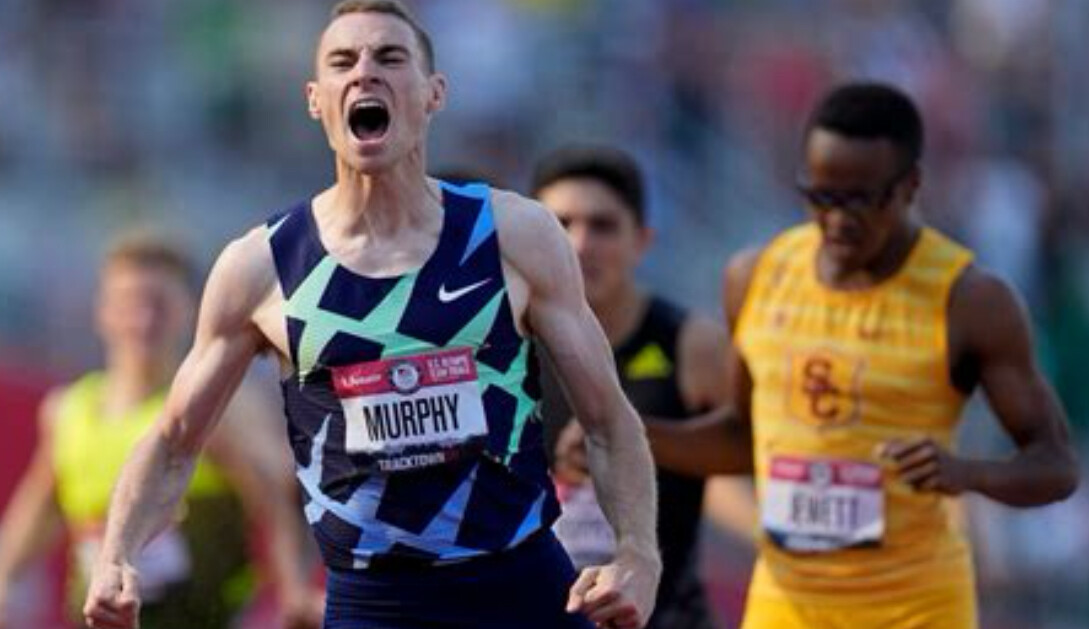
Over the next decade, Murphy consistently represented the United States on the world stage, including appearances at the Tokyo 2021 Olympics and multiple World Championships. His smooth stride, tactical awareness, and fierce closing speed earned him fans worldwide.
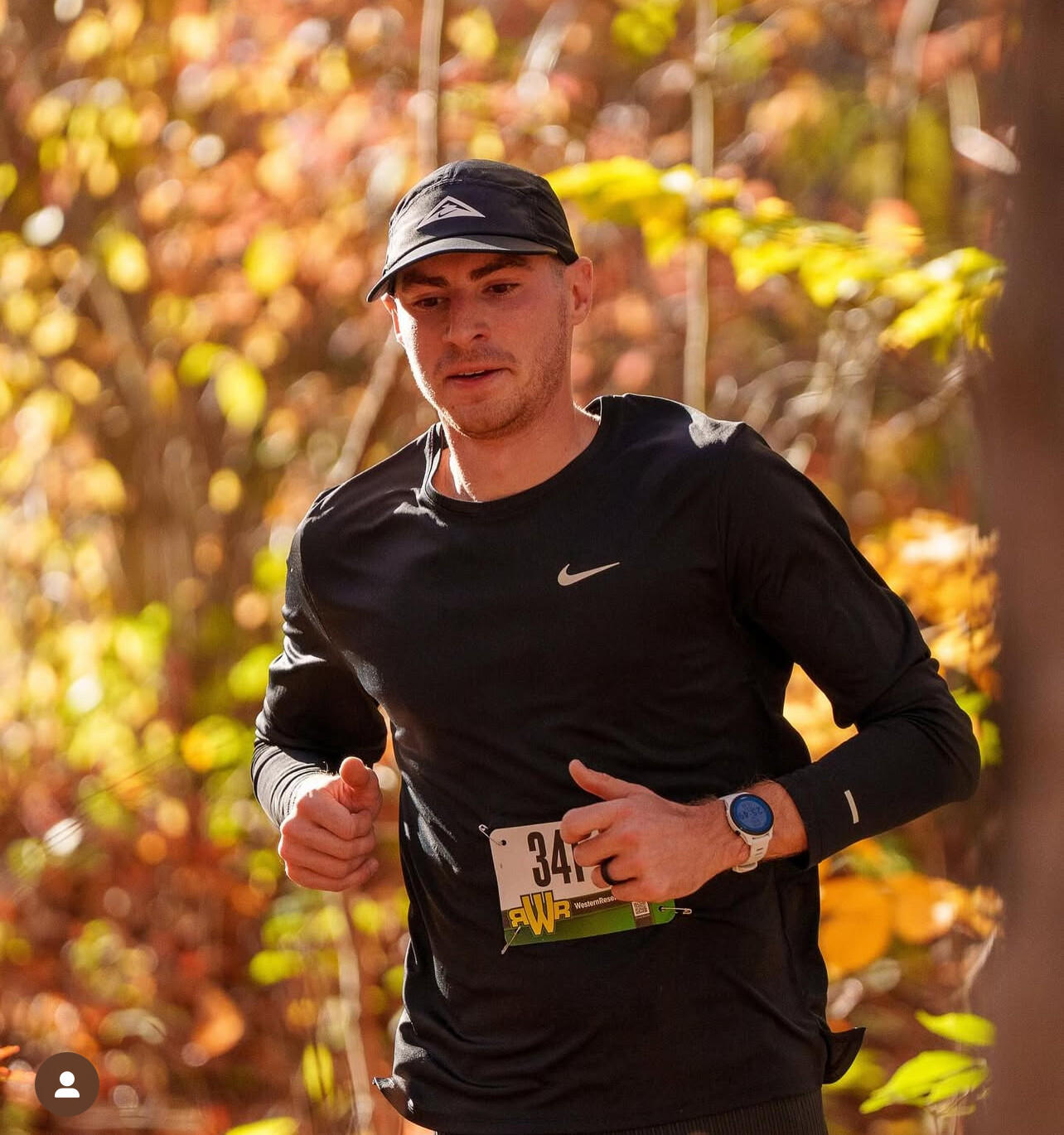
Why Retire Now?
In an emotional Instagram post, Murphy reflected on his decision:
“I poured everything I had into this sport, and I’m walking away with pride, gratitude, and a heart full of memories. A decade on the global stage is more than most pros will ever get to experience, and I’m so grateful for what every year has taught me.”
While Murphy did not point to a single reason for stepping away, his message hinted at a desire for growth and new opportunities beyond the oval. He thanked his longtime coaches Lee LaBadie and Alberto Salazar, as well as his wife and fellow Olympian Ariana Washington, for their unwavering support.
What’s Next?
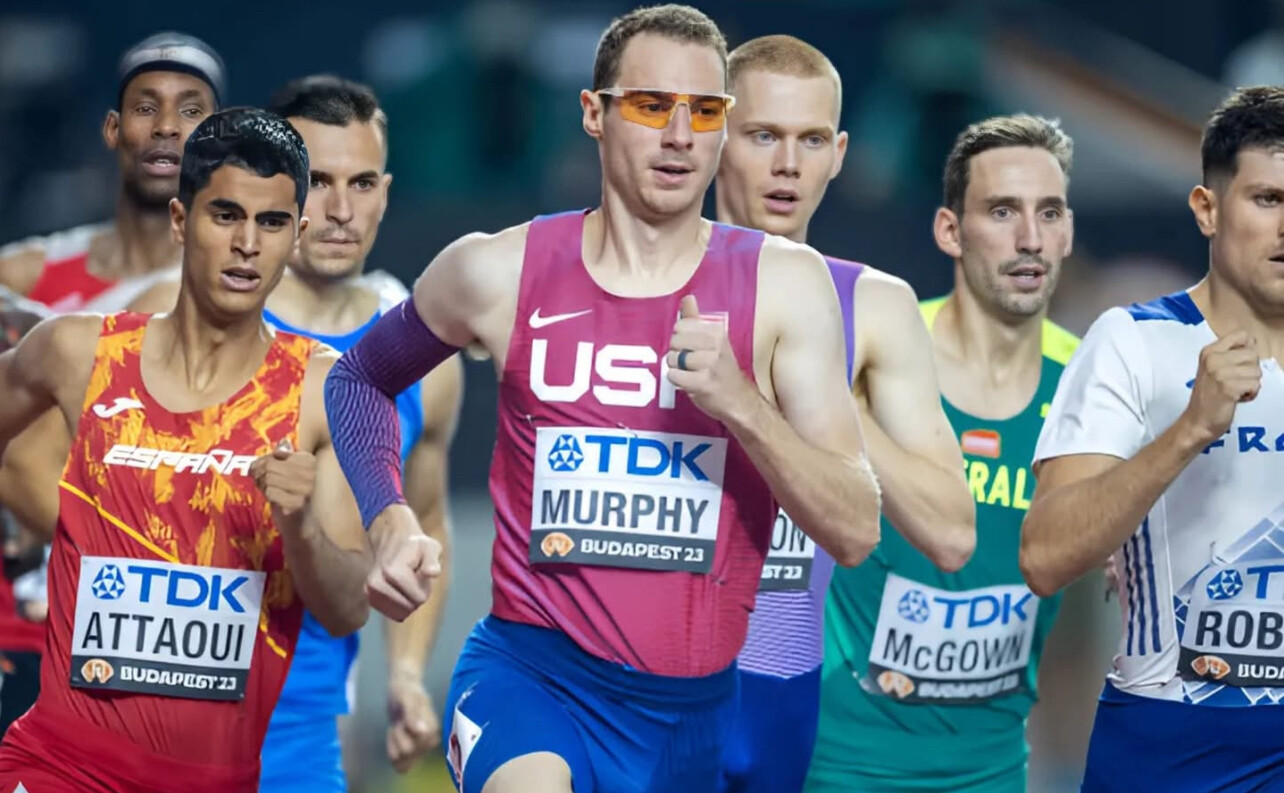
Though he’s stepping off the track, Murphy made it clear he won’t be far from the sport:
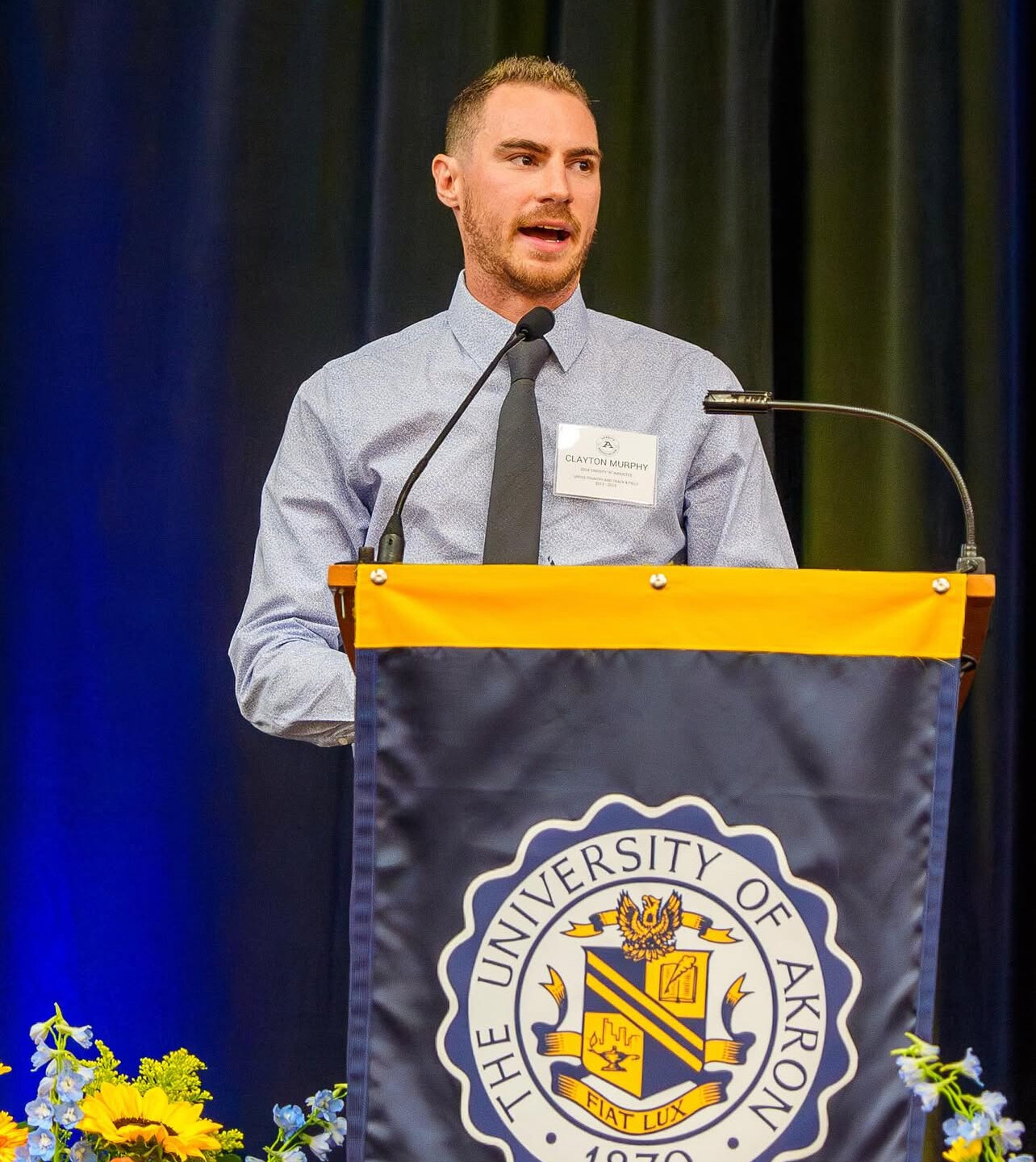
“I might be done running 50s around the track, but I know I’ll always be a part of this sport one way or another. Can’t wait to share with you what’s next!”
A Lasting Legacy
Fans and athletes alike flooded social media with tributes. One wrote, “You’ll always be one of the best!” while fellow 800m standout Bryce Hoppel commented, “Congrats on the career!”
Murphy’s retirement may have come earlier than expected, but his impact on American middle-distance running is undeniable. As he enters his next chapter, the sport says goodbye to a competitor who always gave his all—every lap, every race, every time.

by Boris Baron
Login to leave a comment
Doping Dilemma: How WADA's Policies Are Failing Our Sport
I am alarmed by how the World Anti-Doping Agency (WADA) is policing our sport. It's disheartening to see athletes win races only to be stripped of their titles months later due to delayed doping allegations. This approach undermines the integrity of athletics and, in the long run, does more harm than good.
Having dedicated my life to running—I ran my first mile on February 16, 1962, and I discovered my passion for our sport after clocking a 2:08.5 in a 880-yard race JUne 1, 1963—I've witnessed the sport's evolution firsthand. As the founder and publisher of Runner’s World for 18 years and, since 2007, the editor and publisher of My Best Runs, I am concerned about the professional side of athletics.

The Flaws in WADA's Zero-Tolerance Policy
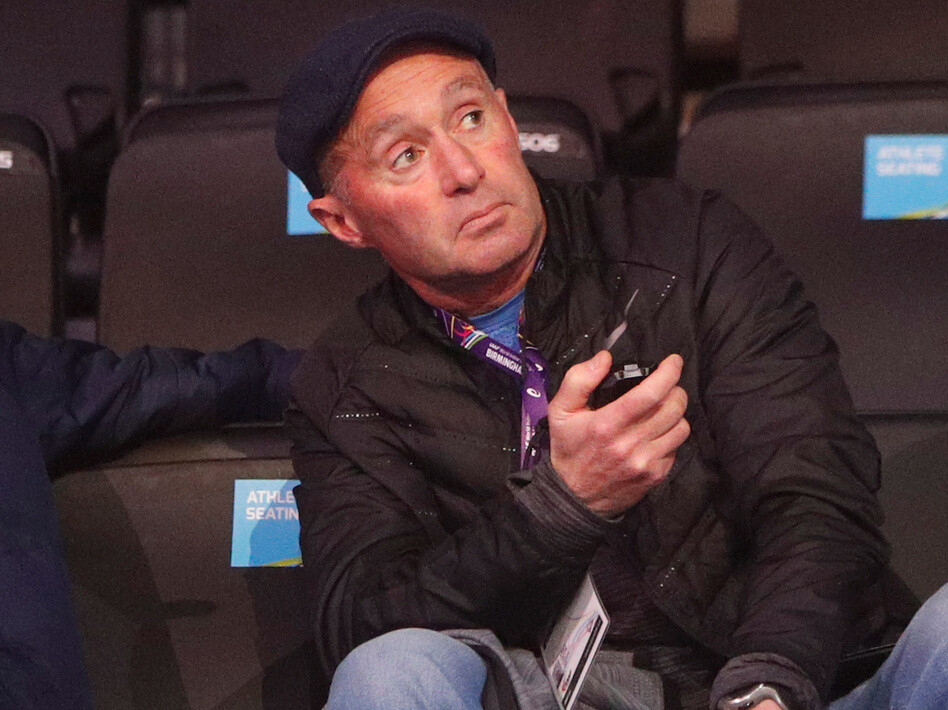
WADA's strict liability standard holds athletes accountable for any prohibited substance in their system, regardless of intent. This has led to controversial sanctions, such as the four-year ban of American runner Shelby Houlihan. She tested positive for the steroid nandrolone, which she attributed to consuming a pork burrito. Despite her defense, the ban was upheld, raising questions about the fairness of such rigid policies.
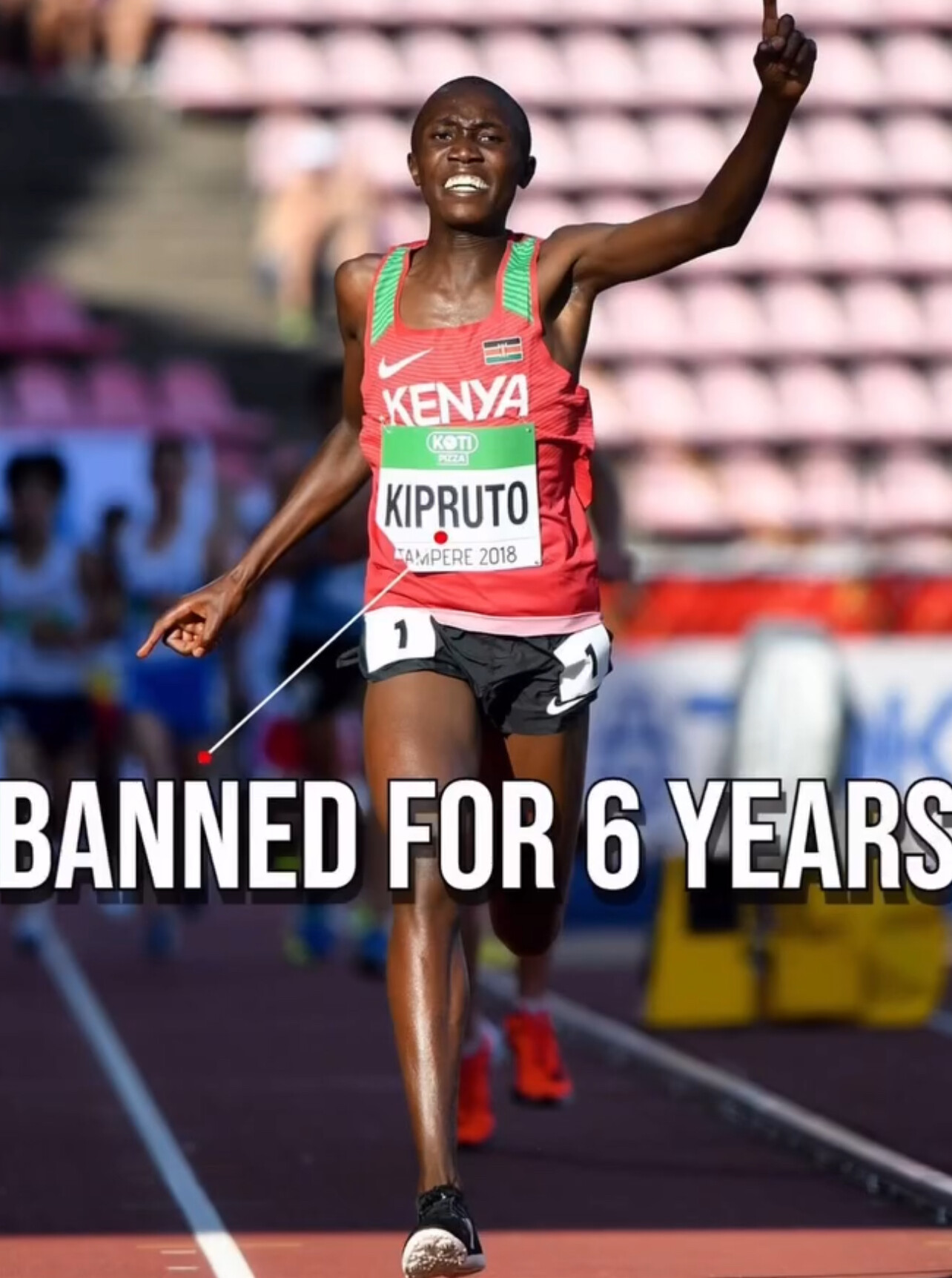
Overhauling the Banned Substances List
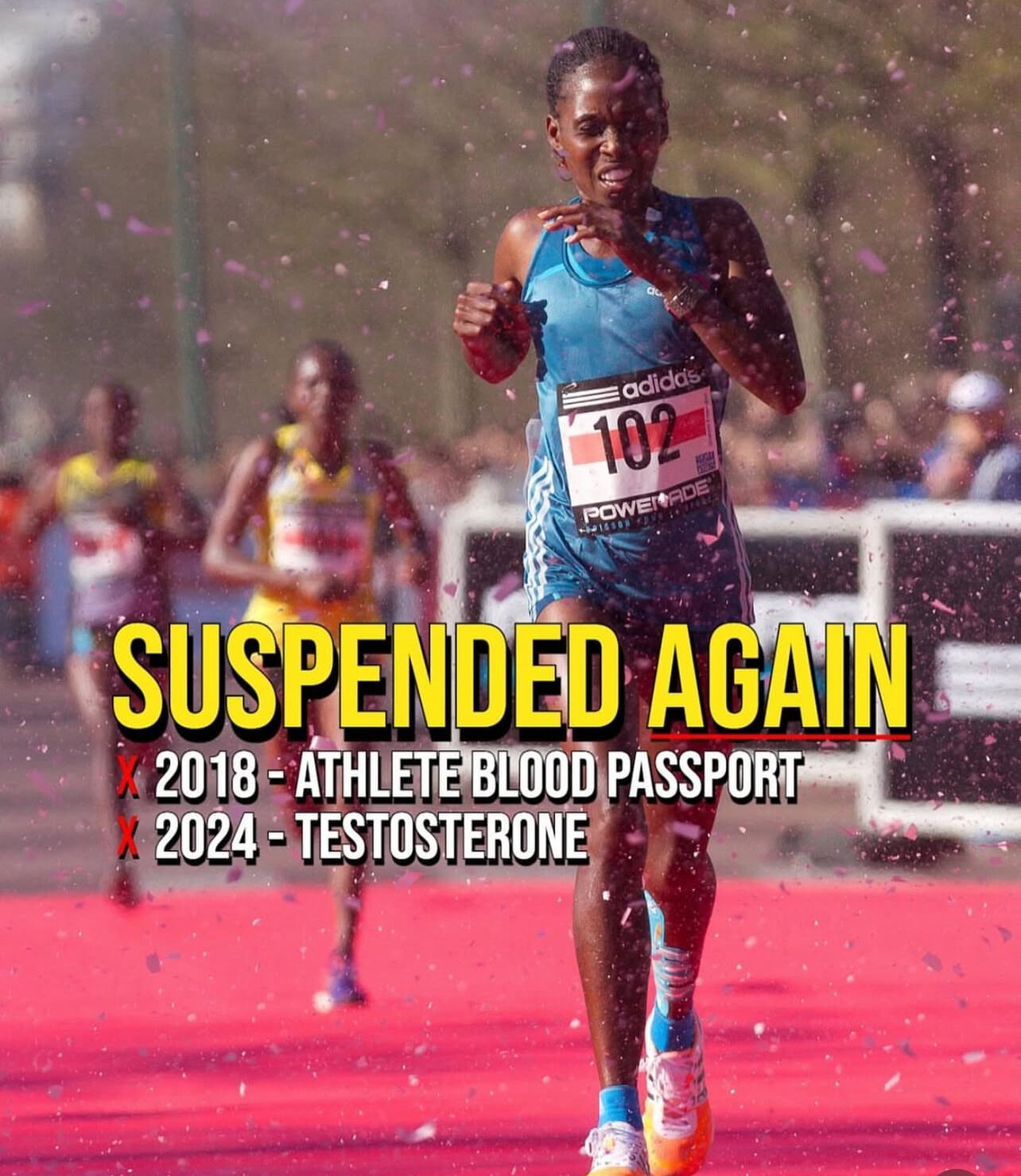
The extensive list of prohibited substances maintained by WADA includes compounds with minimal or no performance-enhancing effects. By focusing on substances with proven performance benefits, we can prevent athletes from being unjustly penalized for trace amounts of inconsequential substances.
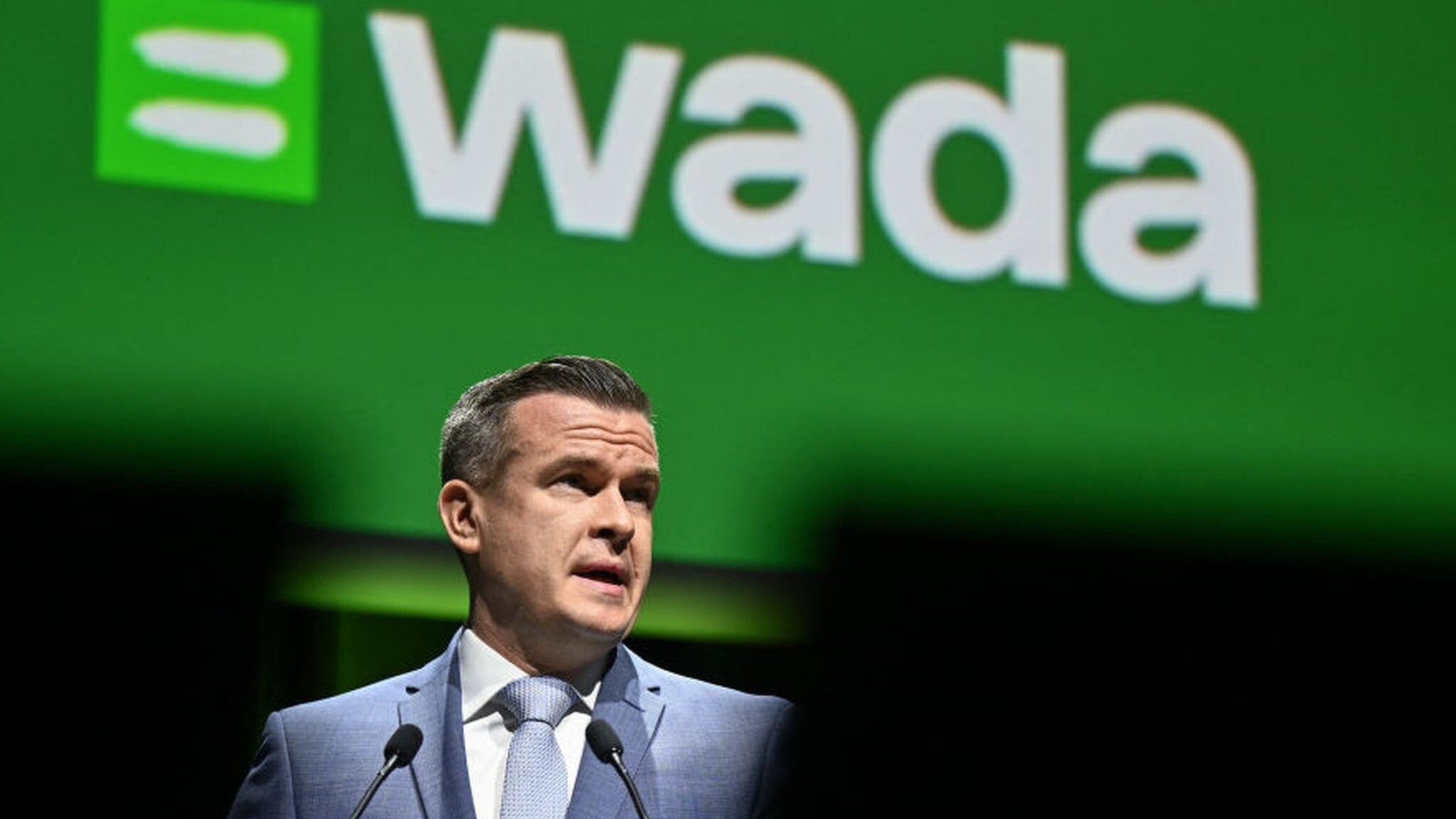
The Problem with Retroactive Disqualifications
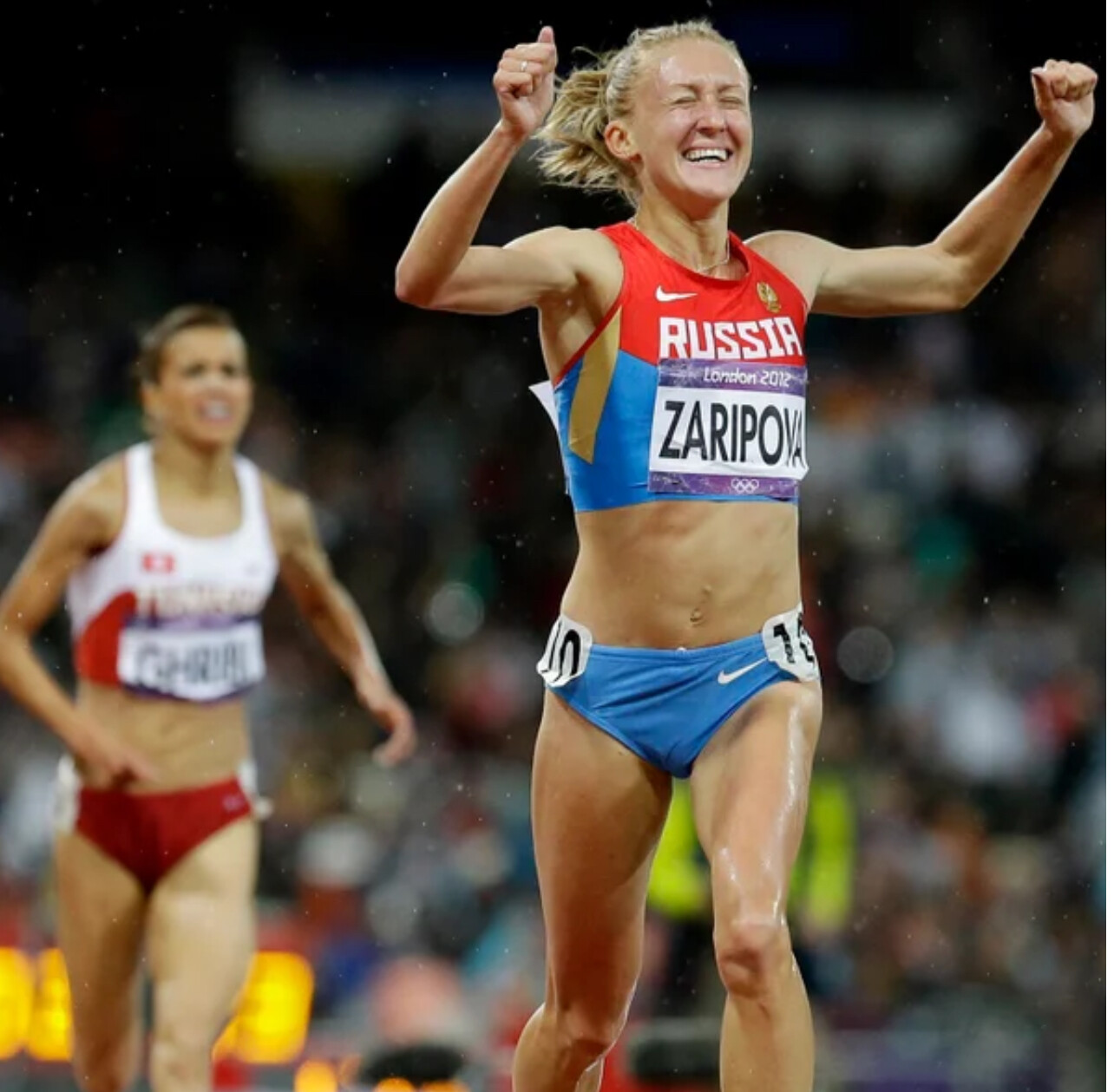
Delayed disqualifications due to retroactive positive tests cause significant disruptions. Athletes are stripped of titles months or even years after competitions, leading to uncertainty and diminished trust in the sport. Investing in faster, more sensitive testing methods is crucial to detect violations promptly, ensuring that competition results are reliable and fair.
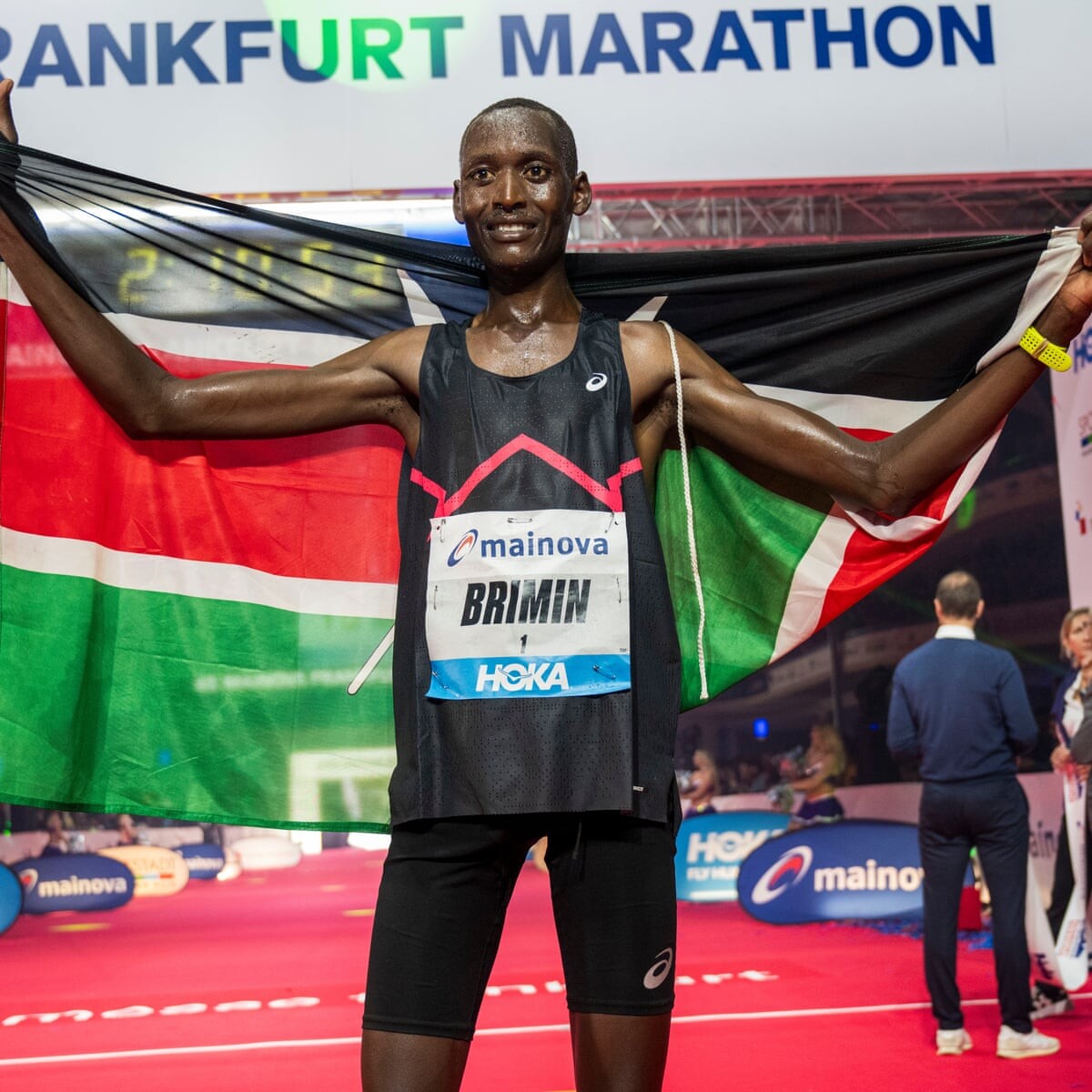
Rethinking the "Whereabouts" Requirement
WADA's "whereabouts" rule mandates that athletes provide their location for one hour each day to facilitate out-of-competition testing. This constant monitoring infringes on athletes' privacy rights and imposes an unreasonable burden. Reevaluating this policy could help balance effective anti-doping measures with respect for personal freedoms.
Understanding Blood Doping and Its Implications
Blood doping, which involves increasing red blood cells to enhance performance, poses significant health risks, including blood clots, stroke, and heart attack. While it's linked to deaths in sports like cycling, there is no documented case of a runner dying directly from blood doping.
Interestingly, many doping violations involve substances like erythropoietin (EPO), which, despite health risks, haven't been directly linked to fatalities among runners. In contrast, alcohol—a legal substance—is responsible for approximately 3 million deaths worldwide annually. This disparity raises questions about the consistency of current substance regulations in sports.
The Business of Anti-Doping
Established in 1999 with an initial operating income of USD 15.5 million, WADA's budget has grown significantly, reaching USD 46 million in 2022. This increase reflects the expanding scope of WADA's activities, including research, education, and compliance monitoring.
Funding is primarily sourced from public authorities and the sports movement, with the International Olympic Committee (IOC) being a major contributor. Notably, in 2024, the United States withheld over USD 3.6 million—about 6% of WADA's annual budget—due to disputes over the agency's handling of doping cases.
EPO's Prevalence in Doping Cases
Erythropoietin (EPO) has a history of abuse in endurance sports due to its performance-enhancing capabilities. For example, Kenyan marathon runner Brimin Kipkorir was provisionally suspended in February 2025 after testing positive for EPO and Furosemide. This suspension adds to a series of high-profile doping cases affecting marathon running, especially among Kenyan athletes.
Adapting Governance and Policies to Maintain Trust
High-profile doping scandals have exposed flaws in the governance of athletics. The case of coach Alberto Salazar illustrates the challenges in enforcing anti-doping regulations. Salazar, who led the Nike Oregon Project, was initially banned for four years in 2019 for multiple anti-doping rule violations, including trafficking testosterone and tampering with doping control processes.
In 2021, he received a lifetime ban for sexual and emotional misconduct. His athlete, Galen Rupp, never tested positive for banned substances, yet his reputation suffered due to his association with Salazar. This situation underscores the importance of independent and transparent governance in maintaining the sport's integrity.
The banned drug list
The World Anti-Doping Agency (WADA) maintains a comprehensive list of substances and methods prohibited in sports to ensure fair competition and athlete health. This list is updated annually and includes categories such as:
· Anabolic Agents: These substances, including anabolic-androgenic steroids, promote muscle growth and enhance performance.
· Peptide Hormones, Growth Factors, and Related Substances: Compounds like erythropoietin (EPO) and human growth hormone (hGH) that can increase red blood cell production or muscle mass.
· Beta-2 Agonists: Typically used for asthma, these can also have performance-enhancing effects when misused.
· Hormone and Metabolic Modulators: Substances that alter hormone functions, such as aromatase inhibitors and selective estrogen receptor modulators.
· Diuretics and Masking Agents: Used to conceal the presence of other prohibited substances or to rapidly lose weight.
· Stimulants: Compounds that increase alertness and reduce fatigue, including certain amphetamines.
· Narcotics: Pain-relieving substances that can impair performance and pose health risks.
· Cannabinoids: Including substances like tetrahydrocannabinol (THC), which can affect coordination and concentration.
· Glucocorticoids: Anti-inflammatory agents that, when misused, can have significant side effects.
Additionally, WADA prohibits certain methods, such as blood doping and gene doping, which can artificially enhance performance. It's important to note that while substances like alcohol are legal and widely consumed, they are not banned in most sports despite their potential health risks.
In contrast, substances like EPO, which have not been directly linked to fatalities among runners, are prohibited due to their performance-enhancing effects and potential health risks. This raises questions about the consistency and focus of current substance regulations in sports..
Regarding the percentage of doping violations involving EPO, specific statistics are not readily available. However, EPO has been a focal point in numerous high-profile doping cases, particularly in endurance sports. For detailed and up-to-date information, consulting WADA's official reports and statistics is recommended
Blood Doping Across Sports
Blood doping is prohibited across various sports, particularly those requiring high endurance. The International Olympic Committee (IOC) banned blood doping in 1985, and since then, numerous sports organizations have implemented similar prohibitions. Cycling has been notably affected, with many major champions associated with or suspended for blood doping.
In conclusion, while the fight against doping is essential to maintain fairness in athletics, the current methods employed by WADA may be causing more harm than good. It's imperative to develop more nuanced, fair, and effective anti-doping policies that protect both the integrity of the sport and the rights of its athletes.
by Bob Anderson
Login to leave a comment
The Chicago Marathon has a strong history
First run in 1977, this Sunday, Chicago hosts its 46th marathon (it lost 2020 to the Covid-19 pandemic; 1987 to sponsorship issues). One of the six Abbott World Marathon Majors, the history of the BofA Chicago Marathon has been one of rising, falling, and rising again.
In 2023, it witnessed its third men’s marathon world record, 2:00:35, gloriously produced by the late Kenyan star, Kelvin Kiptum, who tragically died in a car accident on February 11, 2024 (age 24 years), in Kaptagat, Kenya.
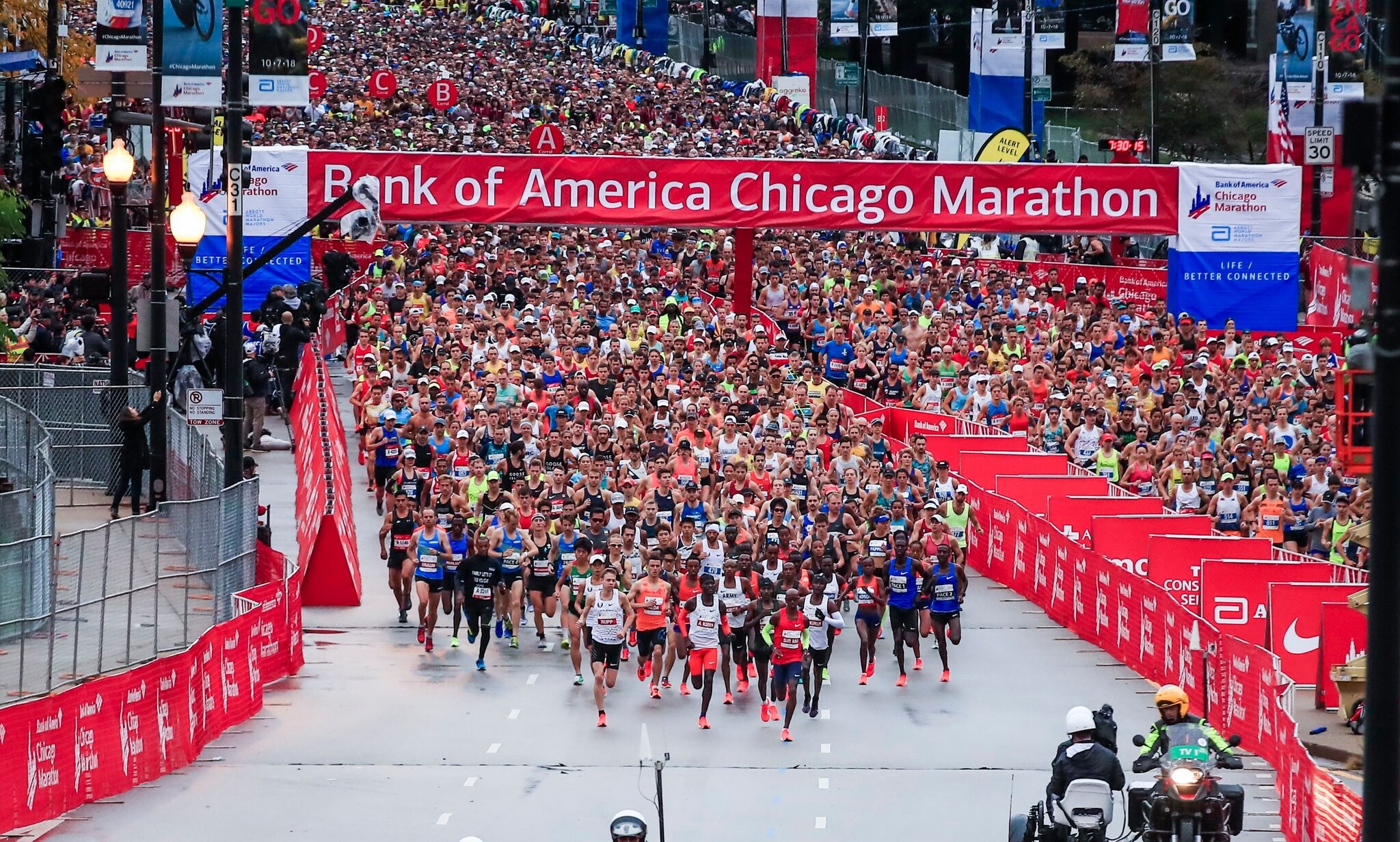
But the roots of the modern Bank of America Chicago Marathon traces back to 1982 when, in its sixth year, known as America’s Marathon/Chicago, the event rebooted, much as New York City 1976 was a reordering for the Big Apple 26-miler.
In America’s bicentennial year, the New York Road Runners expanded their event from four laps of Central Park to all five boroughs. It was a gamble. But in one fell swoop, the event grabbed the public’s attention, took on international importance, and ushered in a new era of urban marathons, even though they had run six previous marathons under the same banner.
In 1982, Chicago’s move from a regional marathon to the big time came about because of two things: one, the $600,000 budget put up by race sponsor, Beatrice Foods, and the hiring of one Robert Bright III of Far Hills, New Jersey to serve as athlete recruiter.
Bob Bright (left) at the Litchfield Hills Road Race in Connecticut with Nike east coast promo man, Todd Miller.
Recommended to the event by Olympians Frank Shorter and Garry Bjorlund, Bright had successfully elevated a modest 15K road race in Far Hills, New Jersey, called the Midland Run, to international prominence in 1980. So loaded was the Midland Run elite field, Sports Illustrated sent a reporter and photographer to cover the event.
What Bright brought to Chicago was zeal and a vision. Before Bright, there had been very little orchestration of competitive marathon racing. The Bright idea was simple: actively recruit a field of international athletes who came ready to run, so elite competition would become the hallmark of the event.
First, a brief history. For many decades, Boston dominated the marathon scene as essentially the only game in town. Yes, there was the Yonkers Marathonin New York, first contested in 1907; the Polytechnic Harriers’ Marathon for the Sporting Life trophy in England, which began in 1909. The Košice Peace Marathon in Slovakia joined the club in October 1924; Enschede and Fukuoka in 1947; Beppu in ’52.
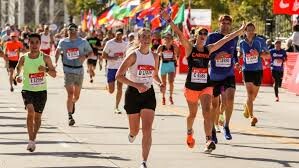
But the Boston Athlettic Association’s attitude from its marathon’s inception in 1897 up to the mid-1980s remained, “We’re running our race on Patriots’ Day starting in Hopkinton, Massachusetts at noon. It will cost you three bucks to enter. See you at the bus line for the ride out to the start.” No bells, no whistles, no invitations.
When New York City debuted in 1970, it spun four laps of Central Park to total its 26.2 miles. But in 1976, with the city in a major financial difficulty amidst America’s Bicentennial, the New York Road Runners boldly took its marathon from the confines of Central Park and expanded it through all five boroughs hoping to attract more tourists.
Race Director Fred Lebow recruited a few big guns upfront to entice press coverage, Olympic gold and silver medalist Frank Shorter along with Shorter’s rival, American record holder from Boston 1975, fellow Olympian, Bill Rodgers. Everyone else filled in from behind, with the City of New York being the true star attraction.
First considered a onetime gimmick, the five-borough experience proved so successful, the NYRRs embraced it as the path forward. Still, the actual races in NYC were never very competitive. Rodgers won by three minutes over Shorter in ‘76, 2:10:10 to 2:13:12. Then dominated for the next three years, as well.
Chicago 1982 would be the first, full–blown, orchestrated marathon race, as Bright had a specific recruitment strategy.
“We wanted six guys who thought coming in that they had a chance to win,” said Bright. “Then we wanted six more behind them who figured they had a shot at the top 10. So, right away we didn’t go after a guy like Alberto Salazar (who was ranked number one in the world after wins in New York City in 1980, a short-course world record in ‘81, and a Boston title in 1982.)
“And if you figure that a top race has a main pack of 10 to 15 athletes, you’re going to double that number in invitations. That guarantees that even if two of every five don’t run well for one reason or another, you still have a big group ready to race.”
Redundancy was the key, the money, the magnet. The total amount taken home by runners from Chicago in 1982 was $130,000.
This was when Boston was still embracing its amateur roots, stiff-arming the new breed of runners looking to get paid for their craft. In New York, Lebow had to keep his payments under the table in order to avoid being billed for city services on race day.
Chicago put up $48,000 in prize money for the men in 1982, with $12,000 going to the winner, 600 for 15th place. The women’s split was $30,000, with $10,000 awarded for the win through $500 for 10th. The remaining $52,000 represented the grease in upfront, under-the-table appearance fees.
“We wanted the money to be respectable, but not overwhelming the first year,“ explained Bright, whose history as a dog sled racer and thoroughbred horse trainer made him one of the best judges of the running animal. “We didn’t want it to appear like the race was store-bought, like the Atlantic City pro race a few years ago, where the money was good, but no one took the race seriously.
“So, we put up $78,000 in prize money, which, to the public, doesn’t sound like all that much. But when you added on the appearance money, it represented as much as any other race handed out.“
For the money on offer, and the prestige of doing well against a field of that caliber – as good as the group assembled at the 1980 Moscow Olympics, according to Sweden’s Kjell Eric Stahl – what came down in Chicago 1982 was a new course record by University of Michigan grad Greg Meyer (2:10:59), along with 22 more sub -2:220s, and nine personal bests out of the first 11 finishers.
The top five women followed suit, led by Northampton, Massachusetts’s Nancy Conz, whose 2:33:33 also represented a new course record for Chicago, some 12 minutes faster than the old mark.
The event treated the athletes well; offered a new opportunity in the fall, competing with New York City; Chicago witnessed its first truly world-class marathon; the sponsor, Beatrice Foods, received enormous visibility for its dollars; and a new professionalism attended the art of marathon orchestration. Chicago was now the new kid on the block, with toys to match anyone’s.
But now the pressure was on, not just to maintain its pace, but to top itself in 1983. The story continues.
by Toni Reavis
Login to leave a comment
Bank of America Chicago
Running the Bank of America Chicago Marathon is the pinnacle of achievement for elite athletes and everyday runners alike. On race day, runners from all 50 states and more than 100 countries will set out to accomplish a personal dream by reaching the finish line in Grant Park. The Bank of America Chicago Marathon is known for its flat and...
more...Simpson, Frisbie, Rodriguez, Estrada Commit to Run Crazy 8s 8K Hoping for USATF National Championshisp
With the announcement that the Ballad Health Niswonger Children’s Network Crazy 8s 8K Run will host both the USATF Men’s & Women’s 8K Road Championship Presented by Gatorade on July 20th, competition is heating up for both championships.
Olympic bronze medalist Jenny Simpson and Annie Frisbie will be two of the headliners in the women’s field with Isai Rodriguez and Diego Estrada the early favorites on the men’s side.“We’re off to a good start,” said co-director Hank Brown.
“We are receiving tremendous interest from some of the best runners from around the country. We’re expecting 40-50 elite runners in the USATF championship which will be very exciting.”
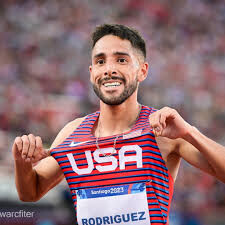
Simpson is arguably one of the more recognizable women’s middle/long distance runners in the United States. She won the bronze medal in the 1500 meters at the 2016 Rio Olympics, the gold medal at the 2011 World Championships, and followed with silver medals at the 2013 and 2017 World Championships Simpson is a former American record holder for the 3000 meter steeplechase and has represented the United States at three Olympics – 2008 Beijing, 2012 London, and 2016 Rio.
Frisbie is on a personal tear recently, running personal bests in 2024 for the 10K (31:49), 15K (49:28), 25K (1:22:37), and half marathon (1:07:34, 1st place). She is running her best and is in excellent shape.In 2023, the men’s race came down to a sprint finish in J. Fred Johnson Stadium with Clayton Young outlasting Andrew Colley and Isai Rodriguez. Young will be going to Paris to run the marathon and Colley is nursing a sore foot, so Rodriguez will be the top returning finisher (Colley is still tentative).
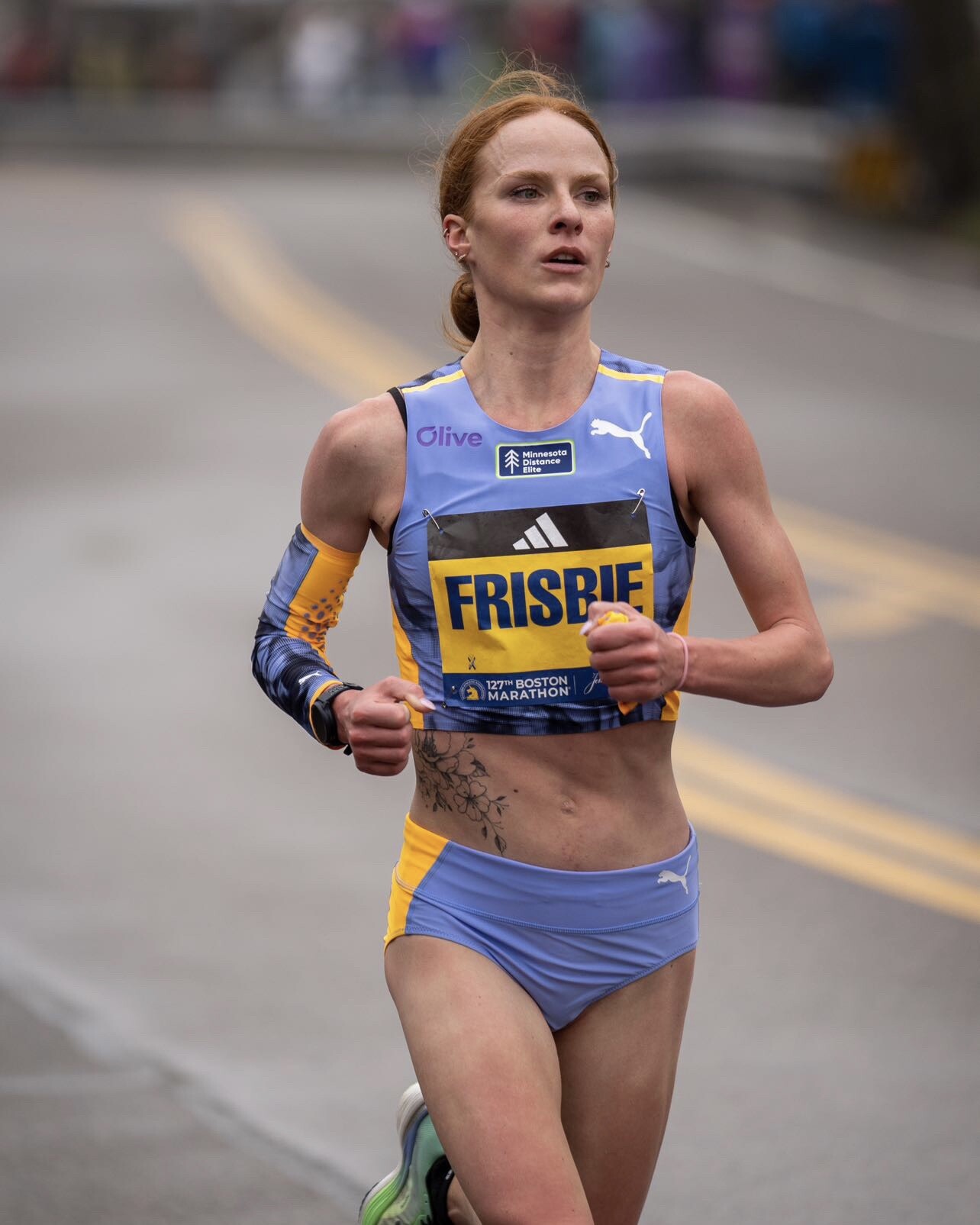
Rodriguez has a 10,000 meter personal-best under 28 minutes and was the Pan Am Games 10k champion in 2023.Estrada is a veteran runner making a successful comeback in 2024. He represented his native Mexico in the 10,000 meters in the 2012 London Olympics, but became a US citizen in 2014 at which time became eligible to represent the USA in international competition.
He has an impressive 10k time of 27:30 set in 2015, and 5K of 13:31 at the Carlsbad 5K in 2014. He is now 34 and quite possibly running his best times in 2024.
He placed fifth at the Aramco Houston Half Marathon in January, running a very fast 1:00:49, which is a personal best at that distance and tnen followed that a thrid-. place finish at the USATF 15K Championship in Jacksonville. In May he set an American best of 1:13:09 at the USATF 25K Championship, winning the Amway 25K River Run in Grand Rapids, MI.
“We are thrilled to have these guys and gals at Crazy 8s,” said Brown. “When we decided to host the USATF 8K Championship this is exactly the caliber of runners we were hoping to attract to Kingsport.”
The Regional Eye Center is offering a $10,008 American Record bonus for men who can break Alberto Salazar’s record of 22:04 (1981) or women who can break Deena Kastor’s record of 24:36 (2005).
In addition to the bonus, the race is offering prize money to the top 10 in the USATF Men’s and Women’s Championships.Sponsors are Ballad Health Niswonger Children’s Network, Gatorade, The Regional Eye Center, Eastman Credit Union, Kingsport Pediatric Dentistry, Food City, Martin Dentistry, Mycroft Signs, Culligan, Associated Orthopaedics of Kingsport, and JA Street.
by TriCitiesSports.com
Login to leave a comment
Crazy 8s 8k Run
Run the World’s Fastest 8K on the world famous figure-8 course on beautiful candle-lit streets with a rousing finish inside J. Fred Johnson Stadium. Crazy 8s is home to womens’ 8-kilometer world record (Asmae Leghzaoui, 24:27.8, 2002), and held the men’s world record (Peter Githuka, 22:02.2, 1996), until it was broken in 2014. Crazy 8s wants that mens’ record back. ...
more...The Pill That Over Half the Distance Medallists Used at the 2023 Worlds
What's the deal with sodium bicarbonate?What if there was a pill, new to the market this year, that was used by more than half of the distance medalists at the 2023 World Athletics Championships? A supplement so in-demand that there was a reported black market for it in Budapest, runners buying from other runners who did not advance past the preliminary round — even though the main ingredient can be found in any kitchen?
How did this pill become so popular? Well, there are rumors that Jakob Ingebrigtsen has been taking it for years — rumors that Ingebrigtsen’s camp and the manufacturers of the pill will neither confirm nor deny.
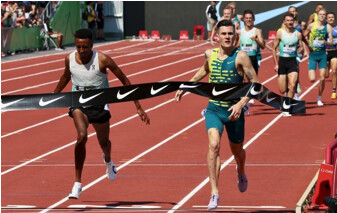
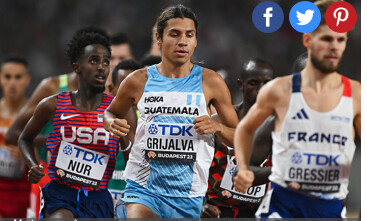
So about this pill…does it work? Does it actually boost athletic performance? Ask a sports scientist, someone who’s studied it for more than a decade, and they’ll tell you yes.
“There’s probably four or five legal, natural supplements, if you will, that seem to have withstood the test of time in terms of the research literature and [this pill] is one of those,” says Jason Siegler, Director of Human Performance in the College of Health Solutions at Arizona State University.
But there’s a drawback to this pill. It could…well, let’s allow Luis Grijalva, who used it before finishing 4th in the World Championship 5,000m final in Budapest, to explain.
“I heard stories if you do it wrong, you chew it, you kind of shit your brains out,” Grijalva says. “And I was a little bit scared.”
The research supports that, too.
“[Gastrointestinal distress] has by far and away been the biggest hurdle for this supplement,” Siegler says.Okay, enough with the faux intrigue. If you’ve read the subtitle of this article, you know the pill we are talking about is sodium bicarbonate. Specifically, the Maurten Bicarb System, which has been available to the public since February and which has been used by some of the top teams in endurance sports: cycling juggernaut Team Jumbo-Visma and, in running, the On Athletics Club and NN Running Team. (Maurten has sponsorship or partnership agreements with all three).Some of the planet’s fastest runners have used the Maurten Bicarb System in 2023, including 10,000m world champion Joshua Cheptegei, 800m silver medalist Keely Hodgkinson, and 800m silver medalist Emmanuel Wanyonyi. Faith Kipyegon used it before winning the gold medal in the 1500m final in Budapest — but did not use it before her win in the 5,000m final or before any of her world records in the 1500m, mile, and 5,000m.
Herman Reuterswärd, Maurten’s head of communications, declined to share a full client list with LetsRun but claims two-thirds of all medalists from the 800 through 10,000 meters (excluding the steeplechase) used the product at the 2023 Worlds.
After years of trial and error, Maurten believes it has solved the GI issue, but those who have used their product have reported other side effects. Neil Gourley used sodium bicarbonate before almost every race in 2023, and while he had a great season — British champion, personal bests in the 1500 and mile — his head ached after races in a way it never had before. When Joe Klecker tried it at The TEN in March, he felt nauseous and light-headed — but still ran a personal best of 27:07.57. In an episode of the Coffee Club podcast, Klecker’s OAC teammate George Beamish, who finished 5th at Worlds in the steeplechase and used the product in a few races this year, said he felt delusional, dehydrated, and spent after using it before a workout this summer.
“It was the worst I’d felt in a workout [all] year, easily,” Beamish said.
Not every athlete who has used the Maurten Bicarb System has felt side effects. But the sport as a whole is still figuring out what to do about sodium bicarbonate.
Many athletes — even those who don’t have sponsorship arrangements with Maurten — have added it to their routines. But Jumbo-Visma’s top cyclist, Jonas Vingegaard — winner of the last two Tours de France — does not use it. Neither does OAC’s top runner, Yared Nuguse, who tried it a few times in practice but did not use it before any of his four American record races in 2023.“I’m very low-maintenance and I think my body’s the same,” Nuguse says. “So when I tried to do that, it was kind of like, Whoa, what is this? My whole body felt weird and I was just like, I either did this wrong or this is not for me.”
How sodium bicarbonate works
The idea that sodium bicarbonate — aka baking soda, the same stuff that goes in muffins and keeps your refrigerator fresh — can boost athletic performance has been around for decades.
“When you’re exercising, when you’re contracting muscle at a really high intensity or a high rate, you end up using your anaerobic energy sources and those non-oxygen pathways,” says Siegler, who has been part of more than 15 studies on sodium bicarbonate use in sport. “And those pathways, some of the byproducts that they produce, one of them is a proton – a little hydrogen ion. And that proton can cause all sorts of problems in the muscle. You can equate that to that sort of burn that you feel going at high rates. That burn, most of that — not directly, but indirectly — is coming from the accumulation of these little hydrogen ions.”
As this is happening, the kidneys produce bicarbonate as a defense mechanism. For a while, bicarbonate acts as a buffer, countering the negative effects of the hydrogen ions. But eventually, the hydrogen ions win.The typical concentration of bicarbonate in most people hovers around 25 millimoles per liter. By taking sodium bicarbonate in the proper dosage before exercise, Siegler says, you can raise that level to around 30-32 millimoles per liter.
“You basically have a more solid first line of defense,” Siegler says. “The theory is you can go a little bit longer and tolerate the hydrogen ions coming out of the cell a little bit longer before they cause any sort of disruption.”
Like creatine and caffeine, Siegler says the scientific literature is clear when it comes to sodium bicarbonate: it boosts performance, specifically during events that involve short bursts of anaerobic activity. But there’s a catch.
***
Bicarb without the cramping
Sodium bicarbonate has never been hard to find. Anyone can swallow a spoonful or two of baking soda with some water, though it’s not the most appetizing pre-workout snack. The problem comes when the stomach tries to absorb a large amount of sodium bicarbonate at once.
“You have a huge charged load in your stomach that the acidity in your stomach has to deal with and you have a big shift in the partial pressure of carbon dioxide across the gut,” Siegler says. “And that’s what gives you the cramping.”
A few years ago, Maurten was trying to solve a similar problem for marathoners trying to ingest large amounts of carbohydrates during races. The result was their carbohydrate drink, which relies on something called a hydrogel to form in the stomach. The hydrogel resists the acidity of the stomach and allows the carbohydrates to be absorbed in the intestine instead, where there is less cramping.
“We thought, okay, we are able to solve that one,” Reuterswärd says. “Could we apply the hydrogel technology to something else that is really risky to consume that could be beneficial?”
For almost four years, Maurten researched the effects of encapsulating sodium bicarbonate in hydrogels in its Swedish lab, conducting tests on middle-distance runners in Gothenburg. Hydrogels seemed to minimize the risk, but the best results came when hydrogels were paired with microtablets of sodium bicarbonate.
The result was the Maurten Bicarb System — “system,” because the process for ingesting it involves a few steps. Each box contains three components: a packet of hydrogel powder, a packet of tiny sodium bicarbonate tablets, and a mixing bowl. Mix the powder with water, let it stand for a few minutes, and sprinkle in the bicarb.The resulting mixture is a bit odd. It’s gooey. It’s gray. It doesn’t really taste like anything. It’s not quite liquid, not quite solid — a yogurt-like substance flooded with tiny tablets that you eat with a spoon but swallow like a drink.
The “swallow” part is important. Chew the tablets and the sodium bicarbonate will be absorbed before the hydrogels can do their job. Which means a trip to the toilet may not be far behind.
When Maurten launched its Bicarb System to the public in February 2023, it did not have high expectations for sales in year one.
“It’s a niche product,” Reuterswärd says. “From what we know right now, it maybe doesn’t make too much sense if you’re an amateur, if you’re just doing 5k parkruns.”
But in March, Maurten’s product began making headlines in cycling when it emerged that it was being used by Team Jumbo-Visma, including by stars Wout van Aert and Primož Roglič. Sales exploded. Because bicarb dosage varies with bodyweight, Maurten’s system come in four “sizes.” And one size was selling particularly well.
“If you’re an endurance athlete, you’re around 60-70 kg (132-154 lbs),” Reuterswärd says. “We had a shortage with the size that corresponded with that weight…The first couple weeks, it was basically only professional cyclists buying all the time, massive amounts. And now we’re seeing a similar development in track & field.”
If there was a “Jumbo-Visma” effect in cycling, then this summer there was a “Jakob Ingebrigtsen” effect in running.To be clear: there is no official confirmation that Ingebrigtsen uses sodium bicarbonate. His agent, Daniel Wessfeldt, did not respond to multiple emails for this story. When I ask Reuterswärd if Ingebrigtsen has used Maurten’s product, he grows uncomfortable.
“I would love to be very clear here but I will have to get back to you,” Reuterswärd says (ultimately, he was not able to provide further clarification).
But when Maurten pitches coaches and athletes on its product, they have used data from the past two years on a “really good” 1500 guy to tout its effectiveness, displaying the lactate levels the athlete was able to achieve in practice with and without the use of the Maurten Bicarb System. That athlete is widely believed to be Ingebrigtsen. Just as Ingebrigtsen’s success with double threshold has spawned imitators across the globe, so too has his rumored use of sodium bicarbonate.
Grijalva says he started experimenting with sodium bicarbonate “because everybody’s doing it.” And everybody’s doing it because of Ingebrigtsen.
“[Ingebrigtsen] was probably ahead of everybody at the time,” Grijalva said. “Same with his training and same with the bicarb.”
OAC coach Dathan Ritzenhein took sodium bicarbonate once before a workout early in his own professional career, and still has bad memories of swallowing enormous capsules that made him feel sick. Still, he was willing to give it a try with his athletes this year after Maurten explained the steps they had taken to reduce GI distress.
“Certainly listening to the potential for less side effects was the reason we considered trying it,” says Ritzenhein. “I don’t know who is a diehard user and thinks that it’s really helpful, but around the circuit I know a lot of people that have said they’ve [tried] it.”
Coach/agent Stephen Haas says a number of his athletes, including Gourley, 3:56 1500 woman Katie Snowden, and Worlds steeple qualifier Isaac Updike, tried bicarb this year. In the men’s 1500, Haas adds, “most of the top guys are already using it.”
Yet 1500-meter world champion Josh Kerr was not among them. Kerr’s nutritionist mentioned the idea of sodium bicarbonate to him this summer but Kerr chose to table any discussions until after the season. He says he did not like the idea of trying it as a “quick fix” in the middle of the year.
“I review everything at the end of the season and see where I could get better,” Kerr writes in a text to LetsRun. “As long as the supplement is above board, got all the stamps of approvals needed from WADA and the research is there, I have nothing against it but I don’t like changing things midseason.”
***
So does it actually work?
Siegler is convinced sodium bicarbonate can benefit athletic performance if the GI issues can be solved. Originally, those benefits seemed confined to shorter events in the 2-to 5-minute range where an athlete is pushing anaerobic capacity. Buffering protons does no good to short sprinters, who use a different energy system during races.
“A 100-meter runner is going to use a system that’s referred to the phosphagen or creatine phosphate system, this immediate energy source,” Siegler says. “…It’s not the same sort of biochemical reaction that eventuates into this big proton or big acidic load. It’s too quick.”
But, Siegler says, sodium bicarbonate could potentially help athletes in longer events — perhaps a hilly marathon.
“When there’s short bursts of high-intensity activity, like a breakaway or a hill climb, what we do know now is when you take sodium bicarbonate…it will sit in your system for a number of hours,” Siegler says. “So it’s there [if] you need it, that’s kind of the premise behind it basically. If you don’t use it, it’s fine, it’s not detrimental. Eventually your kidneys clear it out.”Even Reuterswärd admits that it’s still unclear how much sodium bicarbonate helps in a marathon — “honestly, no one knows” — but it is starting to be used there as well. Kenya’s Kelvin Kiptum used it when he set the world record of 2:00:35at last month’s Chicago Marathon; American Molly Seidel also used it in Chicago, where she ran a personal best of 2:23:07.
Siegler says it is encouraging that Maurten has tried to solve the GI problem and that any success they experience could spur other companies to research an even more effective delivery system (currently the main alternative is Amp Human’s PR Lotion, a sodium bicarbonate cream that is rubbed into the skin). But he is waiting for more data before rendering a final verdict on the Maurten Bicarb System.
“I haven’t seen any peer-reviewed papers yet come out so a bit I’m hesitant to be definitive about it,” Siegler said.
Trent Stellingwerff, an exercise physiologist and running coach at the Canadian Sport Institute – Pacific, worked with Siegler on a 2020 paper studying the effect of sodium bicarbonate on elite rowers. A number of athletes have asked him about the the Maurten Bicarb System, and some of his marathoners have used the product. Like Siegler, he wants to see more data before reaching a conclusion.
“I always follow the evidence and science, and to my knowledge, as of yet, I’m unaware of any publications using the Maurten bicarb in a double-blind, placebo-controlled clinical trial,” Stellingwerff writes in a text to LetsRun. “So without any published data on the bicarb version, I can’t really say it does much.”
The closest thing out there right now is a British study conducted by Lewis Goughof Birmingham City University and Andy Sparks of Edge Hill University. In a test of 10 well-trained cyclists, Gough and Sparks found the Maurten Bicarb System limited GI distress and had the potential to improve exercise performance. Reuterswärd says the study, which was funded by Maurten, is currently in the review process while Gough and Sparks suggested further research to investigate their findings.
What about the runners who used sodium bicarbonate in 2023?
Klecker decided to give bicarb a shot after Maurten made a presentation to the OAC team in Boulder earlier this year. He has run well using bicarb (his 10,000 pb at The TEN) and without it (his 5,000 pb in January) and as Klecker heads into an Olympic year, he is still deciding whether the supposed benefits are worth the drawbacks, which for him include nausea and thirst. He also says that when he has taken the bicarb, his muscles feel a bit more numb than usual, which has made it more challenging for him to gauge his effort in races.
“There’s been no, Oh man I felt just so amazing today because of this bicarb,” Klecker says. “If anything, it’s been like, Oh I didn’t take it and I felt a bit more like myself.”
Klecker also notes that his wife and OAC teammate, Sage Hurta-Klecker, ran her 800m season’s best of 1:58.09 at the Silesia Diamond League on July 16 — the first race of the season in which she did not use bicarb beforehand.
A number of athletes in Mike Smith‘s Flagstaff-based training group also used bicarb this year, including Grijalva and US 5,000 champion Abdihamid Nur. Grijalva did not use bicarb in his outdoor season opener in Florence on June 2, when he ran his personal best of 12:52.97 to finish 3rd. He did use it before the Zurich Diamond League on August 31, when he ran 12:55.88 to finish 4th.“I want to say it helps, but at the same time, I don’t want to rely on it,” Grijalva says.
Almost every OAC athlete tried sodium bicarbonate at some point in 2023. Ritzenhein says the results were mixed. Some of his runners have run well while using it, but the team’s top performer, Nuguse, never used it in a race. Ritzenhein wants to continue testing sodium bicarbonate with his athletes to determine how each of them responds individually and whether it’s worth using moving forward.
That group includes Alicia Monson, who experimented with bicarb in 2023 but did not use it before her American records at 5,000 and 10,000 meters or her 5th-place finish in the 10,000 at Worlds.
“It’s not the thing that’s going to make or break an athlete,” Ritzenhein says. “…It’s a legal supplement that has the potential, at least, to help but it doesn’t seem to be universal. So I think there’s a lot more research that needs to be done into it and who benefits from it.”
The kind of research scientists like Stellingwerff want to see — double-blind, controlled clinical trials — could take a while to trickle in. But now that anyone can order Maurten’s product (it’s not cheap — $65 for four servings), athletes will get to decide for themselves whether sodium bicarbonate is worth pursuing.
“The athlete community, obviously if they feel there’s any sort of risk, they’re weighing up the risk-to-benefit ratio,” Siegler said. “The return has got to be good.”
Grijalva expects sodium bicarbonate will become part of his pre-race routine next year, along with a shower and a cup of coffee. Coffee, and the caffeine contained wherein, may offer a glimpse at the future of bicarb. Caffeine has been widely used by athletes for longer than sodium bicarbonate, and the verdict is in on that one: it works. Yet plenty of the greats choose not to use it.
Nuguse is among them. He does not drink coffee — a fact he is constantly reminded of by Ritzenhein.
“I make jokes almost every day about it,” Ritzenhein says. “His family is Ethiopian – coffee tradition and ceremony is really important to them.”
Ritzenhein says he would love it if Nuguse drank a cup of coffee sometime, but he’s not going to force it on him. Some athletes, Ritzenhein says, have a tendency to become neurotic about these sorts of things. That’s how Ritzenhein was as an athlete. It’s certainly how Ritzenhein’s former coach at the Nike Oregon Project, Alberto Salazar, was — an approach that ultimately earned Salazar a four-year ban from USADA.
Ritzenhein says he has no worries when it comes to any of his athletes using sodium bicarbonate — Maurten’s product is batch-tested and unlike L-carnitine, there is no specific protocol that must be adhered to in order for athletes to use it legally under the WADA Code. Still, there is something to be said for keeping things simple.
“Yared knows how his body feels,” Ritzenhein says. “…He literally rolls out of practice and comes to practice like a high schooler with a Eggo waffle in hand. Probably more athletes could use that kind of [approach].”
Talk about this article on our world-famous fan forum / messageboard.
by Let’s Run
Login to leave a comment
The Mysterious Case of the Asthmatic Olympians
You won’t freeze your lungs exercising outdoors this winter, but there are reasons to be cautious about inhaling extremely cold air
When an athlete reaches the podium despite a prior medical event—a cancer diagnosis, say, or a car accident—we consider it a triumph of the human spirit. When a bunch of athletes do so, and all of them have suffered the same setback, we can be forgiven for wondering what’s going on. According to the International Olympic Committee, roughly one in five competitive athletes suffers from exercise-induced bronchoconstriction, or EIB, an asthma-like narrowing of the airways triggered by strenuous exercise. The numbers are even higher in endurance and winter sports. Puzzlingly, studies have found that athletes with EIB who somehow make it to the Olympics are more likely to medal. What’s so great about wheezing, chest tightness, and breathlessness?
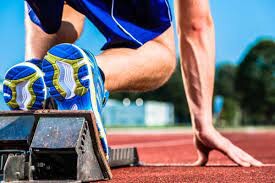
The answer isn’t what you’re thinking. Sure, it’s possible that some athletes get a boost because an EIB diagnosis allows them to use otherwise-banned asthma medications. But there’s a simpler explanation: breathing high volumes of cold or polluted air dries out the airways, leading to an overzealous immune response and potential long-term damage. “It’s well established that high training loads and ventilatory work increase the degree of airway hyper-responsiveness and hence development of asthma and EIB,” explains Morten Hostrup, a sports scientist at the University of Copenhagen and lead author of a new review on EIB in the Scandinavian Journal of Medicine and Science in Sports. In other words, the athletes who train hard enough to podium are more likely to develop EIB as a result.
That trade-off might be worthwhile if it means competing at the Olympics. For those of us who simply enjoy spending our winter days vigorously exploring the outdoors, the risk of EIB remains mostly unknown territory. Activities with the highest risk involve sustained efforts of at least five minutes, particularly if they take place in cold or polluted air. Cold air doesn’t hold much moisture, so it dries the airways. This affects skiers, runners, and triathletes, among others. Indoor environments like pools and ice rinks are also a problem, because of the chloramines produced by pool water and exhaust from Zambonis. As a result, swimmers, ice skaters, and hockey players are also at elevated risk of EIB. Over time, repeated attacks can damage the cells that line the airways.
Unfortunately, many athletes develop symptoms of EIB without realizing the underlying problem. After all, the feeling that you can’t catch your breath is pretty much written into the job description of most endurance activities. But starting in the 1990s, sports scientists began to suspect that top athletes had more breathing problems than would be expected. Before the 1998 Winter Games, U.S. Olympic Committee physiologists examined Nagano-bound athletes to see whose airways showed abnormal constriction in response to arduous exercise. Almost a quarter of the athletes tested positive, including half the cross-country ski team.
One reason EIB often flies under the radar is that the usual diagnostic workups aren’t challenging enough to provoke an attack in conditioned athletes. Among the accusations against disgraced coach Alberto Salazar was that he showed athletes how to fool EIB tests to get permission to use asthma meds. “He had a specific protocol,” star 5,000-meter runner Lauren Fleshman told ProPublica in 2015. “You would go to the local track and run around the track, work yourself up to having an asthma attack, and then run down the street, up 12 flights of stairs to the office and they would be waiting to test you.” Salazar certainly gave some shady advice, including encouraging Fleshman to push for the highest possible dosage of medication. But his tips for gaming the asthma test were similar to what USOC physiologists advocate, and an IOC consensus statement published last spring also concluded that more intense exercise challenges are better for diagnosing EIB in conditioned athletes. If you’re really fit, in other words, the rinky-dink treadmill in the doctor’s office isn’t going to push you hard enough.
If you do get an EIB diagnosis, your doctor can prescribe asthma medication, including inhaled corticosteroids like fluticasone and airway dilators like salbutamol. If you’re an elite athlete subject to drug testing, you’ll need to tread carefully, since some of those medications are either banned or restricted to a maximum dosage. Hostrup and his colleagues note that there’s also evidence that fish oils high in omega-3 fatty acids, vitamin C, and even caffeine might help reduce EIB symptoms. And on the non-pharmaceutical side, you can minimize the chance of an attack by doing a thorough warm-up of 20 to 30 minutes, including six to eight 30-second sprints. This can temporarily deplete the inflammatory cells that would otherwise trigger an airway-narrowing attack.
The best outcome of all, of course, is to avoid developing the problem in the first place. In 2008, I interviewed a Canadian military scientist named Michel Ducharme, who told me stories of cross-country skiers swallowing Vaseline in an attempt to protect their airways from the cold. This is a terrible idea on many levels—and, he assured me, totally unnecessary. Air warms up very quickly when you inhale it, so there’s no risk of freezing your throat tissue. But dryness is another question, and scientists have reconsidered whether some kind of protection—just not Vaseline—could be useful if you’re going hard on cold days.
One option is a heat-and-moisture-exchange mask, which warms and moistens the air you inhale. A company called AirTrim makes them with a range of levels of resistance for training or racing. Several studies have found that this type of mask seems to reduce EIB attacks. Research by Michael Kennedy at the University of Alberta found that EIB risk increases significantly when temperatures drop below about five degrees Fahrenheit. The precise threshold depends on conditions and individual susceptibility, so if you start coughing or wheezing, that’s a sign your airways are irritated. If you don’t have a breathing mask, a scarf or a Buff over your mouth can offer a temporary solution.
Don’t take all this as a warning against getting outdoors in the winter. I live in Canada, so staying inside when it’s below five degrees Fahrenheit would be a death sentence. But I’m no longer as macho about the cold as I used to be. I wear puffy mittens and merino base layers, and when my snot starts to freeze I cover my mouth and nose. Athletes with EIB may do better than their unimpaired peers at the Olympics, but that’s one edge I can do without.
by Outside Online
Login to leave a comment
Nike and Alberto Salazar settle $20 million lawsuit with Mary Cain over alleged abuse
On Monday, Nike, disgraced coach Alberto Salazar and distance runner Mary Cain reached a settlement in the $20 million lawsuit filed by Cain, as reported by The Oregonian.
The lawsuit accused Salazar of emotional and physical abuse towards Cain and highlighted Nike’s alleged failure to provide adequate oversight during her time with Salazar. Cain, who ran for Nike’s Oregon Project from 2012 to 2016, spoke out in 2019 about abuse within the program, exposing broader cultural issues at Nike, including a reported “boys’ club” atmosphere.
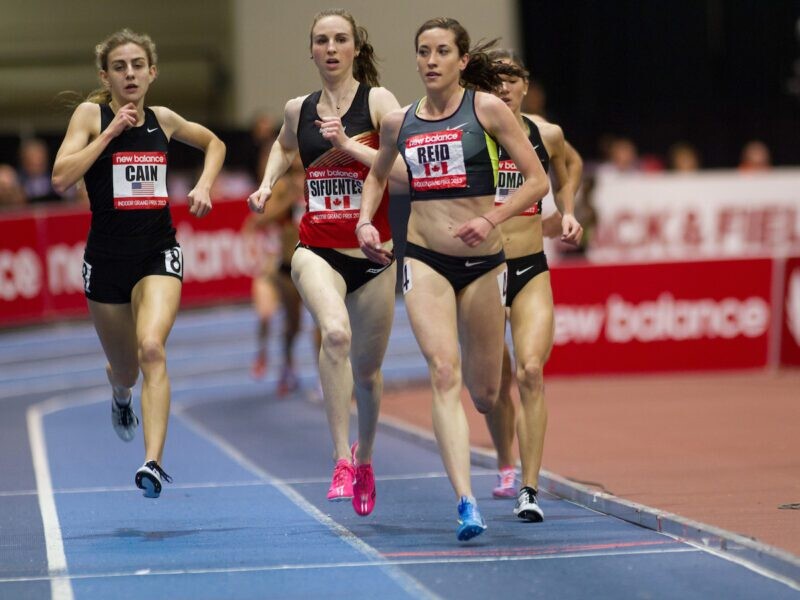
Salazar, once celebrated for coaching Olympic medallists Mo Farah, Galen Rupp and Matt Centrowitz, faced a permanent ban from working with U.S. track and field by U.S. SafeSport for alleged sexual assault and a doping scandal. Nike disbanded the Oregon Project in 2019, and Salazar’s name was removed from a building on the company’s campus following the ban.
Cain’s allegations against Salazar included controlling behavior, inappropriate comments about her body and humiliating practices, which led to depression, an eating disorder and self-harm. Nike was implicated in the lawsuit for allegedly not taking sufficient action to protect Cain, a sponsored athlete. Salazar denied the allegations, emphasizing his commitment to athletes’ well-being. Cain filed the $20 million lawsuit in 2021.
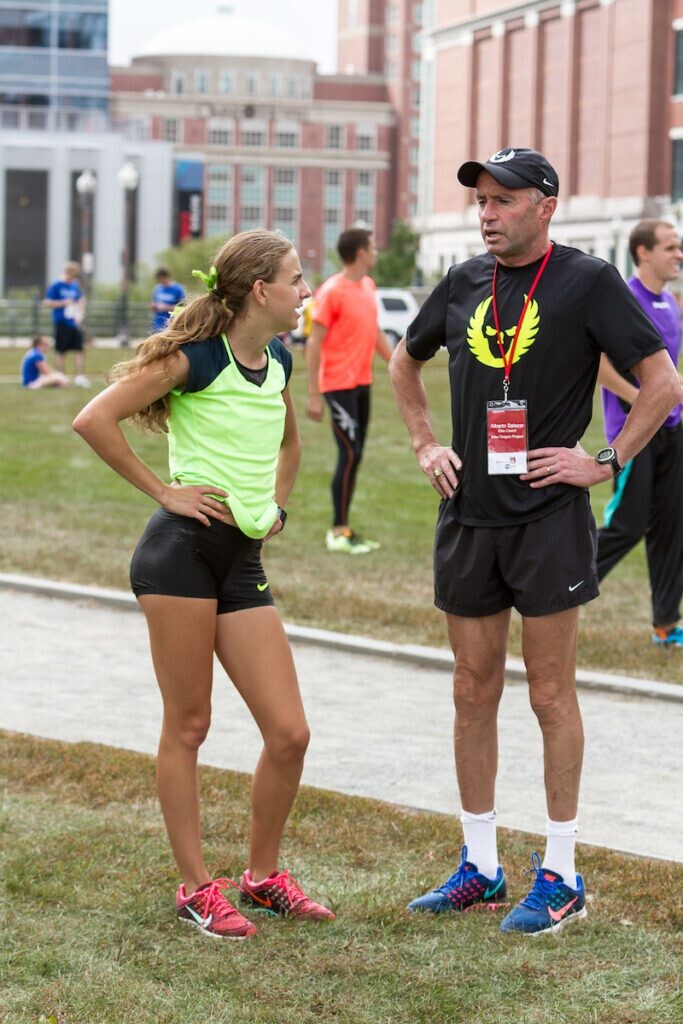
Numerous runners have come out and criticized Nike for its lack of support for female athletes. In 2018, U.S. Olympian Allyson Felix called out the brand for allegedly asking her to take a 70 per cent pay cut during her pregnancy, prompting Felix to leave Nike and join the female-powered brand Athleta before the Tokyo Olympics.
by Marley Dickinson
Login to leave a comment
Galen Rupp: Healthy Again After Two Rough Years
The past two years have been the most difficult of Galen Rupp’s career.
The four-time Olympian’s racing in 2022 and the first nine months of 2023 have included a mix of subpar results and DNFs. The last time he finished a marathon was July 2022, when he ran 2:09:36 at the 2022 World Championships in Eugene, Oregon, and finished 19th. Cameras caught him walking for short stretches during the final miles of the race. Last November, he started the New York City Marathon but dropped out before 18 miles. At the NYC Half in March this year, which was the last time he raced, Rupp was 17th in 1:04:57.
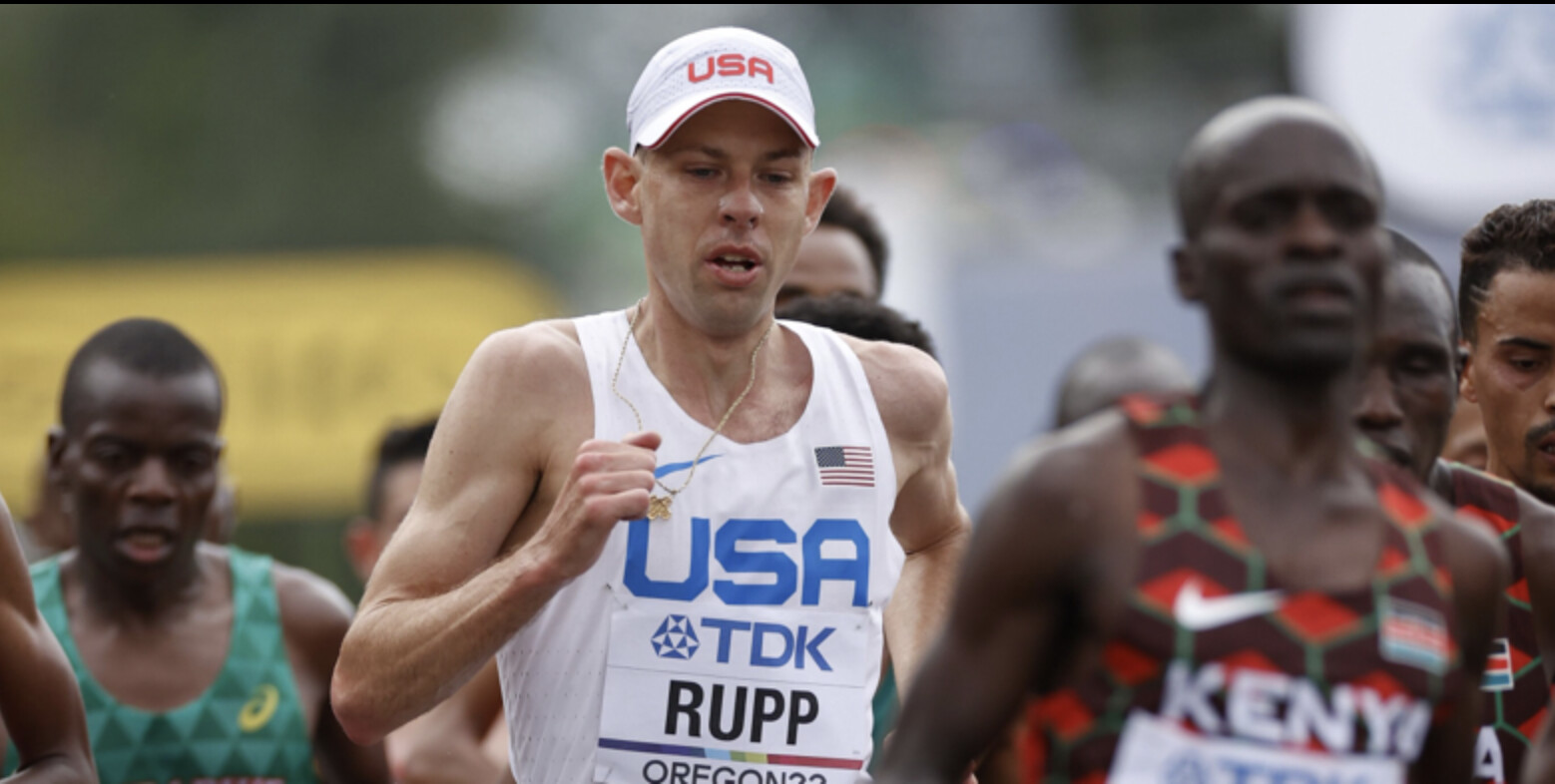
You’d have to go back to October 2021, when he finished second at the Chicago Marathon in 2:06:35, that he last had a result he was happy about.
Now, Rupp, 37, is back on the starting line at Chicago, having overhauled his mechanics and having spent the past two months away from Portland, Oregon, where he lives, and training in Flagstaff, Arizona, where his coach, Mike Smith, lives. For the first time in several years, Rupp is free of the back pain that had plagued him. He spoke to reporters at a press conference in Chicago. Here’s what we learned:
He was in pain just walking around last summer
After last year’s world championships, Rupp tried to push through the pain for his New York City Marathon buildup, but it didn’t work. Smith told Rupp that he needed to get fully healthy before he could start training again.
The NYC Marathon “was a really big wakeup call,” Rupp said, calling himself “hard-headed” in his attempt to run it, just getting through one workout at a time. “For a long time I was just surviving,” he said. “You can’t do that as an elite athlete.”
He’s been working on mechanics…
Rupp has been rebuilding his form, which he thinks was thrown off after his back injury. He’s been working with a team of therapists and running mechanics experts to fix what he called the “terrible” form he had in New York City last year. “That’s been the biggest thing I’ve been addressing,” he said. “I’ve got to clean that stuff up. It takes a lot of time. Running is such a repetitive motion. If you’re doing things a little funky or off, it starts to engrain in there. This past year, I’ve been trying to undo that.”
When pressed for specifics, Rupp cited the positioning of his hips, and how his left foot interacted with the ground. “My whole body was twisted up, in a nutshell,” he said.
…but now he’s training well
Rupp said his buildup has gone about as well as the one he did before Chicago two years ago and he’s returned to his previous volume, which at times has been 130 miles per week with 25-mile long runs. He was vague about his goals for Sunday, saying during the press conference portion of the day, “Above all else, I really just want to have a real solid race here.”
He’s unclear what role, if any, Alberto Salazar will have in his training going forward
Alberto Salazar, Rupp’s former coach with the Nike Oregon Project, was banned by the U.S. Anti-Doping Agency for 4 years in September 2019 for anti-doping violations. Subsequently, Salazar was banned permanently by the U.S. Center SafeSport for sexual misconduct.
Rupp was asked if he would use Salazar in a consulting role going forward.
“I’m not really going to get into that too much,” he said. “I am looking forward to having a personal relationship with [Salazar] going forward, but I’ve got to figure out what exactly the rules are. Things have been going good with Mike. It’s been a great buildup in Flagstaff. I’ve had enough to worry about getting ready for this race. I’ve been focusing on my training.”
He has no problem with the announced noon start at the Olympic Marathon Trials
Rupp said he is not a morning person, and whatever the weather conditions are like at the Trials, scheduled for noon on February 3, 2024, in Orlando, he’ll be ready. “That’s the one thing I absolutely hate about road running and the marathon. I’d rather run at 11 or 12 than 7 in the morning,” he said.
He also has no problem with the current Olympic marathon qualifications system, in which runners can “unlock” spots for their countries, based on running a qualifying time, finishing top 5 in a World Marathon Major, or being high enough in the world rankings.
But if an athlete unlocks a spot, he or she does not automatically get it. In the U.S., those spots go to the top three finishers of the Olympic Marathon Trials.
Rupp hasn’t paid much attention to it.
“The Trials to me has always come down to getting it done on that day,” he said. “You’ve got to get in the top three. That’s the way it’s always been. That pressure is a great thing. I learned at a young age, having to go through that process, about getting it right on that day, being ready and mentally dealing with all that pressure. I think it has served me well when I got to the Olympics.”
He has two Olympic medals to prove it.
He thinks he has several more years ahead of him.
Rupp isn’t giving thought to retiring any time soon. He hopes to get to the 2028 Olympics in Los Angeles, when his kids—he has 9-year-old twins and a 7- and 4-year-old—would be old enough to remember and appreciate it.
He doesn’t feel like age right now is a limiting factor. Staying healthy is.
“I truly believe, especially with the marathon, you can keep doing this well into your 40s,” he said. “A lot of it comes down to your health and how you’re moving. I really feel good about where I’m at.”
He also said he doesn’t lack for motivation, even after two Olympic medals and a Chicago Marathon title in 2017. He still enjoys getting the most out of himself as he can.
“I love movement, training, all that,” he said. “I love the journey of getting ready for races. That fire burns as hot as ever.”
by Runner’s World
Login to leave a comment
Scott Fauble Is Aiming for the Olympic Standard at Berlin Marathon
Fauble will hope to become first American man to hit 2:08:10 Olympic standard in Sunday’s race
Scott Fauble was not planning on running a fall marathon in 2023. On April 17, he finished 7th at the Boston Marathon to earn top American honors — just as he did in Boston and New York in 2022. His time of 2:09:44 represented the fourth sub-2:10 of his career, making him just the seventh American to accomplish that feat after Ryan Hall, Galen Rupp, Meb Keflezighi, Khalid Khannouchi, Alberto Salazar, and Mbarak Hussein. In previous years, a top-10 finish at a World Marathon Major counted as an automatic qualifying standard for the Olympic marathon; Fauble, with three straight top-10 finishes on his resume, figured he was in good position for Paris and could shift his focus to the US Olympic Trials in February 2024.
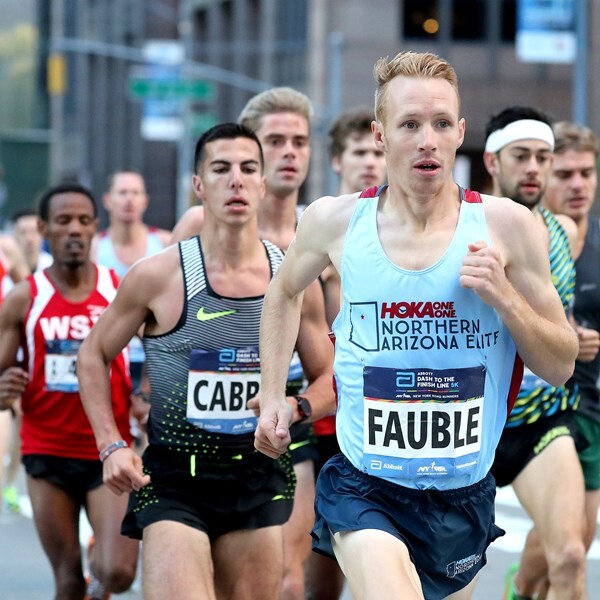
But the Olympic qualifying system for 2024 is far more complicated than in previous years, with ever-shifting world rankings and things like “quota reallocation places” creating confusion among fans and athletes alike. Any athlete ranked in the top 65 of the filtered “Road to Paris” list on January 30, 2024, is considered qualified…except the “Road to Paris” list does not currently exist. After Boston, Fauble, who is currently ranked 122nd* — that’s in the world rankings, which is a different list than “Road to Paris” — tried to take a closer look at where he stood, creating spreadsheets and projecting where he might rank after accounting for time qualifiers, the three-athlete-per-country limit, and potential changes after the 2023 fall marathon season. After a while, his brain began to hurt.
“I felt like the Pepe Silvia meme from It’s Always Sunny in Philadelphia,” Fauble said. “…It was like, this is complicated and stressful and I can just get the standard. This doesn’t need to be an issue.”
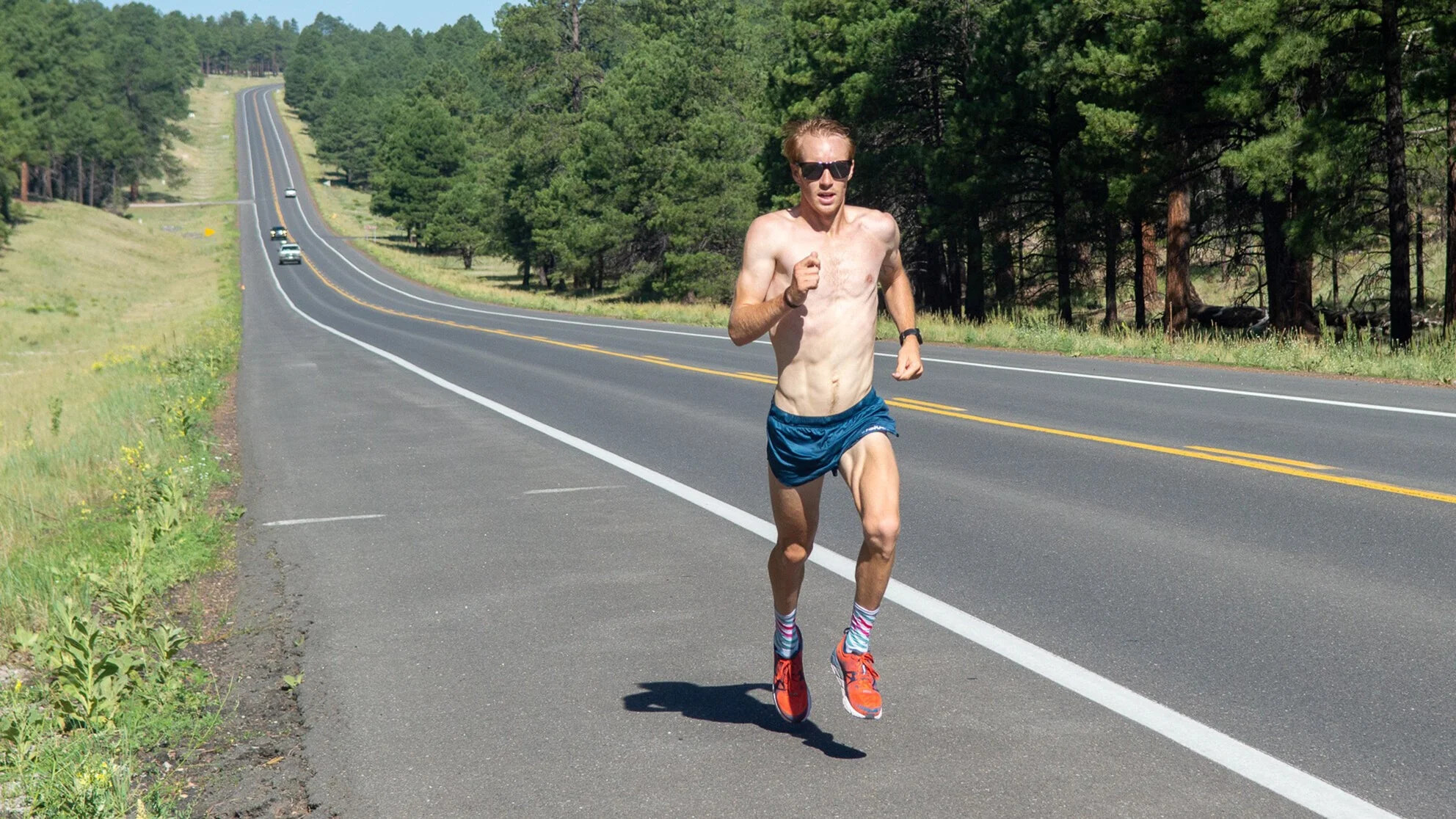
That is why Fauble, begrudgingly, made the decision to run the Berlin Marathon. He was not initially looking forward to the race, but with a strong training block in Boulder behind him and the race just four days away, he has changed his tune.
“I’m very excited,” Fauble said. “I wasn’t planning on doing a fall marathon after Boston and I had to figure out ways to get excited for it and I think that’s one of the things that has fired me up, actually seeing how fast I can go and pushing for a PR as opposed to letting the race play out and seeing what I can do.”
Chasing a time is a dramatically different approach to Fauble’s typical marathon M.O. Of the nine marathons he has run, only two have featured pacemakers: his debut in Frankfurt in 2017, and the Marathon Project in 2020. When Fauble runs Boston and New York, the hilly courses where he has found the greatest success, he does not enter with a goal time in mind. Instead, Fauble will wait until the race begins and assess a number of factors — the weather, how he’s feeling, how fast the other runners are going — before deciding which pace to run. Typically, that has led to Fauble letting the leaders go early and picking off stragglers as they fade over the second half of the race.
Berlin will be different. There are no hills to account for, and while Fauble will still fight for every place, he is not hiding the fact that the primary goal of this race is to hit a time. Specifically, the Olympic standard of 2:08:10. Only five Americans have ever bettered that time in history, but Fauble, who ran his personal best of 2:08:52 in Boston in 2022, believes he is capable of doing it.
“I don’t think that me running in the 2:07s is a huge stretch of the imagination,” said Fauble, who has removed some of the hillier routes from his training under coach Joe Bosshard but has otherwise prepared similarly for Berlin as he would Boston or New York. “I think I’ve been in that kind of shape a bunch of times.”
Every American marathoner will be rooting for Fauble
Currently, no male American marathoner has earned the 2024 Olympic standard — either by hitting the time standard of 2:08:10 or by finishing in the top five of a Platinum Label Marathon (which includes Berlin). It’s pvery likely someone such as Fauble or Conner Mantz will be ranked in the top 65 of the “Road to Paris” list at the end of January, but with the Olympic Trials less than five months away, US marathoners are getting antsy.
American pros rarely run the Berlin Marathon, typically opting for Chicago or New York in the fall — both of which pay much bigger appearance fees to American runners. But this fall, many are bypassing New York because of the date (just 13 weeks before the Trials) and the course (too slow for a shot at the Olympic standard). A sizeable crew, led by Mantz and Galen Rupp, will be in Chicago, while a far larger number than usual have opted for Berlin.
Berlin’s course is just as fast as Chicago’s, if not faster. It’s also two weeks before Chicago — an extra two weeks to prepare for the Trials — and the weather is typically a little better in Berlin than Chicago. That’s why Keira D’Amato opted for Berlin over Chicago for her American record attempt last year. It’s also why 60:02 half marathoner Teshome Mekonen — another American targeting the Olympic standard this fall — chose Berlin over Chicago.
In addition to Fauble and Mekonen, the 2023 Berlin field also includes 2016 Olympian Jared Ward, 2021 Olympian Jake Riley, and Tyler Pennel, who has finished 5th and 11th at the last two Olympic Marathon Trials. All of them will be looking to run fast. And every other American marathoner will be hoping they do the same.
That’s because of a new provision in the Olympic qualification system which states that any country with three qualified athletes may choose to send any three athletes it wants to Paris — as long as they have run at least 2:11:30 (men) or 2:29:30 (women) within the qualifying window. That’s why every American will be rooting for Fauble and others to run fast this fall: if the US has three athletes with the standard, then anyone who has run under 2:11:30 has the opportunity to make the team by finishing in the top three at the Trials.
The above provision, which World Athletics is referring to as “quota reallocation” means that someone such as Fauble could run the Olympic standard and open up a spot in Paris for an American athlete who ends up beating him at the Trials — thus taking a spot that would not otherwise be available had Fauble not run the standard. Fauble, obviously, is hoping such a scenario does not come to pass. But he is aware of the possibility and has accepted it as part of his reality.
“I don’t mind it,” Fauble said. “Sports have never really been about identifying the best team or the best athlete. They’re an entertainment product and they overemphasize very specific days on the calendar. Even if I was the only one with the standard and I get beat at the Trials, the 73-9 Warriors didn’t win the NBA title that year. You’ve gotta do it on the big days. That’s what being a professional athlete is about.”
by Jonathan Gault
Login to leave a comment
BMW Berlin Marathon
The story of the BERLIN-MARATHON is a story of the development of road running. When the first BERLIN-MARATHON was started on 13th October 1974 on a minor road next to the stadium of the organisers‘ club SC Charlottenburg Berlin 286 athletes had entered. The first winners were runners from Berlin: Günter Hallas (2:44:53), who still runs the BERLIN-MARATHON today, and...
more...Utah’s Clayton Young won the Crazy 8s 8K title on Saturday night
Utah’s Clayton Young bided his time until the last moment and made a strong move to win Saturday’s 33rd Ballad Health and Niswonger Children’s Hospital Crazy 8s 8-kilometer run on the candle-lit streets of the Model City.
With 200 meters to go, Young — the 2019 NCAA 10,000-meter champion from BYU — broke away from a group of six runners as he made his way into J. Fred Johnson Stadium to claim his second USATF title in 22:46 and the $5,000 that went along with the win.
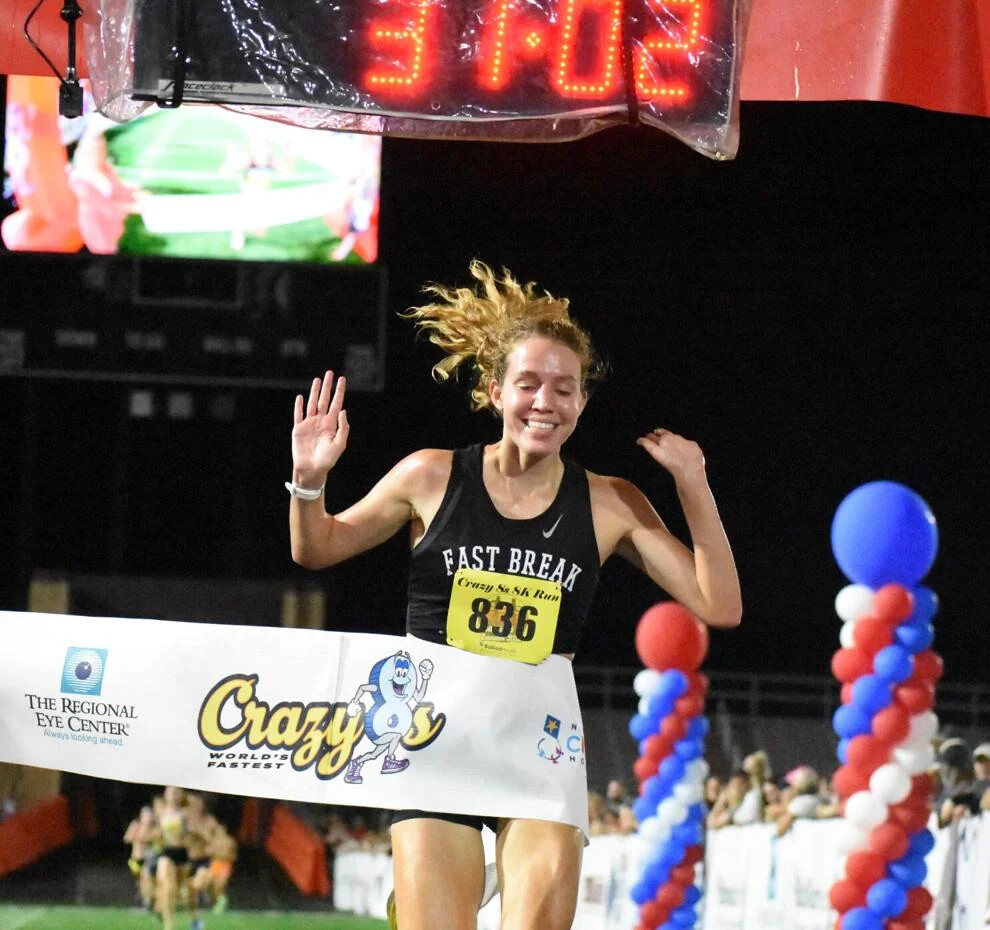
There were nearly 3,200 finishers in Saturday’s races, including the Almost Crazy 3K, which was up almost 300 from last year.
“I was talking with my teammate Conner Mantz, who was runner-up last year and he said when he made his move, he felt like it wasn’t strong enough,” Young said. “He told me that I should be making that move before I turn up the hill. When I made my move, I was thinking about him and how he coached me through those final stages.”
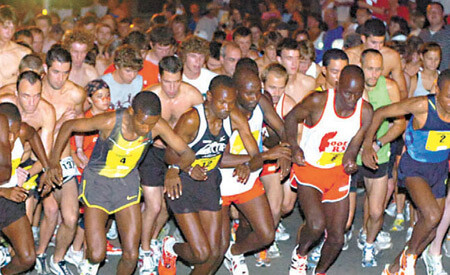
Alberto Salazar’s American record of 22:04 lived another day. The start of the race was delayed by 45 minutes because of a strong thunderstorm that swept through the area.
“I had a lot of confidence going into this race,” Young said. “I’ve trained with Conner a lot and he’s had a great season, so that was a pretty good indicator. I just rode his coattails and went out there to see what I could do today.”
ZAP Endurance runner Andrew Colley was runner-up, finishing in 22:48. Oklahoma State graduate Isai Rodriguez took out the pace early and finished third in 22:49.
Young — who won the 2021 USATF 15K title in Jacksonville, Florida — trains with Mantz and now he’s got one up on his former BYU teammate.
“It’s finally nice to win another U.S. championship,” Young said. “You’ve got to celebrate all the victories, no matter how big or small they are. They keep you going and keep you motivated.
“To feel that strength over the last 800 meters was really validating and hopefully it’ll propel me through these next couple of races and into a fall marathon.”
Kingsport native Emma Russum — a member of Dobyns-Bennett’s 2019 state cross country state title team who now runs for Chattanooga — won the women’s division in 31:02.
It’s a dream come true of sorts for Russum, who’s regularly run the race since she was 6 years old.
“It feels really good to win and it’s even better because I got second last year,” Russum said. “I ran 20 seconds slower than last year, but it was super fun and I definitely was trying to keep a more relaxed effort at the beginning.
“People were yelling at me in the last bit that a girl was coming, so I had to kick it in. I love this race and I’ve been running it since I was big enough to run in (Little 8s).”
Russum made a little bit of area history as well, becoming the third local female runner to win the Crazy 8s title. She joined Johnson City’s Jenna Hutchins and Bristol, Virginia’s Stephanie Place.
“It’s really cool to be a part of such a short history of local winners,” Russum said.
by Tanner Cook
Login to leave a comment
Crazy 8s 8k Run
Run the World’s Fastest 8K on the world famous figure-8 course on beautiful candle-lit streets with a rousing finish inside J. Fred Johnson Stadium. Crazy 8s is home to womens’ 8-kilometer world record (Asmae Leghzaoui, 24:27.8, 2002), and held the men’s world record (Peter Githuka, 22:02.2, 1996), until it was broken in 2014. Crazy 8s wants that mens’ record back. ...
more...Kara Goucher’s Book Offers Rare Insight Into Elite Athlete Contracts
Confidentiality clauses usually stop runners from talking about their endorsement deals.Kara Goucher’s memoir about her career in professional running, The Longest Race, alleges shocking behavior by her longtime coach, Alberto Salazar, and how she overcame it. But a subplot throughout the book is how much money she was earning in the sport along the way.
Goucher is open about her contract with Nike and appearance fees at races, including the New York City Marathon, the Boston Marathon, and the Great North Run in the U.K. (Nike did not respond to an email from Runner’s World seeking comment.) Even though the deals are from 10 to 20 years ago, they provide an interesting look at the business side of professional running. It’s a rare peek, too, because sponsor contracts are bound by confidentiality clauses and, in many cases, those clauses extend beyond the term of the contract.
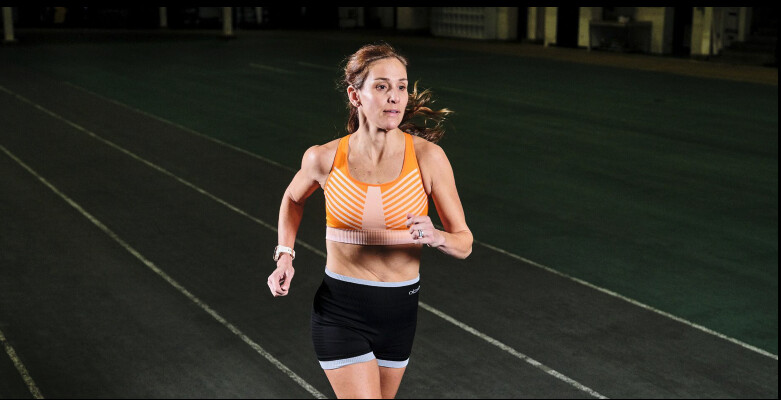
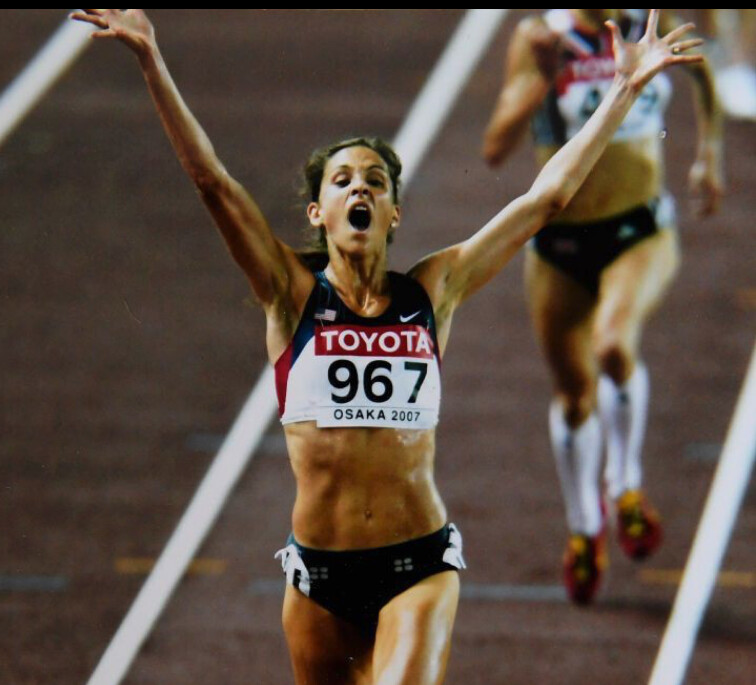
Goucher’s did, but she decided to reveal the information anyway—to be helpful to other athletes. “I just felt like it was very important to have those numbers in there,” she said in a phone call with Runner’s World. “How do you know what to ask for if you have no idea what anyone else is getting paid?” Here’s what we learned about Goucher’s pay and that of her husband, Adam Goucher, from the book:
In 2000, Adam Goucher was making a base payment of $50,000 from Fila, his first sponsor. In his first year, he ran so well that he earned $185,000 with bonuses. Goucher writes that the pay was a “welcome windfall that helped him pay off student loans.”
In 2001, Kara Goucher signed a four-year deal with Nike for $35,000 per year. This was her first professional contract after she graduated from the University of Colorado.
In 2003, Adam Goucher signed with Nike with a base pay of $90,000 per year. The Longest Race: Inside the Secret World of Abuse, Doping, and Deception on Nike's Elite Running TeamIn the fall of 2007, she ran the Great North Run, a half marathon in Newcastle, England. The race director paid her an appearance fee of $13,000 and made a deal with Goucher’s agent at the time, Peter Stubbs, to pay her $30,000 if she won. The money was “not far off the annual salary I had lived on for years,” Goucher wrote. She won the race.
In February 2008, Goucher signed a new Nike deal that paid her $325,000 per year for four years, with an option for Nike to extend to a fifth year. The contract included performance bonuses ranging from $10,000 to $500,000 for an Olympic gold medal. There were also reductions, which could cut her pay. She had to race 10 USATF-sanctioned events per year, and if she ended the year ranked lower than third in her event in the U.S. or out of the top 10 in the world, Nike could dock her pay.
Goucher told Runner’s World that, for her second shoe deal, she asked her agent to accept a commission of 8 percent for each year of the deal. The industry standard is 15 percent. He agreed. She continued to pay him 15 percent on her appearance fees and prize money. She also made sure that she was paid directly by Nike and then she paid her agent. (In most cases these days, the shoe company pays the agent, who then pays the athletes, because it’s less paperwork for the shoe company, having to deal with individual athletes.)
In November 2008, Goucher made her marathon debut at the New York City Marathon. She earned an appearance fee of $175,000. Nike also paid her bonuses paid on based on her place and time, but Goucher didn’t disclose those. She wrote, “One good marathon and I could easily walk away with more than my yearly contract salary.” In April 2009, Goucher ran the Boston Marathon, which, at the time, traditionally paid less in appearance fees to athletes than New York. (It is also the only major marathon in the U.S. in the spring.) Her appearance fee was $80,000, but when she learned another American, a male runner, was making $85,000, she asked the BAA to match that. Race organizers agreed.
In early 2010, Goucher learned she was pregnant with her son, Colt. Salazar confirmed with Nike executive John Capriotti on Goucher’s behalf that Goucher wouldn’t suffer a reduction in her pay as long as she remained “relevant,” she wrote. Her first of four quarterly payments from Nike arrived on time in January, as did her second in April. But in July, her accountant told her that her payment hadn’t arrived. Nor did her October payment.
This set off a lengthy battle between Goucher and Nike over money during her pregnancy. Ultimately, Nike docked her pay for six months and extended her contract to the end of 2013.
At the end of 2010, Adam Goucher’s contract with Nike ended.
In 2011, USA Track & Field (USATF) said it would be dropping the Gouchers’ health insurance, because her marathon ranking had dropped while she was pregnant. She appealed the decision, and the U.S. Olympic Committee stepped in and reinstated the health insurance. This rule has subsequently been changed—pregnant athletes can keep their health insurance—and today’s runners laud that change.
At the end of September 2011, Goucher left the Nike Oregon Project. She remained under contract with Nike and stayed in Portland, Oregon. Jerry Schumacher coached her, and she trained with Shalane Flanagan.
At the end of 2013, Goucher scrambled to race 10 times so Nike wouldn’t suspend her pay again. She ran a turkey trot to fulfill her obligations (and won a pie). Her contract with Nike ended at the end of the year, and she and Adam sold their house in Portland and moved to Boulder, Colorado.
In 2014, Goucher entertained contract offers from other companies, although Nike still had the option to match any offers. Saucony offered her $1 million total over 5 years, with bonuses and no reductions. Ultimately, she chose to sign with women’s clothing brand Oiselle for $20,000 per year, and a 2 percent stake in the company. She signed a separate deal for footwear with Skechers.
Today, Goucher encourages athletes to speak up and not be afraid to rock the boat, especially those who are lower-paid. She faults the secrecy around pay in track and field with creating difficult situations. It’s required to agree to the confidentiality clause in contracts in order to secure the deal, she said, and in some cases, that gives cover to companies that underpay talented athletes. The confidentiality clause “only harms the athlete and protects the brand,” she said. “Because then they can continue to pay you the least amount possible.”
Agent Hawi Keflezighi, who has never worked with Goucher, agreed with her assessment. “I think there are a lot of very bad contracts out there that footwear brands would probably be embarrassed to admit to,” he said. “There are some really bad deals out there that would probably create a backlash.”
by Runner’s World
Login to leave a comment
Mo Farah expects his final London Marathon to be emotional
Mo Farah expects there to be tears on Sunday when he runs the marathon in the city he calls home for one final time.
The four-time Olympic gold medallist turned 40 last month and has confirmed this weekend’s London Marathon will be his last race over that distance. He then plans to run in just two more events before he retires at the end of this year.
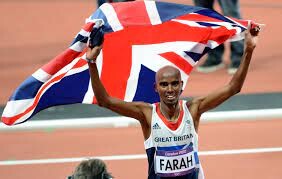
This will be Farah’s fourth marathon in the capital, after finishing eighth in 2014, third in 2018 – when he broke the British record - and fifth in 2019.
And he thinks it will be an emotional farewell in the city he was smuggled to from Somalia aged eight – and where he enjoyed his greatest glory by winning golds in the 5,000m and 10,000m at London 2012.
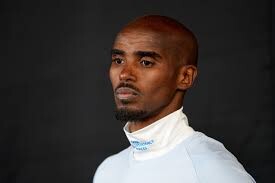
‘This is it. It will be my last marathon,’ said Farah in London on Thursday. ‘When you know it’s the end of the road, you always get emotional. I think it will get to me. Maybe after the race there will be tears.
London is my home. This is where my journey started as a young boy who took part in the mini marathon, won that, and watched the senior race thinking, “One day I’m going to run the London Marathon”.
‘Also the memory of 2012 and that Super Saturday. That still motivates me to keep going. All the people in the UK have been a big part of my career and I owe them.’
Farah, who has been training in Ethiopia and finished seventh in a 10km race in Gabon earlier this month, has not run a full marathon in three years and pulled out of last year’s race with a hip injury.
‘I don’t know if my body can do it but I have to finish,’ he said. ‘It has definitely been quite emotional these last couple of years. As an athlete, you always want to go out there and do the best you can, but my body hasn’t allowed me to do what I needed to do in training.
‘That’s been the hardest thing. For many years, I tended to take it for granted. As you get older, that totally changes because you can’t do what you did. That is the most frustrating thing. Age does catch up with you and your body.’
Farah’s legacy has, of course, been tarnished by his relationship with his former coach Alberto Salazar, who was banned for four years in 2019 for doping violations. The American has since been banned for life for sexual and emotional misconduct.
Asked if he had any regrets in his career, Farah insisted: ‘Not at all. I wouldn't have done anything different. I just took that journey and kept going and kept grafting. As an athlete you go out there and deliver and win races. That’s what I’ve done.’
by David Coverdale
Login to leave a comment
TCS London Marathon
The London Marathon was first run on March 29, 1981 and has been held in the spring of every year since 2010. It is sponsored by Virgin Money and was founded by the former Olympic champion and journalist Chris Brasher and Welsh athlete John Disley. It is organized by Hugh Brasher (son of Chris) as Race Director and Nick Bitel...
more...Kara Goucher accuses Alberto Salazar of sexual assault in new memoir
Two-time U.S. Olympian and 2007 world championship silver medallist Kara Goucher alleges in her new book The Longest Race, published Tuesday, that she is the woman behind the sexual assault allegations against Alberto Salazar that resulted in his lifetime coaching ban by the U.S. Center for SafeSport in 2021.
In 2004, Goucher became the first woman to join the Nike-sponsored Oregon Project, led by Salazar, after a storied collegiate career at the University of Colorado, which saw her win three individual NCAA championships (two in track and once in cross country). In her book, she says she wanted to go to the Olympics, and that Salazar said he would help her get there.
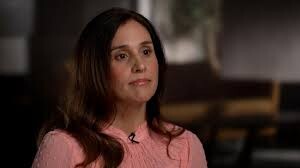
Salazar was one of the best marathoners in the world in the early 1980s, winning the New York City Marathon three times and Boston once. He also set the American record over the 5,000m and 10,000m on the track in 1982.
Goucher reveals that she was impressed by how personable he was, and his knowledge of the sport. “Salazar went above and beyond for his athletes,” Goucher told ABC News in an interview. “He was giving personal massages to his athletes, something I’ve never seen before […] I just thought it was normal.”
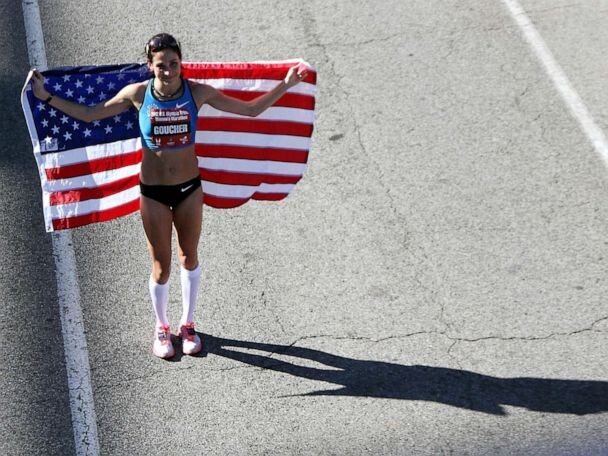
The 44-year-old retired runner, who was in her late 20s at the time, recalls Salazar touching her inappropriately during a massage at a hotel in Rieti, Italy. “It felt wrong,” Goucher expressed. “I didn’t tell anyone at the time.”
Goucher claims the same scenario happened again while the two were in Lisbon, competing at the 2009 Lisbon Half Marathon.
She ended up leaving the NOP in 2011 and did not talk about the alleged assault until she was questioned by lawyers on doping allegations against Salazar as part of a U.S. Anti-Doping Agency (USADA) probe in 2017.
In 2019, Salazar was suspended for four years by USADA for doping violations. And in 2021, the famed coach was banned for life by U.S. SafeSport for sexual misconduct. The U.S. Center for SafeSport is an independent not-for-profit that reviews allegations of sexual misconduct and can impose sanctions.
In the book, Goucher says she testified about the alleged touching in front of a U.S. Safe Sport panel and confirmed that her allegations were used as the basis for Salazar’s lifetime ban.
Salazar told ABC News in a statement that any claim made against him for sexual assault is categorically untrue. “I have never sexually assaulted Mrs. Goucher and never would have done so. The accusation is deeply hurtful, abhorrent and contrary to my fundamental beliefs as a husband, father and Catholic.”
Goucher said she is appreciative of Salazar’s guidance, but at the end of the day, “he should not be coaching.”
Her book The Longest Race was released on March 14.
by Marley Dickinson
Login to leave a comment
Canadian Cameron Levins will be seeking new national marathon record in Tokyo
Canada’s Cameron Levins is racing the Tokyo Marathon on Sunday, he will be looking to improve his own national record of 2:07:09, which he set last summer during the Eugene World Athletics Championships.
Asked if he will be going after the 2024 Paris Olympic entry standard of 2:08:10 or the 2023 Budapest World Athletics Championships standard of 2:09:40, he told Athletics Illustrated, “I think we’re waiting to see what the pace options are before making that decision, but certainly looking for a personal best and not just standard.”
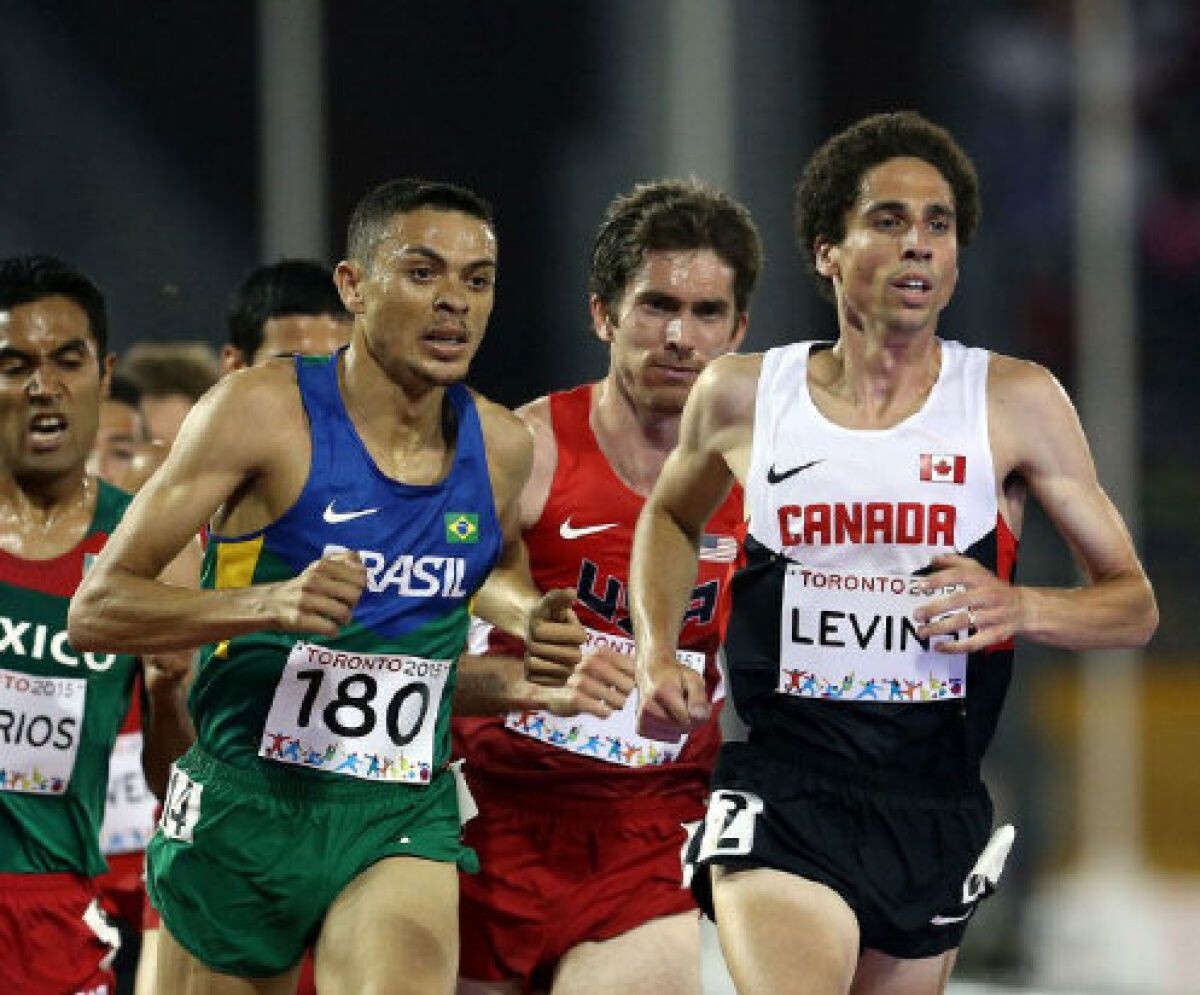
Levins set a new Canadian half-marathon record on February 12 at the First Half Half Marathon clocking a 60:18. He finished 4:03 ahead of his nearest competitor. Although that time, according to World Athletics’ points performance scale is almost, but not quite, as good as his marathon best, it was run in less than ideal conditions. For example, in Eugene, there was a highly competitive field to race with — to bring the best out of him. Additionally, in Vancouver, although not overly challenging, the weather was cool and windy. The general consensus is he could have run the First Half Half Marathon a little faster, yet. Perhaps right at the level of his national marathon record. So, we know from that performance he is in great shape.
Looking at his options in Tokyo, Levins has a fast course and runners looking for a fast time and prize money.
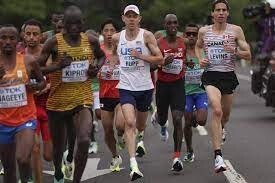
The field is led by Ethiopian Lemma Sisay who has run as fast as 2:03:36 back in 2019 at the Berlin Marathon. He has also run at least three other sub-2:07-marathons. As it has been four years since Sisay set his best, anyone of Kenyans Bernard Koech (2:04:09), CyBrian Kotut (2:04:47), Titus Kipruto (2:04:54), Ugandan Stehen Kissa (2:04:48), Ethiopian Deso Gelmisa (2:04:53) could challenge for the win. There are also several fast Japanese runners led by Kengo Suzuki with his 2:04:56. He holds the national record from Otsu, Japan two years ago. There are six others who have run 2:05 to 2:07 — right in Levins’ range.
The 24-year-old Kipruto finished second in the Amsterdam Marathon last October — less than five months ago. He was beaten only by Ethiopian Tsegaye Getachew by five seconds. Gelmiso, just 25 and Kipruto won the 2022 Valencia and Milano Marathons respectively. If the weather is ideal expect a couple of 2:03 marathons in Tokyo. Currently the forecast is trending in the right direction with projected highs of 13-16 degrees.
Prior to the 2020 Tokyo Olympic Games, Levins ran several marathons that ended in disappointment. These included the London Marathon in poor weather as well as Chandler, AZ, where he looked fresh at 32 kilometers into the race, running with the lead pack, only to fade to a 2:12:15 clocking. At the 11th hour, he boarded a plane for Fürstenfeld, Austria and ran a small marathon event just fast enough to qualify for the Olympics at 2:10:14. However, by the time he go to Sapporo, where the event was held, some 800 kilometers north of Tokyo, it was hot at 34 degrees celsius, and perhaps he had run too many marathons leading up. The standard was 2:11:30 at the time.
The 33-year-old Vancouver Island native has had big highs with breaking the Canadian marathon record three times, competing in two Olympic Games and at one time holding the national 10,000m record. Anything can and often does happen in a marathon event. Expect Levins to improve his own national marathon record and perhaps run 2:06 plus or minus a few seconds if all works out for him.
It was not long ago that the 43-year-old Canadian record was stuck at a modest 2:10:09 by Jerome Drayton from his run in Fukuoka, Japan in 1975. Excellent Canadian marathon runners Reid Coolsaet, Dylan Wykes, and Eric Gillis among others had led the Canadian Marathon resurgence. Levins has taken the mantle from there and has run with it to repeat records. The standard he has set and will likely continue to, will be a benchmark for up and coming Canadians to follow. Perhaps to put Canada back on the global marathon map.Levins recently signed with Asics as his new shoe sponsor. Until 2021, he was with HOKA and prior to that Nike with the now defunct Nike Oregon Project that was led by the now banned Alberto Salazar. Levins is now coached by fellow Vancouver Island runner Jim Finlayson.
by Christopher Kelsall
Login to leave a comment
Tokyo Marathon
The Tokyo Marathon is a world-renowned annual marathon held in Tokyo, Japan. As one of the prestigious Abbott World Marathon Majors, it attracts elite and amateur runners from around the globe. The race holds World Athletics Platinum Label status, recognizing its high competitive standards, top-tier organization, and international appeal. Sponsored by Tokyo Metro, the Tokyo Marathon has grown into one...
more...Eight Interval Training Workouts used by World Champions and Coaches
Interval training involves high-intensity repetitions followed by standing, walking or jogging recoveries. Interval training can be of varied length but are usually short and intensive accelerations.
This forms a crucial part of all distance runners – some throughout the year, others closer towards the lead-up to a race. Here are some examples of interval sessions used by elite athletes.
1. Craig Masback who represented the United States in international competitions on several occasions devised his own interval running workouts. He and his roommate ran 6 x 300m followed by a 2min rest. They would then progress to 4 x 1100m with 800m between each set at an aerobic pace where they ran the last 300m at a hard pace. Including warm-up and cool-down they would run a total of 10miles during their session.
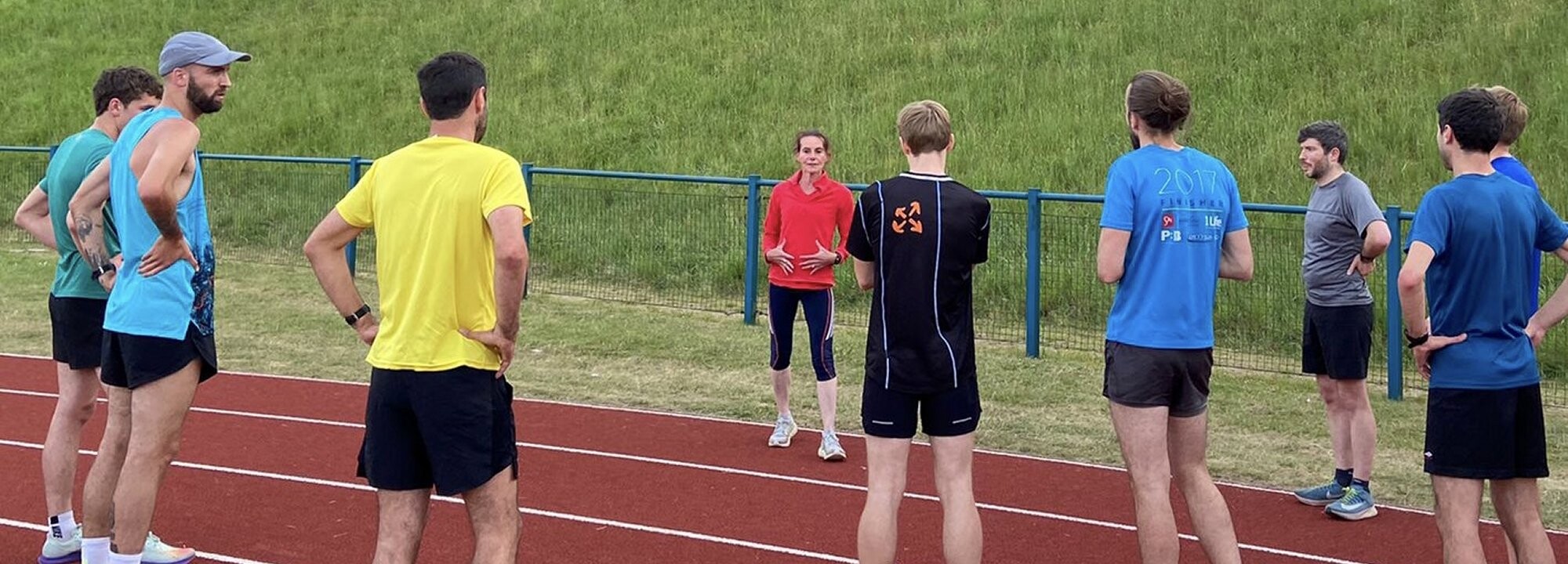
2. Arturo Barrios, a five-time world record holder and Olympic Games runner, had a favorite interval running workout: 10 x 1000m on the track @ slightly faster than 5km race pace, with a slow jog recovery as rest. Barrios used this workout every other week in the lead up to a race with his last session occurring 2 weeks before racing.
3. Silvio Guerra, gold medalist at the South American Games and Olympic Games runner, found that his most important track workout was 8 x 1km with 2mins to 2:30mins recovery depending on weekly workload and time of the season. He recommends this workout as it provides a runner with speed and endurance. He used a 3-mile warm-up that ended with a quick pace followed by 15mins of stretching and striding (10 strides).
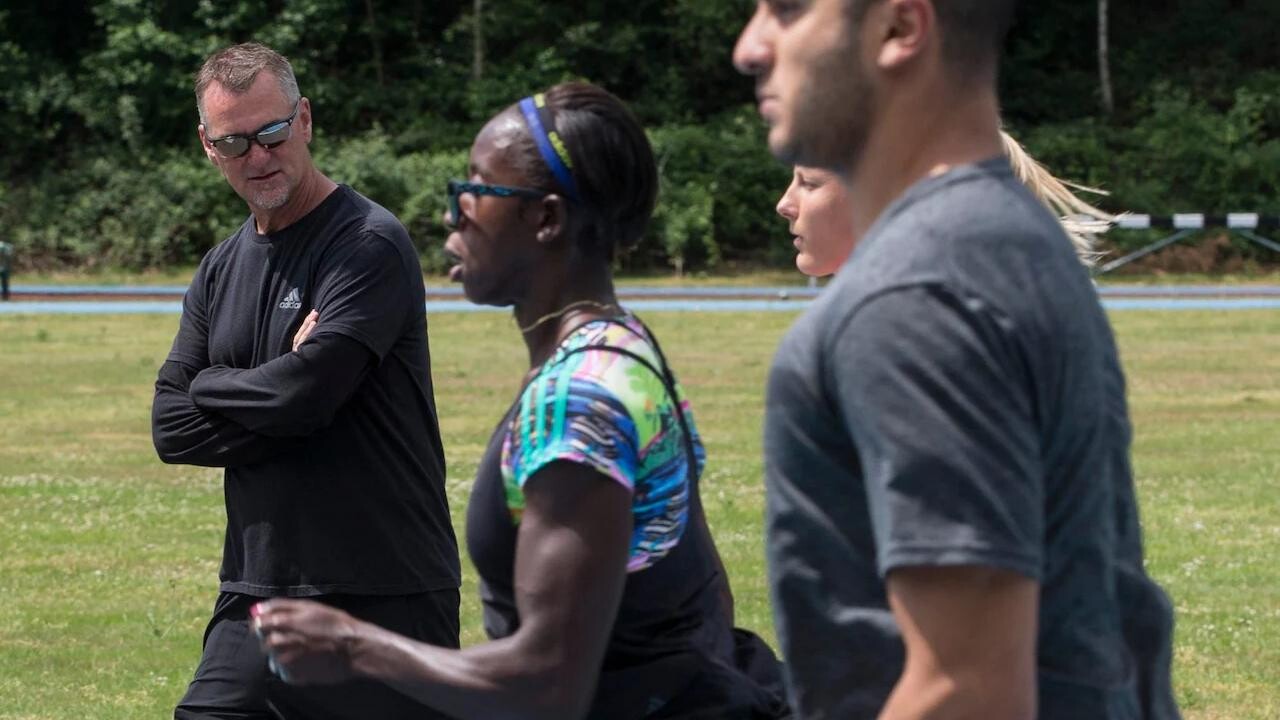
4. Bill Dellinger, a bronze medalist at the 1964 Olympic Games for the 5000m, used advanced interval training to his advantage. He completed 3 miles of alternating 30s and 40s 200m runs with no recovery. The workout finished when he could not keep up with the pace anymore. As a coach he uses the 40-30 with his athletes almost 3 times during winter training with some of his best athletes going for 18 laps continuously. He also used the 800-300, which consisted of running 800m at a runner’s 5km goal pace with a 400m recovery, followed by 300m at mile race pace with a 200m recovery in 40s. The cycle repeated until the athlete could not keep up with the pace anymore.
5. Libbie Hickman, World Champion and Olympic Games runner for the US, used a straightforward 8 x 300m in 48s with a 200m recovery phase. She tries to be in a fairly recovered condition before the start of every 300m also making this her toughest workout. Hickman feels that runners need to have a strong base before trying a workout like this.
6. Marc Davis, a former US record holder for 2 miles, used a fast ladder style workout for his interval training sessions. He ran a hard mile, followed by a 1200m, 800m and 400m. The recovery between each was half the distance of each segment. He ran his workouts close to a 4-minute mile pace and called it the Alberto Salazar special.
7. Adam Goucher, a US national champion runner, used to run 10 x 500m on the track with a 100m recovery between each repeat. Goucher ran his 500m between 1 minute 16 seconds and 1 minute 18 seconds. He calls it ‘Coach Wetmore’s Secret’ and feels that it provides great preparation for a 5km. Goucher recommends bringing the training down to your level by providing adequate recovery so that you are able to finish the session. As you improve and get fitter reduce the recovery time to suit your needs.
8. Rich Kenah, an elite runner who represented the US, uses a 4 x 400m with a 4min jog recovery when he approaches his racing season. His wife Cheri uses a 3 x 1mile workout running them in 4:45. To them, these sessions are key indicators for their current state ‘a great barometer of our fitness’. For example, if Rich can run all 4 sets of 400m in 52.0s, he knows that he is in good shape for a quality 800m race.
The workouts are preceded by a 1-hour warm-up including jogging, stretching, drills and striding. This particular session usually comes after a month of ‘fairly high volume’ during the season.
Conclusion
Interval training is a form of workout that is used by runners and coaches across the world. They help improve your speed and endurance while simulating situations and pain that you are likely to face during your races. There are several ways of doing interval training across a lot of surfaces, therefore there is no one right way to complete this kind of a session. Find what suits your current level of fitness and race distance and to create an interval session for your needs.
by Chelsea Ho
Login to leave a comment
Ben Flanagan wins his third Falmouth Road Race
Kitchener, Ont. native Ben Flanagan has done it again, winning his third Falmouth Road Race in four years. Flanagan finished the seven-mile (11.3 km) course in 32:25, outlasting runner-up Biya Simbassa (32:32) for a second straight year in Falmouth, Mass.
With two Falmouth victories to Flanagan’s name, and his partner, Hannah, growing up in Falmouth, he was the race favourite heading in and was keen to defend his 2021 title. In a pre-race interview, Flanagan chatted about his familiarity with the course and how he was already dreaming of his celebration when he won his third.
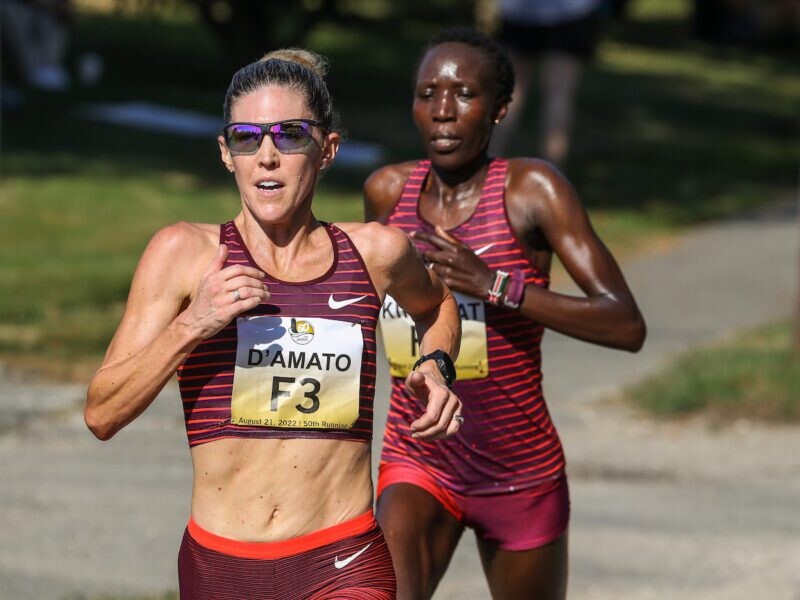
Like in previous years, the 27-year-old broke the tape by jumping into it, holding up the “number three” with his hand.
Flanagan again made his attack at the top of the Scranton Ave. hill at the 5.5-mile marker. Simbassa, who lives and trains in Flagstaff, Ariz., followed Flanagan’s move along with David Bett of Kenya. The Canadian 10K record holder ousted Bett and Simbassa on the final downhill to win, nine seconds shy of his personal best on the course: 32:16 from 2021.

Flanagan now joins an exclusive group of six runners to successfully defended their titles at Falmouth. The group of six features: Alberto Salazar (‘81 and ‘82), Frank Shorter (’75 and ’76), and David Murphy (‘84 and ‘85). Next year, he will have the chance to join Kenya’s Gilbert Okari as the only men to win three straight (2004-06)
The American women’s marathon record holder, Keira D’Amato, won the women’s 11.3 km race in a nail-biting finish (36:14). She managed to hold off a surging 2017 Boston Marathon champion Edna Kiplagat (36:28) to claim the women’s title in her Falmouth debut.
This race was a quick bounce back for the 37-year-old, who placed eighth at last month’s 2022 World Athletics Championships marathon for Team USA in 2:23:34. Earlier this year at the Houston Marathon, D’Amato set the U.S. marathon record of 2:19:12.
D’Amato will take another stab at breaking her American marathon record on Sept, 25. at the Berlin Marathon.
Daniel Romanchuk won the men’s wheelchair title in 22:02, and Susannah Scaroni won the women’s division in 25:30.
by Marley Dickinson
Login to leave a comment
Falmouth Road Race
The Falmouth Road Race was established in 1973 and has become one of the premier running events of the summer season. Each year the race draws an international field of Olympians, elite runners and recreational runners out to enjoy the scenic 7-mile seaside course. The non-profit Falmouth Road Race organization is dedicated to promoting health and fitness for all in...
more...Coach Bill Squires who coached runners like Bill Rodgers has died
The Boston Athletic Association mourns the passing of the legendary coach and athlete Bill Squires, who died today, Thursday, June 30. This is an immense loss for our running community.
William Squires was born November 24, 1932 and was an American track and field coach. He is well known for coaching the Greater Boston Track Club at the height of its marathon success, including marathoners Bill Rodgers, Alberto Salazar, Dick Beardsley and Greg Meyer.
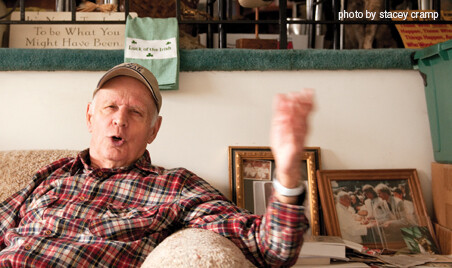
Squires was originally from Arlington, Massachusetts and competed in track and field events for Arlington High School. While a senior there, Squires was chosen as a member of the 1952 Parade All-American team. Squires went on to college at Notre Dame, where he was a two-time All-America in cross-country in 1954 and 1955.

Squires's personal bests according to the MSTCA hall-of-fame induction were 4:21 for the mile in high school and 4:07 in college. He was notable for designing a Heartbreak Hill simulator for training. He was formerly a coach at Boston State College from 1965 to 1978.
In 2002 Squires received the Bill Bowerman award from the National Distance Running Hall of Fame. Squires co-authored the book "Speed with Endurance" with Bruce Lehane.
"Bill Squires was a speaker at our National Running Week in the early 1980's," says MBR publisher Bob Anerson. "He shared his knowledge and we were very impressed. He will be missed."
Login to leave a comment
What Are therapeutic use exemptions and Why Are They Controversial?
Athletes such as Molly Seidel, who was recently diagnosed with ADHD and prescribed Adderall, must receive exemptions from doping agencies in order to use medications that are banned.
Olympic bronze medalist Molly Seidel announced on Instagram on June 8 that she’d be missing the New York Mini 10K last weekend. The reason? She’d been diagnosed with ADHD early in 2022, and after the Boston Marathon, she started taking the prescription drug Adderall.

Adderall is banned by the World Anti-Doping Agency (WADA) for use in competition, because it can be used as a performance enhancer. But Seidel has a legitimate medical need for the drug, so she can apply for a therapeutic use exemption, commonly known as a TUE.
Seidel wrote on Instagram that she applied for a TUE about six weeks ago, and she won’t have an answer on her application until the end of June at the earliest.
Since she started taking Adderall, she had been feeling much better. “I felt like I was able to get the quiet, functioning brain in my day-to-day life that I could previously only achieve with intense physical activity,” she wrote. “It also gave me remission of many eating disorders behaviors that I’ve dealt with consistently since my teens.”
She was disappointed to pull out of the New York Mini 10K. Seidel wrote, especially after she has had a tough few months. (She dropped out of the Boston Marathon in April with a hip impingement at about the 16-mile mark.)
“However, I’m committed to a clean sport and respecting my own mental health needs, so that means following the appropriate procedures of this TUE process,” she wrote. “Mental health takes work, and I want to be transparent about the fact that medication is sometimes a very necessary part of that work.”
Seidel is due to run the World Championships marathon in Eugene on July 18.
Her case illustrates a years-long debate among athletes, coaches, and officials about TUEs. At issue: How can the sport allow its athletes to legally obtain treatment for diagnosed medical conditions while preventing others from abusing the system?
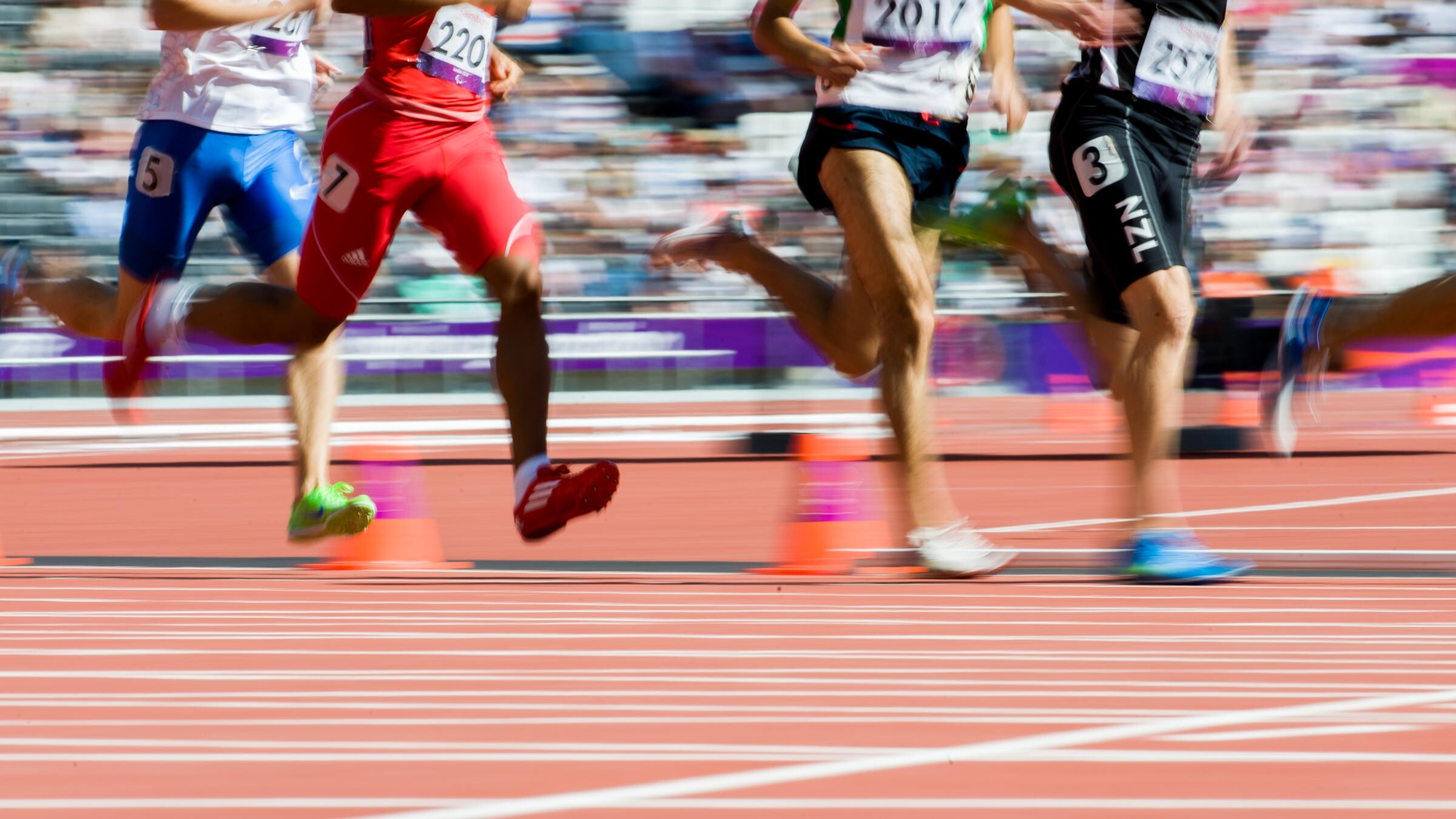
Below, we answer a few common questions about TUEs.
What is a therapeutic use exemption (TUE)?
When an athlete is sick or has a condition that requires treatment with medicine that is listed on WADA’s prohibited substance list, he or she can be granted a TUE to take the drug, according to the U.S. Anti-Doping Agency (USADA).
Some drugs are prohibited when an athlete is competing. Other drugs are also banned for out-of-competition use. If a TUE is approved, it usually has a starting and ending date during which the athlete may take the medication. If the athlete is drug tested during that period and tests positive for an illegal substance for which they are granted an exemption, he or she will not face disciplinary measures.
In an emergency situation, if somebody is treated with a prohibited substance, he or she is allowed to file an emergency TUE afterward, as soon as possible. For example, when Shalane Flanagan received an IV for severe dehydration in February after the 2016 Olympic Marathon Trials, which is otherwise a banned practice, she was granted an exemption because she was in medical need.
“I resisted getting an IV but a lot of the doctors there were insisting that I needed it,” Flanagan said, weeks after the race. “It would have taken a really long time to get those fluids in orally. So the IV really speeded up my recovery. It actually made me realize probably why they are illegal [in competition] under most circumstances—my core temperature immediately went down. If I hadn’t had that, I would have had a much longer process.”
How does an athlete get a TUE?
U.S. athletes apply for a TUE through USADA, though if somebody is also competing at an international event, it may require that person to obtain another exemption through World Athletics, the governing body for track and field.
“The TUE application process is thorough and designed to balance the need to provide athletes access to critical medication while protecting the rights of clean athletes to compete on a level playing field,” according to USADA.
If a pro runner is in need of a TUE, he or she downloads the application and completes it with a doctor. A medical file must accompany the application.
Who decides if the athlete gets a TUE?
The Therapeutic Use Exemption Committee reviews the application, the medical details, the patient history, test results, how the condition has been managed over time, and attempts to treat it with non-prohibited medications and methods. Galen Rupp, for example, has been granted exemptions to take prednisone to treat asthma.
The committee includes doctors and medical experts, according to USADA. They review and either approve or deny the application without knowing the athlete’s name by following WADA’s standards, outlined in an annual 30-page document.
WADA policy states that athlete must prove that the prohibited substance is needed to treat an acute or chronic medical condition, “such that the athlete would experience a significant impairment to health” if it is withheld; that the medication is highly unlikely to produce any enhancement of performance beyond what would be considered “anticipated” by a return to the individual’s normal health; and that there is no reasonable alternative to treat the condition.
What is on the WADA prohibited substance list?
The prohibited list includes more than 300 substances and methods of taking substances (for example, orally, by injection, intravenously). It also includes those that are always prohibited and those that are only prohibited during a competition. The lists are updated by WADA each year, and it’s up to the athletes to be aware of changes of the rules.
Some examples of prohibited substances include steroids, human growth hormone, certain stimulants, diuretics, and masking agents that can interfere with drug tests.
How could an athlete use TUE system or prescription drugs to cheat?
Athletes at the highest level are constantly searching for fractions of percentages in performance gain. Some, of course, seek such gains illegally. Should that athlete have a support team of coaches and doctors who also engage in unethical practices, they can collectively seek exemptions for medications that are not medically needed but could produce a competitive advantage.
In July 2015, Rupp and his coach Alberto Salazar were accused by former members of the Oregon Project of manipulating the TUE system for performance gain and faking symptoms in an effort to be prescribed legal thyroid medications. Those medications could help with a runner’s energy levels, allowing an athlete to train with more intensity and volume. Rupp and Salazar have strongly denied those accusations. Salazar has since received a four-year ban for trafficking performance-enhancing drugs to his athletes and in a separate matter, he has been banned permanently from track by SafeSport.
by Runner’s World
Login to leave a comment
Alberto Salazar’s permanent ban from SafeSport was for alleged sexual assault, new report finds
Just last month, former Nike Oregon Project coach Alberto Salazar had his permanent ban from the sport upheld by the U.S. Center for SafeSport. A new report from the New York Times on Monday revealed it was because an arbitrator found that he more likely than not had sexually assaulted an athlete on two different occasions.
The famed running coach Alberto Salazar, who helped top Americans be more competitive in track and field before he was suspended for doping violations, was barred from the sport for life last month after an arbitrator found that he more likely than not had sexually assaulted an athlete on two different occasions, according to a summary of the ruling reviewed by The New York Times.
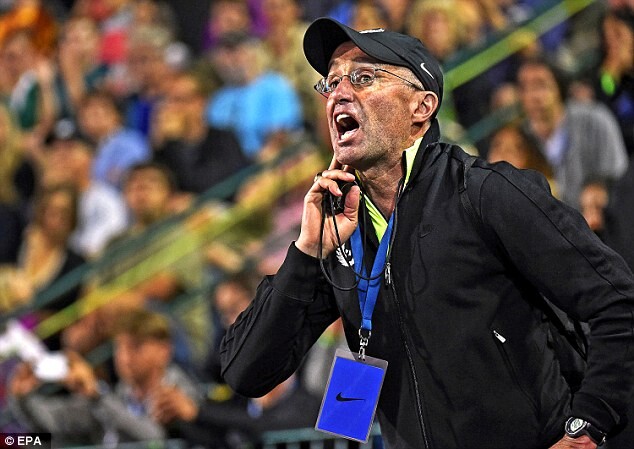
The case against Salazar was pursued by the United States Center for SafeSport, an organization that investigates reports of abuse within Olympic sports. SafeSport ruled Salazar permanently ineligible in July 2021, finding that he had committed four violations, which included two instances of penetrating a runner with a finger while giving an athletic massage.
Salazar asked for an arbitration hearing, where he denied the accusations and said he did not speak with or see the runner on the days in question. The arbitrator did not find Salazar’s explanation credible, and accepted his accuser’s version of events.
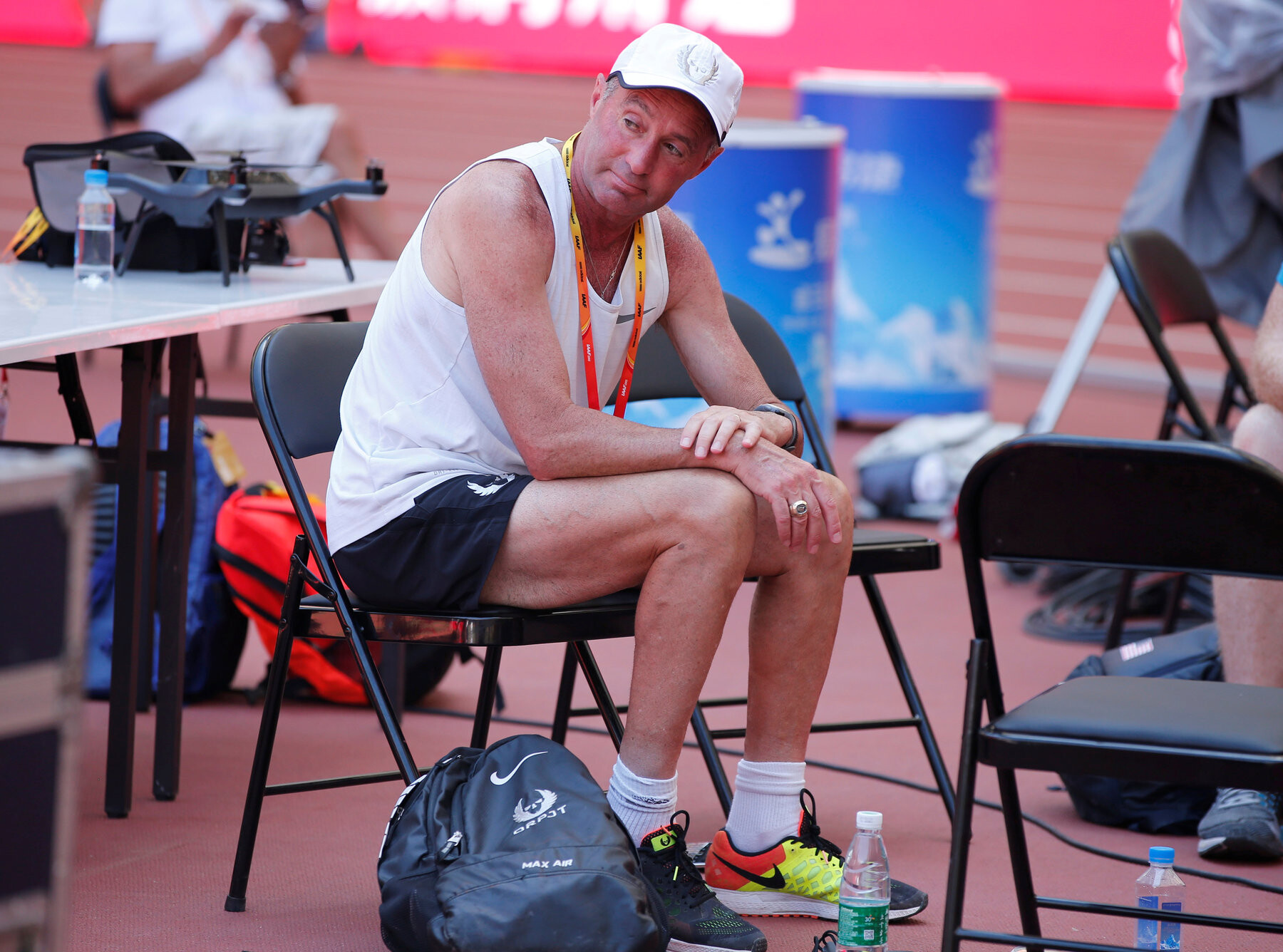
The details of the ruling, which have not been reported until now, shed new light on why Salazar, a powerful figure within elite running, was specifically barred from his sport. A number of runners have publicly accused him of bullying and behavior that was verbally and emotionally abusive, but the accusations of physical assault had not been publicly revealed. Salazar has never been criminally charged in connection with these allegations.
SafeSport, an independent nonprofit organization in Denver that responds to reports of misconduct within the U.S. Olympic and Paralympic sports, pursued action against Salazar and ruled him permanently ineligible in July 2021.
They currently list Salazar’s misconduct on their database as “sexual misconduct,” though the specific allegations against the coach were not known because they do not release details of its rulings. The report from The Times reveals new details on why the famed running coach Salazar was banned. Until now, the details were unknown.
Salazar has been accused of making comments about teammates’ bodies and weight in the past, but accusations of physical assault had not been publicly revealed. He has not been criminally charged with these allegations.
Numerous athletes have spoken out against Salazar for conduct against women. In November 2019, former high school star Mary Cain, who trained under Salazar from 2013 to 2015, spoke out about years of emotional abuse as a member of the Nike Oregon Project.
After Cain’s public comments, several other members of the project spoke out and shared their own experiences under Salazar.
Salazar, 63, has denied all allegations. In an email to The Times, he said he “never engaged in any sort of inappropriate sexual contact or sexual misconduct.”
Salazar also told The Times that the SafeSports process was “unfair” and “lacked due process protections.”
The United States Anti-Doping Agency also banned Salazar, along with Dr. Jeffrey Brown in September 2019 for four years. Although no athlete training under Salazar tested positive for a banned substance, the USADA determined Salazar tampered with the doping control process and trafficked banned performance-enhancing substances.
Salazar also denied those allegations and appealed that ban. His appeal was denied in September.
by NY Times and OregonLive
Login to leave a comment
Craig Engels, Running’s Most Committed Party Animal, Returns to Nike—and Running Fast
Craig Engels explains what he can about his new four-year deal and heads to Millrose Games in good shape.
Craig Engels, the fun-loving 1500-meter runner who never misses a party, inked a new deal with Nike in the early days of 2022. It’s a four-year agreement, taking him through 2026.
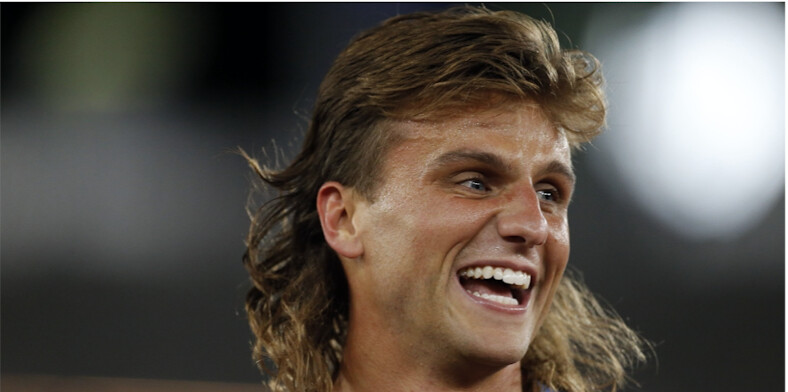
But he went through a lot of soul-searching before he decided to return to running at a high level.
Engels, 27, finished fourth by half a second in the 1500 meters last June at the U.S. Olympic Track and Field Trials, just missing the team bound for Tokyo.
In the days afterward, he was adrift. “Everything I worked towards [was] over,” he told Runner’s World during one of several recent interviews. “I didn’t know what to do with myself. Which—I don’t know what emotion that is. It wasn’t sadness. More like, what do I do?”
He spent the rest of the summer racing on the track and road circuit in the U.S. He helped pace men who were trying to break 4:00 in the mile, and he encouraged facial hair growth. And still, he raced at a high level, although neither Engels nor his coach, Pete Julian, would say that his training resembled what it was before the Trials.
“We had to change things up,” Julian told Runner’s World last September, “had to piece together workouts in between to keep him so he could at least finish a mile. That’s what Craig needed at the moment.”
On August 14, he finished second at a mile in Falmouth, Massachusetts, clocking 3:53.97. Six days later he finished second again in the international mile at the Prefontaine Classic in Eugene, Oregon, in 3:55.41.
That runner-up finish at Pre came as a result of a premature celebration. He waved to the crowd at the top of the home stretch, but Geordie Beamish of New Zealand sailed by him with a few meters to go.
They hugged it out on the track and then took a victory lap.
“That’s Craig,” Julian said. “He makes mistakes along the way, it’s why he’s so damn popular. I’ve never seen anybody do something as dumb as wave to the crowd and then get beat and still get to take a victory lap. Pretty classic, right? There’s one guy in the world who can do that, and that’s Craig.”
After Pre, Engels shut down his season. In the fall, he returned to the University of Mississippi to finish the final semester of classes he needed to complete his MBA.
While Engels was in Oxford, Mississippi, he trained with Ole Miss cross-country coach Ryan Vanhoy, who had coached him in college, and the Ole Miss team. They logged high mileage and did a lot of long strength-based workouts. Meanwhile, Engels pondered his future.
Engels flirted with retirement, and Julian said Engels was sincere in his questioning, asking himself: “Is this something that I want to do?”
Running the Numbers
As Engels got back into shape and finished his classes, he began the process of negotiating a new contract. Initially, he tried to do it alone. He said he parted ways with his first agent, Ray Flynn, via email between rounds of the 1500 at the Olympic Trials.
Reached by text message, Flynn said, “It’s all good with Craig and I. Happy to see him doing well.”
Engels said he had long struggled with the role of agents in pro running and the fee they charge—15 percent of everything, including sponsorship deals, appearance fees, and prize money—for negotiating what often turns out to be a single contract with a shoe company.
“A lot of these agents were athletes,” Engels said. “I don’t know how they possibly sleep at night, taking 15 percent. NFL agents are capped out at three [percent].”
But as Engels talked to shoe company executives and weighed various offers and training situations, he realized he needed someone to review the contracts—“the lawyer jargon,” he calls it. “I was getting a little stressed,” he said.
So he hired Mark Wetmore as his agent, who also represents Engels’s teammate Donavan Brazier, among others. Wetmore immediately increased the value of the offers Engels had started negotiating on his own behalf.
Engels signed with Nike again. At the end of the four-year deal, he’ll have run professionally for 9 years, and he said it will be his last contract.
The terms of the deal are private—Engels had to sign a nondisclosure agreement, as most athletes do, which also limits the knowledge athletes have about their value in the market.
All he could say about it? “I definitely had some great offers on the table, which led to a very good contract for myself.”
Engels said if it were up to him, he’d post the details of his contract on Instagram to his 97,000 followers. Such knowledge would only help other runners, he says, while the current system benefits agents.
The Athlete Changes the Coach
Engels also returned to train with Julian and his team, recently named the Union Athletics Club (UAC). The club is headquartered in Portland, Oregon, but between altitude stints, training camps, and races, they’re rarely there for long.
He is now doing the bulk of his workouts with Charlie Hunter, who is on the UAC, and Craig Nowak, who trains with the group but isn’t officially on the roster. The group has been training in San Luis Obispo, California—team member Jordan Hasay’s hometown—and enjoying sunny skies and warm weather, and preparing to race the Millrose Games. Engels is entered in the mile.
“I’m in pretty good shape, yeah,” he said. “I don’t want to talk too much before it happens. I’m in pretty good shape.”
After Millrose, UAC hosts an indoor meet in Spokane, Washington, the Lilac Grand Prix, on February 11. The U.S. indoor championships are back in Spokane two weeks after that.
Julian, for one, is glad to count Engels on the roster. He told Runner’s World that Engels has “completely changed” the way he coaches.
“He’s made me realize that making [something] enjoyable and working hard don’t have to be separated, don’t have to be mutually exclusive,” Julian said. “The two things can exist. And we can be really great. But by being able to enjoy ourselves and being able to have some fun. To not take ourselves as seriously, but at the same time, take what we’re doing very seriously. You can do both.”
That’s a startling admission from Julian, who was a longtime assistant coach to Alberto Salazar. He was viewed as in relentless pursuit of every advantage for his athletes. Salazar is now banned from coaching Olympians permanently by SafeSport and serving a four-year ban for anti-doping offenses.
“[Engels has] made me realize that, hey, we can add some color to our lives,” Julian continued. “We’re not curing pediatric cancer here. We’re running around in half tights on a 400-meter circle. Coming from my own background, I’ve had to realize that, too, [with] my own coaching the last four or five years. You know what? Everyone needs to chill out a little bit. Let’s quit trying to eat our own and actually try to promote the sport and race really, really fast.”
One small way that Engels has changed the team? He prefers FaceTime to phone calls. Julian said Engels likes to see people, likes to smile at them. The FaceTime habit has spread throughout the group, so now, anytime anybody communicates on the team, it’s always by FaceTime. “That started from Craig,” he said.
Critics of Engels—who is an unabashed beer drinker, hot-tub soaker, RV driver, and mullet wearer—don’t see the work that he does, his coach says. And they don’t see how hard he tries.
“He did everything he could to make that Olympic team,” Julian said. “He’s done everything he can to make the sport better. He puts forth an amazing effort and he tries to win. But he’s not a robot, either.”
by Runner’s World
Login to leave a comment
Canadian Cam Levins is leaving Hoka
The Canadian marathon record holder announces on his Instagram that he is parting ways with the brand.
After spending three and a half years with Hoka, the Canadian marathon record holder Cam Levins announced on his Instagram that he has left the brand.
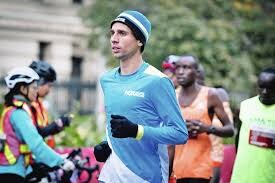
During his tenure, Levins broke two Canadian records, including Jerome Drayton’s Canadian record of 2:10:09 that stood since 1975. He ran 2:09:25 at the 2018 Toronto Waterfront Marathon to become the first Canadian to break 2:10. At the 2018 World Half Marathon Championships in Valencia, Spain, Levins broke the Canadian 20K record (59:09) on his way to a top 30 finish and a PB of 1:02:15.
The reason for Levins’s departure has not been announced, but his departure marks the third Canadian athlete to leave Hoka in the last six months. 3,000m steeplechaser Matt Hughes and aspiring marathoner Rory Linkletter both left the brand in 2021.
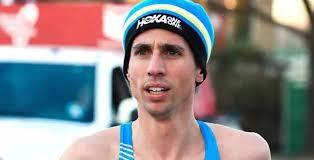
Levins was selected to represent Canada in the marathon at the Tokyo Olympics after running 2:10:14 in the final few days of Olympic qualifying. He had a rough day at the office in Tokyo, finishing 72nd in humid conditions.
Before Levins joined Hoka in 2018, he was a part of Alberto Salazar’s Nike Oregon Project alongside Mo Farah and Galen Rupp. Levins currently lives and trains in Portland, Ore., and is coached remotely by Victoria, B.C. runner Jim Finlayson.
by Marley Dickinson
Login to leave a comment
Coach Alberto Salazar's lifetime ban upheld by US Center for SafeSport
Track coach Alberto Salazar's lifetime ban appeal for sexual misconduct has been rejected by the US Center for SafeSport.
The 63-year-old was handed the lifetime ban following allegations he had emotionally and physically abused a number of athletes during his time as part of the Nike Oregon Project.
In January 2020, SafeSport temporarily banned Salazar with the decision subsequently made permanent in July 2021.
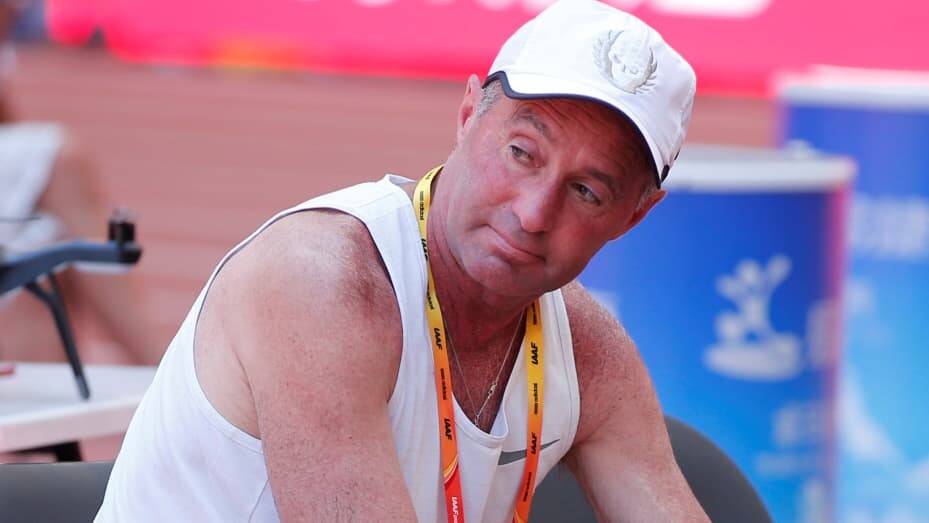
However, his entry in the SafeSport database has now been updated to permanent ineligibility - signaling the appeal had been rejected.
In a separate case earlier this year, the Court of Arbitration for Sport upheld a four-year ban for a series of doping-related violations that occurred while Salazar was training Olympians with the Nike project. Nike shut down the running team shortly afterwards.
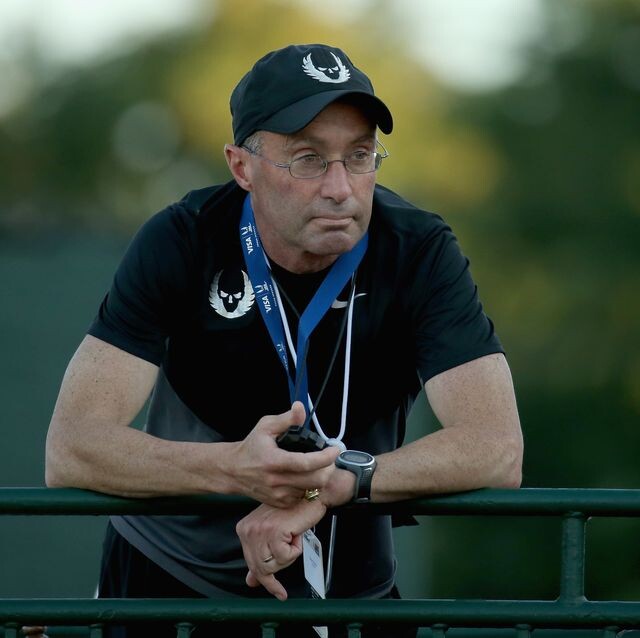
None of Salazar's former runners have ever been charged with doping violations.
As an athlete himself, Salazar won the Boston and New York Marathons in the early 1980s before going on to coach a number of Olympic medalists, including Sir Mo Farah and Galen Rupp.
Login to leave a comment
The former Nike Oregon Project changes team name to Union Athletic Club
One of the world’s best-known professional running clubs has found a new name after the Nike Oregon Project was abolished, coincident with the four-year ban of ex-head coach Alberto Salazar. The new name, Union Athletic Club, was announced on the Elevation Om YouTube page and confirmed by Chris Chavez on Twitter on Thursday.
After Salazar’s dismissal, the group remained intact through the past three years under coach Pete Julian.
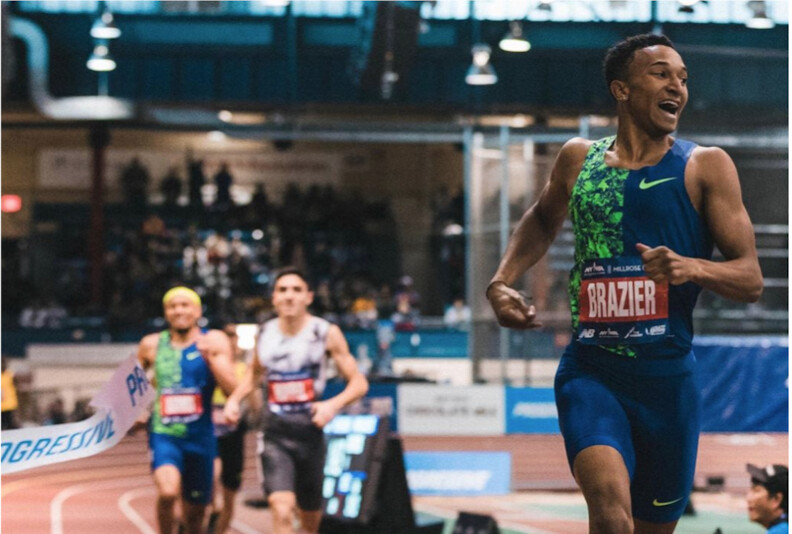
Julian is currently the coach of many of the world’s top athletes, such as Suguru Osako, Shannon Rowbury, Raevyn Rogers, Jessica Hull, Donovan Brazier and Craig Engels.
He spent three years coaching at Washington State University before moving to the Oregon Project in 2012, where he was the assistant coach to Galen Rupp, Matt Centrowitz, Mo Farah and Canadian record holder Cam Levins.
The 2021 NCAA indoor 800m champion and Australian Olympian Charlie Hunter will be the newest member of the group.
Union Athletic Club is based out of Oregon and sponsored by Nike Running.
Login to leave a comment
Oregon Ducks athletic programs no longer can monitor athletes’ weight, body fat percentage
The University of Oregon strengthened protocols in late October to prohibit athletic programs from requiring athletes to be tested for body fat percentage.
According to the revised written protocols, athletes can choose to be tested. But results of the test “should not be reported beyond the student-athlete, dietitian and relevant medical personnel. Reporting of individual results to coaches is not permitted.”

The move came in apparent response to an Oct. 25 story from The Oregonian/OregonLive in which six former women track athletes accused the track program of emphasizing and tracking weight and body fat percentage to the point it led to eating disorders.
The athletes alleged UO coach Robert Johnson’s program required athletes to undergo regular DEXA scans to precisely measure their body fat percentages, then pushed them to lower those percentages.
She told the publication she believes the dietary restrictions led to an injury-plagued sophomore season.
In a story appearing Tuesday in the British newspaper The Telegraph, former Oregon distance runner Philippa Bowden said she was told to drop weight even after confiding she previously had battled an eating disorder.
She said she eventually withdrew from school in 2019 after beginning to purge in an effort to keep her weight low.
UO spokesperson Jimmy Stanton said the athletic department recommended in fall 2020 that coaches stop emphasizing weights and body fat percentage in training. That recommendation is now a requirement.
The recently revised protocol further states: “Coaches must be careful never to suggest or require changes in weight or body composition.”
Johnson has guided the Ducks to 14 national championships in cross country, indoor and outdoor track, cementing Oregon’s position as one of the elite programs in college track and field.
That was followed up in an Oct. 29 story in Runner’s World in which former UO distance runner Katie Rainsberger made similar allegations.
Rainsberger told Runner’s World she was encouraged to drop her body fat percentage and weight even though a nutritionist with the program knew she no longer was getting her menstrual period.
He outlined his training philosophy to The Oregonian/OregonLive in early October. It put a heavy emphasis on using advanced technological tools such as blood tests, hydration tests and DEXA scans to track athletes’ body composition.
Johnson did not respond to interview requests for this story.
A DEXA scan is a medical imaging test that uses X-rays to precisely measure bone density, muscle mass and body fat percentage.
Athletes said they believe Johnson and other coaches always knew the test results revealing their body fat percentages.
Even before DEXA scan technology became available to Oregon in recent years, Johnson’s program measured athletes’ body fat with skinfold caliper tests.
A former UO employee who worked with the athletic department dietitians, helped measure body composition with skinfold calipers from 2014-16. Results of the tests were tracked on a spreadsheet.
“In my experience, the coaches always had access to athletes’ body composition,” the former employee says.
The employee — who still works in the field and did not want be identified for fear it would restrict future employment opportunities — became concerned about Johnson’s reliance on body fat percentage as a training tool.
“I had athletes express to me a feeling like they needed to be compliant with coaches’ wishes in order to maintain their scholarships and be able to compete in the important races,” the former employee said.
The former employee said at one point, Johnson and sprint coach Curtis Taylor wanted athletes to severely restrict their consumption of carbohydrates to facilitate weight loss.
“Obviously, that is not a diet backed by science,” the former employee said. “I spoke with athletes about this and explained it’s not backed by science. It’s not appropriate. Carbohydrates are important for athletes.
“I remember an athlete saying, ‘I hear you. I believe you. I know you’re right. But at the end of the day, Coach Johnson decides who competes. So, I have to do this.’”
At one point, the former employee said, Johnson called out the employee and a mid-distance runner in front of the team during a training session inside the Moshofsky Center, the school’s indoor practice facility.
“He pointed at her and started making accusations at me, saying I wasn’t doing my job to help her lose weight,” the former employee said. “He never was responsive to my attempts to clarify the nature of body composition and how it relates to athletic performance.”
Former UO high jumper Ashlyn Hare said she and other athletes discussed the track team’s approach to weight and body composition with Johnson in the wake of similar accusations made in 2019 by professional runner Mary Cain against Nike Oregon Project coach Alberto Salazar.
Hare said Johnson listened to the athletes over the course of several weeks. Eventually, though, she received a text message from him containing a link to an article in which a former professional runner defended the value of tracking weight and body fat percentage.
“After that it was conversation closed,” Hare said in a text message to The Oregonian/OregonLive. “He had received confirmation of his bias. He didn’t need to hear any more.”
Hare, who competed for the Ducks from 2016-19, said athletes during her time always believed DEXA scans were mandatory for athletes.
She shared a text exchange from a UO dietitian during her time at Oregon reminding Hare she hadn’t undergone her DEXA scan.
“I was told by our athletic trainer that I didn’t need to do the DEXA because I was not training and about to have surgery,” Hare said in a text message. “But I was told I had to anyway.”
NEW UO PROTOCOLS
Assessment of bone density and body composition (DEXA) relates to highly sensitive personal information and belongs to the student-athlete.
All student-athletes should receive annual education about how this information can support their performance and they should have the optionto participate.
In order to protect the student-athlete and the coach, data should not be shared or reported beyond the student-athlete, dietician, and relevant medical personnel. Reporting of individual results to coaches is not permitted.
Body image and disordered eating pose serious physical and psychological risks to student-athletes, and our primary goal is to support a healthy mind and body.
High risk sports should receive annual education about the prevalence, risks, and warning signs of disordered eating.
High risk sports should complete annual assessment for disordered eating risk factors.
At risk individuals should enter an interdisciplinary support model that includes dietetics, athletic medicine, and mental health services.
The focus of nutrition should be on the development of healthy habits that support performance — hydration, fueling, recovery.
Any changes in weight and body composition should be initiated and motivated by the student athlete under the guidance of a dietician.
Coaches must be careful never to suggest or require changes in weight or body composition.
by Oregon Live
Login to leave a comment
High-profile coach Rana Reider will be investigated for sexual misconduct
According to a report in The Guardian, Florida-based coach Rana Reider is the subject of multiple complaints of sexual misconduct, and is about to be investigated by the U.S. Center for SafeSport.
Reider’s roster of high-profile clients includes 200m Olympic gold medallist Andre De Grasse, in addition to British sprinters Adam Gemili and Daryll Neita (who won bronze in the women’s 4x100m relay at Tokyo 2020). The report claims UK Athletics has instructed its athletes to cut ties with Reider.
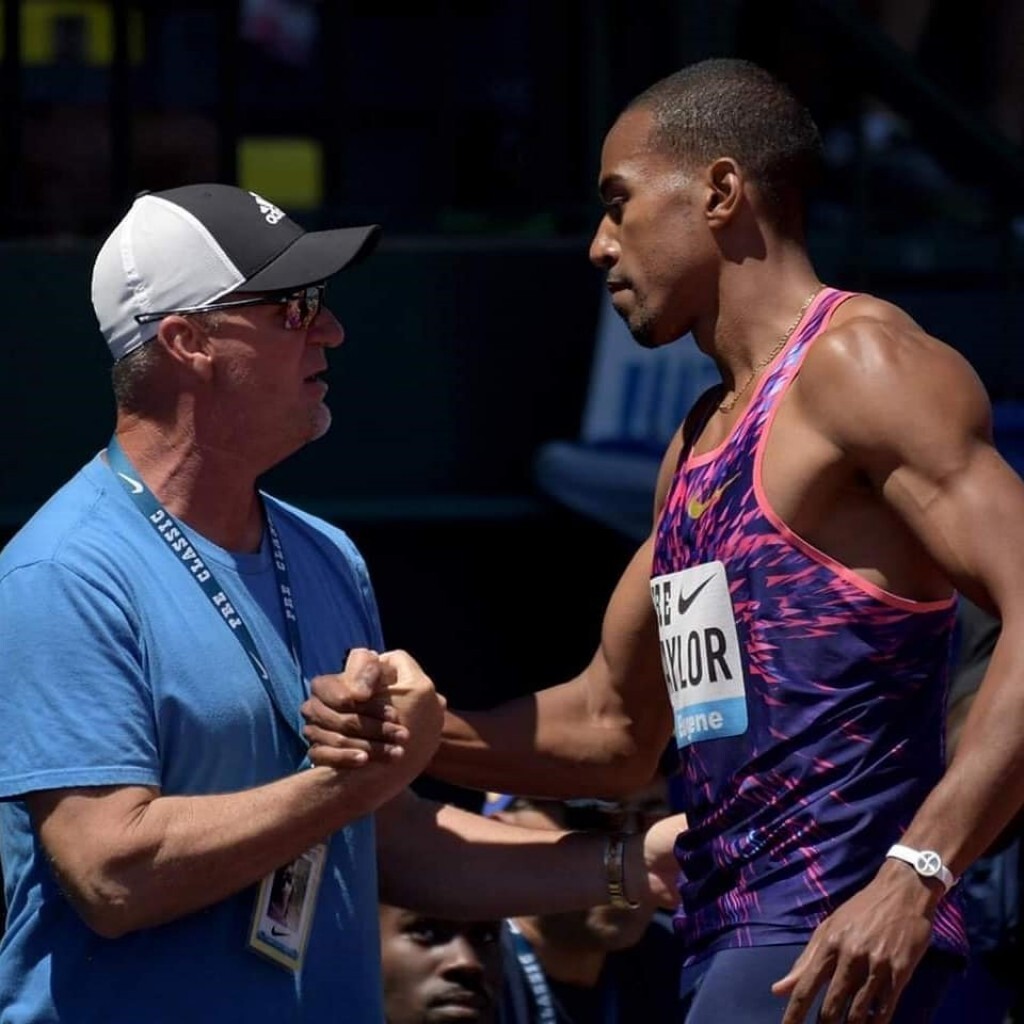
Sources say that Reider is also a coach to Blessing Okagbare, the Nigerian sprinter who was sent home from Tokyo after testing positive for human growth hormone.
The report says that Reider’s lawyer claims his client had not been notified of any investigation and protests that the allegations have not been tested or proven.
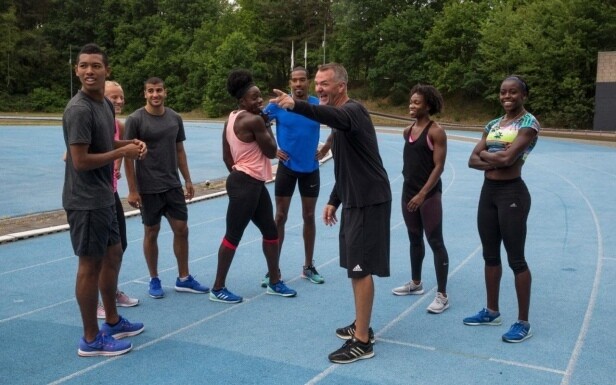
Gemili, 28, was the first British man to sub-10 over 100m and sub-20 over 200m. According to the report, he has been coached by Reider since 2017. He won gold in the 4x100m relay at the 2017 World Championships, and silver in 2019. At Tokyo 2020, he got injured during the heats in the 200m (his only event) and did not advance.
The U.S. Center for Safepsort is an independent body that handles investigations and complaints into abuse and misconduct in Olympic sports. In July 2021, SafeSport issued a lifetime ban on U.S. coach Alberto Salazar for sexual and emotional misconduct.
by Marley Dickinson
Login to leave a comment
Women athletes allege body shaming within Oregon Ducks track and field program
Six women athletes who left the University of Oregon track and field program in recent seasons say they felt devalued as individuals and at risk for eating disorders because of the program’s data-driven approach to their weight and body fat percentages.
Five of the women departed with remaining eligibility.
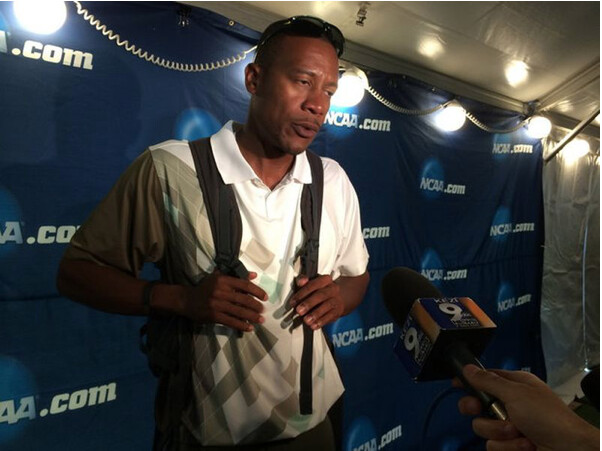
One said she began binge-eating while at Oregon. Another says she struggles with body dysmorphia and has nightmares about competing at Hayward Field, Oregon’s iconic track stadium, while UO coaches stare at her and say: “You’re never going to be good enough.”
Robert Johnson, who became UO’s track and field and cross country head coach in 2012, has guided the Ducks to 14 NCAA championships while elevating what already had been one of the sport’s premier college programs.
Under Johnson the Ducks increasingly have embraced expensive and advanced technological tools such as blood tests, hydration tests and DEXA scans. A DEXA scan is a medical imaging test that uses X-rays to precisely measure bone density and body fat percentage.
DEXA scans, in particular, have become a flashpoint for some athletes, who say the precise body fat percentage measurements can trigger unhealthy behaviors.
Johnson contends his scientific approach largely removes human bias from judgments about athletes and allows the UO coaching staff to design workouts precisely tailored to each athlete’s needs.
“Track is nothing but numbers,” he says. “A good mathematician probably could be a good track coach.”
He says UO athletes receive DEXA scans in the fall, winter and spring, and no more often because of radiation emitted during the tests.
“When we get the numbers from our DEXA scans, we have an Excel spreadsheet that we can plug the numbers into, hit a button and it gives us a starting value for a training program.” he says. “It allows us to be cutting edge and innovative in our approach to performance.”
Some athletes contend this innovation comes at a staggering personal price.
An athlete who graduated from Oregon at the end of the 2020 school year emailed UO deputy athletic director Lisa Peterson, senior women’s administrator, in October 2020.
In the email she says she had been receiving text messages and Snapchats that fall from former teammates so worried about upcoming DEXA scans they were starving themselves.
She tells Peterson in the email: “I have seen and experienced an absolutely disgusting amount of disordered eating on the women’s track team, all because the coaches believe body fat percentage is a key performance indicator.
“We are not professional athletes. We do not have access to a bounty of organic food. We do not have unlimited time to cook. We cannot plan our days around our nutrition, and we are not the 30-year-old Olympians that coach Johnson seeks to compare our body fat percentage to.
“While knowing body composition may be helpful for some athletes, I have seen it be nothing but destructive.”
The athlete says Peterson responded by thanking her for the email and saying she had passed it on and said that Peterson thought the allegations would be investigated. A public records request did not turn up a report of an internal investigation.
“A BIG, BIG ISSUE”
The issues of weight-shaming, body image and body fat percentage testing have become more common in recent years. Longtime Washington track coach Greg Metcalf lost his job in 2018 after accusations of body-shaming and verbally abusive treatment of female athletes. Former Nike Oregon Project star Mary Cain and other women who competed for the NOP have made similar accusations about former coach Alberto Salazar.
Five former UO athletes consented to extensive interviews on the condition their names not be used for several reasons. Among them:
• Oregon is one of the most nationally prominent college track and field programs.
• The school has a cozy relationship with Nike, which underwrites the funding for USA Track & Field and sponsors a high percentage of professional track athletes.
• Oregon’s Hayward Field, largely built with money donated by Nike co-founder Phil Knight, is the host of the Prefontaine Classic professional meet, the semi-permanent host of the NCAA Outdoor Track & Field Championships, next year’s USATF Outdoor Championships and the 2022 World Outdoor Championships.
One athlete says Johnson “is such a terrifyingly powerful man. There are people who would lose their ability to go to the Pre Classic or lose USATF funding, because speaking up against him is like speaking up against basically USA Track & Field.”
One athlete says when she was given her first DEXA scan at Oregon, she already had not had a menstrual period in a year and a half. She says the nutritionist knew that.
The scan showed her body fat percentage at 16%. She was told by the nutritionist she should consider lowering it to about 13%. And while the suggestion came from the nutritionist, she is certain the message originated with the coaching staff.
“They always were talking together,” she says.
The university did not make available a nutritionist or nutritionists in response to a formal interview request.
The athlete consulted her personal doctor, who advised her not to try to lower her body fat percentage any further. The American Council on Exercise suggests an ideal body fat percentage for a female athlete to between 14% and 20%.
“He said I already was in a situation that was dangerous for my body and that I needed to make sure I got my period back,” she says.
After that, she says, she struggled mentally.
“I started worrying a lot about what I was eating,” she says. “I wanted to make sure I wasn’t going to get too much bigger of a percentage. That was like a big, big issue.”
She was very careful during the day. At night in her apartment, though, she began binge-eating, which she says led to feelings of depression and guilt.
“That never had happened before I came to Oregon,” she says. “I never had any issues with food. I was completely fine. I loved food.”
At Oregon, she says, the yearlong monitoring became a trigger.
“You want to make sure you don’t put on weight, you become more paranoid and it gets worse,” she says.
She left after the school year, and still fights the temptation to binge.
Another athlete says her events coach conferred with her during her freshman year. She says he admitted he wasn’t supposed to tell her this, but said if she were to go above a certain body weight she never would be an Olympian.
After her first DEXA scan, the nutritionist told her she couldn’t travel to away track meets unless her body fat level was below 12%.
“That was when I started counting calories,” she says.
She says she weighed herself daily. What she saw on the scales determined whether she viewed her day as successful.
If she was above the targeted weight, “I would look at my legs, and I would say, ‘My legs look like tree trunks,’” she says. “If I was below that weight, I would be like, ‘Oh, I must be skinny.’ In reality, two or three pounds looks no different on your body.
“It wasn’t until I started seeing a sports psychologist that I realized this was not normal.”
That came after she transferred and her new school flagged her for an eating disorder.
A third athlete says that during her freshman year Johnson called her over during a workout and asked if she was on birth control.
Stunned by the question, she stammered “no” and returned to the workout.
“It was very crazy,” she says. “I was like, ‘What is going on? This is not happening. I am not having this conversation with him right now. This is just wrong. It’s none of his business.’”
She returned to ask Johnson why he wanted to know.
She says he told her: “Well, I noticed your hips have gotten wider, and that comes along with that kind of stuff.”
She says at Oregon she constantly monitored what she ate.
“They do multiple things to people about their weight,” she says. “They’re kind of notorious for it. They keep weight at a very high importance level. …
"Like whenever I would eat a cookie, I would feel so guilty. I would be like ‘Wow, it’s going to make my next DEXA scan bad. I’m going to get in trouble.’”
Four of the women interviewed say athletes whose DEXA scans show what coaches/staff consider an unacceptably high body fat content frequently are required to do additional cross training on a stationary bike.
Other athletes know who is doing mandatory cross training and why, even though it’s not explicitly said.
Athletes interviewed say this not only stigmatizes those doing the extra training, but incentivizes others to carefully monitor themselves so they aren’t singled out in that way.
“This program is just something different,” says one athlete who left the UO track team. “I don’t think it’s a place for young girls.
“Girls already have enough body image issues.”
“WE TRY TO APPROACH IT WITH SCIENCE”
Johnson said he would respond to specific allegations in general because he didn’t know which athletes were making the allegations. He says he feels sympathy and regret for athletes who believe they developed eating disorders while part of his program.
He says he and others in positions of responsibility within the program have acted swiftly and decisively to intervene when learning of athletes with disordered eating, or with emotional or physical problems.
“If these things were happening, such as binge-eating, or they were going down this road of unhealthy behaviors, hopefully we would catch it, and then give them resources to get better,” Johnson says.
“The health and safety of all our student-athletes is extremely important and at the forefront at all times.”
Johnson says nutritionists meet regularly with athletes in each event group so they understand the program’s approach and to identify any potential problems.
“We try not to let this weight issue be the pink elephant in the room,” he says. “We try to approach it with conversation and we try to approach it with science. … That’s one thing the DEXA scan helps us do. It takes our personal opinions out of it.”
Johnson says all UO athletes receive DEXA scans, men and women. He says UO track athletes are told there are sports psychologists available to them if they are struggling mentally with any aspect of being a college athlete.
But he says neither he nor psychologists can help if athletes don’t come forward.
“If those things were their experiences here, it’s shameful,” Johnson says. “We try to give them the information and the execution to deal with these things. If they choose to engage in those, there is help there. We can’t read their minds.”
Johnson says if he asked an athlete about birth control, it would have been only to suggest she use one recommended by UO doctors so weight gain wouldn’t be a side effect.
He says mandatory cross training isn’t meant to stigmatize athletes, but to help them get into competitive shape. He says that is part of his responsibility as coach.
Johnson says he could send those athletes on extra training runs to accomplish the same purpose. But that would expose their legs and feet to more pounding and increase the potential for injury.
“It’s basically that we want to increase their activity level in a safe manner that allows them to move closer to achieving their goals they set for themselves,” he says.
Many UO athletes compete for the Ducks without adverse effects.
Sprinter Rachel Vinjamuri says she is untroubled by the different ways the program monitored her, including the DEXA scans that revealed her body fat percentage.
“I never had a negative mindset about it,” says Vinjamuri, who transferred to UO from Portland State and graduated in 2020.
“It was just like this is where you need to be at to perform your best and here is how we do it. It was never like you get punished. It was just, let’s work toward this.”
She says she found the coaches and nutritionists constructive and helpful.
“People are more aware that eating disorders, dieting and things like that are becoming a huge problem in college sports,” she says. “I think Oregon is becoming more aware of that. I think they were doing the best they could.”
Vinjamuri says one difference between Portland State and Oregon is the superior resources at UO. In addition to the various high-tech tests, UO athletes have access to nutritionists who supplied them with snack bags of healthy food and recipes.
Some athletes who have competed for other programs in Power Five conferences, though, say differences in approach between Oregon and those programs are stark.
One says at her current school “everything is about holding yourself accountable. But if you don’t, you’re not getting punished. I think it’s the way you should treat college athletes. We’re adults. We’re not high schoolers anymore.”
Dan Steele was an assistant track coach at Oregon through 2009. He later was head coach at Northern Iowa and an assistant at Iowa State. He says his coaching philosophy is to steer clear of discussions about weight and body fat percentage.
“Testing for body fat is humiliating and detrimental to the athlete’s psyche,” he writes in a text message. “Young female athletes need to know their coaches believe in them.”
Steele says he never brought up an athlete’s weight or appearance, believing the athlete is the person most aware if she is too heavy or out of shape.
“I always tell them, ‘You’re fine. If you eat sensibly your body will morph naturally to the perfect size for optimum performance,’” he texts. “And that’s what I believe.”
“ATHLETES ARE NOT MACHINES”
Body weight and body fat percentage do factor into athletic performance. But several sports psychologists see red flags in approaches such as the one Oregon uses, particularly with women college athletes.
The sports psychologists consulted spoke in general terms, and not specifically about the UO track program.
Eugene sports psychologist Melissa Todd says she finds a process-oriented training approach better for college athletes than ones targeting a specific outcome.
She says young adults, away from home for the first time, are at a vulnerable point in their lives. The danger of emphasizing weight or body fat percentage is that those arbitrary numbers can begin to define victory for competitive people conditioned to win.
The first rule of any training strategy, she says, “should be to seek to minimize the potential for harm.”
“Athletes are not machines,” Todd says. “We need to see them in their entirety, as a whole person, and not boil down athletic performance to small details while missing the big picture.”
Portland sports psychologist Brian Baxter agrees, saying coaches should be at least as concerned with athletes’ emotional and mental well-being as they are with skill, technique and conditioning.
“The physical body doesn’t matter without mental health,” Baxter says. “Really, that has to be first.”
On its website, the National Eating Disorders Association includes a “Coach & Athletic Trainer Toolkit” for working with athletes. It includes this admonition:
“Coaches should strive not to emphasize weight for the purpose of enhancing performance, for example by weighing, measuring body fat composition, and encouraging dieting or extra workouts.”
The toolkit section of the website continues to say coaches who emphasize those things can lead athletes into unhealthy behaviors such as disordered eating that offset any gains achieved by lowering weight or body fat percentage.
The email sent in October 2020 to Peterson, the deputy athletic director and senior women’s administrator, seems not to have altered Johnson’s use of DEXA scans to monitor body fat percentage.
Responding by email, Peterson writes that she forwarded the email detailing concerns about the track program’s use of DEXA scans to “the appropriate campus officials.”
UO spokesperson Jimmy Stanton issued a statement in which he says the health and safety of athletes is the athletic department’s top priority.
Stanton’s statement continues: “There are many sports professionals on our staff that work closely in supporting student-athletes, including our medical team, athletic trainers, sports scientists and nutritionists. Additionally, all of our coaches undergo annual training from the UO Title IX office on a variety of topics, including communication with student-athletes.”
by Oregon Live
Login to leave a comment
Mary Cain sues Alberto Salazar and Nike for $20 million over alleged abuse
Mary Cain, the promising distance runner whose career fizzled after what she has described as four miserable years at the Nike Oregon Project, has filed a $20 million lawsuit against her former coach, Alberto Salazar, and their employer, Nike.
Cain accused Salazar of emotionally abusing her when she joined the team as a 16-year-old. The lawsuit portrays Salazar as an angry control freak who was obsessed with Cain’s weight and didn’t hesitate to publicly humiliate her about it.
That, she said, took a toll on her physical and mental health. Nike was aware, the lawsuit alleges, but failed to intervene.
Nike did not return messages. Salazar could not be reached but has previously denied abuse allegations, and he has said neither Cain nor her parents had raised concerns while she was part of the program.
In the lawsuit filed Monday in Multnomah County Circuit Court, Cain alleges Salazar on several occasions required her to get on a scale in front of other people and would then criticize her.
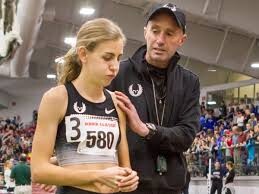
“Salazar told her that she was too fat and that her breasts and bottom were too big,” the lawsuit alleges.
Salazar took to policing Cain’s food intake, she said. At times, Cain was so hungry, she said, she stole Clif Bars from teammates.
Cain went to her parents for support. She alleges Salazar eventually tired of the parental interference.
“He prevented Cain from consulting with and relying on her parents, particularly her father, who is a doctor,” said Kristen West McCall, a Portland lawyer representing Cain.
By 2019, Cain says she was deeply depressed, had an eating disorder, generalized anxiety and post-traumatic stress syndrome. She also was cutting herself.
Darren Treasure, Nike’s in-house sports psychology consultant, knew of Cain’s distress, the lawsuit alleges. But he’s accused in the complaint of doing nothing about it, other than to share this “sometimes intimate and confidential information … with Salazar.”
Nike did nothing to intervene, Cain alleges.
“Companies are responsible for the behavior of their managers,” McCall said. “Nike’s job was to ensure that Salazar was not neglecting and abusing the athletes he coached.”
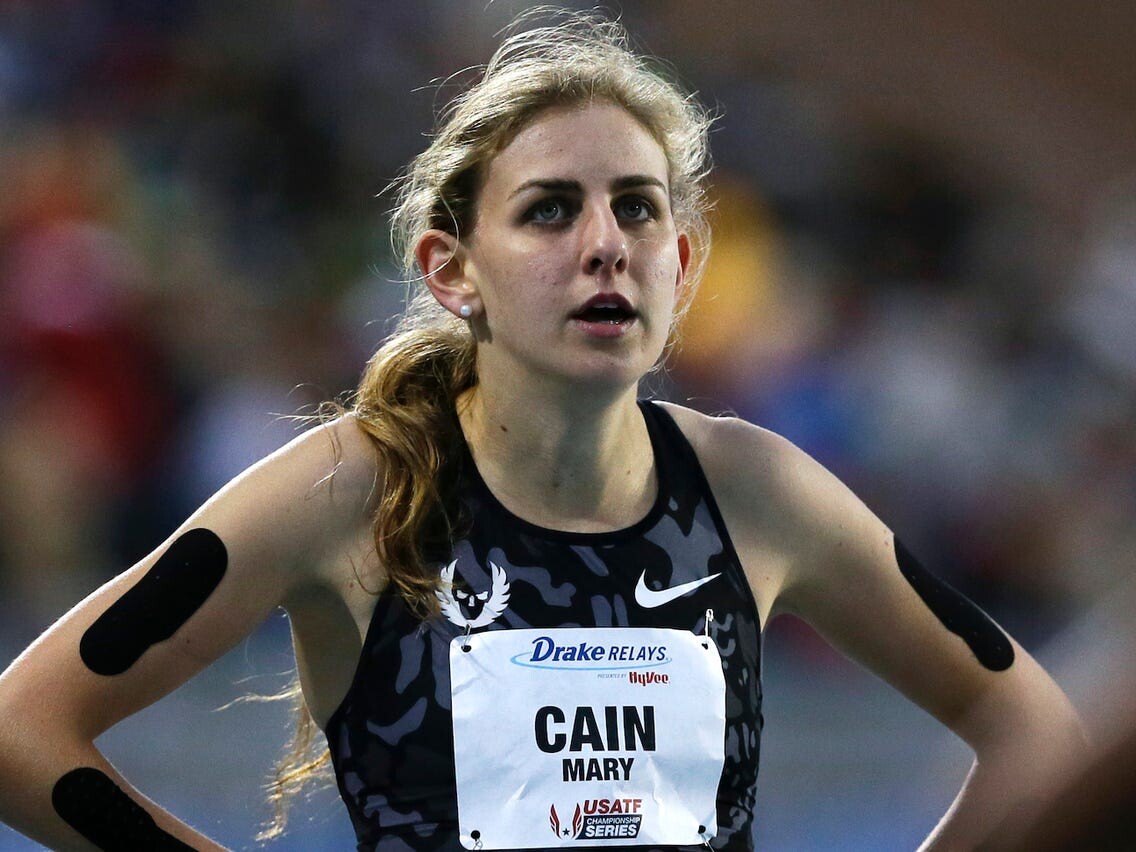
McCall added: “Nike was letting Alberto weight-shame women, objectify their bodies, and ignore their health and wellbeing as part of its culture. This was a systemic and pervasive issue. And they did it for their own gratification and profit.”
Nike athletes generally sign non-disclosure statements that strictly prohibit them from revealing any sensitive corporate secrets. Cain smashed the Nike code of silence two years ago when The New York Times published her wrenching account of her years at Nike.
Due in part to a protracted series of injuries, Cain never lived up to her superstar-in-the-making expectations. But when she was 16, after a brilliant high school running career, she was a hot commodity in distance running circles.
In 2012, she opted to skip college and go straight to Beaverton to run for Salazar. Salazar, himself a legendary runner, helped found the Nike Oregon Project to make American distance runners competitive with the rest of the world.
Salazar has had some big successes, particularly with Galen Rupp, the Portland kid who has become one of the world’s best marathoners. On Aug. 5, 2012, two Salazar athletes — Mo Farah and Rupp — finished one-two in the 10,000 at the Olympic Games in London.
His program also has been dogged by allegations that he pushed the use of performance-enhancing drugs.
The Nike Oregon Project was disbanded in 2019 after the U.S. Anti-Doping Agency accused Salazar of three violations. The agency banned him from the sport for four years.
Salazar appealed to the Court for Arbitration for Sport. Last month, the court upheld Salazar’s ban from the sport and some of USADA’s findings. It ruled that Salazar attempted an “intentional and orchestrated scheme to mislead” anti-doping investigators when he tampered with evidence.
The court reduced the duration of his ban from four to two years.
Salazar added: “Mary at times struggled to find and maintain her ideal performance and training weight.” Nike added that Cain had requested to be allowed back on the team after she left.
Salazar said this to Sports Illustrated:
My foremost goal as a coach was to promote athletic performance in a manner that supported the good health and well-being of all my athletes. On occasion, I may have made comments that were callous or insensitive over the course of years of helping my athletes through hard training. If any athlete was hurt by any comments that I have made, such an effect was entirely unintended, and I am sorry. I do dispute, however, the notion that any athlete suffered any abuse or gender discrimination while running for the Oregon Project.”
by Jeff Manning
Login to leave a comment
Previous champions will headline the men's and women's races at the 125th Boston Marathon
It’s official – Boston is back with 20,000 of the world’s best marathoners taking to the start line on Monday, Oct. 11. This year’s field is locked and loaded, for the first-ever fall edition of the marathon.
This race will feature a massive elite field of 140 athletes, headlined by previous champions Lelisa Desisa, Des Linden and Edna Kiplagat plus top American runners Jordan Hasay, Molly Huddle and Abdi Abdirahman.
The women’s race
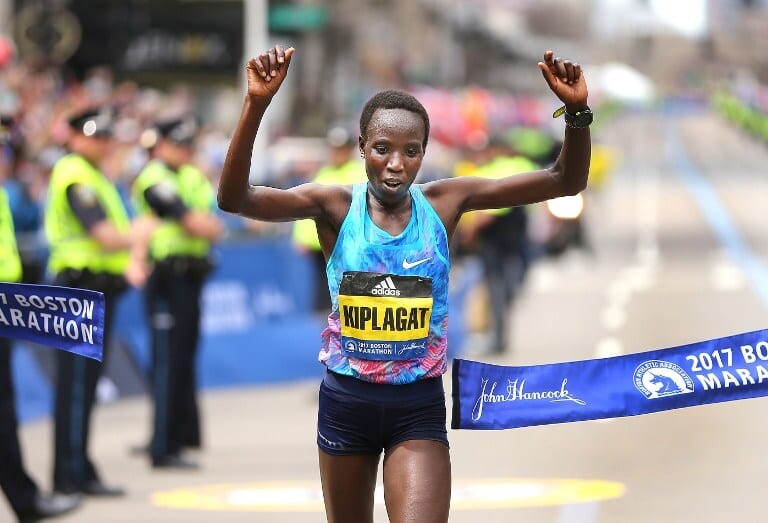
The women’s race only features two women who have run under 2:20, Mare Dibaba of Ethiopia (2:19:52) and 2017 champion Kiplagat (2:19:50). Kiplagat has raced twice this year at NYRR races, finishing sixth and third. This will be her first marathon since finishing second at Boston in 2019. Dibaba had a DNF in 2019 and was plagued with an injury at the start of the pandemic. This race will mark the return of the 2015 world champion to the marathon distance.
Another athlete to keep your eye on is Kenya’s Angela Tanui, who won the Siena Marathon in Italy earlier this year, running a nine-minute personal best of 2:20:08. Atsede Bayisa of Ethiopia, who is a part of the NN Running Team, is competing as well, after taking four years off competition. Bayisa has two road race victories to her name, which came during her training build-up to Monday’s race. Former 10-mile world record holder Caroline Chepkoech makes her marathon debut, with a half marathon personal best of 1:05:07. Chepkoech has recently changed citizenship from Kenya to Kazakhstan and will be representing her new country at this event.
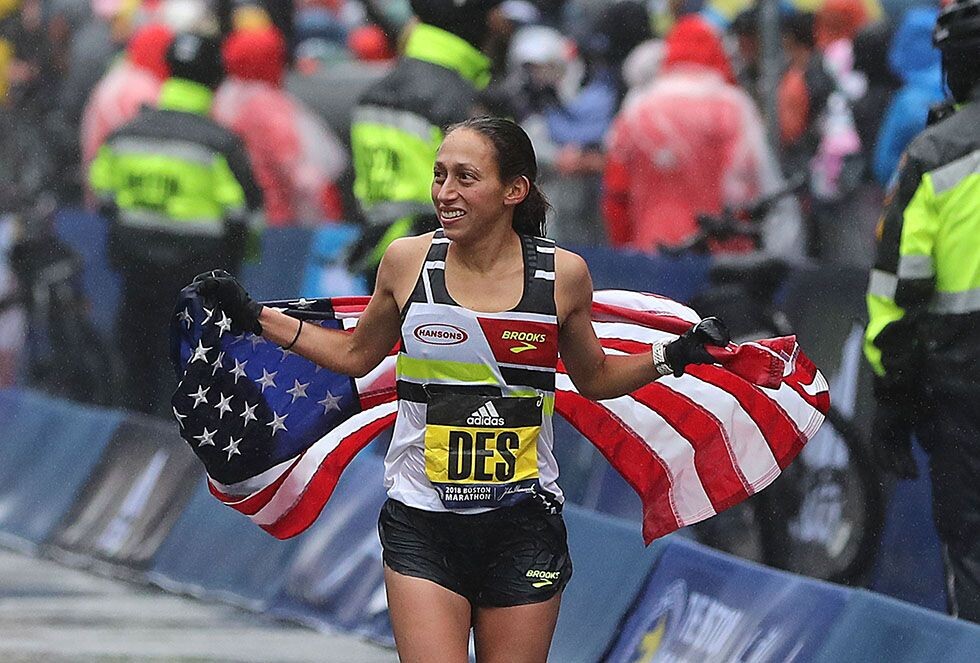
Outside of the international favorites, American track fans continue to wait for Hasay’s breakthrough. She has been third at two major marathons and has been agonizingly close to Deena Kastor’s American record, running the second-fastest time by an American (2:20:57 at Chicago 2017). Since then Hasay has changed coaches, from the controversial Alberto Salazar to former marathon world record holder Paula Radcliffe, when the Nike Oregon Project disbanded due to Salazar’s investigation. Linden was the last American to win the Boston Marathon, in 2018, and will be running Boston for her seventh time. She enters the race with a PB of 2:22:38.
Toronto’s Brittany Moran is the only elite Canadian in the women’s field, coming in with a personal best of 2:36:22. Moran won Toronto’s Yorkville 5K in mid-September in a time of 16:40.
The men’s race
The men’s race is loaded, having eight men who have run under 2:06. It is headlined by two-time Boston champion, Ethiopia’s Lelisa Desisa. Desisa is one of the best marathoners in the world in recent years, having won the event twice in 2013 and 2015, and finishing second in 2016 and 2019. Desisa will be challenged by his countrymen Asefa Mengstu (2:04:06) and Lemi Berhanu (2:04:33). Berhanu beat Desisa to get on the 2016 Ethiopian Olympic team, but has only finished one of his last five marathons, which was a second-place finish at Toronto’s Scotiabank Waterfront Marathon in 2019.
Kenya’s Benson Kipruto (2:05:13) and Wilson Chebet (2:05:27) are two experienced racers in the field who can wear down opponents over the Newton hills. Kipruto won the 2018 Scotiabank Toronto Waterfront Marathon. 2012 Olympian Dylan Wykes is the top-seeded Canadian in the field, with a personal best of 2:10:47. The last time Wykes competed in a marathon was at the Scotiabank Toronto Marathon in 2019, where he placed 30th. Rory Linkletter from Alberta will compete in his first Boston Marathon, and will look to follow in the footsteps of his U.S. Hoka NAZ Elite training partner Scott Fauble, to run under 2:10 at this race. Linkletter ran his marathon personal best of 2:12:54 at the Marathon Project in 2020. Thomas Toth (2:16:28) of Ontario is the other Canadian in the men’s elite field. 44-year-old American runner Abdirahman will be on the start line as the top U.S. athlete, only 64 days after he competed in the Tokyo Olympic marathon.
The 2021 Boston Marathon will mark the first time the race will take place on the same day as a Boston Red Sox playoff game. The Red Sox will play Game 4 of the ALDS series at Fenway Park on Monday evening. The weather is calling for 17 to 20 degrees C in the morning, with only a 20 per cent chance of precipitation.
How to watch the 2021 Boston Marathon
Live coverage of the event will begin at 8 a.m. ET, with the men’s and women’s wheelchair races setting off at 8:02 and 8:04 a.m. ET. The elite female runners will begin at 8:32 a.m., followed by the men at 9:00 a.m. ET.
Live race coverage will be broadcasted on NBC Sports Network for cable subscribers from 7:30 a.m. to 12:00 p.m. ET. If you are looking for an online stream of the race, it will be on RunnerSpace, where you can sign up to follow all the action.
by Marley Dickinson
Login to leave a comment
Boston Marathon
Among the nation’s oldest athletic clubs, the B.A.A. was established in 1887, and, in 1896, more than half of the U.S. Olympic Team at the first modern games was composed of B.A.A. club members. The Olympic Games provided the inspiration for the first Boston Marathon, which culminated the B.A.A. Games on April 19, 1897. John J. McDermott emerged from a...
more...CAS releases official report on Salazar ban
Reports on Wednesday announced the Court of Arbitration for Sport (CAS) had upheld the four-year suspension imposed on former Nike Oregon Project coach Alberto Salazar and former team endocrinologist, Dr. Jeffrey Brown for doping violations, and less than 24 hours later the official CAS report has been released.
In its report, the CAS ruled that Salazar had committed three anti-doping rule violations, including possession of testosterone, complicity in Brown’s administration of a prohibited method and tampering with the doping control process with respect to the issue of L-carnitine infusions/syringes. Similarly, Brown was charged with four violations, including complicity in Salazar’s possession of testosterone, trafficking of testosterone to Salazar, administration of a prohibited method and tampering with the doping control process.
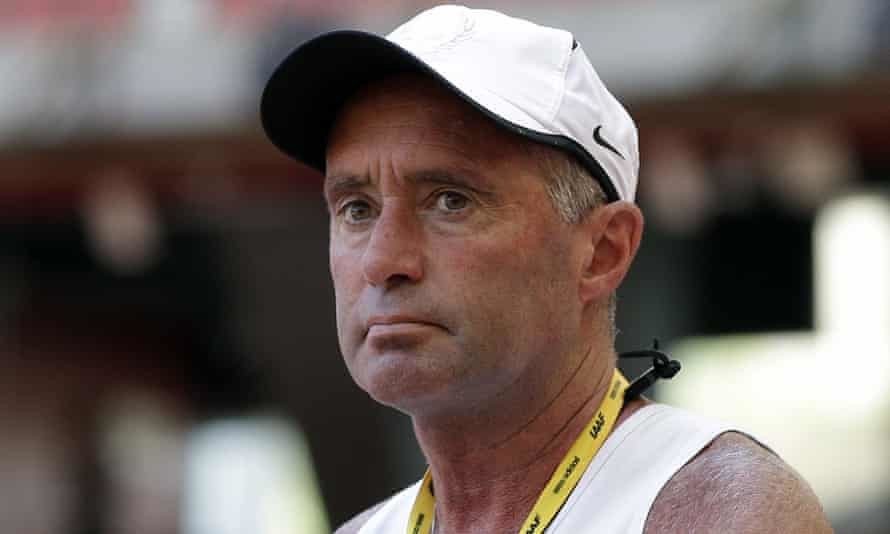
The investigation into Salazar and the NOP began in 2015 when a BBC Panorama documentary entitled “Catch Me If You Can” alleged the coach used prescription drugs and therapeutic use exemptions (TUEs) to push the boundaries of performance.
The film interviewed former NOP athlete Kara Goucher and former coach Steve Magness, who described the experiments Salazar performed to determine exactly how much testosterone cream could be applied to an athlete’s skin without triggering a positive test. An experiment was also done to test a rapid-acting (and illegal, under WADA rules) infusion of a supplement known to boost the body’s L-carnitine levels, which in turn helps the body convert fat to energy.
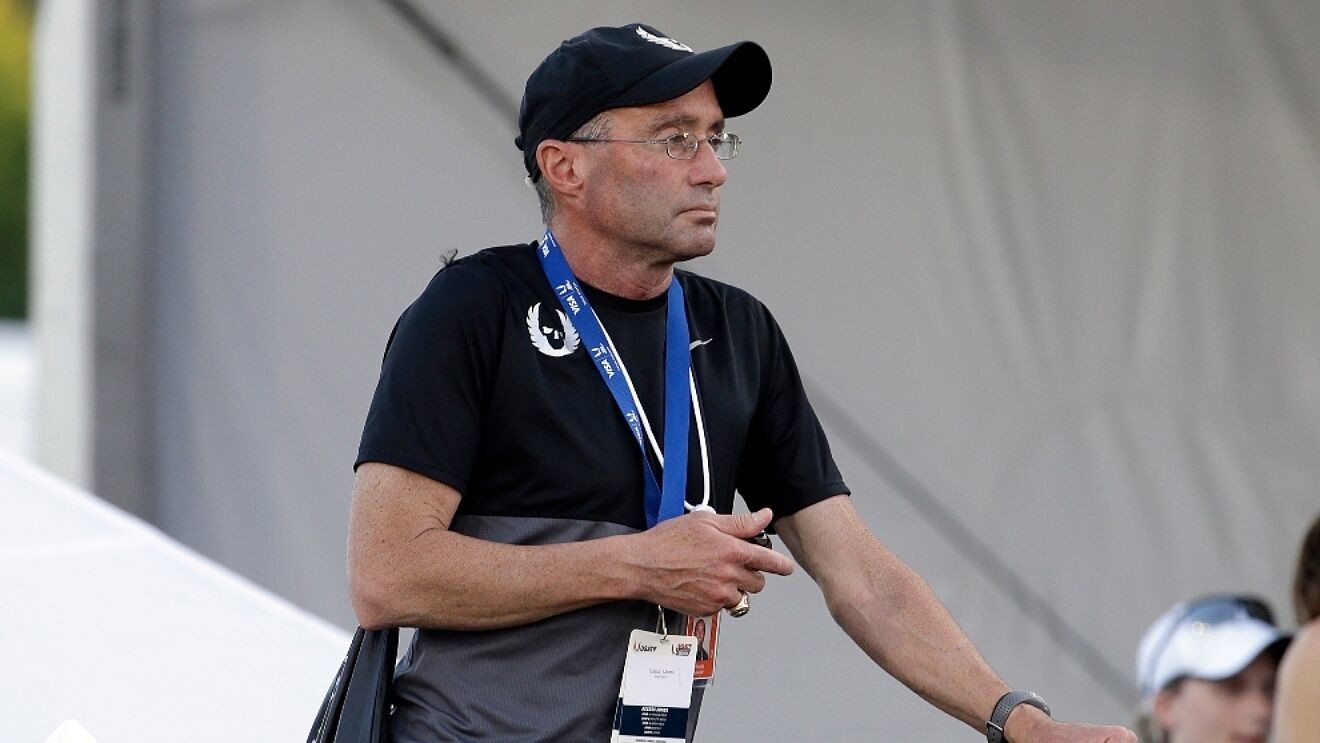
In 2017, a leaked U.S. Anti-Doping Agency (USADA) report from 2016 indicated that Salazar had been giving his athletes, including Sir Mo Farah, the amino acid L-carnitine, via an IV drip. L-carnitine is not a banned substance, but infusions of more than 50 mL in the span of six hours are prohibited, and reports claimed the coach “almost certainly” broke those rules.
Throughout the process, Salazar has continued to deny the allegations, and none of his former athletes, including Farah, Galen Rupp, Sifan Hassan, Matthew Centrowitz and Canada’s Cam Levins have ever tested positive for illegal substances, which the CAS notes in its report.
It also acknowledged that the way in which USADA’s investigation was conducted was “out of proportion and excessive when compared to the severity and consequences of the ADRVs [anti-doping rule violations] that have been established,” yet it still upheld the bans: “the Panel was satisfied that the rules have been properly applied, and that, on the basis of the ADRV’s found by the CAS Panel, the sanctions have been determined in accordance with the relevant version of the WADC.”
by Brittany Hambleton
Login to leave a comment
Siffan Hassan has won at the 5,000 meters and now looks to the 1,500 and 10,000
Six races in eight days on the Tokyo track? No problem, says Sifan Hassan, who overcame a Monday morning fall in the 1500m heats to win 5000m gold in the evening.
How about 24,500 meters of Olympic racing in the matter of eight days?
The Netherlands’ Sifan Hassan has said she’ll try it, competing in each of the 1500m, 5000m, and 10,000m races at Tokyo 2020, a line-up rarely seen – especially in the hot conditions athletics runners are facing at these Games.
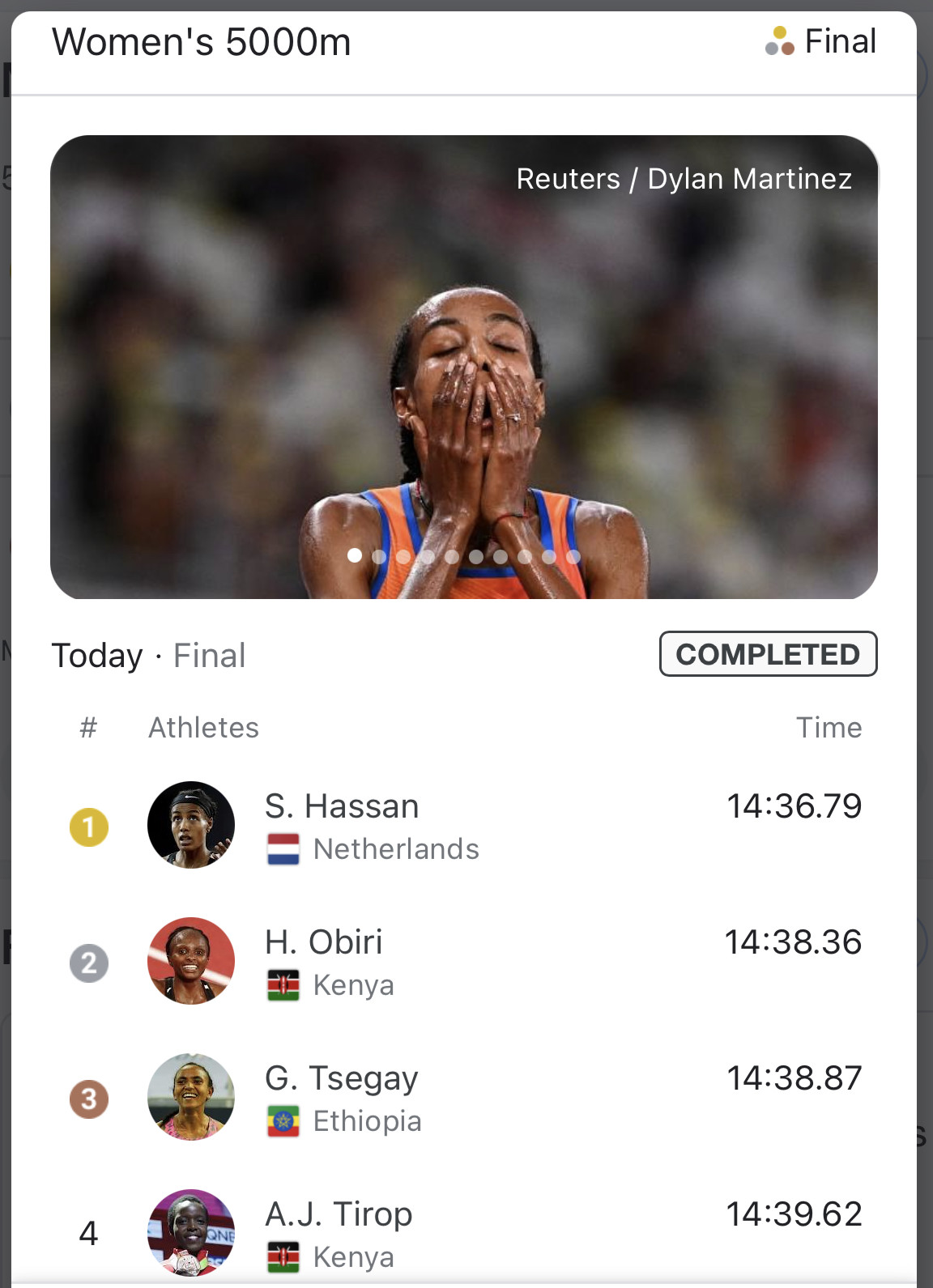
“For me it is crucial to follow my heart,” said Hassan in a press release. “Doing that is far more important than gold medals. That keeps me motivated and it keeps me enjoying this beautiful sport.”
Having already run on Friday (July 30) to qualify for the 5000m final, Hassan fell with a lap to go in Monday morning's 1500m first round, but picked herself up to win the heat!
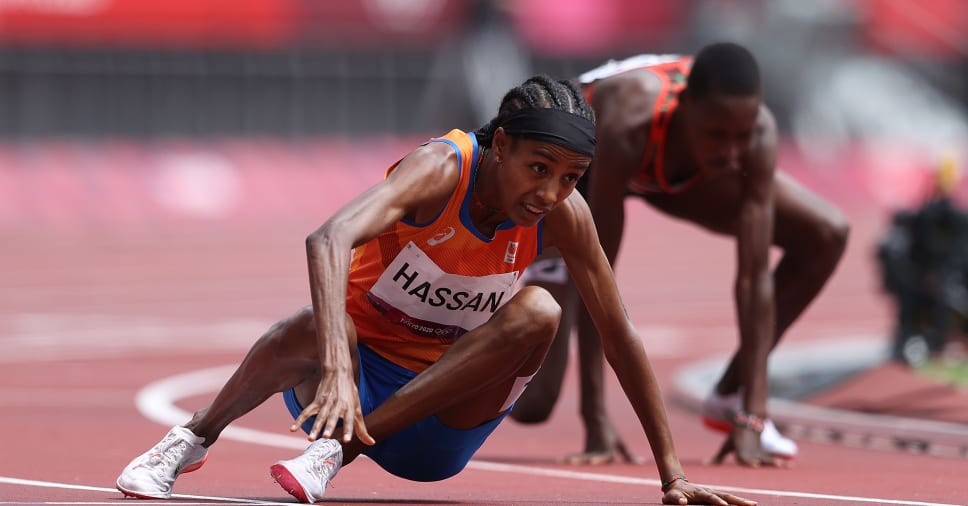
Just 12 hours later, Hassan produced her famed finishing kick to take her first global title over 5000m and her first Olympic medal.
That may have been the hardest of three with the mile world record holder completing a 1500m-10,000m double at the 2019 World Championships.
See her full schedule below – and find out what other similar feats have been attempted in athletics in Games past, as you get to know the distance running star.
Born in Ethiopia in 1993, Hassan arrived in the Netherlands as a 15-year-old refugee in 2008. She split her time between running and studying to become a nurse.
She became a Dutch citizen in late 2013, which allowed her to represent the Netherlands in competition.
As early as 2011, Hassan began making her mark on the international stage, winning the Eindhoven Half Marathon that year. In 2013, she won the 3000m at the Ostrava Golden Spike meeting in June.
At the 2014 European Championships in Zurich, Hassan took gold in the 1500m and a year later, she won bronze in the 1500m at the World Championships in Beijing, joining Dafne Schippers as the only Dutch athletes to win medals at the Worlds.
She had clearly established herself as one to watch ahead of Rio 2016, though injuries hampered her build-up to those Games, where she went out in the heats in the 800m but reached the final of the 1500m, where she finished fifth behind Kenya’s gold medalist Faith Kipyegon.
Has anyone tried such an Olympic programme before? Let’s compare it with two great long-distance feats at Olympic Games.
According to The Guardian, Paavo Nurmi went for four at Paris 1924: Nurmi won the men's 1500m, 5000m, and 3000m team event – as well as two cross-country events – but “Finnish officials feared for his health and refused to let him race the 10,000m.”
The 1500, 3000 and 5000 happened over a span of just five days.
At Helsinki 1952, Czechoslovakia’s Emil Zatopek won the 5000m, 10,000m, and marathon (42km) – all in Olympic records. Those four races (a semi and a final for the 5000), took place over eight days.
After Rio, Hassan joined Alberto Salazar’s training group in Oregon, keeping her focus largely on the 1500m. She was fifth again (behind Kipyegon) in the 1500m at the 2017 World Championships in London and took bronze in the 5000m with another Kenyan, Hellen Obiri, winning gold.
In 2019, after a quiet season to start, she set a new mile world record at the Monaco Diamond League in 4:12.33.
At the World Championships in Doha, she entered the 10,000m having only ran the race competitively just once before. But Hassan closed down Letesenbet Gidey before sprinting clear on the last lap to take her first global title.
A week later, she showed her versatility by winning the 1500m to complete a unique double at Worlds.
After worlds, it was announced that her coach, Salazar, would be suspended from athletics due to doping allegations. Hassan denied any knowledge of wrongdoing.
She continued to perform at the top level after his suspension: She set the aforementioned mile world record in 2019, then ran the fourth fastest 10,000m ever before setting a new world record at that distance in June of 2021. (That record was broken two days later, by Gidey.)
Hassan will almost certainly fight it out with Gidey for gold in the 10,000, but the Dutch runner’s famed finishing kick gives her a great chance of adding the Olympic title to her world title.
Here’s a breakdown of Hassan’s potential schedule, having already advance through into the final of the 5000m on Monday night (Aug 2).
Fri 30 July 19:00 JST - 5000m semi-finals – Finished 1st, to reach final.
Mon 2 August 09:47 JST - 1500m round 1 - Finished 1st in heat despite falling, to reach semi-finals.
Mon 2 August 21:40 JST - 5000m final
Wed 4 August around 17:00 JST - 1500m semi-finals.
Fri 6 August 21:50 JST - 1500m final (if she qualifies)
Sat 7 August 19:45 JST - 10,000m final.
Login to leave a comment
Tokyo 2020 Olympic Games
Fifty-six years after having organized the Olympic Games, the Japanese capital will be hosting a Summer edition for the second time, originally scheduled from July 24 to August 9, 2020, the games were postponed due to coronavirus outbreak, the postponed Tokyo Olympics will be held from July 23 to August 8 in 2021, according to the International Olympic Committee decision. ...
more...Alberto Salazar gets lifetime ban for sexual, emotional misconduct
Alberto Salazar, the 1982 Boston Marathon champion from Wayland and once a prominent Nike coach of some of the world’s top distance runners, was permanently barred from participating in track and field Monday by the US Center for SafeSport, which cited Salazar for sexual and emotional misconduct.
Salazar, 62, has 10 business days to request an appeal through arbitration of the ruling made by SafeSport, a nonprofit founded in 2017 to protect athletes from sexual, physical and emotional abuse.
The decision Monday was the latest stage of a humiliating fall for Salazar, who was suspended for four years in September 2019 by the United States Anti-Doping Agency for violating rules governing banned substances. He is appealing that suspension to the Court of Arbitration for Sport, the Swiss-based equivalent of a Supreme Court for international sports.
The SafeSport charges were not detailed Monday. In January 2020, the organization temporarily barred Salazar from participating in track and field after elite female runners who formerly trained under him, including Mary Cain, Amy Yoder Begley and Kara Goucher, described what they said were years of psychological and verbal abuse by the coach.
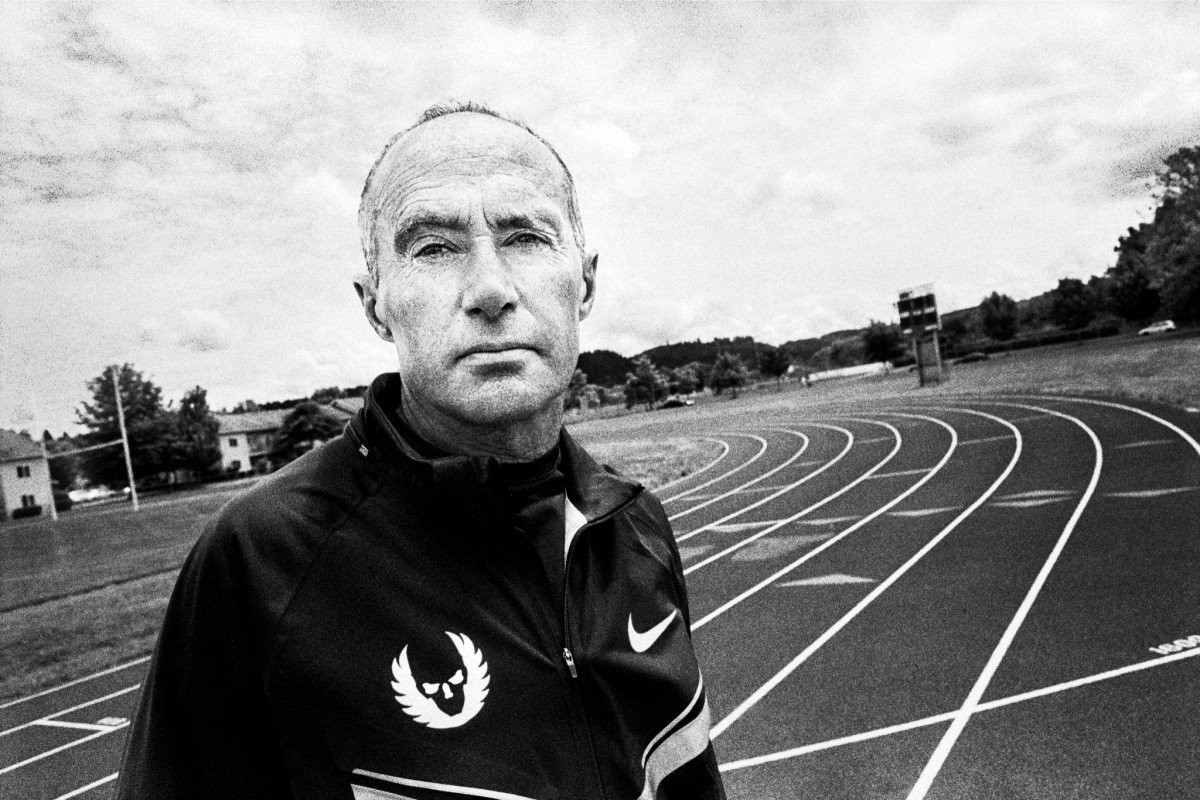
Neither Salazar nor his lawyer immediately responded to requests for comment Monday. Salazar has previously denied all accusations of misconduct.
In a 2019 video produced by the Opinion department of The New York Times, Cain, a former high school phenom from New York who is now 25, accused Salazar of shaming her in front of others on the Nike Oregon Project team — which has since been disbanded — when she did not reach weight targets. She said that her low weight caused her to miss her period for three years, leading to lower levels of estrogen and five broken bones.
Cain also said that she had suicidal thoughts and had cut herself, but that no one at Nike “really did anything or said anything.”
Yoder Begley, a 2008 Olympian, tweeted in 2019 that she was removed from the Oregon Project after a disappointing showing in the 10,000 meters at the 2011 United States track and field championships.
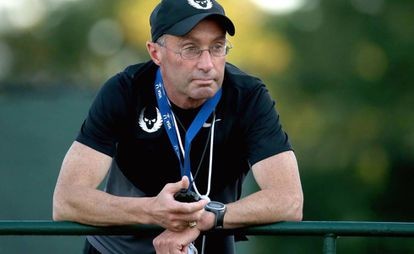
“I was told I was too fat and ‘had the biggest butt on the starting line,’ " Yoder Begley wrote.
Goucher, another American Olympian who once trained with the Nike Oregon Project, told The Times that after being cooked meager meals by an assistant coach, she often ate more in the privacy of her room, nervous that she would be heard opening the wrappers of energy bars she furtively consumed.
Salazar replied to Cain’s 2019 video in a statement to The Oregonian newspaper: “Neither of her parents nor Mary raised any of the issues that she now suggests occurred while I was coaching her. To be clear, I never encouraged her, or worse yet, shamed her, to maintain an unhealthy weight.”
Cain acknowledged at the time that she had sought to train again with Salazar, seeking an apology, closure and his approval. But she described their relationship as poisonous, saying, “I was the victim of an abusive system, an abusive man.”
Salazar told Sports Illustrated in 2019 that his “foremost goal” was to promote athletic performance in line with the good health and well-being of his athletes, but he acknowledged, “On occasion, I may have made comments that were callous or insensitive.”
by Jere Longman
Login to leave a comment
Sifan Hassan eyes unprecedented Olympic track treble
Sifan Hassan may have raised eyebrows when she announced an unprecedented bid for triple Olympic gold in the 1500m, 5000m and 10,000m, but on previous form she looks tailor-made to make history in Tokyo.
The 28-year-old, born in Ethiopia but now a long-time naturalised Dutchwoman, became the first athlete to achieve the 1500 and 10,000m world double in Doha in 2019.
It was a remarkable show of running, especially as it came after the news that her coach Alberto Salazar, the head of the Nike-funded Oregon Project, had been banned for four years over doping-related issues.
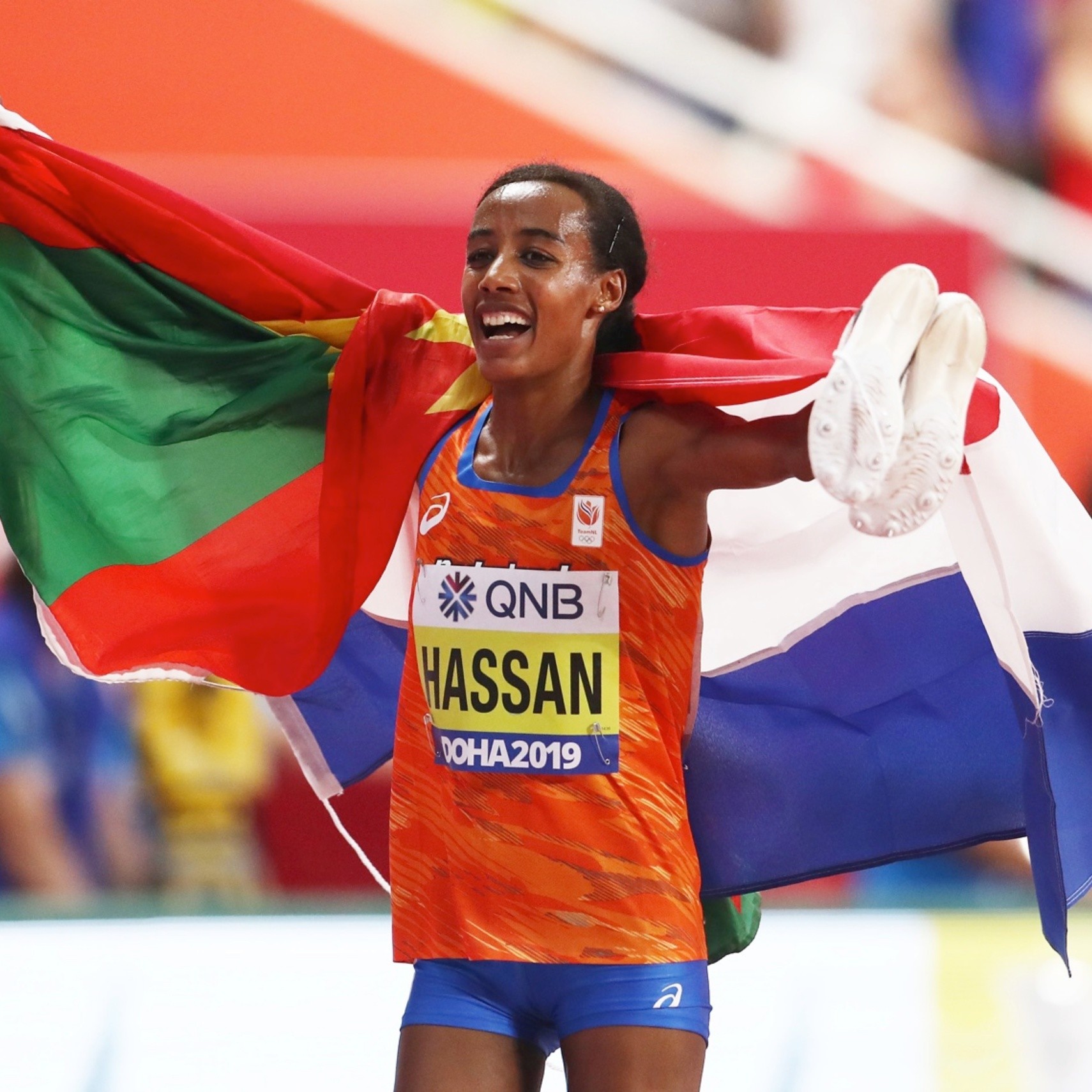
"The hardest moment and pressure in my life was in Doha and I handled it," she said earlier this month.
"Tokyo will not be hard."
Hassan certainly did handle it, meeting the furore head-on after she had completed the double.
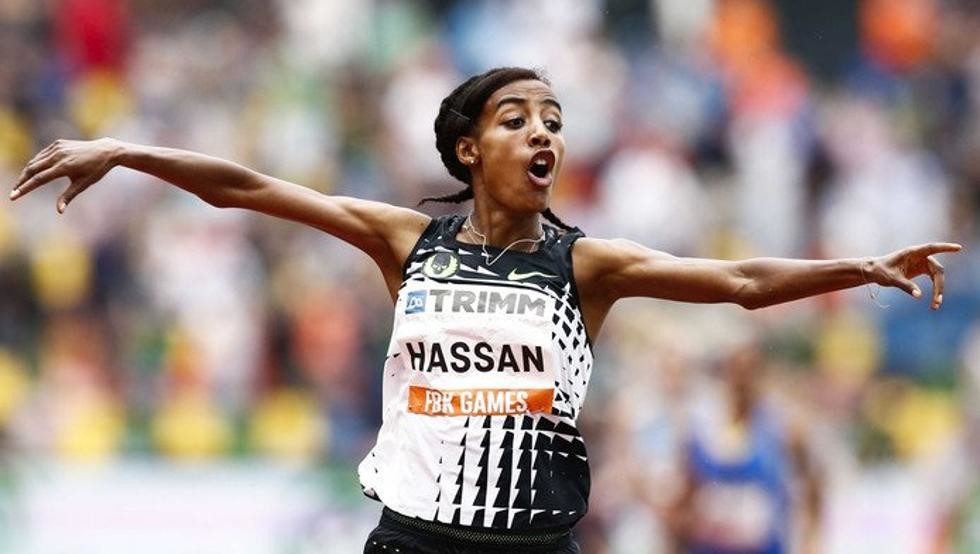
"If they want to test me they can test me every single day. Every single day," she said.
"I believe in clean sport, I'm always clean, I will always be clean.
"I believe in the Oregon Project (since disbanded by Nike). I've seen Alberto. He's worked really hard and that is what I know."
Hassan failed to bow down to more potential criticism from detractors when she selected former Salazar assistant Tim Rowberry as her new coach.
"Three years ago I made the choice to go to America," she said in 2020 after choosing Rowberry.
"I now have a familiar situation where I feel very much at home.
"I have considered several options and met new people to find the right click, but I believe that my current training situation is the best way to successfully prepare for the Tokyo Olympics."
'I am crazy'
Hassan's treble bid echoes that of the 'Czech Locomotive', Emile Zatopek, who won 5,000m, 10,000m and marathon golds at the 1952 Olympics.
For Hassan it may be more of a challenge in terms of the scheduling with the toughest day on August 2.
She runs the 1500m heats in the morning and then, provided there has not been an upset in qualifying, the 5,000m final in the evening session.
She would then need to come through the 1500m semi-finals on August 4 with the final two days later.
If it is two from two after that, a sleepless night might beckon ahead of a history-making attempt at the third, the 10,000m final, on August 7.
Login to leave a comment
Tokyo 2020 Olympic Games
Fifty-six years after having organized the Olympic Games, the Japanese capital will be hosting a Summer edition for the second time, originally scheduled from July 24 to August 9, 2020, the games were postponed due to coronavirus outbreak, the postponed Tokyo Olympics will be held from July 23 to August 8 in 2021, according to the International Olympic Committee decision. ...
more...Mary Cain launches professional women's running team
Mary Cain has announced the launch of her new professional women’s running team, Atalanta New York. Cain previously ran for Alberto Salazar and the Nike Oregon Project (NOP), and in 2019, four years after leaving the team, she opened up about the emotional and physical abuse she endured in her short time training with that group. That abuse pushed Cain to the point of considering suicide, and it was fuelled by Salazar’s win-at-all-costs mentality. Cain is now looking to fight this mindset (which was not unique to the NOP), and Atalanta NY will work to empower and support its athletes and young female runners everywhere.
Cain is the president and CEO of Atalanta NY, an endeavour she says is the next step in her fight against the toxicity plaguing the world of athletics. “Ever since I shared my story to The NY Times, I have wanted to do more,” she wrote on Instagram. The first step in this fight, she said, was speaking out against Salazar, the NOP and the must-win culture (which has led to the abuse of so many female athletes) in track. “Maybe it’s the runner in me, but I wanted to take more than a first step.”‘
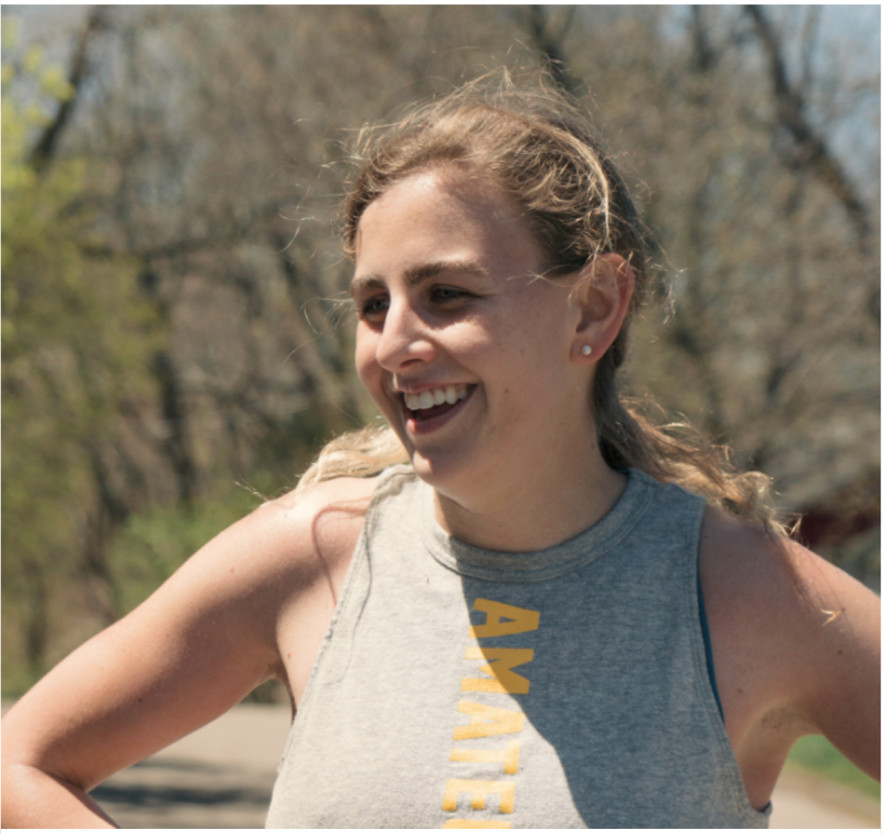
Atalanta NY is a New York City-based nonprofit that will employ its athletes, not as competitors, but as mentors to young women in the running community. This takes the emphasis off of performance (which is the usual focus for professional running teams) and instead places it on community involvement, something that Cain said she believes will “shake up the current model of professional sports.”
This is similar (although not identical) to the structure of Tracksmith’s partnership with Cain. In 2020, Cain signed with Tracksmith to work as a full-time employee while also running for the brand. This allowed Cain to run worry-free, as her contract was not dependent on her results, but rather on her work as the brand’s New York City community manager. Cain is still representing Tracksmith, and the company is a founding sponsor of Atalanta NY.
“Atalanta New York’s mission is two-fold,” reads a post on the Tracksmith Instagram page. “As a team, its goal is to help elite runners chase their athletic dreams through a sustainable and healthy organizational model. As a nonprofit, the goal is to educate and inspire young female athletes in underserved New York communities to find joy and wellness through sport.”
So far, Atalanta NY has only named two professional athletes to the team: Cain and Jamie Morrissey. Cain hasn’t raced much in the past few years (she raced four times in 2020, interrupting a four-year break from competition), but she still owns several big records, including the world U20 indoor 1,000m record (2:35.80) and American U20 two-mile best (9:38.68). Morrissey is a former University of Michigan standout who owns a PB of 4:11.48 in the 1,500m.
No other runners have been publicly added to the team yet, but Cain has said there will be more athlete announcements soon. To learn more about Atalanta NY and the team’s mission,
by Running Magazine
Login to leave a comment
Record-crushing track superstar Mary Cain launches professional women’s running team
Mary Cain has announced the launch of her new professional women’s running team, Atalanta New York. Cain previously ran for Alberto Salazar and the Nike Oregon Project (NOP), and in 2019, four years after leaving the team, she opened up about the emotional and physical abuse she endured in her short time training with that group. That abuse pushed Cain to the point of considering suicide, and it was fuelled by Salazar’s win-at-all-costs mentality.
Cain is now looking to fight this mindset (which was not unique to the NOP), and Atalanta NY will work to empower and support its athletes and young female runners everywhere.
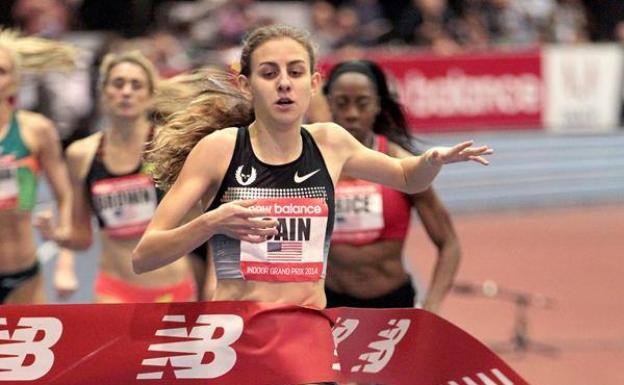
Cain is the president and CEO of Atalanta NY, an endeavour she says is the next step in her fight against the toxicity plaguing the world of athletics. “Ever since I shared my story to The NY Times, I have wanted to do more,” she wrote on Instagram. The first step in this fight, she said, was speaking out against Salazar, the NOP and the must-win culture (which has led to the abuse of so many female athletes) in track. “Maybe it’s the runner in me, but I wanted to take more than a first step.”‘
Atalanta NY is a New York City-based nonprofit that will employ its athletes, not as competitors, but as mentors to young women in the running community. This takes the emphasis off of performance (which is the usual focus for professional running teams) and instead places it on community involvement, something that Cain said she believes will “shake up the current model of professional sports.”
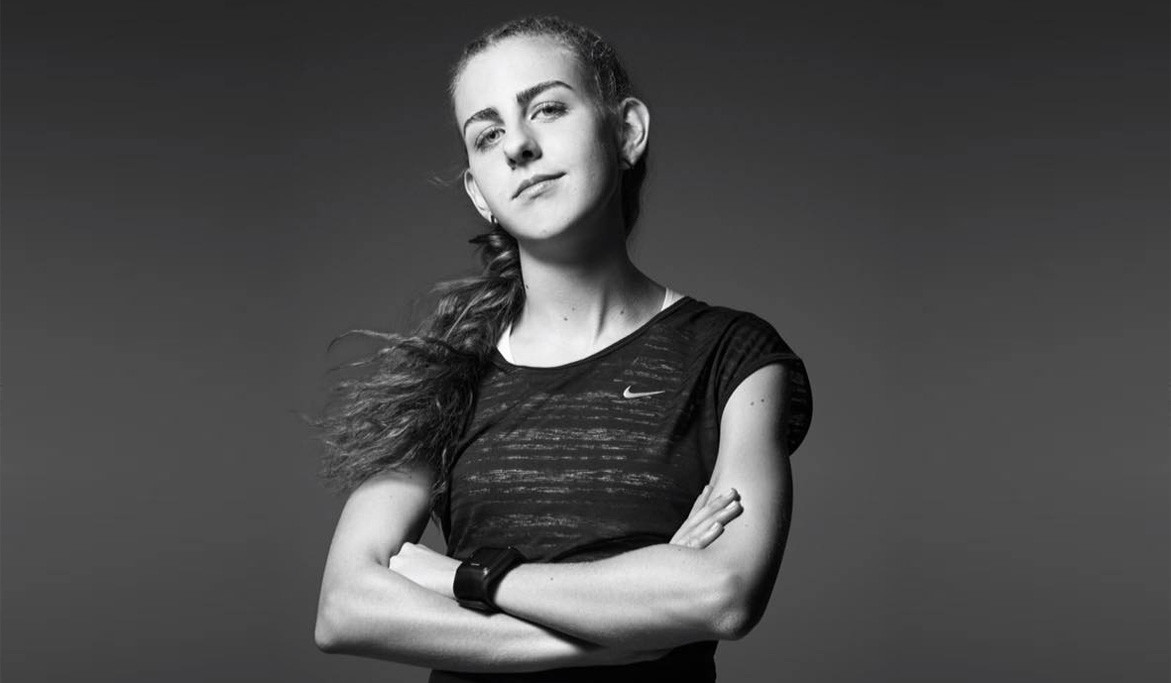
This is similar (although not identical) to the structure of Tracksmith’s partnership with Cain. In 2020, Cain signed with Tracksmith to work as a full-time employee while also running for the brand. This allowed Cain to run worry-free, as her contract was not dependent on her results, but rather on her work as the brand’s New York City community manager. Cain is still representing Tracksmith, and the company is a founding sponsor of Atalanta NY.
“Atalanta New York’s mission is two-fold,” reads a post on the Tracksmith Instagram page. “As a team, its goal is to help elite runners chase their athletic dreams through a sustainable and healthy organizational model. As a nonprofit, the goal is to educate and inspire young female athletes in underserved New York communities to find joy and wellness through sport.”
So far, Atalanta NY has only named two professional athletes to the team: Cain and Jamie Morrissey. Cain hasn’t raced much in the past few years (she raced four times in 2020, interrupting a four-year break from competition), but she still owns several big records, including the world U20 indoor 1,000m record (2:35.80) and American U20 two-mile best (9:38.68). Morrissey is a former University of Michigan standout who owns a PB of 4:11.48 in the 1,500m.
No other runners have been publicly added to the team yet, but Cain has said there will be more athlete announcements soon.
by Ben Snider-McGrath
Login to leave a comment
New Salazar documentary questions reasons for his 2019 suspension
Nike’s Big Bet, the new documentary about former Nike Oregon Project head coach Alberto Salazar by Canadian filmmaker Paul Kemp, seeks to shed light on the practices that resulted in Salazar’s shocking ban from coaching in the middle of the 2019 IAAF World Championships. Many athletes, scientists and journalists appear in the film, including Canadian Running columnist Alex Hutchinson and writer Malcolm Gladwell, distance running’s most famous superfan.
Most of them defend Salazar as someone who used extreme technology like underwater treadmills, altitude houses and cryotherapy to get the best possible results from his athletes, and who may inadvertently have crossed the line occasionally, but who should not be regarded as a cheater. (Neither Salazar nor any Nike spokesperson participated in the film. Salazar’s case is currently under appeal at the Court of Arbitration for Sport.)
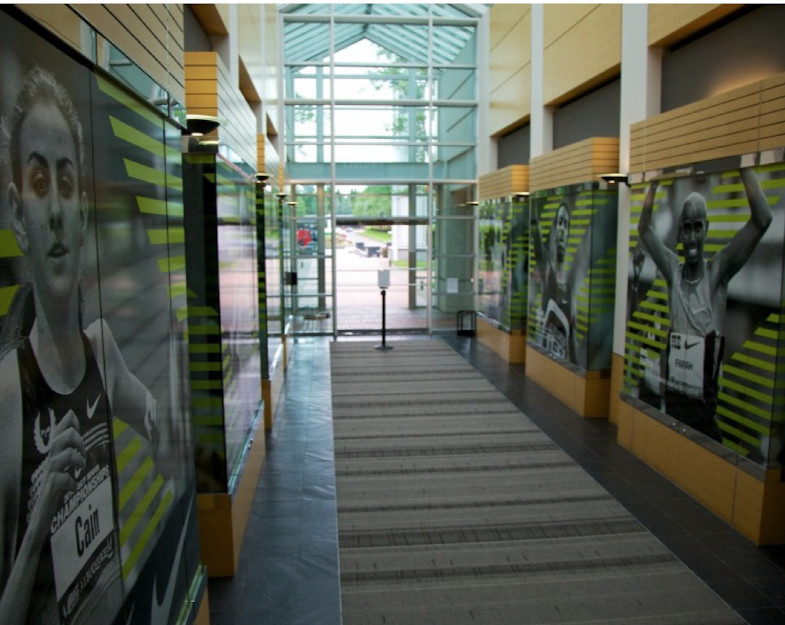
Salazar became synonymous with Nike’s reputation for an uncompromising commitment to winning. He won three consecutive New York City Marathons in the early 1980s, as well as the 1982 Boston Marathon, and set several American records on the track during his running career.
He famously pushed his body to extremes, even avoiding drinking water during marathons to avoid gaining any extra weight, and was administered last rites after collapsing at the finish line of the 1987 Falmouth Road Race.
Salazar was hired to head the Nike Oregon Project in 2001, the goal of the NOP being to reinstate American athletes as the best in the world after the influx of Kenyans and Ethiopians who dominated international distance running in the 1990s. It took a few years, but eventually Salazar became the most powerful coach in running, with an athlete list that included some of the world’s most successful runners: Mo Farah, Galen Rupp, Matt Centrowitz, Dathan Ritzenhein, Kara Goucher, Jordan Hasay, Cam Levins, Shannon Rowbury, Mary Cain, Donovan Brazier, Sifan Hassan and Konstanze Klosterhalfen.
Goucher left the NOP in 2011, disillusioned by what she saw as unethical practices involving unnecessary prescriptions and experimentation on athletes, and went to USADA in 2012. An investigation by the U.S. Anti-Doping Agency followed on the heels of a damning BBC Panorama special in 2015, and picked up steam in 2017.
When Salazar’s suspension was announced during the World Championships in 2019, he had been found guilty of multiple illegal doping practices, including injecting athletes with more than the legal limit of L-carnitine (a naturally-occurring amino acid believed to enhance performance) and trafficking in testosterone – but none of his athletes were implicated. (Salazar admitted to experimenting with testosterone cream to find out how much would trigger a positive test, but claimed he was trying to avoid sabotage by competitors.)
That Salazar pushed his athletes as hard in training as he had once pushed himself is not disputed; neither is the fact that no Salazar athlete has ever failed a drug test. Gladwell, in particular, insists that Salazar’s methods are not those of someone who is trying to take shortcuts to victory – that people who use performance-enhancing drugs are looking for ways to avoid extremes in training.
That assertion doesn’t necessarily hold water when you consider that drugs like EPO (which, it should be noted, Salazar was never suspected of using with his athletes) allow for faster recovery, which lets athletes train harder – or that the most famous cheater of all, Lance Armstrong, trained as hard as anyone. (Armstrong, too, avoided testing positive for many years, and also continued to enjoy Nike’s support after his fall from grace.)
Goucher, Ritzenhein, Levins and original NOP member Ben Andrews are the only former Salazar athletes who appear on camera, and Goucher’s is the only female voice in the entire film. It was her testimony, along with that of former Nike athlete and NOP coach Steve Magness, that led to the lengthy USADA investigation and ban.
Among other things, she claims she was pressured to take a thyroid medication she didn’t need, to help her lose weight. (The film reports that these medications were prescribed by team doctor Jeffrey Brown, but barely mentions that Brown, too, was implicated in the investigation and received the same four-year suspension as Salazar.) Ritzenhein initially declines to comment on the L-carnitine infusions, considering Salazar’s appeal is ongoing, but then states he thinks the sanctions are appropriate. Farah, as we know, vehemently denied ever having used it, then reversed himself.
It’s unfortunate that neither Cain, who had once been the U.S.’s most promising young athlete, nor Magness appear on camera. A few weeks after the suspension, Cain, who had left the NOP under mysterious circumstances in 2015, opened up about her experience with Salazar, whom she said had publicly shamed her for being too heavy, and dismissed her concerns when she told him she was depressed and harming herself. Cain’s experience is acknowledged in the film, and there’s some criticism of Salazar’s approach, but Gladwell chalks it up to a poor fit, rather than holding him accountable.
Cain’s story was part of an ongoing reckoning with the kind of borderline-abusive practices that were once common in elite sport, but that are now recognized as harmful, and from which athletes should be protected.
Gladwell asserts that coaches like Salazar have always pushed the boundaries of what’s considered acceptable or legal in the quest to be the best, and that the alternative is, essentially, to abandon elite sport. It’s an unfortunate conclusion, and one that will no doubt be challenged by many advocates of clean sport.
by Running Magazine
Login to leave a comment
Irish former track and field athlete Sonia O’Sullivan will take Nike coaching role based in Portland, Oregon
Sonia O’Sullivan has agreed to take up a new assistant coaching role with a Nike training group based in Portland, Oregon beginning this week, initially in the run up to and including the Tokyo Olympics.
It will see O’Sullivan move from her current home in Melbourne to the US on Thursday, her new role as assistant coach to Pete Julian affording her the chance to work with some of the best distance runners in the world.
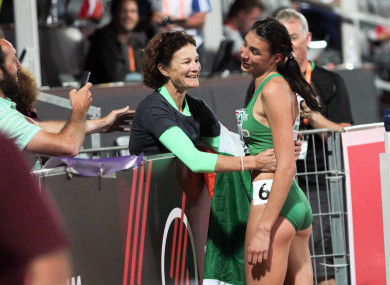
Describing the role as “exciting and challenging”, O’Sullivan is also looking forward to the chance to “have some purpose again in big time athletics”.
The move, only confirmed in recent weeks, will also bring O’Sullivan closer to her daughter Sophie, currently in her first year at the University of Washington on scholarship.
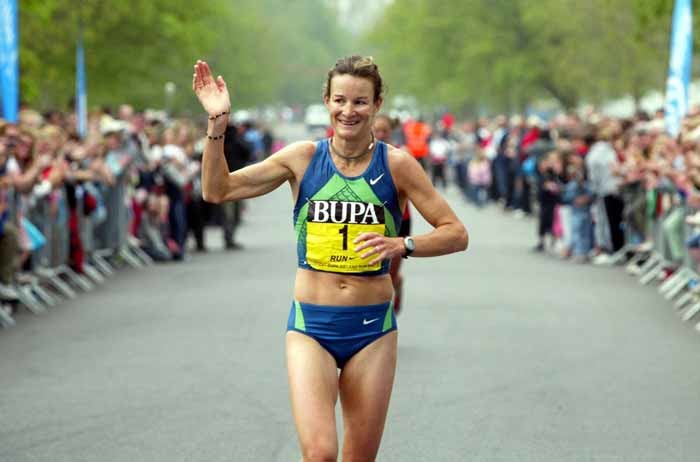
“It all evolved quite quickly, and once we started talking, it felt like an instinctual decision for me, something I felt I’d like to do,” says O’Sullivan. “I won’t know what it’s fully about until I’m out there, but to be a part of a fully professional set-up, with a good budget behind them, to get the best possible out of the athletes, is something I’m excited about.
“There are currently 10 athletes in the group, Pete Julian as head coach, they also have a strength and conditioning coach, and his athletes range from 800m up to the marathon, so there’s a lot of diversity there, they don’t all train together, on different days and in different places, so he can’t always be there. And this was the perfect opportunity to go and do something that I’ve not really had a chance to do, ever.
“It’s a way for me to travel again in an Olympic year, even though it’s very nice here in Melbourne with no Covid restrictions, it feels very far from the action. Every year I’ve had events in Ireland that I work with and the main athletics championships to look forward to, this past year has been so unpredictable my normal schedule has been put on hold.
“It also definitely helped that it’s pretty close to where Sophie is going to college, two and a half hours away, so that swayed things a bit too, because of the times we’re in, it’s so difficult to get back in or out of Australia, and it’s still unknown when she can next get back to Australia.”
Julian was previously an assistant coach with the Nike Oregon Project, run out of the Nike headquarters in Beaverton, Oregon but which was disbanded in 2019 in the immediate aftermath of a four-year ban handed down to then head coach Alberto Salazar for doping offences. With that Julian, in no way implicated in any of those offences, started up his own training group with some of the athletes already under his guidance, including top US 800m runner and Tokyo gold medal favourite Donavan Brazier.
For O’Sullivan, the 2000 Olympic silver medallist over 5,000 metres who won 13 major championships medals in all, the initial three-month agreement would see her through to the Tokyo Olympics. Also in the group are two international women athletes from Australia in Jessica Hull, and Germany’s Konstanze Klosterhalfen, Japanese Tokyo Olympic athlete Suguru Osaka, the remaining seven being American.
“The main target for the American athletes will be the US Olympic Trials, and then after that there is a small circuit of American meetings, so that they don’t have to travel to Europe. ”
O’Sullivan’s first chance to see some of the athletes in action will likely come this weekend at the USATF Grand Prix from Hayward Field in Eugene, the newly renovated venue for the 2022 World Athletics Championships, and the first stop on the 2021 World Athletics Continental Tour (which is also being broadcast on TG4).
by Ian O'Riordan
Login to leave a comment
Tokyo 2020 Olympic Games
Fifty-six years after having organized the Olympic Games, the Japanese capital will be hosting a Summer edition for the second time, originally scheduled from July 24 to August 9, 2020, the games were postponed due to coronavirus outbreak, the postponed Tokyo Olympics will be held from July 23 to August 8 in 2021, according to the International Olympic Committee decision. ...
more...Alberto Salazar appeal takes place in Lausanne
Banned athletics coach Alberto Salazar's appeal against his four-year suspension will be heard by the Court of Arbitration for Sport (CAS) on Wednesday.
Salazar was found guilty of doping violations along with Dr Jeffrey Brown, who treated Salazar's athletes, after an investigation.
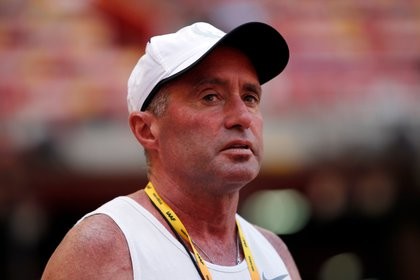
The 62-year-old's hearing will take place in Lausanne, Switzerland.
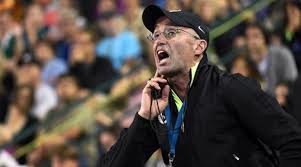
It was set for November but was pushed back because of the Covid-19 pandemic.
Salazar ran the Nike Oregon Project (NOP), based in Beaverton, Oregon. It was established in 2001 and was the home of British four-time Olympic champion Mo Farah, who was coached by Salazar between 2011 and 2017.
A BBC Panorama programme in 2015 focusing on Salazar and the NOP prompted a four-year investigation by the US Anti-Doping Agency (Usada) and a two-year court battle behind closed doors. It eventually resulted in bans for both Salazar and Brown, announced in October 2019.
by BBC Athletics
Login to leave a comment
Galen Rupp: “I want to win [the Olympic marathon]. There’s no ifs, ands or buts about it.â€
Yesterday, Kipyego mentioned her goal was to medal in Sapporo in August. Rupp went one step further.
“I want to win,” Rupp said. “There’s no ifs, ands or buts about it. That’s definitely my goal. I’ve gotten a silver medal in London, a bronze medal in Rio, and so hopefully I’ll be shooting for gold for sure in Tokyo. I know it’s not going to be an easy ask. It will be a tall task. There’s obviously a tremendous amount of great marathoners out there right now and the Olympics are always going to be a tough test. But I thrive on competition and I can’t wait to have the opportunity to go in there with the best in the world and really see what I can do.”
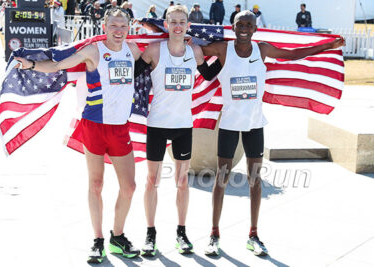
Rupp said that while gold is his aim, he wouldn’t be disappointed if he fails to win — indeed, in the last 113 years, only one American man, Frank Shorter, has accomplished the feat. Not all of his fellow Olympians shared that perspective, however.
“I’m going to be disappointed if you don’t win,” Tuliamuk joked. “No pressure.”
The one-year delay has helped Rupp more than most. Even before the pandemic, Rupp spent much of his time in his Portland home, which is equipped with a device that strips oxygen from the air to mimic the effects of high elevation. Staying home was not much of a challenge, though it did limit the amount his coach Mike Smith could visit him to oversee workouts.
From a running perspective, the extra year has given Rupp more time to adjust to Smith’s system. Under previous coach Alberto Salazar — whose appeal of his four-year ban for anti-doping violations will be heard by the Court of Arbitration for Sport next month — Rupp would hit each rep of his interval sessions “as hard as [he] could” and take a full rest before tackling the next one. Until he trained under Smith, Rupp had never run a fartlek. When Smith, the coach at Northern Arizona University, began working with Rupp in December 2019, he asked Rupp to turn over his previous training logs. The first thing he told Rupp after examining them?
“He didn’t think I was training much like a marathoner,” Rupp says. “There was still so much track stuff that I was doing.”
Now Rupp is growing accustomed to Smith’s system. He feels he works just as hard in practice, but the workouts are different: slower, with more reps and less recovery.
“Having some new stimulus, having some different workouts that I’ve been doing, it’s been a challenge, but it’s been really fun for me at the same time,” Rupp said. “…I couldn’t be happier with the way that things have worked out and where things are going.”
The delay has also allowed Rupp’s body extra time to heal. The Trials was just the second race Rupp finished following Achilles surgery in October 2018, and though Rupp estimated he was 90-95% healthy by the time of the Trials, he had not been able to string together a significant amount of pain-free running. Rupp admitted that, even after the Trials, “it hasn’t always been pretty,” but he feels he’s in a better spot now than he was a year ago.
“I’m optimistic about where I’m at physically and I couldn’t have said that over the last year,” Rupp said. “But I was really pleased with the way the Trials went and I think that I’ve grown a lot since then.”
The one annoying thing for Rupp has been the inability to race. Since the Trials, he has run just one: 60:22 for a low-key half marathon in October on an Oregon bike path. In years past, Rupp could at least gauge his fitness by comparing workouts splits to what he’d done before, but with a whole new set of workouts under Smith, even that is impossible. So Rupp is itching to race, but exactly where and when that will happen remains uncertain.
Rupp was hoping to do a marathon this month, but that proved untenable due to COVID travel restrictions. He is considering racing some shorter distances in the leadup to the Games. Given the flat course in Sapporo, Rupp believes it is important to improve is speed, which has been a recent emphasis in training.
"We want to get back into the swing of racing again,” Rupp said. “I think it’s important.”
by Let’s Run
Login to leave a comment
Disappointment for Jordan Hasay at the Valencia Marathon
Despite the fast course and good conditions, American Jordan Hasay struggled once again to pull off a strong marathon. Hasay finished a disappointing 27th, in 2:33:51. She has been targeting Deena Kastor‘s national record of 2:19:36 since she ran the second-fastest marathon of any American woman, a 2:20:57 in Chicago in 2017. However, since that run, the marathon times haven’t come so easily.
Hasay’s strongest result in the past two years came from the 2019 Boston Marathon, where she ran a 2:25:20 – an extremely impressive time on one of the hilliest marathon courses in the states. However, since Boston, Hasay has struggled. The 2019 Chicago Marathon fell just a few days after her former coach, Alberto Salazar, had been suspended. She ultimately didn’t finish that race and went on to come 26th at the 2020 U.S. Olympic Marathon Trials a few months later. Neither of those results was what she had been hoping for. On Sunday, her 2:33 performance likely didn’t live up to her high standards, either.
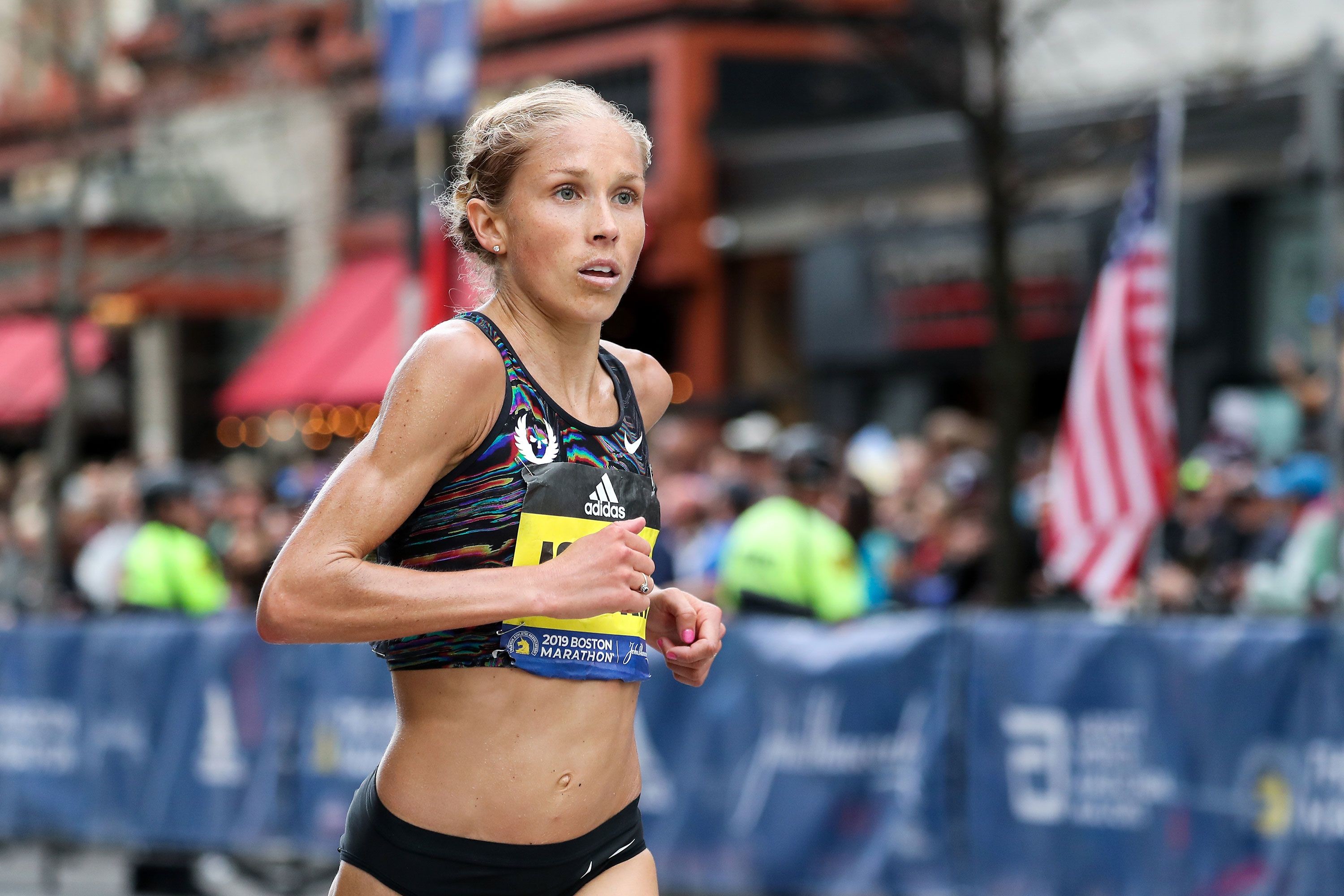
by Running Magazine
Login to leave a comment
Jordan Hasay is set to get back on track at Valencia Marathon
No American marathoner has experienced more ups and downs during this Olympic cycle than Jordan Hasay. When Hasay first transitioned to the roads full-time at the start of 2017, she was a sensation, much like her high school days when a teenage Hasay, long blonde ponytail bobbing in the wind, won two Foot Locker Cross Country titles and dazzled the crowd at the 2008 Olympic Trials at just age 16. Fast half marathons early in 2017 in Houston (68:40) and Prague (67:55) set expectations for her first marathon at 2017 Boston through the roof, and somehow, she exceeded them: her 2:23:00 broke Kara Goucher‘s US debut record by almost three minutes.
That fall, Hasay knocked 2+ minutes off her pb, finishing third in Chicago in 2:20:57, the second-fastest marathon ever by an American woman. The sky seemed to be the limit.
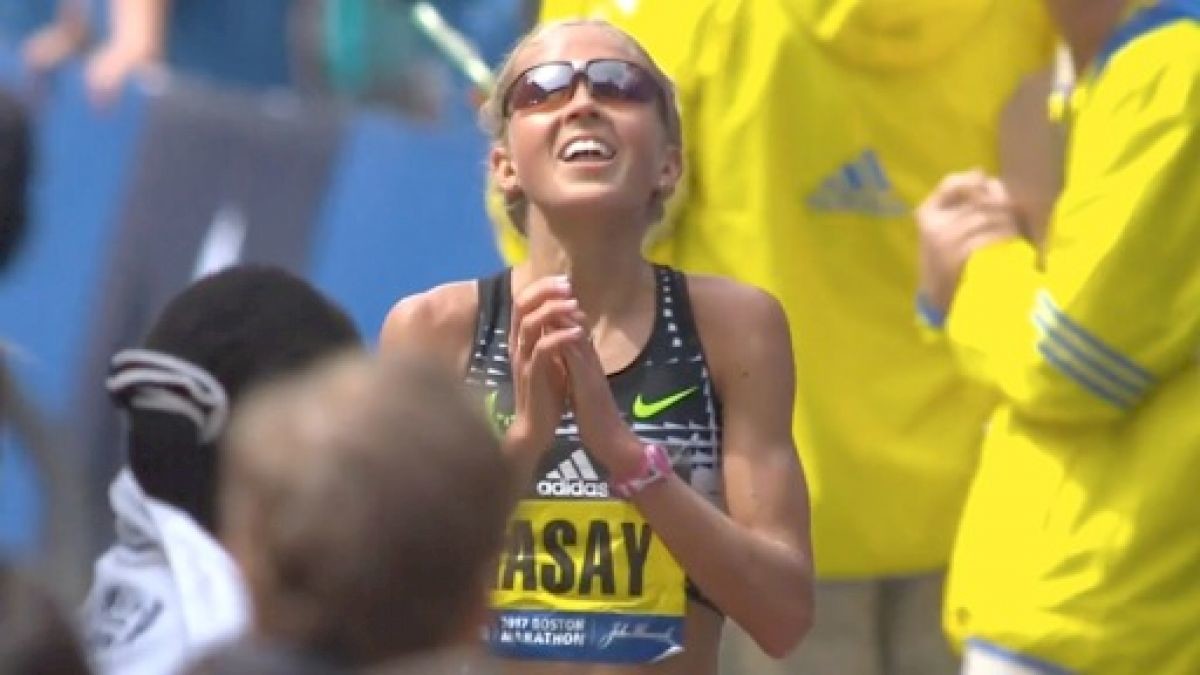
But Hasay was brought back to Earth the following year: she didn’t run a single marathon in 2018, withdrawing on the eve of the Boston Marathon due to a stress reaction in her heel; a fracture in the same heel forced her out of Chicago that fall as well. 2019 brought highs and lows: a third-place showing in Boston set Hasay up as a prime contender for a spot on the US Olympic team, only for her coach Alberto Salazar to be banned from the sport in September, just two weeks before Hasay dropped out of Chicago after just 5k with a hamstring injury.
Hasay still wasn’t at 100% for the Olympic Trials in February 2020, where she gutted out a 2:37:57, 26th-place finish on a brutal day in Atlanta.
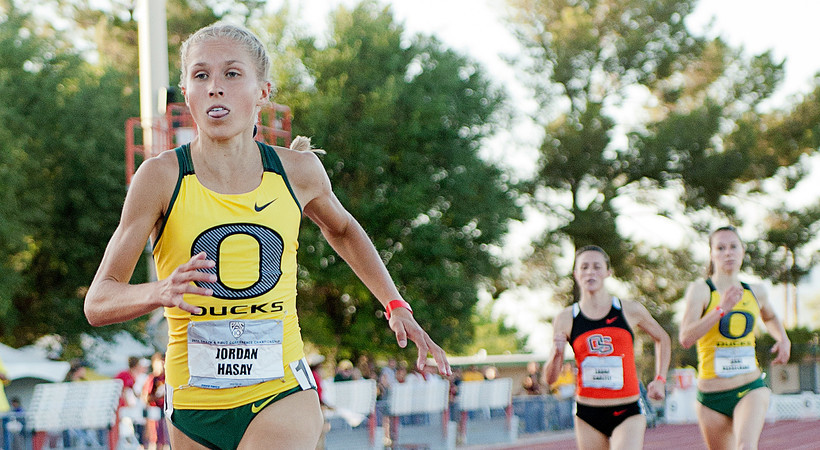
Post-Trials, 2020 has offered a chance for Hasay to reset. Now working with former marathon world record holder Paula Radcliffe, Hasay took a chunk of time off following the Trials to heal the back and hamstring issues that plagued her in Atlanta and has reduced her training volume in an effort to stay healthy. With limited racing opportunities and no major marathons until the fall of 2021 (at the earliest), the pressure of expectations has momentarily paused. Hasay doesn’t need to rush back to race.
Hasay is racing on Sunday, though, traveling to Spain as one of just two Americans entered at the Valencia Marathon (Emily Sisson will also be racing the half). But Radcliffe is hoping Hasay approaches it differently than her last few marathons.
“She is healthy and looking forward to getting back out and enjoying racing again,” Radcliffe wrote in a text message to LetsRun.com. “We think this year of all years, if you are healthy and have an opportunity to get out and race, you should go and have fun.”
Hasay has never been one to shy away from big goals. Within hours of finishing third in Boston last year, she declared that she would chase the American record in Chicago in the fall. Injured there, Hasay rushed back for the Trials and ran them at less than 100% because she had to run the Trials — giving up on her Olympic dream was simply not an option. Radcliffe can relate, perhaps better than anyone. In 2004, just two weeks before her best shot at Olympic gold, Radcliffe developed a leg injury. She ran those Olympics in Athens anyway, but the injury, stress, and pressure left her a shell of herself. She dropped out of both the marathon and 10,000 meters.
Radcliffe’s hope is that Hasay’s return on Sunday is more about “rediscovering her love of racing” than dealing with the stress of expectations.
“We don’t really have a time goal,” Radcliffe wrote. “I really want her just to get back to racing without stress and enjoying it, so have deliberately said to just enjoy the race and not look at splits too much.”
by Jonathan Gault
Login to leave a comment
VALENCIA TRINIDAD ALFONSO
The Trinidad Alfonso EDP Valencia Marathon is held annually in the historic city of Valencia which, with its entirely flat circuit and perfect November temperature, averaging between 12-17 degrees, represents the ideal setting for hosting such a long-distance sporting challenge. This, coupled with the most incomparable of settings, makes the Valencia Marathon, Valencia, one of the most important events in...
more...Hasay only ran a 1:14:27 half-marathon on Monday as warming up for Valencia Marathon
Jordan Hasay, 29, ran the fastest marathon debut in U.S. history in 2017, finishing the Chicago Marathon in 2:20:57. This time remains the second-fastest marathon ever by an American woman, and Deena Kastor‘s national record of 2:19:36 is the only instance of a woman going faster.
Hasay has since been touted as the runner most likely to break Kastor’s record, but she has consistently fallen short of that mark. While her marathon debut was remarkable, Hasay has had a difficult time following up that result.
Hasay completed a half-marathon in Portland on Monday, finishing in 1:14:27. This was a far cry from her goal, but she cited poor weather as the reason for her time. With only three and a half weeks until her marathon in Valencia, Hasay will hopefully surprise fans with a strong race.
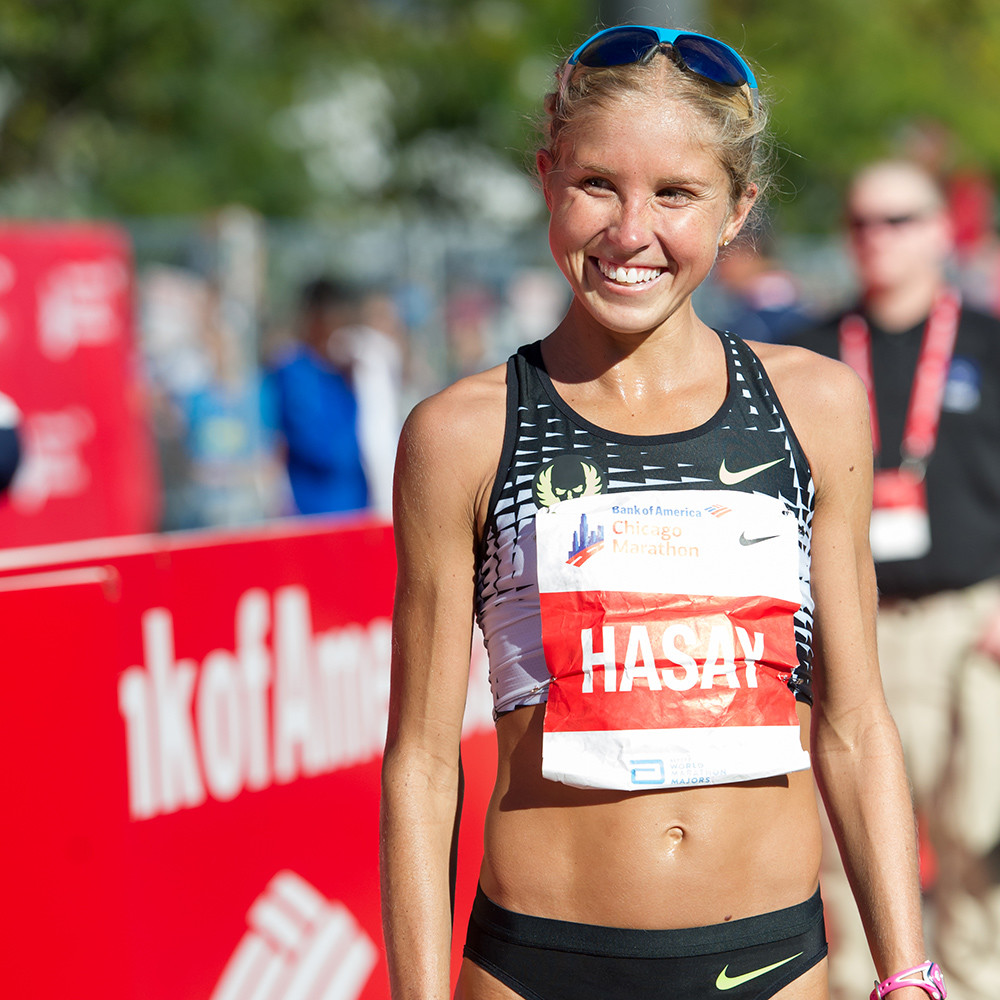
A difficult two years
Hasay’s strongest result in the past two years came from the 2019 Boston Marathon, where she ran a 2:25:20 – an extremely impressive time on one of the hilliest marathon courses in the states. However, since Boston, Hasay has struggled. The 2019 Chicago Marathon fell just a few days after her former coach, Alberto Salazar, had been suspended. She ultimately didn’t finish that race and went on to come 26th at the 2020 U.S. Olympic Marathon Trials a few months later.
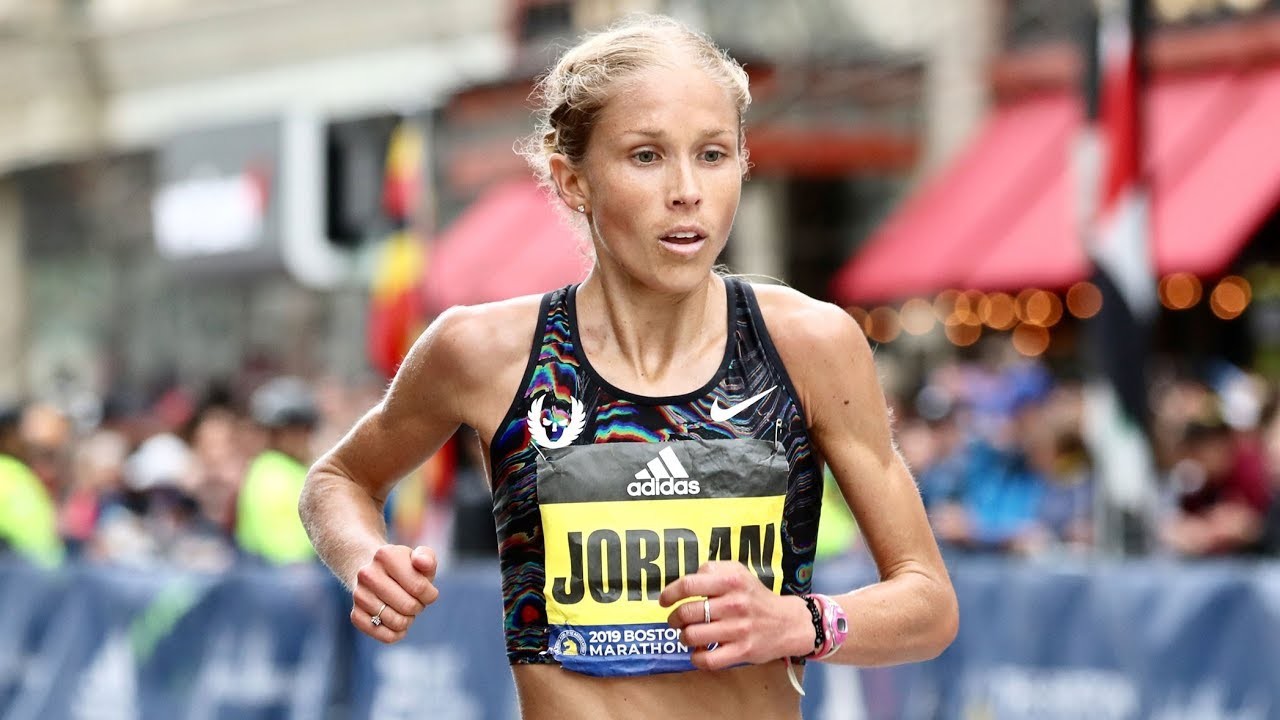
Neither of those results were what she had been hoping for. While her recent history isn’t particularly encouraging, Hasay is someone who’s proven she can rise to the occasion on race day, and we very well could see a stellar performance in three weeks’ time.
Other runners who could threaten the record
While no one has run quite as fast as Hasay’s 2:20, there are several women closing in. Sara Hall ran a personal best in terrible weather at October’s London Marathon, finishing second in 2:22:01. Hall is scheduled to race the upcoming Marathon Project this December in Arizona.
Emily Sisson is another runner to watch. The 29-year-old ran a 2:23:08 at the 2019 London Marathon. While Hasay is certainly still among the strongest marathoners in America, she’s no longer the only person who stands a chance at taking down Kastor’s record.
by Madeleine Kelly
Login to leave a comment
VALENCIA TRINIDAD ALFONSO
The Trinidad Alfonso EDP Valencia Marathon is held annually in the historic city of Valencia which, with its entirely flat circuit and perfect November temperature, averaging between 12-17 degrees, represents the ideal setting for hosting such a long-distance sporting challenge. This, coupled with the most incomparable of settings, makes the Valencia Marathon, Valencia, one of the most important events in...
more...After more than two decades, John Capriotti is stepping down as leader of Nike’s track and field sports marketing group
“John is going into the consulting business,” said Steve Miller, a former Nike executive and the man who hired Capriotti at the company.
The fiery former track coach still worked for the sneaker giant as of Friday. But he is leaning toward a consulting deal that would make Nike one of his clients, according to a second source close to Capriotti.
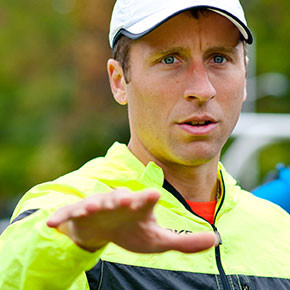
News of the change had the track and field world buzzing on Friday.
“It’s kind of unbelievable,” said a third source, a prominent sports agent. “He’s been in that position for the entire 21 years I’ve been around track and field. He’s been the single most influential person in the sport.”
Neither Capriotti nor Nike could immediately be reached for comment.
Capriotti’s decision comes as Nike is cutting costs and laying off employees. The company lost about $790 million last quarter.
Since Nike brought in John Donahoe as its new CEO and chairman in January, there has been speculation about the ramifications for the company’s sports marketing arm, and for its track and field operations in particular. Donahoe’s athletic background is unknown. But outsiders speculate that the longtime technology executive does not share the passion for track and field of his predecessors Phil Knight and Mark Parker.
Under Capriotti’s watch, Nike solidified its position as the sport’s superpower. It hired more track athletes to endorsement contracts than any other sponsor. It also bankrolled USA Track & Field, the sport’s governing body in this country, signing a sponsorship in 2014 worth more than $400 million.
Nike sponsored three different teams of elite runners, all of them based in Oregon. Its audacious goal was to make American runners once again competitive with the rest of the world.
Capriotti and Nike also helped secure Eugene’s position as one of the world capitals of the sport. He was such a fixture at Hayward Field that his customary spot in the grandstands became known as Cap’s Corner.
The stunning decision to award the 2021 track and field world championships to Eugene came in part because of the enthusiastic support of Knight and Nike. The coronavirus pandemic has delayed the running of those championships in Eugene until 2022.
There was also plenty of controversy. Alberto Salazar was Nike’s superstar coach for the Nike Oregon Project. But Salazar was dogged for years by allegations that he encouraged his athletes to use banned substances. He was banned from the sport for four years “for orchestrating and facilitating prohibited doping conduct.”
Nike sided with Salazar and continued to back him even after the ban, which Salazar is appealing.
by Oregon Live
Login to leave a comment
CAS to hear Salazar appeal in November
The Court of Arbitration for Sport (CAS) has said it will hear banned track coach Alberto Salazar’s appeal to overturn his four-year doping suspension in November.
American Salazar, who coached some of the world’s top distance runners including British Olympic and world champion Mo Farah, was banned by the U.S. Anti-Doping Agency (USADA) in October for “orchestrating and facilitating” doping as head coach of the Nike Oregon Project (NOP).
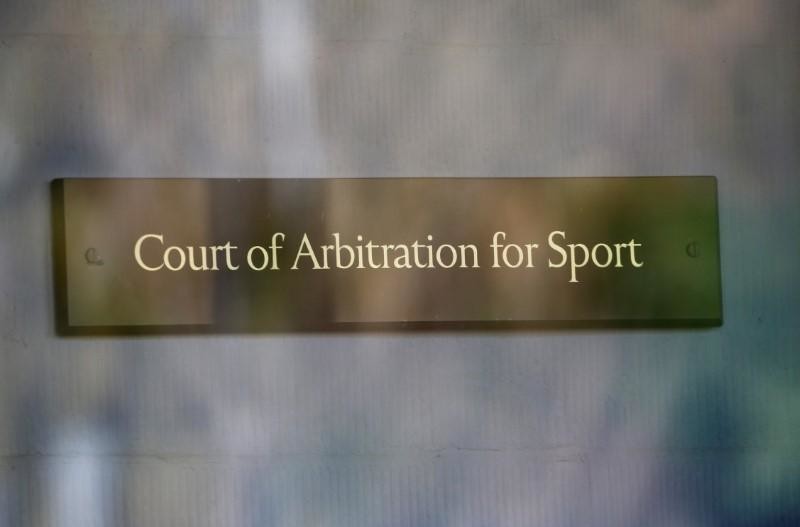
Swiss-based CAS, the world’s highest sports court, said on Tuesday it would hear appeals from Salazar and endocrinologist Jeffrey Brown between Nov. 8-16. Brown, who worked for NOP on performance enhancement and served as a physician for numerous athletes in the training program, was also banned by USADA for four years.
Nike Inc, which funds NOP — an elite long-distance running training centre in Portland under a long-term sponsorship deal with U.S. Track and Field — has previously said it would support Salazar’s bid to clear his name.No NOP runner was directly implicated in doping by USADA.
Salazar won three consecutive New York City marathons from 1980 before coaching a slew of Olympians, including Farah, who won the 5,000 and 10,000m golds at the London and Rio Olympics before splitting with the American in 2017.
Farah has never failed a drugs test and has not been accused of any wrongdoing.
Login to leave a comment
Two elite athletes Mary Cain and Nick Willis sign with Tracksmith as full-time employees
Tracksmith, the independent running apparel brand out of Boston, announced its newest pair of partner athletes: Mary Cain and Nick Willis. This is not a traditional partnership, though, as Cain and Willis will both be working as full-time employees for the company in addition to running for the brand.
The duo will represent Tracksmith as they both work toward the Tokyo Olympic Games, which are set for July 2021, and they will do it as amateurs, a term that Tracksmith is looking to reclaim for everyone who loves to run.
In a post entitled “For the love” on the Tracksmith website announcing the brand’s newest partnership, founder and CEO Matt Taylor talks about the word “amateur,” which comes from Latin roots meaning “to love” and “I love.”
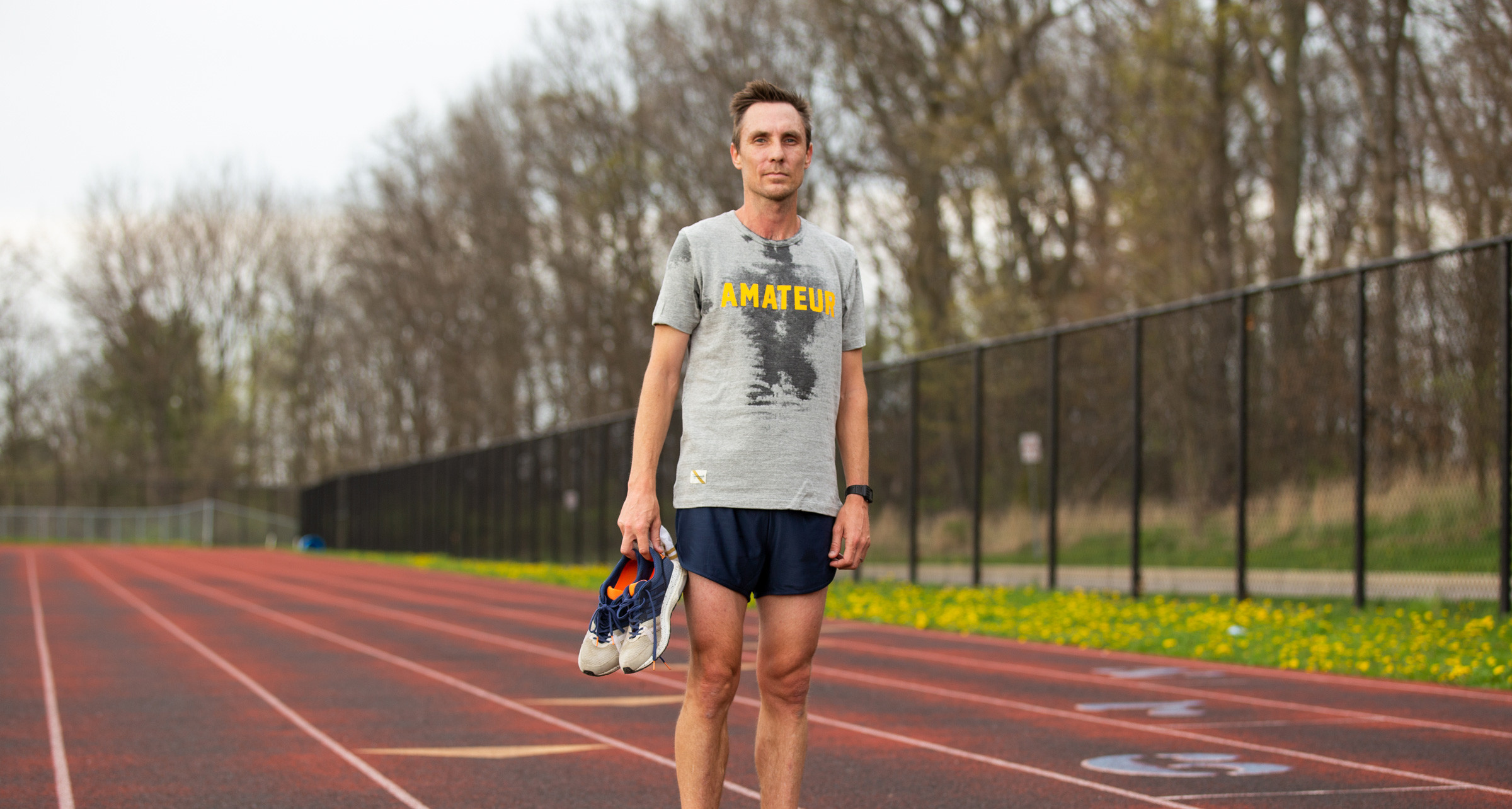
Taylor says “amateur” only recently became a term for non-professionals (around the 19th century or so), and now the team at Tracksmith wants to take the term back to its roots and refer to anyone who loves to run as “amateurs.”
In sports, athlete sponsorships are always dictated by results, and the better an athlete performs, the stronger their brand partnerships become. On the other hand, if their results start to decline, it’s not uncommon to see these relationships deteriorate and disappear.
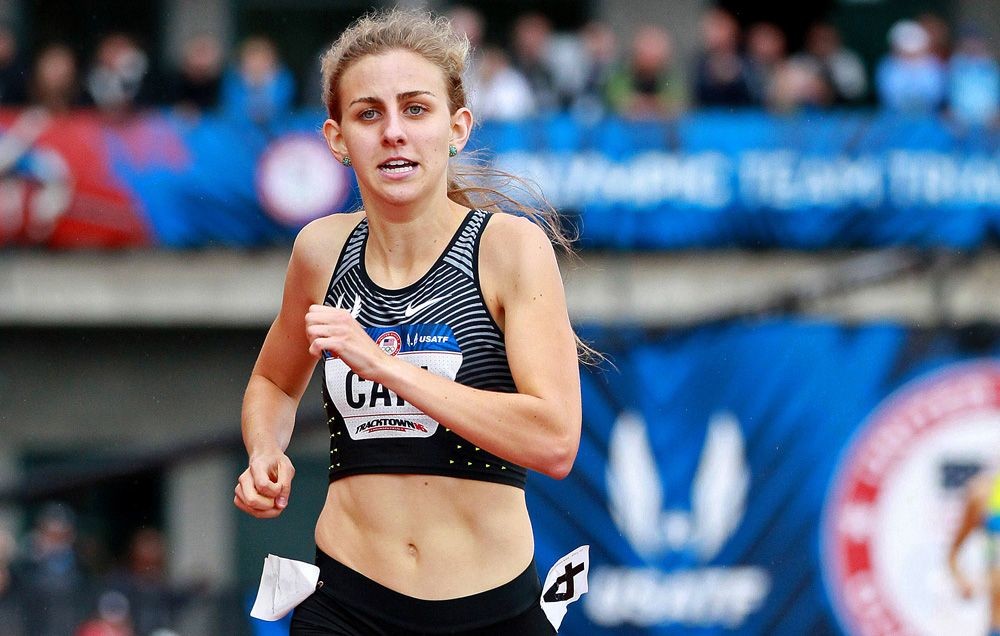
This won’t be the case for Cain and Willis, because, working as Tracksmith employees and representing the brand as amateurs, they will have “the freedom to participate in the sport with no expectations or pressures outside of the ones they place on themselves.”
Cain made international headlines in November when she told the New York Times about the abuse she sustained while running with the Nike Oregon Project (NOP) under now-banned coach Alberto Salazar. Cain won gold in the 3,000m at the the world junior championships in 2014 before leaving the NOP a year later. In 2020, she returned to racing for the first time since 2016, and she is now working toward making her first U.S. Olympic team.
Cain’s official role at Tracksmith is New York community manager, and she will help grow the company’s “on-the-ground and virtual efforts in one of the most vibrant running scenes in the world.”
Willis, who’s 37 years old, tweeted he was leaving Adidas on Sunday, and there was some speculation that he might be retiring. Today, he tweeted again, saying, “I’m not retiring; I’m turning amateur.” Willis is a two-time Olympic medallist for New Zealand, having won silver in the 1,500m in Beijing in 2008 and bronze in the same event eight years later in Rio.
Willis is quoted on the Tracksmith site, saying, “It may sound counterintuitive, but I always discovered that my running career thrived the most when I embraced more. My best years, my fastest times, all emerged from times in my life when my running came, well, second.”
He’ll be looking to qualify for his fourth Olympics in 2021 while working as the athlete experience manager at Tracksmith, building programs to “inspire, motivate and deepen our community’s connection to the sport.”
by Ben Snider-McGrath
Login to leave a comment
Salazar has appealed against the ban to the Court of British anti-doping agency Arbitration for Sport
UK Athletics said Wednesday it had at last handed over an internal report into its relationship with banned American coach Alberto Salazar during the time he worked with track star Mo Farah to Britain's national anti-doping agency.
The report dates back to 2015 and was prompted by a BBC documentary on Salazar.
The disgraced coach is currently serving a four-year ban imposed by the United States Anti-Doping Agency in October for offences that include trafficking in testosterone, tampering with the doping control process and administering illicit infusions of the fat-burning substance L-carnitine.
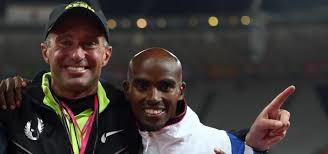
Salazar, who denies wrongdoing, has appealed against the ban to the Court of Arbitration for Sport.
Just over a month ago, an independent review of both the 2015 report and another undertaken two years later, was published.
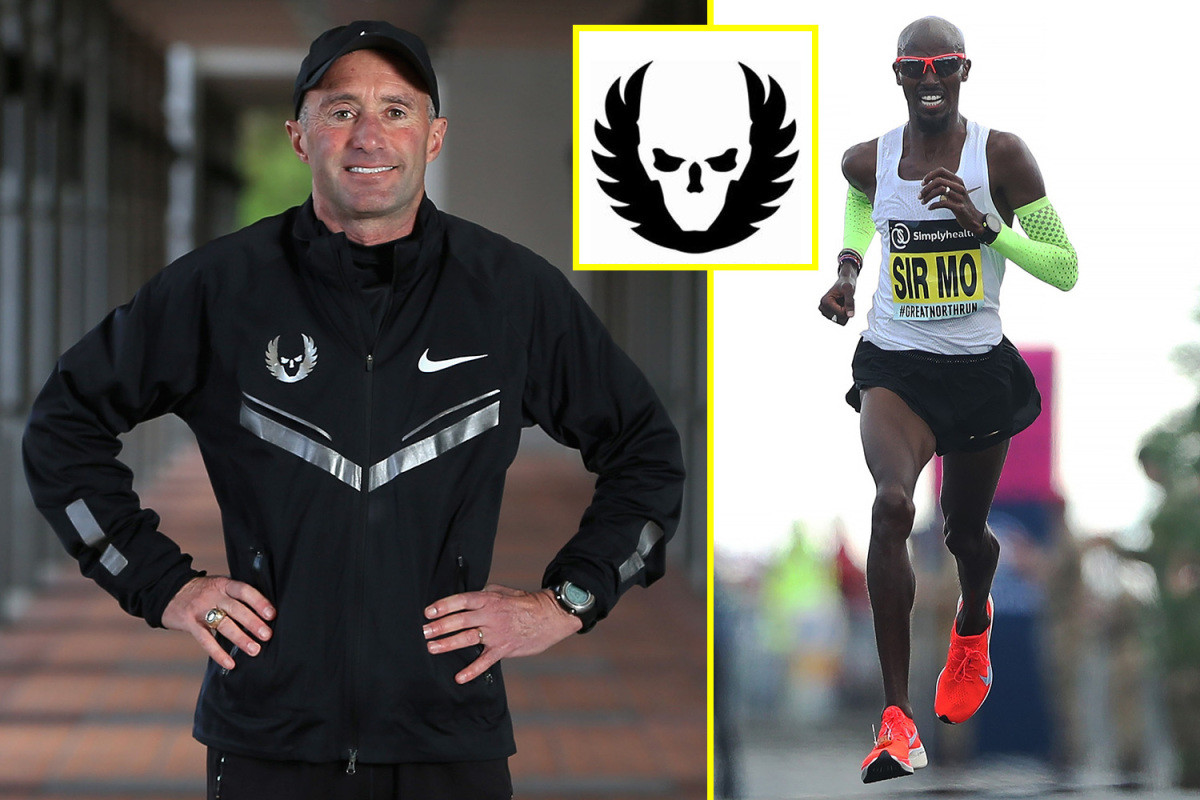
But United Kingdom Anti-Doping executive chief Nicole Sapstead demanded to see the original report in full after UK Athletics merely provided an edited summary.
UK Athletics responded by saying it was "wholly wrong and inaccurate" to suggest they were "being obstructive in this matter," with chief executive Joanna Coates saying earlier this month the report would go to UKAD just as soon as all confidentiality procedures had been completed.
UK Athletics confirmed Wednesday the report had been sent over, a statement saying: "UKA can confirm that the 2015 report has been provided to UKAD.
"UKA remains fully committed to protecting the integrity of the sport and the pursuit of clean athletics and we will continue to assist UKAD with any further queries."
Four-time Olympic gold medallist Farah, twice champion at both the 5,000 and 10,000 metres, worked with Salazar from 2011-2017.
The British distance great, who has never failed a drugs test, is not accused of any wrongdoing.
Login to leave a comment
Sir Mo Farah pays emotional tribute to former trainer Neil Black after his sudden death
‘Double-double’ Olympic champion says he has ‘lost a good friend’ after his old trainer and the former performance director at UK Athletics died at the weekend at the age of 60.
Four-time Olympic champion Sir Mo Farah says his “heart is broken” after former trainer Neil Black died suddenly at the weekend.
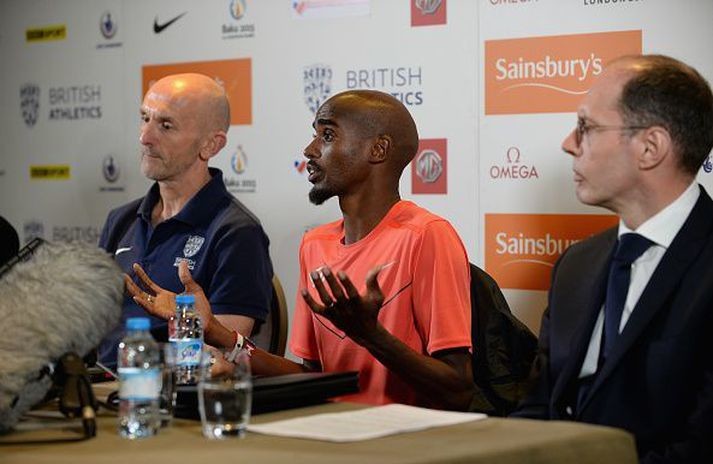
Black, the former performance director of UK Athletics, is believed to have died from natural causes at the age of 60, just six months after resigning from his position with the governing body.
The news, which was announced by UKA alongside a brief statement from his family, triggered an outpouring of emotional tributes from athletes past and present who worked with Black, with Farah among the very best to have benefited from his work after claiming consecutive 5,000m and 10,000m doubles at London 2012 and Rio 2016 during their time together.
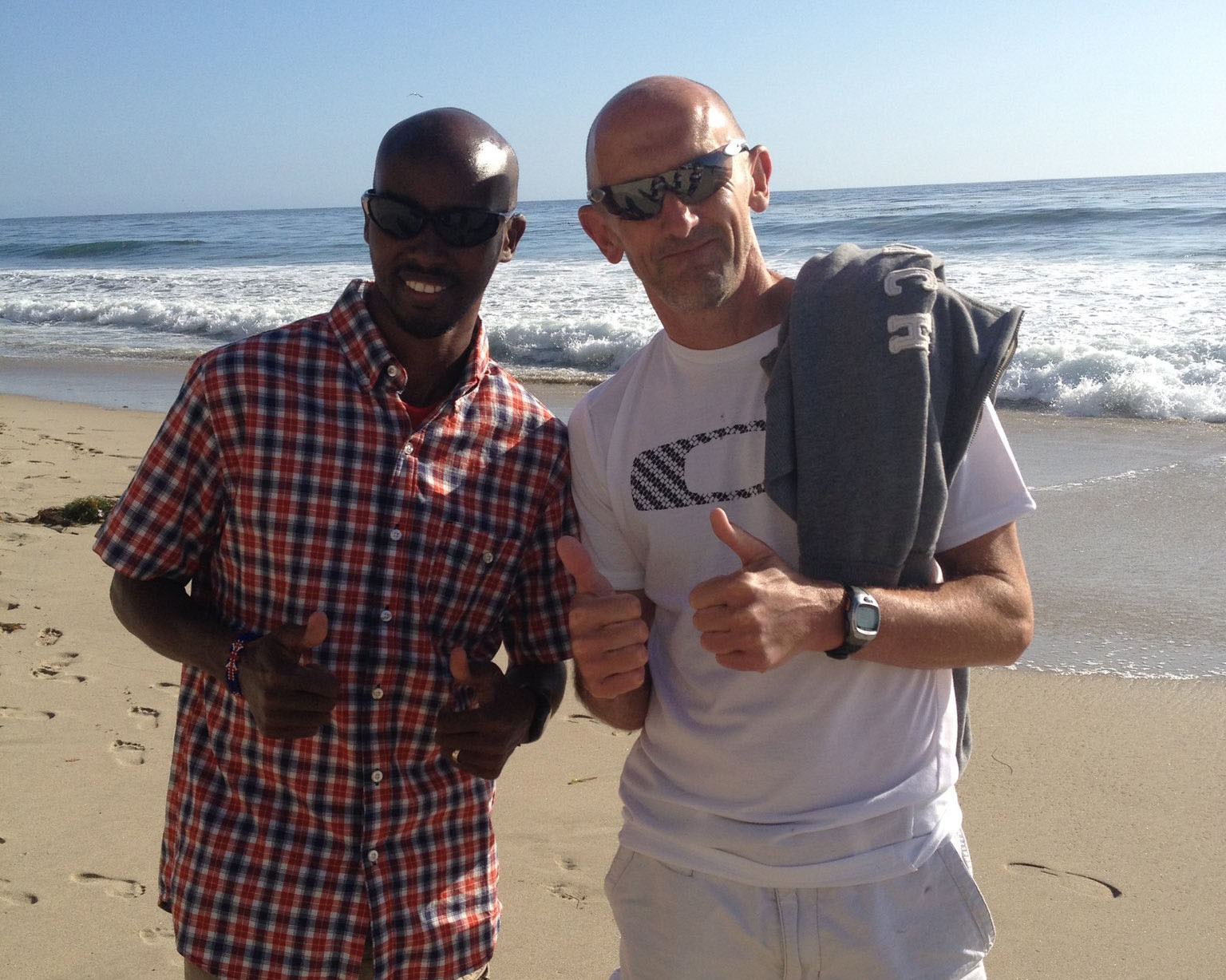
“I have lost a good friend!” Farah wrote on Twitter. “Known him since I was 14 years old. Neil supported me all the way in my career since I was kid!! My heart is broken ... I wouldn’t be where I am today without Neil Black ... no one knew me like he did!! We lost a great man.”
Black’s death came as a shock to all of those who had worked with him, given he was last seen in the public eye at the 2019 World Athletics Championship in Doha last October. The disappointing tally of five British medals proved Team GB’s worst performance since 2005, and that combined with his support for controversial American trainer Alberto Salazar – the former trainer of Mo Farah who has been banned from athletics for four years by the United States Anti-Doping Agency for numerous drugs-related offences – cost Black his position.
However, such was the regard for his contribution towards the sport, UKA continued to use Black in an advisory role ahead of the postponed Tokyo Olympics.
The former UKA boss was described as a man who dedicated his life and passion to the sport after achieving his “dream job” and who was “like a second father” to budding young sportsmen and women making their way in track and field, with dozens of athletes posting messages of condolence on Twitter along with Farah.
by Jack de Menezes
Login to leave a comment
Former UK Athletics performance director Neil Black, dies at age 60
Neil Black, the former performance director of UK Athletics, has died aged 60, the organization has confirmed.
Black, who worked closely with Mo Farah throughout his career, became performance director in September 2012.
He left his position in 2019 after coach Alberto Salazar was banned for four years for doping violations.
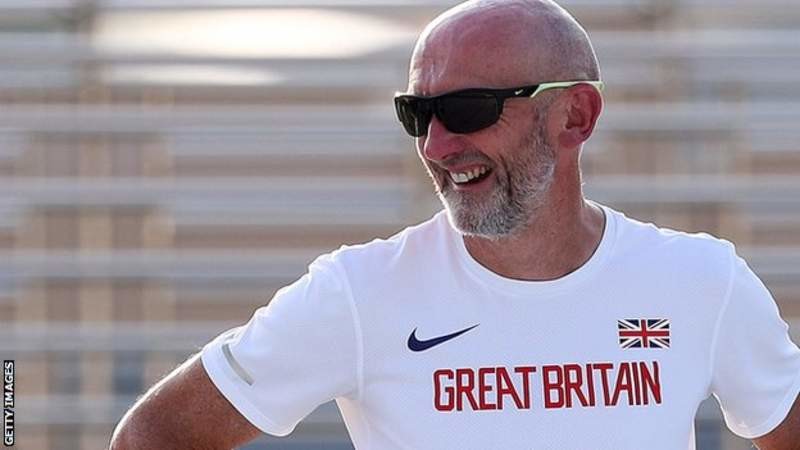
British four-time Olympic champion Farah paid tribute on Twitter, saying: "I have lost a good friend. Known him since I was 14 years old."
Farah added: "Neil supported me all the way in my career since I was kid. My heart is broken. I wouldn't be where I am today without Neil Black. No-one knew me like he did. We lost a great man."
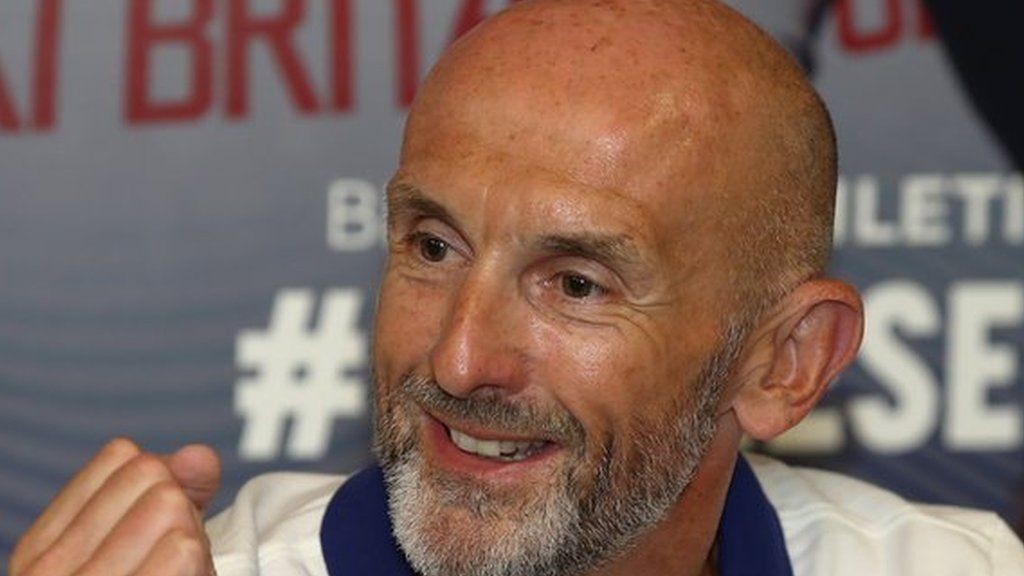
A UK Athletics statement released on Tuesday said Black died at the weekend; the organisation said it was "shocked and saddened" at the news.
"Neil loved the sport of athletics and dedicated his life to supporting athletes - as a world-class physiotherapist, as head of sport science, and then in recent years as performance director for British Athletics," the statement continued.
Ed Warner, former UK Athletics chairman, described Black's death as "an immense loss to British high performance sport and to athletics in particular".
Warner added: "It was a great privilege to work with him, and to share the highs and lows of British teams through the cycles of major competitions. I'll particularly treasure our celebratory clinch in the mixed zone at the Olympic Stadium after the last session of the London 2017 World Championships.
"Neil bore the barbs of the critics that are an inevitable part of the job of any leader in elite performance sport with a grace and sense of humour that were truly a mark of the man.
"He wanted to lead the British teams into Tokyo. He won't now be able to cheer their successes there.
"But I am certain there are British athletes who will win medals in Olympics and championships to come who will look back with enormous gratitude at the role Neil played in preparing them for their success. He will be greatly missed."
Black was a physiotherapist with UK Athletics before moving up through the organisation's ranks.
He worked with Farah as the athlete won 5,000m and 10,000m gold at the London 2012 and Rio 2016 Olympics.
Black made the decision to step down as performance director in October 2019 after the banning of Salazar, who coached Farah from 2011 to 2017, and who was appointed as a consultant by UK Athletics in 2013.
UK Athletics had conducted a review in 2015 and said there was "no concern" about Salazar's link with Farah.
In 2015, following a BBC Panorama programme, the United States Anti-Doping Agency (Usada) began an investigation into how Salazar ran the Nike Oregon Project.
Salazar has always denied that the Nike Oregon Project permitted doping, saying he was "shocked" by Usada's findings, and he is appealing against the ban.
UK Athletics said that Black continued to work as an adviser to several athletes following his resignation.
Login to leave a comment
Dr. Michael Joyner, the Guy Who Predicted the Sub-2:00 Marathon, Now Helping Lead the COVID-19 Fight
Dr. Michael Joyner of the Mayo Clinic is best known in running circles as being the guy who in 1991 published a paper saying a human being could run a marathon in 1:57:58. Joyner, an anesthesiologist and physiologist by trade, now is using his skills on a much more serious matter by helping lead the National COVID-19 Convalescent Plasma Project (CCPP19). The CCPP19 is a nationwide effort of researchers, institutions, and blood blanks to try to use plasma from recovered COVID-19 patients to better treat patients suffering from COVID-19.
“What we’re trying to do is leverage the antibodies produced by people who have recovered from COVID-19. Harvest those antibodies from recovered patients and then give these antibodies in the form of plasma to people to either prevent disease in people that have been exposed but aren’t yet sick, to treat people who are in the hospital and try to keep them from going to the intensive care unit, or to try to shorten the stay in the intensive care unit. This is called convalescent plasma therapy. It’s been around since the late 1800s. It’s worked numerous times before,” said Joyner on this week’s LetsRun.com Track Talk Podcast.
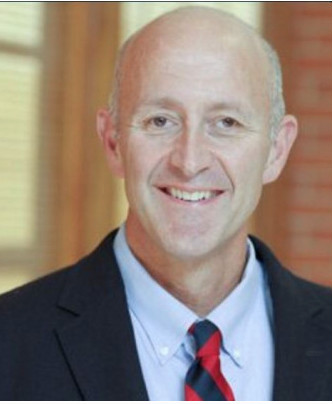
Joyner said the goal is for people to continue to practice social distancing and proper pandemic control while groups like his develop better short-term treatments for COVID-19 before a vaccine can be made to really stop the virus.
“We believe it’s our best shot on kind of [a] biological goal in the short run, and then after that, we anticipate concentrated gamma globulin, like antibodies, [being] available toward the end of the summer. And then we are waiting for the vaccine and biotech cavalry to come to the rescue,” Joyner said.
Running did play a tangential role in getting Joyner involved with CCPP19. Joyner has always been interested in oxygen transport and physiology because of his days as a competitive runner at the University of Arizona. Recently, Joyner was on Twitter and he saw a retweet by David Epstein, the former Columbia 800m runner and former ProPublica journalist who, along with the BBC, broke the allegations that Alberto Salazar and the Nike Oregon Project were breaking anti-doping rules.
The retweet was a link to a Wall Street Journal article by Dr. Arturo Casadevall on using antibodies to try to treat the coronavirus:
by Letsrun
Login to leave a comment
Twenty years, it’s been a good run, but as of May 7, 2020, LetsRun.com will be no more, LetsRun.com declares bankruptcy says Jonathan Gault
The worldwide economic depression that has resulted from COVID-19 has cratered the advertising markets and it’s no longer economically feasible to run the website.
“May 7, 2000, was a dark day for US distance running fans and me personally, so the 20th anniversary of that date is the perfect day to go out,” said LetsRun.com co-founder Weldon Johnson, who saw his Olympic dream denied on the streets of Pittsburgh at the 2000 US Olympic Marathon Trials on May 7 when only one man made the team. “The coronavirus canceled the Olympics and now it’s canceled LetsRun.com.
“It’s never been easy to make a living while giving away everything for free, but the decline in the online ad markets over the last few weeks has been unprecedented. Couple that with the fact that online ad marketplaces have gotten much better at tracking people in recent years and our revenue has almost entirely dried up. The advertisers now know that most of our visitors haven’t achieved the ‘LetsRun triple.’ While many have the potential to make well over $250,000 a year, the reality is most of them have never had a full-time job and are living in mom and dad’s basement still chasing that final PR before Father Time gets to them.”
Robert Johnson, Weldon’s brother and the website’s co-founder, didn’t want to talk on the phone. He issued the following statement via email.
Weldon keeps telling me our demise is all the result of COVID-19. That’s hard for me to believe, but maybe that’s because I live in Baltimore, where in the month of March we’ve had 18 killed by murder and only 3 by the coronavirus. Ironically, given the leading role we’ve played during the last two decades in the anti-doping movement, I blame our demise on Travis Tygart and USADA. Once Alberto Salazar got banned, the messageboard traffic really plummeted. People had been speculating about drugs in regards to Athletics West and Salazar since our founding, but now that that storyline has come to a conclusion, there isn’t anything left to talk about.
I begged Weldon to keep the site going until Salazar’s appeal is heard. If his ban gets overturned, the site could become profitable again. But with his baby due in early May, he told me can’t hold out any longer. He’s heard he can make six figures delivering for Instacart in San Fran and since he was used to sleeping in his car often high up in the mountains in Flagstaff, he’ll give that a go until the economy comes back. I feel for him as he won’t even get to see his daughter in person.

Weldon, the elder brother and brains behind the LetsRun.com operation, refused to take a negative view about the closure of the site.“This isn’t a day for ‘woe is me.’ It’s been a great run and I’m really proud of the contributions the platform has made to elevating distance running. When we started the website, the marathon world records were 2:05:42 for the men and 2:20:43 for the women. Now a man has run 1:59:41 and a woman 2:14:04 and we’ve certainly played a role in that, both by developing a platform where coaching advice could spread and by actually pacing two of those world records, one for Catherine Ndereba and one for Paula Radcliffe. Social justice warriors be damned, I’m most proud of the role we’ve played in elevating women’s distance running across the globe. That’s what I hope people will remember us for,” said Weldon.
by Jonathan Gault
Login to leave a comment


